
LUISTER NAAR DE JOODSE STEMMEN OVER
DE ISRAELISCHE MEGA-MISDRIJVEN TEGEN
HET INTERNATIONAAL HUMANITAIR RECHT
JEGENS DE PALESTIJNEN !
THE JEWISH VOICE FOR PEACE - JVP
LEES "THE WIRE" !
BERICHTEN NA 31-1-2024 STAAN HIER
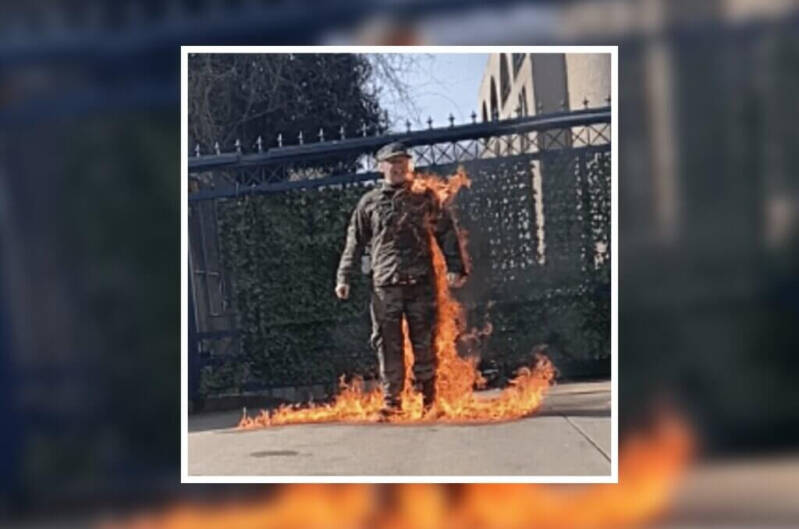
Aaron Bushnell, een 25-jarige soldaat bij de Amerikaanse luchtmacht, stierf zondag 25 februari 2024 nadat hij zichzelf in brand had gestoken voor de Israëlische ambassade in Washington DC uit protest tegen de genocidale aanval van Israël op Gaza.

The black dress: inveiling the truth about rape, sexual assault
https://www.youtube.com/results?search_query=The+black+dress%3A+inveiling+the+truth+about+rape%2C+sexual+assault


29 februari 2024
Michigan’s primary shows Biden is courting political suicide.
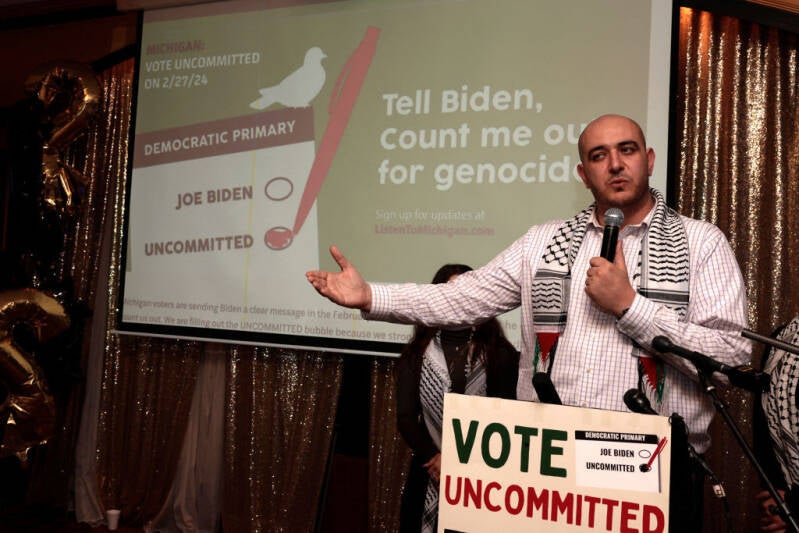
In the days leading up to Tuesday’s Democratic primary in Michigan, President Joe Biden’s White House and reelection campaign were reportedly “freaking out” about the grassroots push to protest his handling of the Israel-Gaza conflict by getting voters to check “uncommitted” on the ballot. With the votes now cast and tallied up, it’s easy to see why.
The result is both a breathtaking organizing achievement and a testament to Democratic voters’ near-unprecedented discontent with their own president.


29 februari 2024
Tell President Biden. We don’t want our tax dollars funding these atrocities any longer
This morning, 147 days into the relentless genocide in Gaza, heartbreaking news emerged of a devastating attack southwest of Gaza City. As starving Palestinians approached a delivery of food aid, primarily flour, the Israeli army opened fire on the crowd of hundreds, killing over 100 Palestinians and injuring roughly 750 others. Reportedly, Israeli tanks then ran over many bodies of the deceased. These individuals were simply seeking food aid to sustain their families amidst the Israeli-made famine gripping the besieged Gaza Strip.
The sheer magnitude of this tragedy serves as a chilling reminder of the ongoing humanitarian crisis in Gaza, which demands our unwavering attention and action.
TAKE ACTION

It is imperative that we maintain our political pressure on elected leaders, particularly in light of the active complicity of the U.S. in the atrocities unfolding in Gaza. We bear a moral obligation to persist in holding our government accountable for its role in these grave injustices.
Thank you for your steadfast commitment to the cause of Palestine. Your continued advocacy makes a difference in the fight for justice and dignity.


29 februari 2024
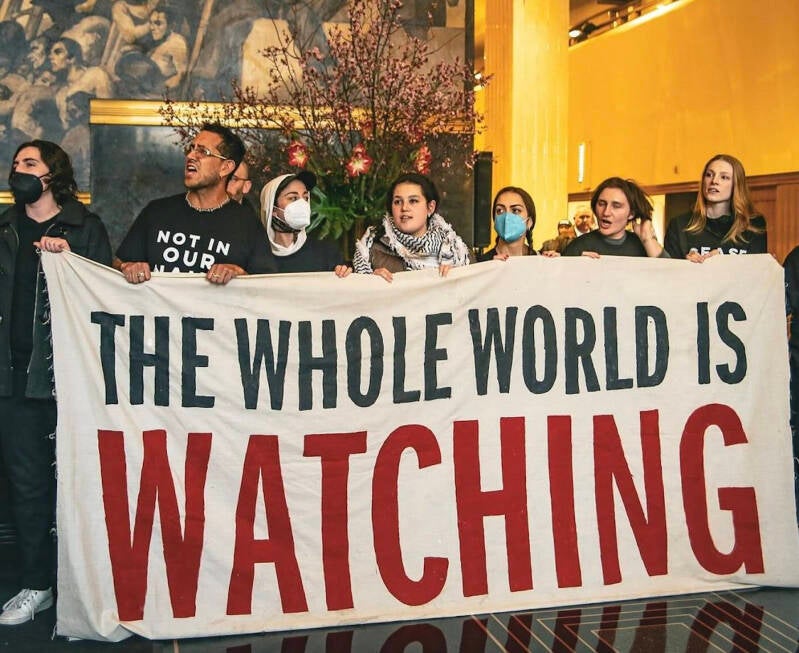
TARGETING THE SPONSORS OF GENOCIDE.
More than 100,000 “Uncommitted” votes were cast on Tuesday in the Michigan Democratic primary, a clear message to the Biden campaign that voters in November will not ignore his support for the Israeli government’s genocide of Palestinians.
As Michigan Congresswoman Rashida Tlaib pointed out, 74% of Democrats in Michigan support a ceasefire. Why would they vote for someone who is using their tax dollars to fund the mass murder and displacement of Palestinians?
Michigan is a critical swing state for Biden in November’s election. Arab and Muslim organizers in Michigan hoped at least 10,000 Uncommitted votes would be cast in Tuesday’s primary — a result exceeded more than ten times over.
This campaign is not only another point of pressure to push for a ceasefire, but also a way to ring the alarm bells, proving to the Biden campaign that his support for genocide is an unforgivable position among Michigan voters. In 2016, Trump won Michigan by less than 11,000 votes...
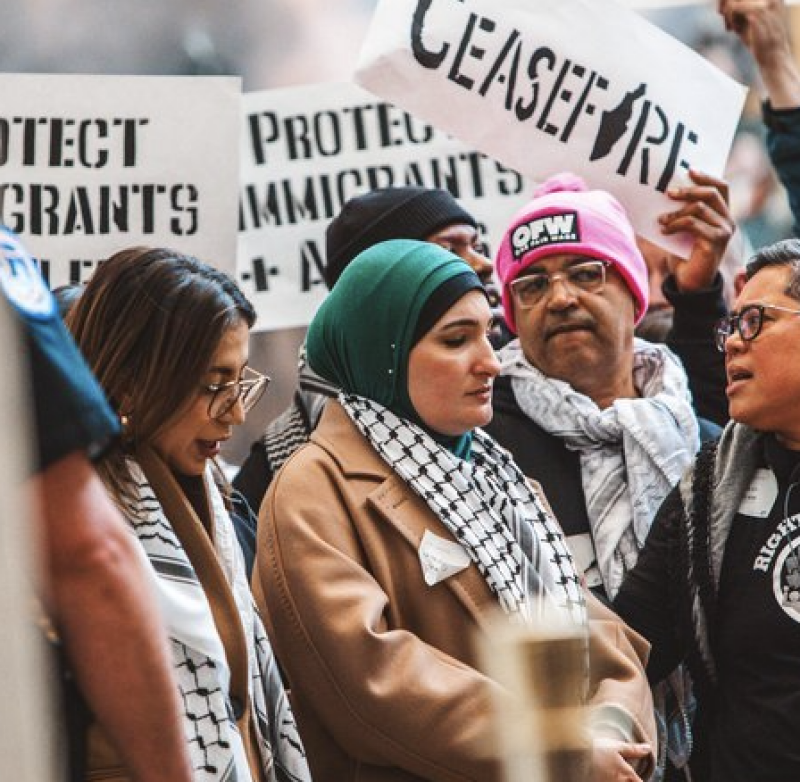
THE PEOPLE ARE TAKING D.C.
March 7 in Washington, D.C. for the People’s State of the Union, a mass rally where we will bring the will of the majority of the American people, who want an immediate ceasefire, to the streets.
TELL META: DON'T CENSOR JUSTICE FOR PALESTINE.
One of the world’s biggest social media companies is trying to further silence Palestinians and anyone critical of the Israeli government.

WHAT WE'RE READING
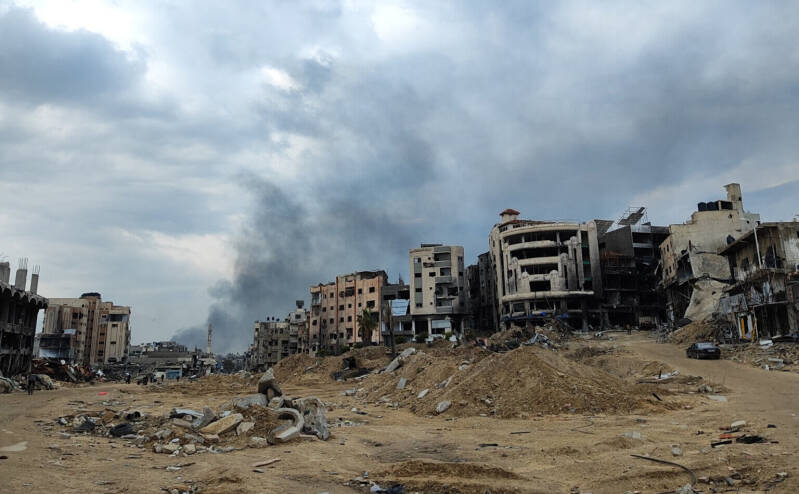
“It is not easy to start life again away from a homeland that you love,” writes JVP member Alison Glick of devastation and home in Gaza for Mondoweiss.


29 februari 2024
Hostilities in the Gaza Strip and Israel
Flash Update #129
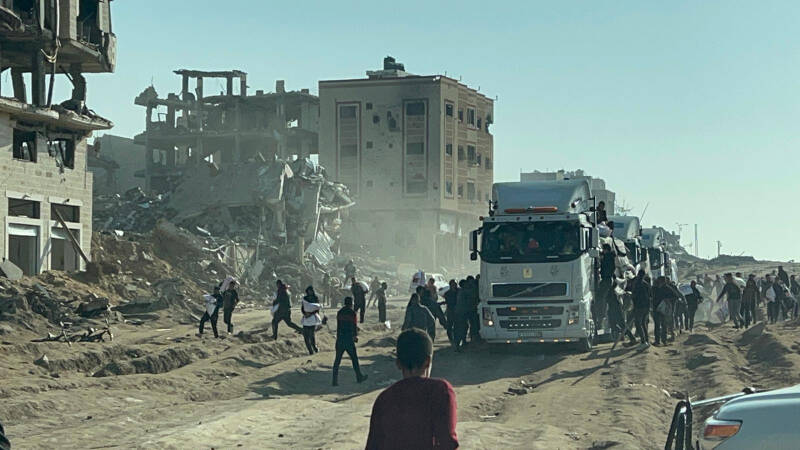
Amid a serious risk of starvation, desperation and scarcity have led to a near total breakdown in civil order. Palestinians taking supplies from the back of a truck in northern Gaza, 25 February 2024. Photo by OCHA
Key Highlights
- The Ministry of Health (MoH) in Gaza reports that more than 100 Palestinians were killed on 29 February; according to media sources, the incident occurred when thousands of Palestinians reportedly gathered around trucks carrying supplies.
- The reported death toll among Palestinians in the Gaza Strip since the onset of hostilities has surpassed 30,000.
- UN officials are warning of an impending famine in Gaza; MoH in Gaza reports that six infants have died as a result of malnutrition and dehydration.
- A Palestine Red Crescent Society (PRCS) medical point in Jabalya, in northern Gaza, is receiving a daily average of 100-150 cases of Hepatitis A.
- A Palestinian child is killed in Beit Furik village in Nablus, bringing the death toll in the West Bank, including East Jerusalem, to 406 Palestinians, including 103 children, since 7 October.
Gaza Strip Updates
- Intense Israeli bombardment from air, land and sea continues to be reported across much of the Gaza Strip, resulting in further civilian casualties, displacement, and destruction of civilian infrastructure. Ground operations and heavy fighting between Israeli forces and Palestinian armed groups also continue to be reported, particularly in northern Gaza, Deir al Balah, and Khan Younis.
- Between the afternoon of 28 February and 11:30 on 29 February, according to the Ministry of Health (MoH) in Gaza, 81 Palestinians were killed, and 132 Palestinians were injured. Between 7 October 2023 and 11:30 on 29 February 2024, at least 30,035 Palestinians were killed in Gaza and 70,457 Palestinians were injured, according to MoH in Gaza. Separately, MoH reported that 104 Palestinians have been killed and 760 were injured in the early morning hours of 29 February on Al Rashid Road south of Gaza city, warning that the actual death toll is likely to be higher as medical teams are struggling to handle the situation with limited critical care resources. The incident occurred as thousands of Palestinians reportedly gathered around trucks carrying supplies when they were allegedly hit by artillery shells and gunfire, according to initial media reports. The Israeli military, cited by the media, has reportedly acknowledged shooting by its troops, and has also said that most casualties occurred as a result of congestion and incidents of people being run over by trucks.
- Between the afternoons of 28 and 29 February, there were no Israeli soldiers reported killed in Gaza. As of 29 February, 240 soldiers have been killed and 1,431 soldiers injured in Gaza since the beginning of the ground operation, according to the Israeli military. In addition, over 1,200 Israelis and foreign nationals have been killed in Israel, the vast majority on 7 October. As of 29 February, the Israeli authorities estimate that 134 Israelis and foreign nationals remain captive in Gaza, including fatalities whose bodies remain withheld in Gaza.
- In two separate incidents on 26 February, UNRWA reports that internally displaced persons (IDPs), including UNRWA staff, sheltering at two schools in Khan Younis were forced to evacuate and some were arrested by Israeli forces. One of the schools reportedly had the main gate, guard room, and generator damaged by Israeli tanks and bulldozers. One female IDP was reportedly killed during this incident – the circumstances are unclear at time of this writing. As of 28 February, according to UNRWA, at least 404 IDPs have been killed, and 1,385 others have been injured, in more than 330 incidents affecting UNRWA premises and shelters hosting IDPs since the escalation of hostilities in October.
- The risk of death from starvation in Gaza is reportedly growing, disproportionately affecting children and pregnant women, and is exacerbated by inadequate water, sanitation and health services, the severing of power and fuel supplies, and the decimation of food production and agriculture. MoH in Gaza reported that six infants have died as a result of malnutrition and dehydration, including two at Shifa Hospital on 28 February. A rise in anemia among pregnant women was also reported at Project HOPE’s clinic in Deir al Balah, where some 21 per cent of 416 pregnant women who visited the clinic between 5 and 24 February showed signs of malnutrition “caused by the lack of protein, iron, and other micronutrients, which can increase the risk of a life-threatening postpartum hemorrhage, premature births, and low birth weight.” According to the Food and Agriculture Organization (FAO), the entire food supply chain in Gaza has been severely disrupted with 97 per cent of ground water reportedly unfit for human consumption, about 27 per cent of greenhouses destroyed, more than 40 per cent of croplands and dozens of home barns, broiler farms and sheep farms damaged, more than 600 agricultural wells damaged, and the fishing sector grounded to a halt. On 28 February, the International Rescue Committee (IRC) and Medical Aid for Palestinians (MAP) highlighted that the significant damage incurred by the agricultural sector in Gaza combined with limited commercial food imports have led to food scarcity and soaring prices at a time when people’s purchasing power has declined. To prevent starvation in Gaza, the two aid organizations emphasized the criticality of safe and unimpeded aid flow via all possible routes, reactivating essential services in Gaza, and upscaling aid responses toward the early restoration of agrifood systems.
- Citing the danger of a “looming man-made famine,” UNRWA Commissioner-General Philippe Lazzarini stated that the Agency has been unable able to deliver food to northern Gaza since late January due to security incidents affecting the few aid convoys that are permitted to reach northern Gaza from the south via Israeli military checkpoints, and growing incidents of chaos and robbery. On 20 February, the UN World Food Programme (WFP) announced that it had paused deliveries of food aid to northern Gaza, following incidents where WFP convoys were unable to deliver aid largely due to a breakdown in civil order. The convoys had resumed on 18 February after a three-week suspension following a strike on an UNRWA truck and due to the absence of a functioning humanitarian notification system. In his address to the UN Security Council on 27 February, Ramesh Rajasingham, the Director of OCHA’s Coordination Division cited the warning by food security experts of “complete agricultural collapse in northern Gaza by May if conditions persist, with fields and productive assets damaged, destroyed, or inaccessible.” Reiterating the UN call for a ceasefire, Mr. Rajasingham cautioned that “if nothing is done, we fear widespread famine in Gaza is almost inevitable.”
- The health care system in Gaza is struggling to remain functional, amid severe shortages of fuel and medications, spread of infectious diseases, and access constraints. On 28 February, MoH in Gaza reported that Kamal Adwan Hospital in northern Gaza, has been rendered out of service due to the lack of electricity and fuel for its generator. According to UNICEF, Kamal Adwan Hospital is the primary hospital serving children and offering maternal health services in northern Gaza, and has been severely damaged amidst increased hostilities. Hundreds of thousands of Palestinians in the area, including IDPs, also continue to face rising food insecurity, overcrowding, and lack of clean water. PRCS reports that their medical point in Jabalya, in northern Gaza, which is managed by the association’s volunteers, has been receiving an average of 100-150 cases of Hepatitis A per day as well as many cases of infectious skin diseases.
West Bank Updates
- On 29 February, Israeli forces shot and killed a 17-year-old Palestinian child during a search-and-arrest operation in Beit Furik village in Nablus that involved clashes between Israeli forces and Palestinian stone throwers.
- On 29 February, a Palestinian man died of injuries sustained on 19 October 2023 during an Israeli military operation in Nur Shams Refugee Camp near Tulkarm city, which resulted in the killing of 13 other Palestinians, including the man’s 12-year-old son.
- Since 7 October 2023, 406 Palestinians have been killed, including 103 children, and 4,606 Palestinians have been injured, including 709 children, in conflict-related incidents across the West Bank, including East Jerusalem, and Israel. Since the beginning of the year, 93 Palestinians have been killed, including 26 in refugee camps. During the same period, 13 Israelis, including four members of Israeli forces, were killed and 86 injured in conflict-related incidents in the West Bank, including East Jerusalem, and Israel.
- On 28 February, the Israeli authorities demolished three homes in Al Walaja village in Bethlehem due to the lack of Israeli-issued building permits, displacing three families comprising 16 people, including six children. Since 7 October 2023, 592 people, including 282 children, have been displaced in Area C and East Jerusalem, after their homes were demolished due to the lack of Israeli-issued building permits, which are almost impossible to obtain.
- Since 7 October 2023, OCHA has recorded 601 Israeli settler attacks against Palestinians that resulted in Palestinian casualties (53 incidents), damage to Palestinian-owned property (481 incidents), or both casualties and damage to property (67 incidents).
- Movement restrictions affecting an estimated 7,000 residents of H2 area in Hebron continue to be in place since 7 October, with checkpoints that control access to the area only open for Palestinian pedestrians between 7:00 and 19:00. Residents have also reported facing restrictions while moving between neighbourhoods within the H2 area.
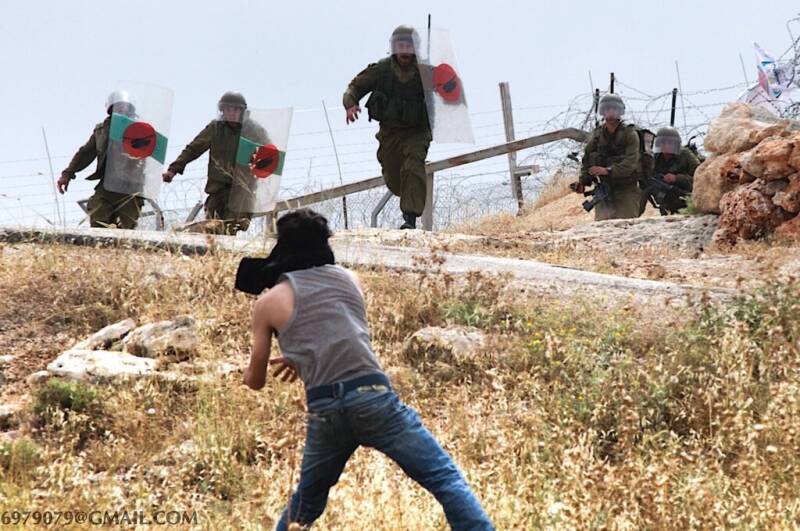
Humanitarian Needs and Response Updates | 20–26 February
Health
Needs
- There is a crucial need to expand primary healthcare services within informal shelters; enhance routine immunization coverage; deliver medication for non-communicable diseases; extend sexual and reproductive health services; establish additional field hospitals in various locations across the Gaza Strip; ensure the availability of laboratory equipment, reagents and blood products.
- Following two reported cases of death among children due to Severe Acute Malnutrition (SAM) stemming from inadequate food supplies, there is an urgent need to access northern Gaza to deliver food and establish SAM stabilization centres along with outpatient therapeutic feeding programmes.
Response
- Between 12 and 18 February, 45 health cluster partners delivered primary and secondary healthcare services across Gaza, reaching 124,800 people.
- WHO, in collaboration with OCHA and PRCS, led missions to Nasser Medical Complex, Al-Amal, and European Gaza hospitals to evacuate critical patients to the International Medical Corps (IMC), United Arab Emirates, and Indonesian field hospitals as well as Al Aqsa Hospital. The team also prepositioned medicines, medical supplies, and fuel and provided hot meals and water.
- With the support of WHO, the IMC field hospital increased its bed capacity from 98 to 150.
- UNFPA and WHO have successfully identified and deployed 72 midwives across various shelters and at designated medical points to provide services for spontaneous vaginal deliveries, antenatal care and family planning.
- Medical Global, with WHO’s support, established a SAM stabilization centre in Tell As Sultan primary healthcare centre in Rafah with a capacity of five beds. Additionally, preparation for a training session for 32 healthcare workers on the management of SAM cases with medical complications is underway.
Challenges
- Shortages of fuel, food, medicine, and medical supplies at hospitals in northern Gaza and lack of access to the area.
- Continued hostilities in Khan Younis pose significant barriers to accessing healthcare.
- Following the strike on MSF’s guest house on 20 February, intensified efforts to ensure the safety of humanitarian guest houses throughout Gaza are urgently needed.
- The increase of bloody and watery diarrhea can be directly attributed to the lack of safe drinking water, posing a significant public health challenge.
- The absence of segregated sanitation facilities and electricity within shelters presents a considerable safety risk, depriving women and girls of secure environments and thereby increasing their vulnerability to sexual violence.
Nutrition
Needs
- A new report by the Global Nutrition Cluster highlights a steep rise in malnutrition among children and pregnant and breastfeeding women in the Gaza strip.
- Sustained collaboration with partners is needed to enhance their capacity in various nutrition response areas, including Mid-Upper Arm Circumference (MUAC) screening capacity, identifying cases of Severe Acute Malnutrition (SAM) and Moderate Acute Malnutrition (MAM), and facilitating treatment using simplified protocols.
- There is a crucial need to expand MUAC screening into northern Gaza, where the situation is deteriorating rapidly and there is limited capacity.
- Continued distributions of supplementary nutrition food and blanket supplementary food to those in need to prevent malnutrition.
Response
- Five implementing partners continue conducting screenings for malnutrition among children aged 6 to 59 months, using MUAC measurements in shelters and health facilities. In total, 10,963 children aged 6-59 months underwent MUAC screening. Children with SAM and MAM are receiving treatment through the simplified treatment protocol.
Challenges
- Restricted access to northern Gaza significantly contributes to insufficient humanitarian aid delivery, leading to concerns about food insecurity and the possibility of widespread starvation and fatalities due to hunger.
Food Security
Needs
- The food security situation continues to be extremely critical across Gaza, particularly in northern Gaza, with people reportedly feeding their children animal fodder. Vulnerable segments of the population, including children, the elderly and people with underlying health conditions, are particularly exposed to the risk of malnutrition and famine.
- The food security situation in the Middle Area and southern governorates is also critical, with most of the population queuing for hours to receive food when trucks manage to enter. In Rafah, the situation is increasingly concerning, with growing reports of people stopping aid trucks to take food and eat it immediately.
- There is an urgent need to increase the fleet of delivery trucks.
- There is an urgent need to import the agricultural inputs necessary for reactivating domestic production of essential fresh foods like eggs, vegetables, meat, fish and milk to ensure the availability of a balanced nutrition.
- There is a need to establish secure and uninterrupted humanitarian corridors, with the support of the private sector and a focus on critical resources like fuel and cooking gas.
Response
- Between 19 and 25 February, a total of 18 partners engaged in providing food assistance across the Gaza Strip, reaching around 1.7 million people with food assistance at least once. Rafah Governorate received about 45 per cent of the total food assistance, followed by Deir al Balah (24 per cent), Khan Younis (15 per cent), and northern Gaza Strip (15 per cent).
Challenges
- Operating partners are reporting a lack of food to distribute, and some are reporting that existing stocks will last for only two days.
- The large number of people reached with hot meals is still insufficient to meet daily nutritional requirements.
- Ongoing airstrikes and heavy fighting in Gaza continue to affect the flow of food, posing challenges for the conduct of safe and efficient humanitarian operations. Frequent border closures, restrictions, and security concerns hinder the delivery of a consistent and dependable food supply.
- Rafah crossing is now working at a reduced rate and Karem Shalom is encountering closure due to Israeli demonstrators preventing trucks from entering. The humanitarian community is engaging with all relevant stakeholders to address this issue.
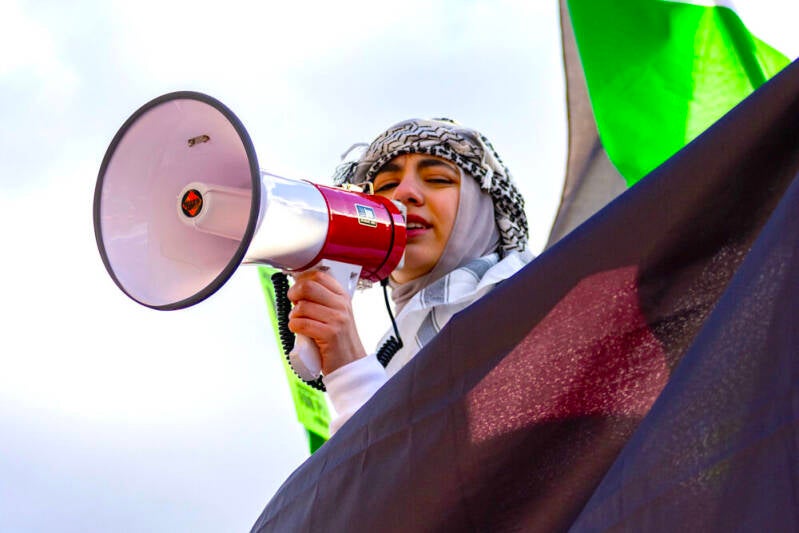
Protection
Needs
- Identification, tracing and reunification as well as interim and alternative care arrangements are critically needed for unaccompanied, previously detained and separated children. UNICEF estimates that some 17,000 children are unaccompanied or separated.
- Provision of MHPSS, including psychological first aid (PFA) and specialized counselling, and winter clothing and blankets are urgently needed for children and newborn babies.
- Re-establishment of emergency Gender-Based Violence (GBV) services and referral pathways, including health services for GBV survivors, Clinical Management of Rape (CMR), MHPSS, as well as safe spaces and shelters are needed.
- There is a need for a continuous pipeline to distribute dignity kits and Menstrual Hygiene Management (MHM) supplies for over 690,000 menstruating women and girls.
- A comprehensive Humanitarian Mine Action (HMA) response is needed given the likely scale of Explosive Ordnance (EO) contamination despite the absence of formal large-scale assessments of contamination levels.
- There is a need for deployment of Explosive Ordnance Disposal (EOD) operators to conduct explosive hazard assessments of safe sites for humanitarian response, in addition to training for humanitarian workers and messaging tailored to different groups on Explosive Ordnance Risk Education (EORE) and Conflict Preparedness and Protection (CPP).
- Victim Assistance (VA) services for survivors of shelling and explosive ordnance-related accidents are also needed.
Response
- Child Protection partners have reached 267,511 boys and girls and 27,307 women and men through awareness-raising interventions, MHPSS, identification and registration of unaccompanied and separated children, and distribution of clothing kits.
- GBV sub-cluster partners have provided 26,800* women and girls with 104,320 packs of sanitary napkins, which is sufficient to cover needs for the next 3 months, as well as a total of 3,500 Dignity Kits and 8,926 MHM kits.
- GBV responders are conducting procurement and distribution of CMR kits, and identification of health service points to provide CMR.
- Partners are exploring ways to establish emergency safe spaces, to provide PFA and recreational activities for vulnerable women and girls. Partners continue to expand PFA services for vulnerable groups, including GBV survivors, through frontline responders.
- Mine Action (MA) partners are actively engaged in carrying out Explosive Threat Assessments to the prioritized humanitarian sectors, delivering EORE and CPP sessions, producing educational materials, conducting digital campaigns, Radio and SMS campaigns, tailoring them to people with disability needs, and exploring partnerships with local organizations to enhance their reach and impact.
- To ensure a well-coordinated effort, the MA sub-cluster has now established active bi-weekly technical working groups on EORE-CPP, GIS, and will soon initiate an explosive ordnance disposal forum for Gaza.*
Challenges
- Difficulties in providing sufficient urgent and safe alternative temporary care arrangements for unaccompanied children, especially adolescents, due to physically and resource-exhausted families and communities, extreme overcrowding and continuous insecurity.
- Limited access prevents the provision of critical protection services to thousands of affected people.
- Obtaining authorization to deploy MA personnel, especially EOD operators for EO contamination assessments; restrictions on importing essential humanitarian mine action supplies; and unreliable communication systems that interfere with EORE, messaging, and coordination activities.
Logistics
Response
- Storage and transport capacity inside Gaza remains challenging with ongoing assessments for identification of additional storage options. The Cluster continues to facilitate access to temporary storage, transport, and cargo notification transshipment services.
- The Logistics Cluster delivered an online training on the Service Request Forms (SRF), for storage and transport bringing together 79 participants.
- IMPACCT Working Group and the Logistics Cluster organized an information session with UN agencies on customs clearance challenges in Jordan. A second session with International NGOs is already planned for the following week.
- The Logistics Cluster common service provision in Port Said, Egypt will be discontinued at the end of February as storage is not identified as current gap. Assessment of logistics gaps and needs remains ongoing.
- As of 25 February 2024, the Logistics Cluster received for storage 6,251 m3 of cargo on behalf of 17 organisations in Gaza in total, and so far supported 21 organisations with cargo notification services in Rafah.
- The last convoy of 23 trucks from Amman – King Hussein Bridge - Gaza departed on 14 February, and it took nine days to reach Rafah due to protests in Nitzana—upcoming convoy date to be shared. So far, through Jordan corridor, the Logistics Cluster facilitated partners` access to the inter-agency convoy, transporting a total of 3,596 mt of relief items on 267 trucks on behalf of six partners, taking the King Hussein Bridge route.
Challenges and Gaps
- The storage and transport capacity inside Gaza remains challenging with ongoing assessments for identification of additional storage options. The Logistics Cluster continues facilitating access to temporary storage, transport, and cargo notification transshipment services.
- The Logistics Cluster is collecting the pipeline for incoming cargo through the Egypt and Jordan corridors for the coming three months. This is a vital exercise for operational planning, understanding the resources available and allocating based on the prioritization list. Partners have received a dedicated form for their organisation via email and are requested to update it every Sunday. Partners who have not received the form can reach out to palestine.logcluster@wfp.org.
Emergency Telecommunications
Needs
- There is an urgent need for independent communication platforms for responders in Gaza to coordinate emergency response and deliver aid, amid ongoing communication blackouts and unreliable/intermittent access to telecommunication services.
- There is a crucial need to import all essential satellite-based communications equipment (sat phones, data solutions), Security Communications Systems (VHF Radios and networks), and power solutions (solar power solutions, generators).
Response
- Since its establishment, the ETC has been engaging with the Israeli authorities to obtain authorization to import all essential telecommunications equipment into Gaza and provide independent access to communications for humanitarian responders.
- The ETC has been supporting humanitarian agencies in Gaza with Information and Communication Technology (ICT) assessments, technical advice and information, repairs, and guidance on the use of ICT equipment. Since 9 January, the ETC has conducted 16 ICT assessments in 13 locations in Rafah, and supported 17 humanitarian agencies with ICT repairs, technical advice, and guidance on the use of ICT equipment to maximize the available telecommunications resources on the ground.
- For more information on ETC activities, please visit: Palestine: Conflict | Emergency Telecommunications Cluster (ETC) (etcluster.org).
Challenges
- Limited access to electricity, fuel, and telecommunications services continues to impede the humanitarian response in Gaza.
- The process of importing telecommunications equipment into Gaza remains lengthy and extremely challenging.
Multi-Purpose Cash Assistance (MPCA)
Response
- Between 19 and 25 February, 27,028 households received one round of emergency MPCA. Cash out operations are concentrated in the governorates south of Wadi Gaza, with the majority being reported in Rafah. As of 25 January, one round of emergency MPCA was delivered to some 160,000 households, a top-up was delivered to 35,000 people (including people with disabilities and nursing mothers), and over 16,000 households have received a second round.
- Since 7 October, some 116,000 households have cashed out their assistance, and about 5,400 payments have been cancelled after not being cashed out for months mainly due to the lack of connectivity and available agents (especially north of Wadi Gaza). Provided assistance falls well short of need given market collapse and price volatility.
- Based on the last post-distribution monitoring data (PDM) collected between mid-January and mid-February, food remains the most purchased item with humanitarian cash (80 per cent), followed by medicines (39 per cent), water (23 per cent), hygiene bedding (10 per cent), and transportation. PDM data show that cash remains a relevant modality of assistance which can be used by recipients to access goods and services that remain available.
Challenges
- Poor electricity supply and connectivity is affecting the ability of financial service providers to make cash accessible, compromising the encashment of the MPCA package.
- Since late December, commercial trucks have sporadically entered Gaza, with 830 trucks recorded as of 26 February. Informal markets are the primary source of accessible goods, which complicates efforts to track distributions and gather market data.
Funding
- The Flash Appeal for the occupied Palestinian territory (oPt), which requests US$1.2 billion to meet critical needs of 2.7 million people across the oPt (2.2 million in the Gaza Strip and 500,000 in the West Bank, including East Jerusalem), was extended through the end of March 2024. As of 26 February, member states disbursed nearly $907 million against the updated Flash Appeal (74 per cent); this includes about $616 million out of $629 million (98 per cent) requested for October-December 2023 and $291 million out of $600 million (48 per cent) requested for January-March 2024. For funding analysis, please see the Flash Appeal Financial Tracking dashboard.
- The occupied Palestinian territory Humanitarian Fund (oPt HF) and the Central Emergency Relief Fund (CERF) are currently funding more than 94 ongoing projects in the Gaza Strip to meet urgent humanitarian needs, notwithstanding constraints on the entry and delivery of aid into and within the Gaza Strip. These interventions, totalling about $88 million, address needs in the areas of food security, shelter, water, sanitation and hygiene (WASH), health and protection. Since October 7, the oPt HF has received a total of $88 million in contributions from member states and private donors. Private donations are collected directly through the Humanitarian Fund.


29 februari 2024
Today's headlines
Israeli forces massacre civilians waiting for humanitarian aid
Israeli tanks and warplanes reportedly targeted civilians waiting for aid, killing at least 77 and wounding hundreds. Meanwhile, international aid groups say airdrops of aid are so “negligible” that they “perpetuate the overall blockade strategy.”
More than 100,000 people vote ‘uncommitted’ in Michigan primary over Biden Gaza policy
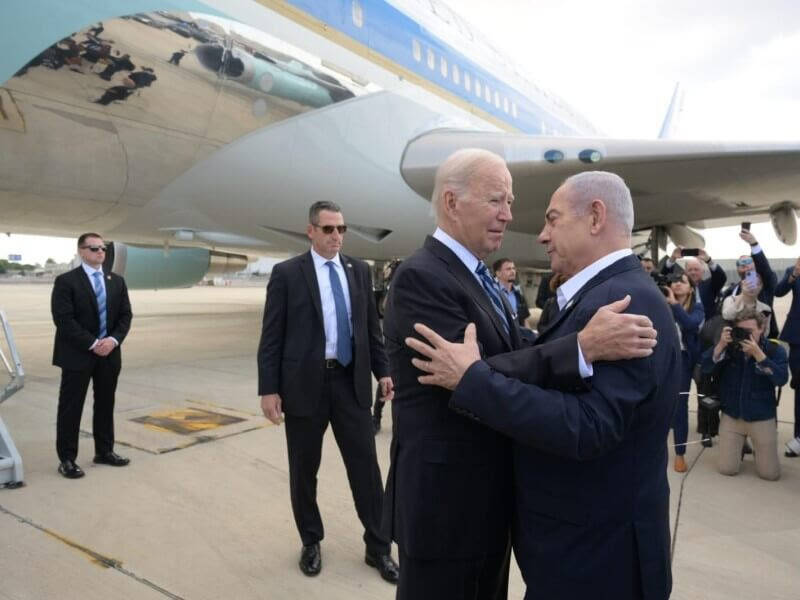
President Joe Biden predictably won Michigan Democratic primary, but more than 100,000 people voted “uncommitted” over the administration’s policy in Gaza.
PBS and NPR leave out key facts in their Israel stories

Pundits and reporters in the mainstream media have a double standard when it comes to Israel and all but lie about apartheid, Jewish nationalism, and the role of the Israel lobby.

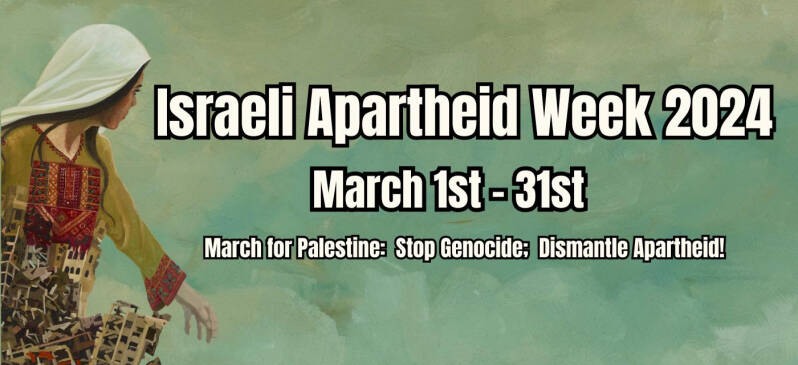
29 februari 2024

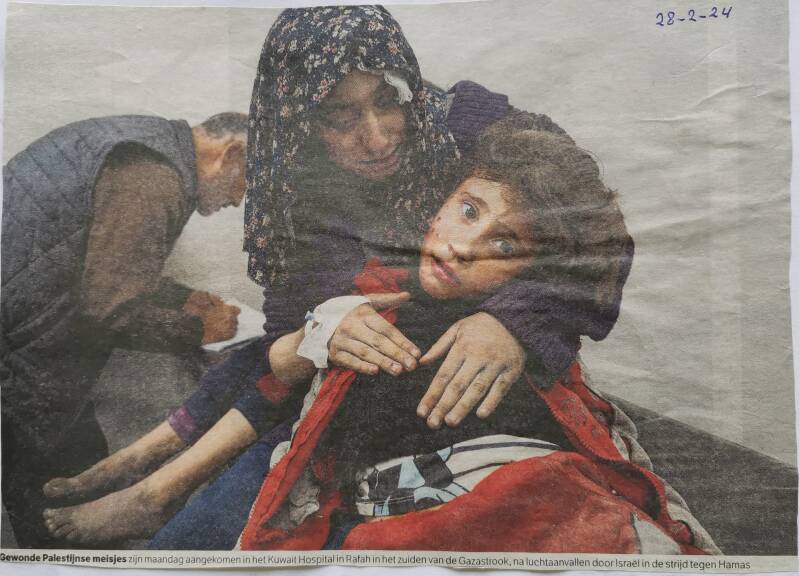
28 februari 2024


28 februari 2024
Join Eyewitness Palestine on Wednesday, March 6th at 12PM ET for our Youth of Balata Refugee Camp webinar, featuring Fayez Arafat, Director of the Yaffa Cultural Center in Balta Refugee Camp. The Yaffa Cultural Center is the only center serving as a safe haven for the children in a camp of over 30,000 people. We'll learn about the children's programs in the Center and the struggles of life in Balata Camp from several speakers who work in the Center.
Participation in this event is free as Eyewitness Palestine is seeking to highlight voices in Palestine as broadly as possible.

REGISTER FOR YOUTH OF BALATA CAMP WEBINAR
In solidarity and toward a liberated Palestine,


28 februari 2024
Hostilities in the Gaza Strip and Israel
Flash Update #128
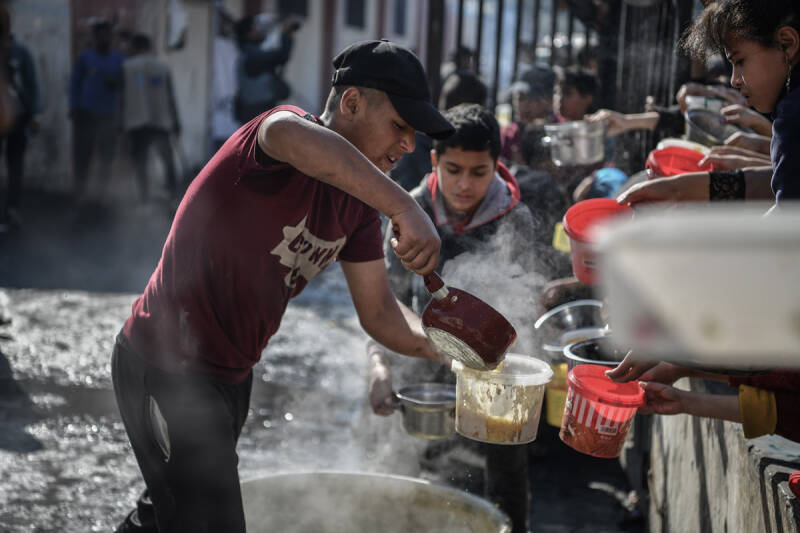
A volunteer distributes food to people in Rafah, southern Gaza. At least 576,000 people in Gaza – one-quarter of the population – face catastrophic levels of food insecurity and are at risk of famine. Photo by UNICEF/Abed Zagout
Key Highlights
- The UN Secretary-General stated that an Israeli offensive on Rafah would “put the final nail in the coffin” of humanitarian aid programmes in Gaza.
- Health workers across Gaza continue to face enormous risks and challenges to save lives as the health care system struggles to remain functional.
- MoH in Gaza reports that two infants died in northern Gaza as a result of dehydration and malnutrition, as a quarter of Gaza’s population faces catastrophic levels of food insecurity.
- According to UNRWA, more than 2,300 trucks have entered Gaza so far in February, a nearly 50 per cent reduction compared to January 2024.
Gaza Strip Updates
- Intense Israeli bombardment from air, land and sea continues to be reported across much of the Gaza Strip, resulting in further civilian casualties, displacement, and destruction of civilian infrastructure. On 27 February, Palestinian armed groups fired several rockets towards southern Israel, with no reports of injuries or damage. Ground operations and heavy fighting between Israeli forces and Palestinian armed groups also continue to be reported, particularly in Khan Younis, Gaza city and Deir al Balah. On 26 February, the UN Secretary-General told the UN Human Rights Council in Geneva that an Israeli offensive on Rafah, the location of “the core of the humanitarian aid operation,” would be “terrifying for more than a million Palestinian civilians sheltering there…[and] put the final nail in the coffin of our aid programmes.”
- Between the afternoon of 27 February and 11:00 on 28 February, according to the Ministry of Health (MoH) in Gaza, 76 Palestinians were killed, and 110 Palestinians were injured. Between 7 October 2023 and 11:00 on 28 February 2024, at least 29,954 Palestinians were killed in Gaza and 70,325 Palestinians were injured, according to MoH in Gaza.
- The following are among the deadliest incidents reported on 26 February:
- On 26 February, at about 13:30, two Palestinians were reportedly killed when a house in eastern Al Bureij, in Deir al Balah, was hit.
- On 26 February, at about 17:00, five Palestinians were reportedly killed when a house in Al Qarara area, in northern Khan Younis, was hit.
- On 26 February, at about 19:00, eight Palestinians including three children were reportedly killed, and others were injured, when a house in the vicinity of Kuwait Hospital, in central Rafah, was hit.
- On 26 February, at about 21:00, three Palestinians were reportedly killed, and others were injured, when a house was hit in Deir al Balah.
- Between the afternoons of 27 and 28 February, there were two Israeli soldiers reported killed in Gaza. As of 28 February, 240 soldiers have been killed and 1,429 soldiers injured in Gaza since the beginning of the ground operation, according to the Israeli military. In addition, over 1,200 Israelis and foreign nationals have been killed in Israel, the vast majority on 7 October. As of 28 February, the Israeli authorities estimate that 134 Israelis and foreign nationals remain captive in Gaza, including fatalities whose bodies remain withheld in Gaza.
- Health workers across Gaza continue to face enormous risks and challenges to save lives, as the health care system struggles to remain functional amid continued hostilities, access constraints, lack of supplies, and an overwhelming patient load per health-care worker. Reflecting on her experience at Nasser Hospital in Khan Younis in January, MedGlobal’s medical director, Dr. Nahreen Ahmed, describes a situation where “death [is[ happening in a fully treatable situation” due to the lack of medications and supplies, and doctors are operating to the sound of gunfire and missile strikes. Dr. Ahmed further states that injured persons’ limbs are amputated without anesthesia, and the delivery of urgent medical supplies “can often take weeks to months.” More than 1,000 children are reported to have suffered a loss of limb because of the bombing since the onset of hostilities, according to UNICEF.
- On 27 February, MoH reported that some 120 patients still require medical evacuation from Nasser Hospital, the largest hospital in southern Gaza, which has become non-functional and requires urgent repairs to restore running water and electricity, and to cope wih the disposal of solid waste and sewage overflow. MoH also called for the release of 70 health personnel who were detained by Israeli forces during a raid on the hospital, following weeks of heavy fighting in its vicinity and shelling that caused damage to the orthopaedic department. Between 18 and 23 February, the Palestine Red Crescent Society (PRCS) evacuated 72 critically wounded and sick patients from the hospital, with the support of the World Health Organization (WHO) and OCHA. As of 28 February, 64 per cent of hospitals in Gaza have become non-functional (23 out of 36), with the remainder only partially or minimally functional, according to WHO. The situation is especially critical in Rafah where the influx of internally displaced persons (IDPs) has overwhelmed available hospital bed capacities, and in northern Gaza where access by Emergency Medical Teams (EMTs) remains challenging. Between 7 October and 20 February, WHO documented 378 attacks on health care across Gaza that resulted in the killing of 659 people and the injury of 843 others.
- The food insecurity and malnutrition crisis in Gaza is intensifying. On 27 February, MoH in Gaza reported that two infants had died in Kamal Adwan Hospital in northern Gaza, as a result of dehydration and malnutrition. Food Security Sector (FSS) partners are reporting a lack of sufficient basic food supplies and an urgent need to import the agricultural inputs necessary for reactivating domestic production of essential fresh food, such as eggs, vegetables, meat, fish and milk. Children, pregnant and breastfeeding women, the elderly, people with underlying health conditions, and tens of thousands of injured persons are at high risk of malnutrition, as are hundreds of thousands of Palestinians in northern Gaza, which has been largely cut off from assistance despite some relief efforts. In a briefing to the Security Council on food security risks in Gaza on 27 February, Director of OCHA Coordination Division, Mr. Ramesh Rajasingham, highlighted recommendations to ensure, among others, “the lifting of restrictions on fishing activity, access to farmland and the entry of agricultural products,” warning that if no action is taken, “widespread famine in Gaza is almost inevitable.” According to projections by the Integrated Food Security Phase Classification (IPC) for the period between 8 December and 7 February, the entire population of the Gaza Strip faces crisis or worse levels of food insecurity, including more than half a million people, or one in four households, facing catastrophic conditions characterized by lack of food, starvation and exhaustion of coping capacities.
- According to Médecins Sans Frontières (MSF), the “prolonged and unpredictable administrative procedures” which Israel imposes on aid deliveries to Gaza are impeding access to lifesaving equipment and supply for health care facilities. Because of strict screening procedures, it can take up to one month for supplies to enter Gaza, and if the Israeli authorities deny entry to reject even a single item, the entire cargo is returned to Egypt. With no official list of restricted items, MSF reports that it has consistently been denied the import of power generators, water purifiers, solar panels, and other medical equipment. According to the MSF project coordinator in Gaza: “These supplies mean the difference between life and death for many people,” including thousands who suffer from chronic diseases such as cancer, diabetes or epilepsy. WHO reports that referring patients outside of Gaza for tertiary care is also a challenge, with 2,293 patients and 1,625 companions permitted to exit through the Rafah Crossing since the onset of hostilities, while more than 8,000 patients are currently on the waiting list. UNRWA is also reporting difficulties in having its trucks enter Gaza due to security constraints and temporary closures at both the Kerem Shalom and Rafah Crossings. According to UNRWA, more than 2,300 trucks have entered Gaza so far in February, a nearly 50 per cent reduction compared to January 2024, and far short of the estimated 500 trucks needed each day to meet people’s basic needs. Security has been severely impacted due to the killing of several Palestinian policemen in Israeli airstrikes near the Kerem Shalom Crossing recently, which has led to the withdrawal of the policemen from the Palestinian side of the crossing, and trucks being stopped and their contents either robbed or taken directly by residents deeply in need of assistance.
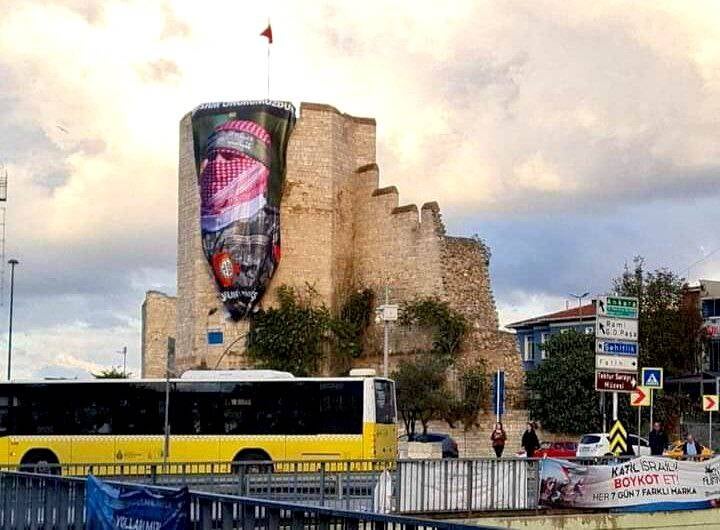
West Bank Updates
- On 27 February, Israeli forces shot and killed a Palestinian man near An Nu'man checkpoint near Al Khas community in Bethlehem. The man was reportedly trying to bypass the checkpoint through an informal opening in the Barrier fence on foot.
- Since 7 October 2023, 404 Palestinians have been killed, including 102 children, and 4,592 Palestinians have been injured, including 708 children, in conflict-related incidents across the West Bank, including East Jerusalem, and Israel. Since the beginning of the year, 91 Palestinians have been killed, including 25 in refugee camps. During the same period, 13 Israelis, including four members of Israeli forces, were killed and 86 injured in conflict-related incidents in the West Bank, including East Jerusalem, and Israel.
- Since 7 October 2023, 576 people, including 276 children, have been displaced in Area C and East Jerusalem, after their homes were demolished due to the lack of Israeli-issued building permits, which are almost impossible to obtain.
- According to the latest field assessments, since 7 October 2023, 848 Palestinians, including 397 children, have been displaced, following the destruction of 132 homes during operations carried out by Israeli forces across the West Bank. About 95 per cent of the displacement was reported in the refugee camps of Jenin, Nur Shams and Tulkarm.
- On 26 February, a group of armed Israeli settlers, believed to be from Telem settlement, raided At Taybe village in Hebron and handcuffed and detained three elderly farmers while they were working on their land, according to eyewitnesses. The farmers were taken to a military base near Tarqumiya checkpoint for several hours before they were released. Landowners report that they have been regularly prevented from reaching their land by Israeli forces and/or settlers since 7 October. In total, OCHA has recorded 595 Israeli settler attacks against Palestinians that resulted in Palestinian casualties (52 incidents), damage to Palestinian-owned property (477 incidents), or both casualties and damage to property (66 incidents), since 7 October 2023.
- Since 7 October, the Cash Working Group (CWG) has supported hundreds of conflict-affected Palestinian families in the West Bank through emergency multi-purpose cash assistance. These include 98 households, comprising 581 individuals, from 15 communities, who were displaced due to settler violence; over 600 households affected by curfews in the H2 area of Hebron; and 131 families, comprising 662 people, affected by military operations in Jenin. In addition, 457 Gazan patients who have been stranded in the West Bank were assisted with up to three payments to meet their most urgent needs.
- On 27 February, Israeli forces installed a roadblock at the main entrance to Rantis village, west of Ramallah, impacting the daily movement of more than 3,600 people. Since 7 October, the Israeli army has installed dozens of new obstacles to movement throughout the West Bank, including road gates, earth-mounds and roadblocks, exacerbating the access and movement of Palestinians that had been impeded by some 645 obstacles prior to 7 October. The restrictions disconnect cities, villages and vulnerable communities from one another, and disrupt communities’ access to basic services and the delivery of humanitarian aid.

Humanitarian Needs and Response Updates | 20–26 February
Health
Needs
- There is a crucial need to expand primary healthcare services within informal shelters; enhance routine immunization coverage; deliver medication for non-communicable diseases; extend sexual and reproductive health services; establish additional field hospitals in various locations across the Gaza Strip; ensure the availability of laboratory equipment, reagents and blood products.
- Following two reported cases of death among children due to Severe Acute Malnutrition (SAM) stemming from inadequate food supplies, there is an urgent need to access northern Gaza to deliver food and establish SAM stabilization centres along with outpatient therapeutic feeding programmes.
Response
- Between 12 and 18 February, 45 health cluster partners delivered primary and secondary healthcare services across Gaza, reaching 124,800 people.
- WHO, in collaboration with OCHA and PRCS, led missions to Nasser Medical Complex, Al-Amal, and European Gaza hospitals to evacuate critical patients to the International Medical Corps (IMC), United Arab Emirates, and Indonesian field hospitals as well as Al Aqsa Hospital. The team also prepositioned medicines, medical supplies, and fuel and provided hot meals and water.
- With the support of WHO, the IMC field hospital increased its bed capacity from 98 to 150.
- UNFPA and WHO have successfully identified and deployed 72 midwives across various shelters and at designated medical points to provide services for spontaneous vaginal deliveries, antenatal care and family planning.
- Medical Global, with WHO’s support, established a SAM stabilization centre in Tell As Sultan primary healthcare centre in Rafah with a capacity of five beds. Additionally, preparation for a training session for 32 healthcare workers on the management of SAM cases with medical complications is underway.
Challenges
- Shortages of fuel, food, medicine, and medical supplies at hospitals in northern Gaza and lack of access to the area.
- Continued hostilities in Khan Younis pose significant barriers to accessing healthcare.
- Following the strike on MSF’s guest house on 20 February, intensified efforts to ensure the safety of humanitarian guest houses throughout Gaza are urgently needed.
- The increase of bloody and watery diarrhea can be directly attributed to the lack of safe drinking water, posing a significant public health challenge.
- The absence of segregated sanitation facilities and electricity within shelters presents a considerable safety risk, depriving women and girls of secure environments and thereby increasing their vulnerability to sexual violence.
Nutrition
Needs
- A new report by the Global Nutrition Cluster highlights a steep rise in malnutrition among children and pregnant and breastfeeding women in the Gaza strip.
- Sustained collaboration with partners is needed to enhance their capacity in various nutrition response areas, including Mid-Upper Arm Circumference (MUAC) screening capacity, identifying cases of Severe Acute Malnutrition (SAM) and Moderate Acute Malnutrition (MAM), and facilitating treatment using simplified protocols.
- There is a crucial need to expand MUAC screening into northern Gaza, where the situation is deteriorating rapidly and there is limited capacity.
- Continued distributions of supplementary nutrition food and blanket supplementary food to those in need to prevent malnutrition.
Response
- Five implementing partners continue conducting screenings for malnutrition among children aged 6 to 59 months, using MUAC measurements in shelters and health facilities. In total, 10,963 children aged 6-59 months underwent MUAC screening. Children with SAM and MAM are receiving treatment through the simplified treatment protocol.
Challenges
- Restricted access to northern Gaza significantly contributes to insufficient humanitarian aid delivery, leading to concerns about food insecurity and the possibility of widespread starvation and fatalities due to hunger.
Food Security
Needs
- The food security situation continues to be extremely critical across Gaza, particularly in northern Gaza, with people reportedly feeding their children animal fodder. Vulnerable segments of the population, including children, the elderly and people with underlying health conditions, are particularly exposed to the risk of malnutrition and famine.
- The food security situation in the Middle Area and southern governorates is also critical, with most of the population queuing for hours to receive food when trucks manage to enter. In Rafah, the situation is increasingly concerning, with growing reports of people stopping aid trucks to take food and eat it immediately.
- There is an urgent need to increase the fleet of delivery trucks.
- There is an urgent need to import the agricultural inputs necessary for reactivating domestic production of essential fresh foods like eggs, vegetables, meat, fish and milk to ensure the availability of a balanced nutrition.
- There is a need to establish secure and uninterrupted humanitarian corridors, with the support of the private sector and a focus on critical resources like fuel and cooking gas.
Response
- Between 19 and 25 February, a total of 18 partners engaged in providing food assistance across the Gaza Strip, reaching around 1.7 million people with food assistance at least once. Rafah Governorate received about 45 per cent of the total food assistance, followed by Deir al Balah (24 per cent), Khan Younis (15 per cent), and northern Gaza Strip (15 per cent).
Challenges
- Operating partners are reporting a lack of food to distribute, and some are reporting that existing stocks will last for only two days.
- The large number of people reached with hot meals is still insufficient to meet daily nutritional requirements.
- Ongoing airstrikes and heavy fighting in Gaza continue to affect the flow of food, posing challenges for the conduct of safe and efficient humanitarian operations. Frequent border closures, restrictions, and security concerns hinder the delivery of a consistent and dependable food supply.
- Rafah crossing is now working at a reduced rate and Karem Shalom is encountering closure due to Israeli demonstrators preventing trucks from entering. The humanitarian community is engaging with all relevant stakeholders to address this issue.
Protection
Needs
- Identification, tracing and reunification as well as interim and alternative care arrangements are critically needed for unaccompanied, previously detained and separated children. UNICEF estimates that some 17,000 children are unaccompanied or separated.
- Provision of MHPSS, including psychological first aid (PFA) and specialized counselling, and winter clothing and blankets are urgently needed for children and newborn babies.
- Re-establishment of emergency Gender-Based Violence (GBV) services and referral pathways, including health services for GBV survivors, Clinical Management of Rape (CMR), MHPSS, as well as safe spaces and shelters are needed.
- There is a need for a continuous pipeline to distribute dignity kits and Menstrual Hygiene Management (MHM) supplies for over 690,000 menstruating women and girls.
- A comprehensive Humanitarian Mine Action (HMA) response is needed given the likely scale of Explosive Ordnance (EO) contamination despite the absence of formal large-scale assessments of contamination levels.
- There is a need for deployment of Explosive Ordnance Disposal (EOD) operators to conduct explosive hazard assessments of safe sites for humanitarian response, in addition to training for humanitarian workers and messaging tailored to different groups on Explosive Ordnance Risk Education (EORE) and Conflict Preparedness and Protection (CPP).
- Victim Assistance (VA) services for survivors of shelling and explosive ordnance-related accidents are also needed.
Response
- Child Protection partners have reached 267,511 boys and girls and 27,307 women and men through awareness-raising interventions, MHPSS, identification and registration of unaccompanied and separated children, and distribution of clothing kits.
- GBV sub-cluster partners have provided 2,680 women and girls with 104,320 packs of sanitary napkins, which is sufficient to cover needs for the next 3 months, as well as a total of 3,500 Dignity Kits and 8,926 MHM kits.
- GBV responders are conducting procurement and distribution of CMR kits, and identification of health service points to provide CMR.
- Partners are exploring ways to establish emergency safe spaces, to provide PFA and recreational activities for vulnerable women and girls. Partners continue to expand PFA services for vulnerable groups, including GBV survivors, through frontline responders.
- Mine Action (MA) partners are actively engaged in carrying out Explosive Threat Assessments to the prioritized humanitarian sectors, delivering EORE and CPP sessions, producing educational materials, conducting digital campaigns, Radio and SMS campaigns, tailoring them to people with disability needs, and exploring partnerships with local organizations to enhance their reach and impact.
- To ensure a well-coordinated effort, the MA sub-cluster has now established active bi-weekly technical working groups on EORE-CPP, GIS, and will soon initiate an explosive ordnance disposal in the Gaza Working Forum.
Challenges
- Difficulties in providing sufficient urgent and safe alternative temporary care arrangements for unaccompanied children, especially adolescents, due to physically and resource-exhausted families and communities, extreme overcrowding and continuous insecurity.
- Limited access prevents the provision of critical protection services to thousands of affected people.
- Obtaining authorization to deploy MA personnel, especially EOD operators for EO contamination assessments; restrictions on importing essential humanitarian mine action supplies; and unreliable communication systems that interfere with EORE, messaging, and coordination activities.
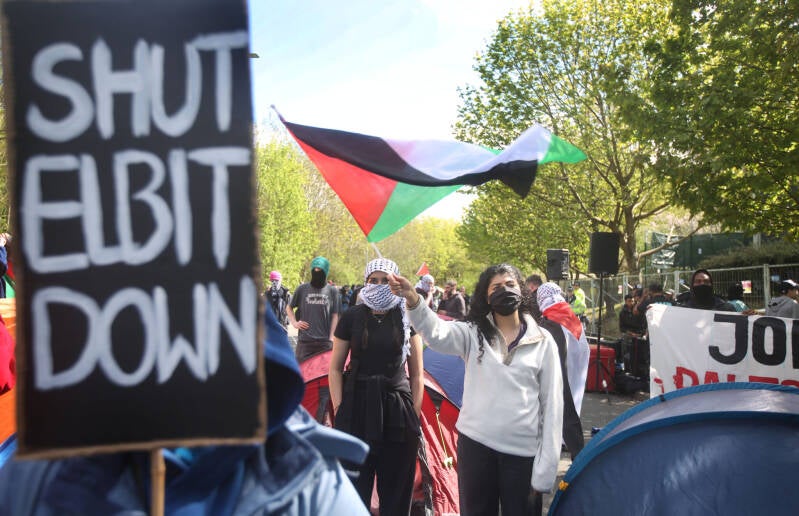
Logistics
Response
- As of 25 February 2024, the Logistics Cluster received 6,251 cubic meters of cargo for storage on behalf of 17 organizations in Gaza and has supported 21 organizations with cargo notification services in Rafah. Through the Jordan corridor, the Cluster has transported a total of 3,596 metric tons of relief items on 267 trucks on behalf of six partners.
- The Cluster delivered online training to 79 aid workers on the Service Request Forms (SRF), for storage and transport. In partnership with the IMPACT Working Group, the Cluster also organized an information session with UN agencies on customs clearance challenges in Jordan.
- Cluster’s preparations to facilitate incoming cargo through the Egypt and Jordan corridors over the coming three months are underway. Partners have received a dedicated form for their organization via email and are requested to update it every Sunday. Partners who have not received the form can reach out to palestine.logcluster@wfp.org. For more information on the Operations of the Logistics Cluster, visit: Palestine - Gaza Response, Concept of Operations, 26 February 2024 - occupied Palestinian territory | ReliefWeb.
Challenges
- Storage and transport capacity inside Gaza remains challenging with ongoing assessments for identification of additional storage options. The Cluster continues to facilitate access to temporary storage, transport, and cargo notification transshipment services.
Emergency Telecommunications
Needs
- There is an urgent need for independent communication platforms for responders in Gaza to coordinate emergency response and deliver aid, amid ongoing communication blackouts and unreliable/intermittent access to telecommunication services.
- There is a crucial need to import all essential satellite-based communications equipment (sat phones, data solutions), Security Communications Systems (VHF Radios and networks), and power solutions (solar power solutions, generators).
Response
- Since its establishment, the ETC has been engaging with the Israeli authorities to obtain authorization to import all essential telecommunications equipment into Gaza and provide independent access to communications for humanitarian responders.
- The ETC has been supporting humanitarian agencies in Gaza with Information and Communication Technology (ICT) assessments, technical advice and information, repairs, and guidance on the use of ICT equipment. Since 9 January, the ETC has conducted 16 ICT assessments in 13 locations in Rafah, and supported 17 humanitarian agencies with ICT repairs, technical advice, and guidance on the use of ICT equipment to maximize the available telecommunications resources on the ground.
- For more information on ETC activities, please visit: Palestine: Conflict | Emergency Telecommunications Cluster (ETC) (etcluster.org).
Challenges
- Limited access to electricity, fuel, and telecommunications services continues to impede the humanitarian response in Gaza.
- The process of importing telecommunications equipment into Gaza remains lengthy and extremely challenging.
Multi-Purpose Cash Assistance (MPCA)
Response
- Between 19 and 25 February, 27,028 households received one round of emergency MPCA. Cash out operations are concentrated in the governorates south of Wadi Gaza, with the majority being reported in Rafah. As of 25 January, one round of emergency MPCA was delivered to some 160,000 households, a top-up was delivered to 35,000 people (including people with disabilities and nursing mothers), and over 16,000 households have received a second round.
- Since 7 October, some 116,000 households have cashed out their assistance, and about 5,400 payments have been cancelled after not being cashed out for months mainly due to the lack of connectivity and available agents (especially north of Wadi Gaza). Provided assistance falls well short of need given market collapse and price volatility.
- Based on the last post-distribution monitoring data (PDM) collected between mid-January and mid-February, food remains the most purchased item with humanitarian cash (80 per cent), followed by medicines (39 per cent), water (23 per cent), hygiene bedding (10 per cent), and transportation. PDM data show that cash remains a relevant modality of assistance which can be used by recipients to access goods and services that remain available.
Challenges
- Poor electricity supply and connectivity is affecting the ability of financial service providers to make cash accessible, compromising the encashment of the MPCA package.
- Since late December, commercial trucks have sporadically entered Gaza, with 830 trucks recorded as of 26 February. Informal markets are the primary source of accessible goods, which complicates efforts to track distributions and gather market data.
Funding
- The Flash Appeal for the occupied Palestinian territory (oPt), which requests US$1.2 billion to meet critical needs of 2.7 million people across the oPt (2.2 million in the Gaza Strip and 500,000 in the West Bank, including East Jerusalem), was extended through the end of March 2024. As of 26 February, member states disbursed nearly $907 million against the updated Flash Appeal (74 per cent); this includes about $616 million out of $629 million (98 per cent) requested for October-December 2023 and $291 million out of $600 million (48 per cent) requested for January-March 2024. For funding analysis, please see the Flash Appeal Financial Tracking dashboard.
- The occupied Palestinian territory Humanitarian Fund (oPt HF) and the Central Emergency Relief Fund (CERF) are currently funding more than 94 ongoing projects in the Gaza Strip to meet urgent humanitarian needs, notwithstanding constraints on the entry and delivery of aid into and within the Gaza Strip. These interventions, totalling about $88 million, address needs in the areas of food security, shelter, water, sanitation and hygiene (WASH), health and protection. Since October 7, the oPt HF has received a total of $88 million in contributions from member states and private donors. Private donations are collected directly through the Humanitarian Fund.


28 februari 2024
Today's headlines
Israeli forces kill 3 Palestinians, including Tubas Brigade Commander in northern West Bank
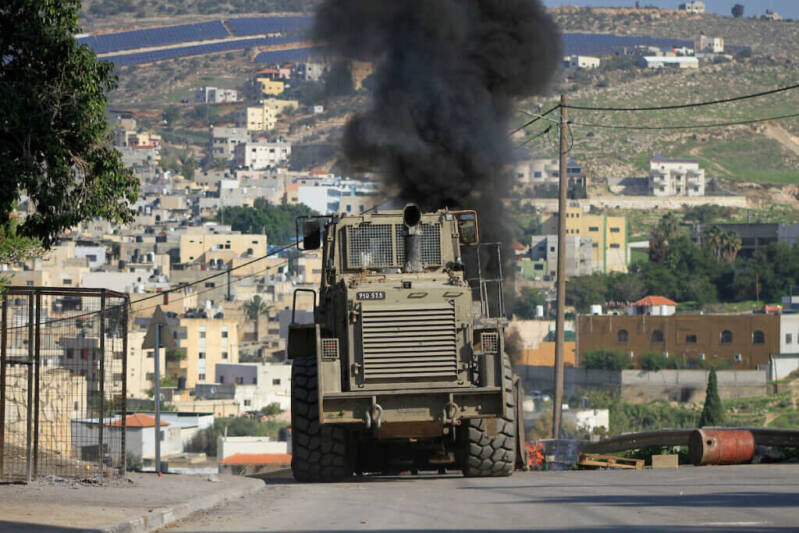
Israeli forces conducted a four-hour long raid in the norther Jordan valley, killing three Palestinians. Residents say one of the targets of the raid was a resistance fighter and commander of a local battalion called the Tubas Brigade.
Hamas warns Israel and U.S. of ‘political machinations’ amid ceasefire talks
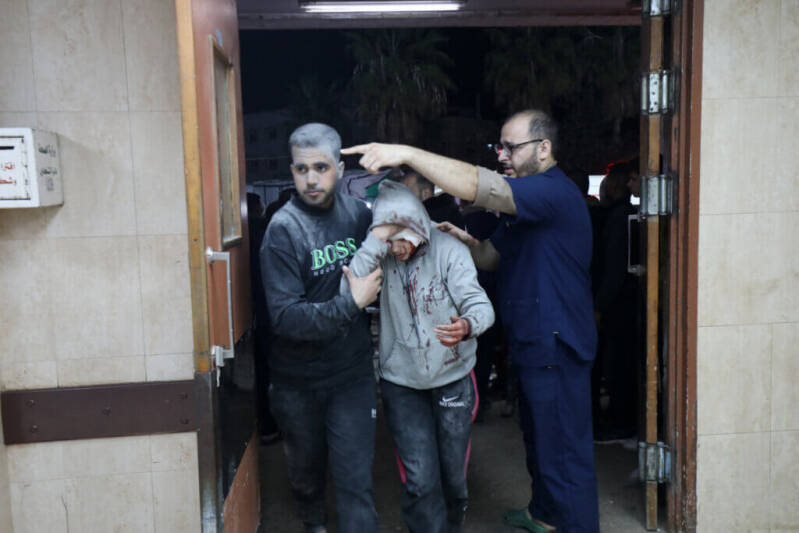
UN humanitarian officials say that thousands of Palestinians in Gaza are “just a step away from famine” by May. Russia calls on UNSC members to refrain from endorsing Washington’s resolution on Gaza, denouncing it as “a license to kill” for Israel.
Palestine Action activists hit with felony charges over New Hampshire Elbit protest
Michael Arria
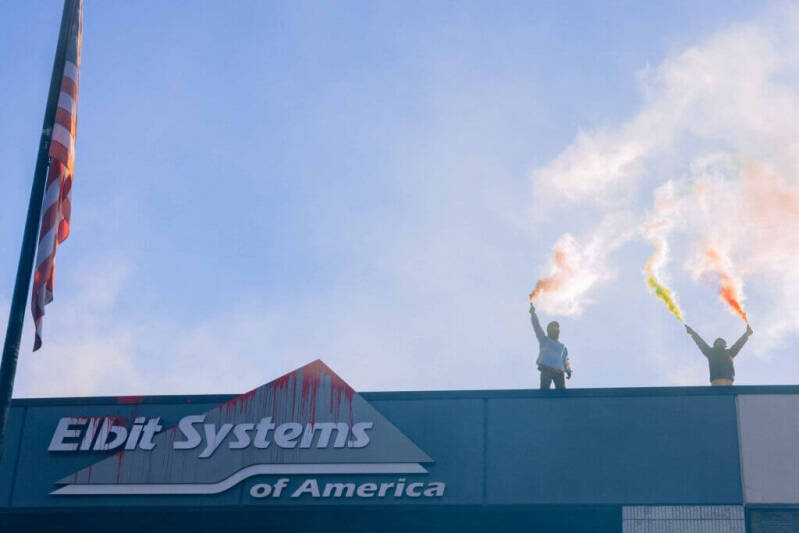
Three Palestine Action US activists have been hit with felony charges over a protest targeting Elbit Systems in New Hampshire last November.
New reports confirm months of Israeli torture, abuse, and sexual violence against Palestinian prisoners

For months Palestinian prisoners have shared testimonies of torture at the hands of Israeli military and prison authorities. New reports shed more light on the abuse, particularly sexual violence, carried out inside Israeli detention centers.

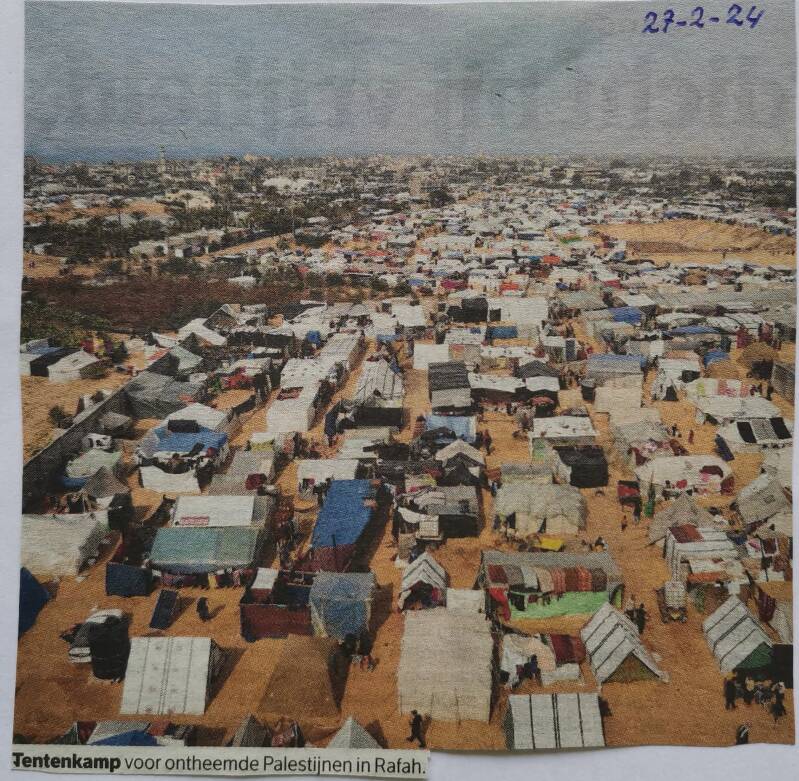
27 februari 2024


27 februari 2024
Hostilities in the Gaza Strip and Israel
Flash Update #127
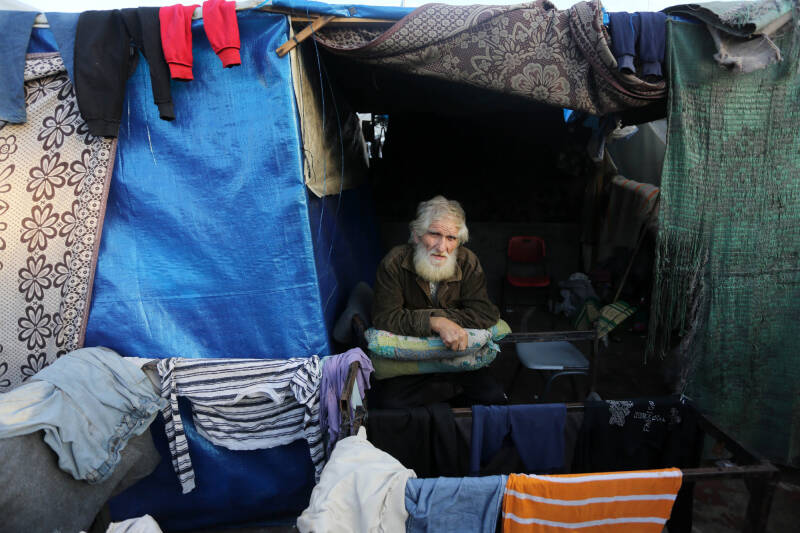
The approximately 111,500 older people in Gaza are among those most at risk of hunger, dehydration, illness, injury, and death, HelpAge reports. A displaced older Palestinian in a makeshift shelter. Photo by UNRWA
Key Highlights
- On 27 February, the Humanitarian Country Team (HCT) said that humanitarian partners have been unable to reach northern Gaza and increasingly parts of southern Gaza safely, as aid convoys have come under fire and are systematically denied access to people in need.
- Allegations of shooting by Israeli forces at Palestinians waiting for humanitarian aid in Gaza city continue to be reported, raising concerns about the protection of civilians.
- HelpAge reports that the approximately 111,500 older people in Gaza are among those most at risk of hunger, dehydration, illness, injury, and death.
- Three Palestinians are killed in Tubas in the West Bank.
Gaza Strip Updates
- Intense Israeli bombardment from air, land and sea continues to be reported across much of the Gaza Strip, resulting in further civilian casualties, displacement, and destruction of civilian infrastructure. Ground operations and heavy fighting between Israeli forces and Palestinian armed groups also continue to be reported, particularly in Khan Younis, Gaza city and east Deir al Balah.
- Between the afternoon of 26 February and 10:30 on 27 February, according to the Ministry of Health (MoH) in Gaza, 96 Palestinians were killed, and 172 Palestinians were injured. Between 7 October 2023 and 10:30 on 27 February 2024, at least 29,878 Palestinians were killed in Gaza and 70,215 Palestinians were injured, according to MoH in Gaza.
- Between the afternoons of 26 and 27 February, there were no Israeli soldiers reported killed in Gaza. As of 27 February, 238 soldiers have been killed and 1,408 soldiers injured in Gaza since the beginning of the ground operation, according to the Israeli military. In addition, over 1,200 Israelis and foreign nationals have been killed in Israel, according to the Israeli authorities, the vast majority on 7 October. As of 27 February, the Israeli authorities estimate that 134 Israelis and foreign nationals remain captive in Gaza, including fatalities whose bodies remain withheld in Gaza.
- Allegations of shooting by Israeli forces at Palestinians waiting for humanitarian aid in Gaza city continue to be reported. On 25 February, at least 10 Palestinians were allegedly killed in two incidents of shelling and shooting at people who were gathering near the An Naboulsi roundabout, in expectation of an aid delivery.
- The following are among the deadliest incidents reported on 25 and 26 February:
- On 25 February, at about 13:00, seven Palestinians were reportedly killed and 62 others were injured when several houses in Az Zaytoun neighbourhood in Gaza city were hit.
- On 25 February, at about 16:00, people were reportedly killed and injured when the gate of the Ash Sheikh Redwan Clinic in northern Gaza city was hit.
- On 25 February, at around 21:00, about 20 Palestinian bodies were reportedly retrieved from different areas in Khan Younis, including five bodies near Nasser Medical Complex.
- On 25 February, at about 22:30, four Palestinians were reportedly killed, including a woman and a child, and others were injured when a house in An Naser area in Rafah was hit.
- On 26 February, at about 9:00, four Palestinians were reportedly killed, and three others were injured, when a civilian car and a nearby group of Palestinians were hit in Abu Al Ajin area, in eastern Deir al Balah.
- On 26 February, at about 10:15, two Palestinian fishers were reportedly killed when the coast off Khan Younis was struck by naval fire.
- On 25 February, the Palestine Red Crescent Society (PRCS) and a United Nations team evacuated 24 patients from Al Amal hospital in Khan Younis. The hospital was subject to a prolonged siege and raids by the Israeli military until 22 February, which resulted in at least 25 fatalities, and rendered it ‘minimally functioning’ according to the World Health Organization (WHO). Despite prior coordination with the Israeli authorities for the staff members and vehicles, Israeli forces blocked the convoy, forced patients and staff from ambulances and stripped the paramedics of their clothes. Three of the PRCS paramedics were subsequently detained, delaying the convoy for over seven hours. Two of the paramedics remain in detention. On 26 February, the PRCS announced the suspension of all humanitarian coordination procedures on medical missions in Gaza for 48 hours, due to “failure to ensure the safety and security of the Society’s Emergency Medical Services teams, the wounded and the sick in PRCS hospitals, centres and ambulances.” On 27 February, regarding the medical evacuation, the Humanitarian Country Team (HCT) in Palestine stated that this was not an isolated case, as aid convoys have come under fire and are systematically denied access to people in need. Furthermore, humanitarian workers have been harassed, intimidated or detained by Israeli forces, and humanitarian infrastructure has been hit, the statement said, indicating that the requirements for the meaningful facilitation of relief efforts have been consistently communicated to the Israeli authorities. As a result of inadequate facilitation of relief operations, humanitarian partners are unable to reach northern Gaza and increasingly parts of southern Gaza safely. The HCT pledged to continue to engage with Israeli forces so that the critically needed humanitarian response is enabled.
- According to a report by HelpAge, the approximately 111,500 older people in Gaza are among those most at risk of hunger, dehydration, illness, injury, and death. Prior to the current hostilities, older people in Gaza were already living with the long-term impact of conflict and displacement, with reduced access to essential health and social services. Older people are also disproportionality affected by non-communicable diseases and are likely to be severely impacted due to damage to health infrastructure and shortages in medication, the report said. Older people who have had to evacuate are said to be mostly accommodated in overcrowded shelters that are inadequate to meet their needs, as many require support to manage chronic health issues and disabilities. Older women often face violence, abuse and neglect because of their age, gender, or other factors such as disability or being a widow, according to the report. These risks are compounded in humanitarian crises for women of all ages on the move and living in emergency shelters. HelpAge is calling for safe, full, and unimpeded humanitarian access to ensure that all affected people, including older people and people with disabilities, can be reached and can access urgently needed basic services and humanitarian assistance.

West Bank Updates
- On 27 February, Israeli forces shot and killed three Palestinians, and another Palestinian was injured, in two separate military operations in Tubas city and the nearby El Far'a Refugee Camp (both in Tubas). The raid in the camp involved an exchange of fire between Palestinians and Israeli forces and the throwing of pipe bombs and stones by Palestinians. Two of the fatalities, including a bystander, were killed in this incident. Initial information indicates that Israeli forces bulldozed multiple sections of streets in the camp, causing damage to infrastructure, including water networks, resulting in continuous water cut-offs. The third fatality occurred when a unit of undercover Israeli forces entered Tubas city and shot him. Reportedly, there was no exchange of fire.
- Since 7 October 2023 and as of 27 February, 403 Palestinians have been killed, including 102 children, and 4,590 Palestinians have been injured, including 708 children, in conflict-related incidents across the West Bank, including East Jerusalem, and Israel. Since the beginning of the year, 90 Palestinians have been killed, including 25 in refugee camps. During the same period, 13 Israelis, including four members of Israeli forces, were killed and 86 injured in conflict-related incidents in the West Bank, including East Jerusalem, and Israel.
- Since 7 October 2023, 576 people, including 276 children, have been displaced in Area C and East Jerusalem, after their homes were demolished due to the lack of Israeli-issued building permits, which are almost impossible to obtain.
- According to the latest field assessments, since 7 October 2023, 848 Palestinians, including 397 children, have been displaced, following the destruction of 132 homes during operations carried out by Israeli forces across the West Bank. About 95 per cent of the displacement was reported in the refugee camps of Jenin, Nur Shams and Tulkarm.
- Since 7 October 2023, OCHA has recorded 590 Israeli settler attacks against Palestinians that resulted in Palestinian casualties (52 incidents), damage to Palestinian-owned property (472 incidents), or both casualties and damage to property (66 incidents).
- Since 7 October, the Cash Working Group (CWG) has supported hundreds of conflict-affected Palestinian families in the West Bank through emergency multi-purpose cash assistance. Those include 98 households, comprising 581 individuals, from 15 communities, who were displaced due to settler violence; over 600 households affected by curfews in the H2 area of Hebron; and 131 families, comprising 662 people, affected by military operations in Jenin. In addition, 457 Gazan patients that are stranded in the West Bank were assisted with up to three payments to meet their most urgent needs.
- Between 25 and 26 February, some 50 Palestinians were arrested across the West Bank, including East Jerusalem. Over 5,700 Palestinians have been arrested since 7 October.
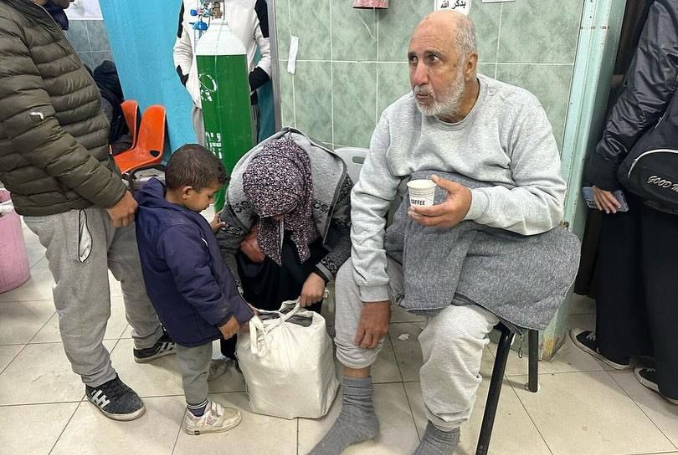
Humanitarian Needs and Response Updates | 20–26 February
Health
Needs
- There is a crucial need to expand primary healthcare services within informal shelters; enhance routine immunization coverage; deliver medication for non-communicable diseases; extend sexual and reproductive health services; establish additional field hospitals in various locations across the Gaza Strip; ensure the availability of laboratory equipment, reagents and blood products.
- Following two reported cases of death among children due to Severe Acute Malnutrition (SAM) stemming from inadequate food supplies, there is an urgent need to access northern Gaza to deliver food and establish SAM stabilization centres along with outpatient therapeutic feeding programmes.
Response
- Between 12 and 18 February, 45 health cluster partners delivered primary and secondary healthcare services across Gaza, reaching 124,800 people.
- WHO, in collaboration with OCHA and PRCS, led missions to Nasser Medical Complex, Al-Amal, and European Gaza hospitals to evacuate critical patients to the International Medical Corps (IMC), United Arab Emirates, and Indonesian field hospitals as well as Al Aqsa Hospital. The team also prepositioned medicines, medical supplies, and fuel and provided hot meals and water.
- With the support of WHO, the IMC field hospital increased its bed capacity from 98 to 150.
- UNFPA and WHO have successfully identified and deployed 72 midwives across various shelters and at designated medical points to provide services for spontaneous vaginal deliveries, antenatal care and family planning.
- Medical Global, with WHO’s support, established a SAM stabilization centre in Tell As Sultan primary healthcare centre in Rafah with a capacity of five beds. Additionally, preparation for a training session for 32 healthcare workers on the management of SAM cases with medical complications is underway.
Challenges
- Shortages of fuel, food, medicine, and medical supplies at hospitals in northern Gaza and lack of access to the area.
- Continued hostilities in Khan Younis pose significant barriers to accessing healthcare.
- Following the strike on MSF’s guest house on 20 February, intensified efforts to ensure the safety of humanitarian guest houses throughout Gaza are urgently needed.
- The increase of bloody and watery diarrhea can be directly attributed to the lack of safe drinking water, posing a significant public health challenge.
- The absence of segregated sanitation facilities and electricity within shelters presents a considerable safety risk, depriving women and girls of secure environments and thereby increasing their vulnerability to sexual violence.
Nutrition
Needs
- A new report by the Global Nutrition Cluster highlights a steep rise in malnutrition among children and pregnant and breastfeeding women in the Gaza strip.
- Sustained collaboration with partners is needed to enhance their capacity in various nutrition response areas, including Mid-Upper Arm Circumference (MUAC) screening capacity, identifying cases of Severe Acute Malnutrition (SAM) and Moderate Acute Malnutrition (MAM), and facilitating treatment using simplified protocols.
- There is a crucial need to expand MUAC screening into northern Gaza, where the situation is deteriorating rapidly and there is limited capacity.
- Continued distributions of supplementary nutrition food and blanket supplementary food to those in need to prevent malnutrition.
Response
- Five implementing partners continue conducting screenings for malnutrition among children aged 6 to 59 months, using MUAC measurements in shelters and health facilities. In total, 10,963 children aged 6-59 months underwent MUAC screening. Children with SAM and MAM are receiving treatment through the simplified treatment protocol.
Challenges
- Restricted access to northern Gaza significantly contributes to insufficient humanitarian aid delivery, leading to concerns about food insecurity and the possibility of widespread starvation and fatalities due to hunger.
Food Security
Needs
- The food security situation continues to be extremely critical across Gaza, particularly in northern Gaza, with people reportedly feeding their children animal fodder. Vulnerable segments of the population, including children, the elderly and people with underlying health conditions, are particularly exposed to the risk of malnutrition and famine.
- The food security situation in the Middle Area and southern governorates is also critical, with most of the population queuing for hours to receive food when trucks manage to enter. In Rafah, the situation is increasingly concerning, with growing reports of people stopping aid trucks to take food and eat it immediately.
- There is an urgent need to increase the fleet of delivery trucks.
- There is an urgent need to import the agricultural inputs necessary for reactivating domestic production of essential fresh foods like eggs, vegetables, meat, fish and milk to ensure the availability of a balanced nutrition.
- There is a need to establish secure and uninterrupted humanitarian corridors, with the support of the private sector and a focus on critical resources like fuel and cooking gas.
Response
- Between 19 and 25 February, a total of 18 partners engaged in providing food assistance across the Gaza Strip, reaching around 1.7 million people with food assistance at least once. Rafah Governorate received about 45 per cent of the total food assistance, followed by Deir al Balah (24 per cent), Khan Younis (15 per cent), and northern Gaza Strip (15 per cent).
Challenges
- Operating partners are reporting a lack of food to distribute, and some are reporting that existing stocks will last for only two days.
- The large number of people reached with hot meals is still insufficient to meet daily nutritional requirements.
- Ongoing airstrikes and heavy fighting in Gaza continue to affect the flow of food, posing challenges for the conduct of safe and efficient humanitarian operations. Frequent border closures, restrictions, and security concerns hinder the delivery of a consistent and dependable food supply.
- Rafah crossing is now working at a reduced rate and Karem Shalom is encountering closure due to Israeli demonstrators preventing trucks from entering. The humanitarian community is engaging with all relevant stakeholders to address this issue.
Protection
Needs
- Identification, tracing and reunification as well as interim and alternative care arrangements are critically needed for unaccompanied, previously detained and separated children.
- Provision of MHPSS, including psychological first aid (PFA) and specialized counselling, and winter clothing and blankets are urgently needed for children and newborn babies.
- Re-establishment of emergency Gender-Based Violence (GBV) services and referral pathways, including health services for GBV survivors, Clinical Management of Rape (CMR), MHPSS, as well as safe spaces and shelters are needed.
- There is a need for a continuous pipeline to distribute dignity kits and Menstrual Hygiene Management (MHM) supplies for over 690,000 menstruating women and girls.
- A comprehensive Humanitarian Mine Action (HMA) response is needed given the likely scale of Explosive Ordnance (EO) contamination despite the absence of formal large-scale assessments of contamination levels.
- There is a need for deployment of Explosive Ordnance Disposal (EOD) operators to conduct explosive hazard assessments of safe sites for humanitarian response, in addition to training for humanitarian workers and messaging tailored to different groups on Explosive Ordnance Risk Education (EORE) and Conflict Preparedness and Protection (CPP).
- Victim Assistance (VA) services for survivors of shelling and explosive ordnance-related accidents are also needed.
Response
- Child Protection partners have reached 267,511 boys and girls and 27,307 women and men through awareness-raising interventions, MHPSS, identification and registration of unaccompanied and separated children, and distribution of clothing kits.
- GBV sub-cluster partners have provided 2,680 women and girls with 104,320 packs of sanitary napkins, which is sufficient to cover needs for the next 3 months, as well as a total of 3,500 Dignity Kits and 8,926 MHM kits.
- GBV responders are conducting procurement and distribution of CMR kits, and identification of health service points to provide CMR.
- Partners are exploring ways to establish emergency safe spaces, to provide PFA and recreational activities for vulnerable women and girls. Partners continue to expand PFA services for vulnerable groups, including GBV survivors, through frontline responders.
- Mine Action (MA) partners are actively engaged in carrying out Explosive Threat Assessments to the prioritized humanitarian sectors, delivering EORE and CPP sessions, producing educational materials, conducting digital campaigns, Radio and SMS campaigns, tailoring them to people with disability needs, and exploring partnerships with local organizations to enhance their reach and impact.
- To ensure a well-coordinated effort, the MA sub-cluster has now established active bi-weekly technical working groups on EORE-CPP, GIS, and will soon initiate an explosive ordnance disposal in the Gaza Working Forum.
Challenges
- Difficulties in providing sufficient urgent and safe alternative temporary care arrangements for unaccompanied children, especially adolescents, due to physically and resource-exhausted families and communities, extreme overcrowding and continuous insecurity.
- Limited access prevents the provision of critical protection services to thousands of affected people.
- Obtaining authorization to deploy MA personnel, especially EOD operators for EO contamination assessments; restrictions on importing essential humanitarian mine action supplies; and unreliable communication systems that interfere with EORE, messaging, and coordination activities.
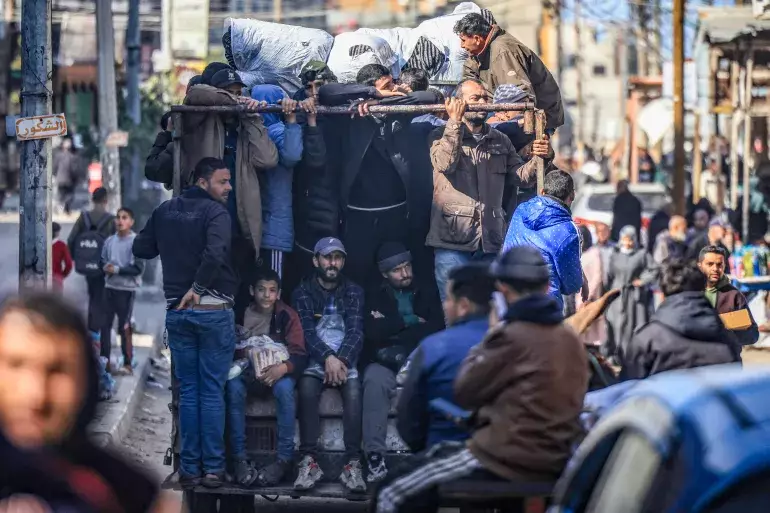
Logistics
Response
- As of 25 February 2024, the Logistics Cluster received 6,251 cubic meters of cargo for storage on behalf of 17 organizations in Gaza and has supported 21 organizations with cargo notification services in Rafah. Through the Jordan corridor, the Cluster has transported a total of 3,596 metric tons of relief items on 267 trucks on behalf of six partners.
- The Cluster delivered online training to 79 aid workers on the Service Request Forms (SRF), for storage and transport. In partnership with the IMPACT Working Group, the Cluster also organized an information session with UN agencies on customs clearance challenges in Jordan.
- Cluster’s preparations to facilitate incoming cargo through the Egypt and Jordan corridors over the coming three months are underway. Partners have received a dedicated form for their organization via email and are requested to update it every Sunday. Partners who have not received the form can reach out to palestine.logcluster@wfp.org. For more information on the Operations of the Logistics Cluster, visit: Palestine - Gaza Response, Concept of Operations, 26 February 2024 - occupied Palestinian territory | ReliefWeb.
Challenges
- Storage and transport capacity inside Gaza remains challenging with ongoing assessments for identification of additional storage options. The Cluster continues to facilitate access to temporary storage, transport, and cargo notification transshipment services.
Emergency Telecommunications
Needs
- There is an urgent need for independent communication platforms for responders in Gaza to coordinate emergency response and deliver aid, amid ongoing communication blackouts and unreliable/intermittent access to telecommunication services.
- There is a crucial need to import all essential satellite-based communications equipment (sat phones, data solutions), Security Communications Systems (VHF Radios and networks), and power solutions (solar power solutions, generators).
Response
- Since its establishment, the ETC has been engaging with the Israeli authorities to obtain authorization to import all essential telecommunications equipment into Gaza and provide independent access to communications for humanitarian responders.
- The ETC has been supporting humanitarian agencies in Gaza with Information and Communication Technology (ICT) assessments, technical advice and information, repairs, and guidance on the use of ICT equipment. Since 9 January, the ETC has conducted 16 ICT assessments in 13 locations in Rafah, and supported 17 humanitarian agencies with ICT repairs, technical advice, and guidance on the use of ICT equipment to maximize the available telecommunications resources on the ground.
- For more information on ETC activities, please visit: Palestine: Conflict | Emergency Telecommunications Cluster (ETC) (etcluster.org).
Challenges
- Limited access to electricity, fuel, and telecommunications services continues to impede the humanitarian response in Gaza.
- The process of importing telecommunications equipment into Gaza remains lengthy and extremely challenging.
Multi-Purpose Cash Assistance (MPCA)
Response
- Between 19 and 25 February, 27,028 households received one round of emergency MPCA. Cash out operations are concentrated in the governorates south of Wadi Gaza, with the majority being reported in Rafah. As of 25 January, one round of emergency MPCA was delivered to some 160,000 households, a top-up was delivered to 35,000 people (including people with disabilities and nursing mothers), and over 16,000 households have received a second round.
- Since 7 October, some 116,000 households have cashed out their assistance, and about 5,400 payments have been cancelled after not being cashed out for months mainly due to the lack of connectivity and available agents (especially north of Wadi Gaza). Provided assistance falls well short of need given market collapse and price volatility.
- Based on the last post-distribution monitoring data (PDM) collected between mid-January and mid-February, food remains the most purchased item with humanitarian cash (80 per cent), followed by medicines (39 per cent), water (23 per cent), hygiene bedding (10 per cent), and transportation. PDM data show that cash remains a relevant modality of assistance which can be used by recipients to access goods and services that remain available.
Challenges
- Poor electricity supply and connectivity is affecting the ability of financial service providers to make cash accessible, compromising the encashment of the MPCA package.
- Since late December, commercial trucks have sporadically entered Gaza, with 830 trucks recorded as of 26 February. Informal markets are the primary source of accessible goods, which complicates efforts to track distributions and gather market data.
Funding
- The Flash Appeal for the occupied Palestinian territory (oPt), which requests US$1.2 billion to meet critical needs of 2.7 million people across the oPt (2.2 million in the Gaza Strip and 500,000 in the West Bank, including East Jerusalem), was extended through the end of March 2024. As of 26 February, member states disbursed nearly $906 million against the updated Flash Appeal (74 per cent); this includes about $616 million out of $629 million (98 per cent) requested for October-December 2023 and $291 million out of $600 million (48 per cent) requested for January-March 2024. For funding analysis, please see the Flash Appeal Financial Tracking dashboard.
- The occupied Palestinian territory Humanitarian Fund (oPt HF) and the Central Emergency Relief Fund (CERF) are currently funding more than 94 ongoing projects in the Gaza Strip to meet urgent humanitarian needs, notwithstanding constraints on the entry and delivery of aid into and within the Gaza Strip. These interventions, totalling about $88 million, address needs in the areas of food security, shelter, water, sanitation and hygiene (WASH), health and protection. Since October 7, the oPt HF has received a total of $88 million in contributions from member states and private donors. Private donations are collected directly through the Humanitarian Fund.


27 februari 2024
Today's headlines
Israel and Hamas contradict Biden claim that Gaza ceasefire is close
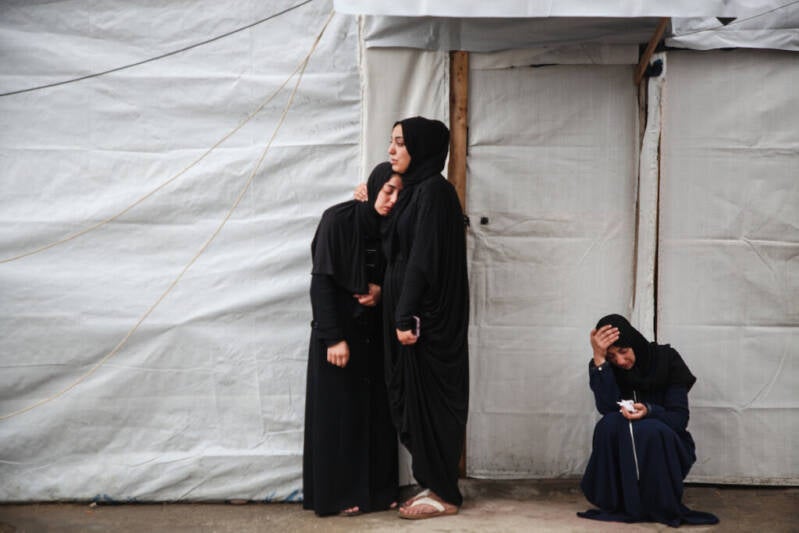
A proposed ceasefire deal between Israel and Hamas is reported to include a temporary 40-day truce, the release of 40 Israeli captives in return for 400 Palestinian prisoners, and the entry of humanitarian aid and mobile shelters into Gaza.
Thirty years after Baruch Goldstein’s massacre, his followers are now carrying out a genocide
It has been thirty years since Baruch Goldstein carried out his massacre of Palestinian worshippers in Hebron. His legacy of bloodshed continues in Gaza and the West Bank as his followers are now in power.
World Court hearing on legality of Israeli occupation ends following week of testimony
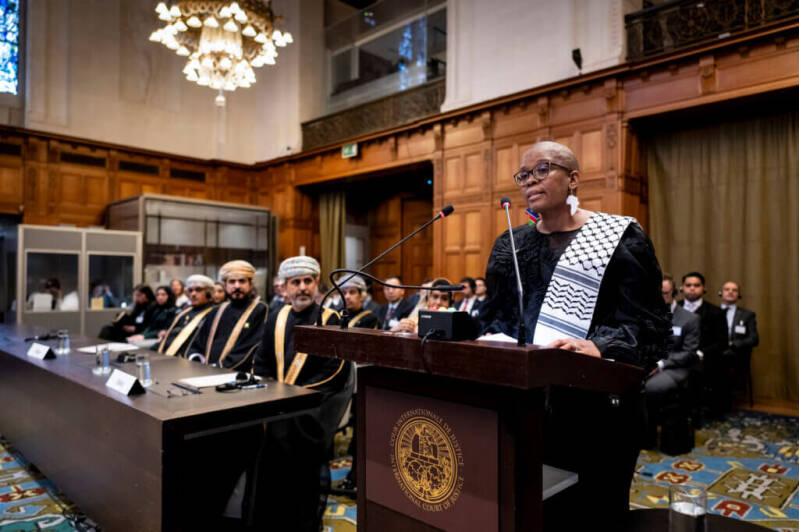
Over 50 nations presented testimony to the ICJ on the legality of the Israeli occupation, with the majority offering stirring arguments for Israeli accountability and justice for the Palestinians. An Advisory Opinion is expected sometime this summer.
‘I will no longer be complicit in genocide’: U.S. soldier dies of self-immolation in protest of war on Gaza
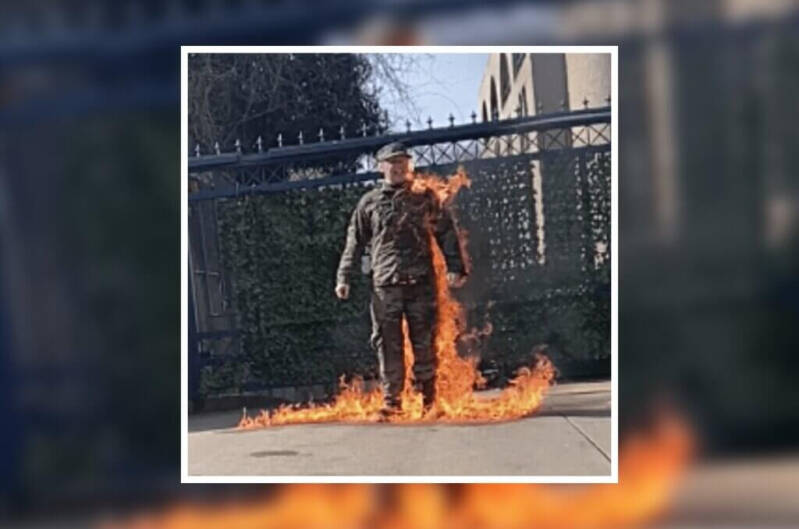
Aaron Bushnell, a 25-year-old soldier in the United States Air Force, died on Sunday after setting himself on fire outside the Israeli Embassy in Washington DC in protest of Israel's genocidal assault on Gaza.


26 februari 2024
Gaza famine is ‘man-made,’ says UNRWA Chief

UNRWA says that the famine in northern Gaza can be avoided if more food convoys are allowed in, but Israel continues to hold up over 2000 aid trucks. Meanwhile, Netanyahu reaffirms plans to invade Rafah, where 1.5 million Gazans have sought shelter.
Solidarity through music
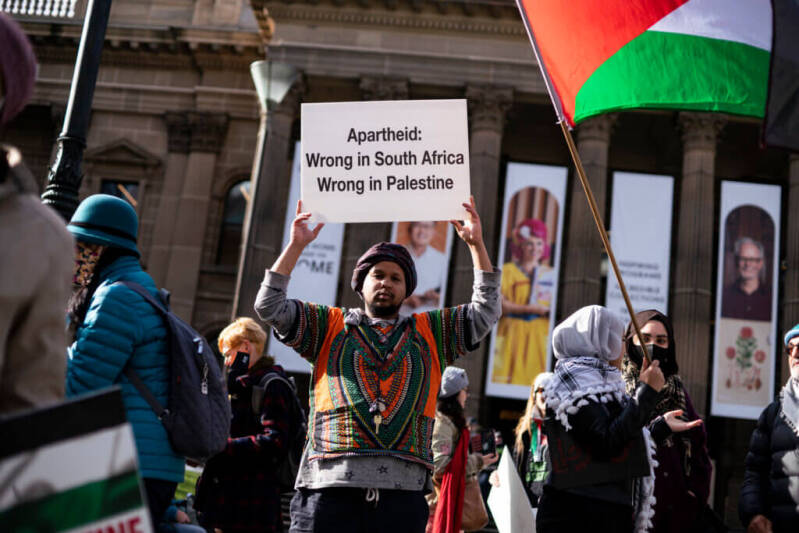
Solidarity through music. That is what the new song "Palestinian-South African Ballad of Love" is all about.
We are Gaza’s scattered fragments
Tal

In Gaza, the enemy was in the sky, immaterialized and almost unattainable, so we could create a sense of normalcy in our daily lives. But leaving Gaza is what led to the pathologies that accompanied our detachment from our homeland and community.


26 februari 2024
Hostilities in the Gaza Strip and Israel
Flash Update #126

Medical evacuation of 24 patients from Al Amal hospital amid hostilities in Khan Younis, 25 February 2024. The UN and the Palestine Red Crescent Society have additionally completed the evacuation of 72 critical cases from Nasser hospital in Khan Younis, Photo by OCHA
Key points
- The Palestine Red Crescent Society (PRCS), supported by OCHA and the World Health Organization (WHO), have completed the evacuation of 72 critical cases from Nasser Hospital in Khan Younis.
- A UN staff member and a PRCS volunteer paramedic were reported killed in Gaza, heightening existing concerns for the safety of aid workers and medical personnel.
- The United Nations Population Fund (UNFPA) reports that newborns are dying in Gaza because their mothers are unable to attend prenatal or postnatal check-ups while the incessant bombings, fleeing for safety and anxiety are leading to premature births.
- A new report by the World Bank highlights that economic activity in Gaza has grounded to a halt and nearly every resident will live in poverty, at least in the short term.
Gaza Strip Updates
- Intense Israeli bombardment from air, land and sea continues to be reported across much of the Gaza Strip, resulting in further civilian casualties, displacement, and destruction of civilian infrastructure. Ground operations and heavy fighting between Israeli forces and Palestinian armed groups also continue to be reported, particularly in Khan Younis, Gaza city and east Deir al Balah. Between 23 and 26 February, tens of rockets were also reportedly fired by armed Palestinian groups toward Israel.
- Between the afternoon of 23 February and 10:30 on 26 February, according to the Ministry of Health (MoH) in Gaza, 268 Palestinians were killed, and 418 Palestinians were injured, including 90 killed and 164 injured in the past 24 hours. Between 7 October 2023 and 10:30 on 26 February 2024, at least 29,782 Palestinians were killed in Gaza and 70,043 Palestinians were injured, according to MoH in Gaza.
- Between the afternoons of 23 and 26 February, three Israeli soldiers were reported killed in Gaza. As of 26 February, 238 soldiers have been killed and 1,400 soldiers injured in Gaza since the beginning of the ground operation, according to the Israeli military. In addition, over 1,200 Israelis and foreign nationals have been killed in Israel, according to the Israeli authorities, the vast majority on 7 October. On 25 February, one Israeli soldier was reported killed and captured on 7 October, based on new intelligence information, and his body remains withheld in Gaza. As of 26 February, the Israeli authorities estimate that 134 Israelis and foreign nationals remain captive in Gaza, including fatalities whose bodies remain withheld in Gaza.
- The protection and safety of humanitarian aid workers and medical personnel continues to be a serious concern amid widespread hostilities and attacks. On 22 February, a UN staff member and several members of his family were killed in an airstrike in Deir Al Balah, according to UNOPS. A volunteer paramedic with the PRCS ambulance centre in Rafah was also reported killed, when his family home in eastern Rafah was struck on 23 February. Since 7 October, 161 UN staff have been killed in Gaza. Between 7 October and 12 February, there were 378 attacks on health care across Gaza, affecting 98 health facilities and 98 ambulances, according to WHO.
- Attacks on or near schools hosting internally displaced persons (IDPs) continue to be reported, according to UNRWA. On 22 February, at least two people were reportedly killed by gunfire at the main gate of a school in Al Amal neigbourhood west of Khan Younis. On 23 February, several IDPs sheltering at a school in Gaza city fled after the school was reportedly hit by artillery fire. As of 24 February, at least 403 IDPs in UNRWA shelters have been killed, and at least 1,385 have been injured, according to UNRWA.
- The following are among the deadliest incidents reported between 23 and 25 February:
- On 23 February, at about 10:40, nine Palestinians were reportedly killed, and others were injured, when a group of people near Askalan School, in eastern Khan Younis, was hit.
- On 23 February, at about 19:00, 24 Palestinians were reportedly killed, including at least three children, and tens of others were injured, when a residential building in Bishara neighbourhood, in Deir al Balah, was struck.
- On 24 February, at about 3:20, eight Palestinians were reportedly killed, and tens of others were injured, when a residential building in Rafah city was struck.
- On 24 February, at about 12:30, three Palestinians were reportedly killed, and others were injured, when a location in Az Zawaida area, in Deir al Balah, was struck.
- On 24 February, four Palestinians were reportedly killed, and others were injured, when a fire broke out in a residential building in Beit Lahia, in North Gaza, upon being struck.
- On 25 February, at about 7:00, three Palestinians were reportedly killed, and others were injured, when a residential building in As Sabra neighbourhood, in Gaza City, was struck.
- On 23 February, PRCS carried out a fourth evacuation mission of wounded and sick patients from Nasser Hospital in Khan Younis, supported by WHO and OCHA. The cases were transported to hospitals in Deir al Balah, Khan Younis, and Rafah and included two newborn babies who had lost their mothers, according to PRCS. In total, since 18 February, 72 critical cases have been evacuated from the hospital, which still struggles to operate with no electricity or running water, shortages of food and water supplies, the accumulation of solid waste, and sewage overflow. Some 200 people have been detained by the Israeli army from the hospital before the operation was concluded, according to the Israeli authorities. On 25 February, MoH in Gaza warned that hospitals in northern Gaza are running out of fuel, including Al Ahli Arab hospital. The hospital which is managing to perform 13 operations per day and cater to 300 outpatients, currently runs at only 30 per cent capacity due to the lack of power. MoH further stated that dialysis and intensive care patients are at risk of death as a result of the lack of fuel for generators, ambulances, and medicines.
- UNFPA reports that there are only five beds for deliveries at the Al Helal Al Emirati maternity hospital in Rafah, one of the few remaining functioning hospitals in Gaza. Despite the lack of such basic needs as sheets, the facility has had to cope with 78 deliveries in one night. “While one woman is giving birth, we bring another case, and there's no bed,” a midwife quoted in the report said. Newborns are dying because the mothers are unable to attend prenatal or postnatal check-ups while the incessant bombings, fleeing for safety and anxiety are leading to premature births. The lack of supplies, medicine and electricity results in four or five newborns having to share one incubator. The report quotes one of the hospital’s doctors as saying: “Most of them don’t survive.” Infections are rampant from unsanitary toilets and showers, posing particular risks for pregnant women and young children. An estimated 5,500 women are due to give birth in the next month with barely any access to medical assistance, and more than 155,000 pregnant and breastfeeding women are at high risk of malnutrition. Where access allows, UNFPA has been distributing critical medicine and equipment to health facilities across Gaza, including Al Helal Al Emirati, but warns that “the small facility is ill-equipped to handle this level of disaster.”
- According to a new report from the World Bank, the Palestinian economy has experienced one of the largest shocks in recent history, with Gaza's gross domestic product (GDP) plummeting by over 80 per cent in the fourth quarter of 2023, and dropping 24 per cent in total in 2023. Almost all economic activity in Gaza has grounded to a halt, with little indication of substantial improvement. Widespread internal displacement and the destruction of homes, fixed assets, and productive capacity, complementing preexisting high levels of poverty, “realistically means that nearly every resident of Gaza will live in poverty, at least in the short term.” The West Bank economy has also experienced a 22 per cent decline during the same period, due to a combination of increased movement and access restrictions imposed by the Israeli authorities, which impede workers from reaching their places of work, a decline in trade and private sector activity and the cancellation of work permits for over 170,000 Palestinian workers. The report warns that should the intensity of the conflict remain high beyond the first months of 2024, or the limits on the movement and access in the West Bank not be removed, the economic downturn in the Palestinian economy could become even more pronounced.

West Bank Updates
- On 26 February, a Palestinian man died of wounds sustained on 22 February as a result of an Israeli drone-fired missile that struck a vehicle travelling in Jenin refugee camp, during which two additional Palestinians, including a child, were killed. The man was in his barbershop at the time of the attack.
- Since 7 October 2023 and as of 26 February, 400 Palestinians have been killed, including 102 children, and as of 23 February, 4,575 Palestinians have been injured, including 707 children, in conflict-related incidents across the West Bank, including East Jerusalem, and Israel. During the same period, 13 Israelis, including four members of Israeli forces, were killed and 86 injured in conflict-related incidents in the West Bank, including East Jerusalem, and Israel.
- On 20 February, a Palestinian family comprising six people, including three children, was forced to leave Ein Samiya Bedouin community in Ramallah governorate due to attacks by Israeli setters that included stealing of sheep and opening fire at herders. This is one of three families who have remained in the community after 27 other families were forcibly displaced in May 2023. Earlier on 13 February, threats and physical attacks on herders by settlers from a new settlement outpost near Asfar settlement in Hebron forced a herding family near Kisan village to leave their community along with 100 sheep. Since 7 October 2023, at least 200 Palestinian households comprising 1,222 people, including 595 children, have been displaced amid settler violence and access restrictions. The displaced households are from at least 19 herding/Bedouin communities. The displacement toll represents almost 80 per cent of all displacement from different Israeli practices across the West Bank, including East Jerusalem, since 7 October.
- Since 7 October 2023, 576 people, including 276 children, have been displaced in Area C and East Jerusalem, after their homes were demolished due to the lack of Israeli-issued building permits, which are almost impossible to obtain.
- Latest field assessments show that, since 7 October 2023, 848 Palestinians, including 397 children, have been displaced, following the destruction of 132 homes during operations carried out by Israeli forces across the West Bank. About 95 per cent of the displacement was reported in the refugee camps of Jenin, Nur Shams and Tulkarm.
- Since 7 October 2023, OCHA has recorded 586 Israeli settler attacks against Palestinians that resulted in Palestinian casualties (53 incidents), damage to Palestinian-owned property (468 incidents), or both casualties and damage to property (65 incidents).
- On 22 February, following a fatal Palestinian shooting attack on Road 1 near Az Za’ayyem checkpoint, the Israeli authorities banned the movement of Palestinian-plated vehicles on Road 1 during peak hours between 6:00 and 9:00 for 15 days, affecting the movement of thousands of Palestinians.

Humanitarian Needs and Response Updates | 20–26 February
Food Security
Needs
- The food security situation continues to be extremely critical across Gaza, particularly in northern Gaza, with people reportedly feeding their children animal fodder. Vulnerable segments of the population, including children, the elderly and people with underlying health conditions, are particularly exposed to the risk of malnutrition and famine.
- The food security situation in the Middle Area and southern governorates is also critical, with most of the population queuing for hours to receive food when trucks manage to enter. In Rafah, the situation is increasingly concerning, with growing reports of people stopping aid trucks to take food and eat it immediately.
- There is an urgent need to increase the fleet of delivery trucks.
- There is an urgent need to import the agricultural inputs necessary for reactivating domestic production of essential fresh foods like eggs, vegetables, meat, fish and milk to ensure the availability of a balanced nutrition.
- There is a need to establish secure and uninterrupted humanitarian corridors, with the support of the private sector and a focus on critical resources like fuel and cooking gas.
Response
- Between 19 and 25 February, a total of 18 partners engaged in providing food assistance across the Gaza Strip, reaching around 1.7 million people with food assistance at least once. Rafah Governorate received about 45 per cent of the total food assistance, followed by Deir al Balah (24 per cent), Khan Younis (15 per cent), and northern Gaza Strip (15 per cent).
Challenges and Gaps
- Operating partners are reporting a lack of food to distribute, and some are reporting that existing stocks will last for only two days.
- The large number of people reached with hot meals is still insufficient to meet daily nutritional requirements.
- Ongoing airstrikes and heavy fighting in Gaza continue to affect the flow of food, posing challenges for the conduct of safe and efficient humanitarian operations. Frequent border closures, restrictions, and security concerns hinder the delivery of a consistent and dependable food supply.
- Rafah crossing is now working at a reduced rate and Karem Shalom is encountering closure due to Israeli demonstrators preventing trucks from entering. The humanitarian community is engaging with all relevant stakeholders to address this issue.
Logistics
Response
- As of 25 February 2024, the Logistics Cluster received 6,251 cubic meters of cargo for storage on behalf of 17 organizations in Gaza and has supported 21 organizations with cargo notification services in Rafah. Through the Jordan corridor, the Cluster has transported a total of 3,596 metric tons of relief items on 267 trucks on behalf of six partners.
- The Cluster delivered online training to 79 aid workers on the Service Request Forms (SRF), for storage and transport. In partnership with the IMPACT Working Group, the Cluster also organized an information session with UN agencies on customs clearance challenges in Jordan.
- Cluster’s preparations to facilitate incoming cargo through the Egypt and Jordan corridors over the coming three months are underway. Partners have received a dedicated form for their organization via email and are requested to update it every Sunday. Partners who have not received the form can reach out to palestine.logcluster@wfp.org.
Challenges and Gaps
- Storage and transport capacity inside Gaza remains challenging with ongoing assessments for identification of additional storage options. The Cluster continues to facilitate access to temporary storage, transport, and cargo notification transshipment services.
Emergency Telecommunications
Needs
- There is an urgent need for independent communication platforms for responders in Gaza to coordinate emergency response and deliver aid, amid ongoing communication blackouts and unreliable/intermittent access to telecommunication services.
Response:
- Since its establishment, the ETC has been engaging with the Israeli authorities to obtain authorization to import all essential telecommunications equipment into Gaza and provide independent access to communications for humanitarian responders.
- The ETC has been supporting humanitarian agencies in Gaza with Information and Communication Technology (ICT) assessments, technical advice and information, repairs, and guidance on the use of ICT equipment. Since 9 January, the ETC has conducted 16 ICT assessments in 13 locations in Rafah, and supported 17 humanitarian agencies with ICT repairs, technical advice, and guidance on the use of ICT equipment to maximize the available telecommunications resources on the ground.
Challenges and Gaps
- Limited access to electricity, fuel, and telecommunications services continues to impede the humanitarian response in Gaza.
- The process of importing telecommunications equipment into Gaza remains lengthy and extremely challenging.
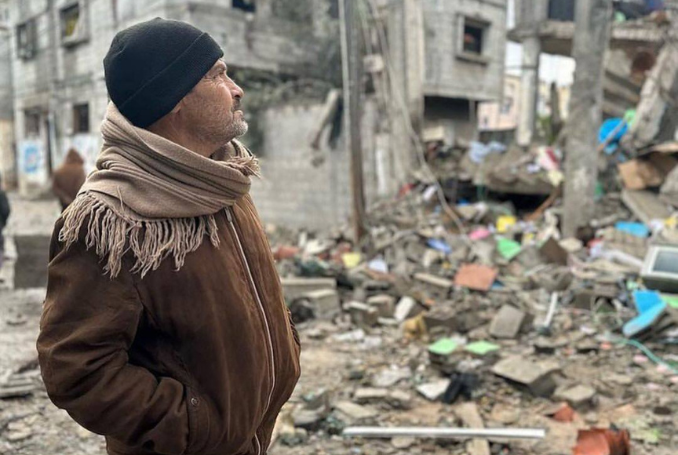
Funding
- The Flash Appeal for the occupied Palestinian territory (oPt), which requests US$1.2 billion to meet critical needs of 2.7 million people across the oPt (2.2 million in the Gaza Strip and 500,000 in the West Bank, including East Jerusalem), was extended through the end of March 2024. As of 26 February, member states disbursed nearly $906 million against the updated Flash Appeal (74 per cent); this includes about $616 million out of $629 million (98 per cent) requested for October-December 2023 and $291 million out of $600 million (48 per cent) requested for January-March 2024. For funding analysis, please see the Flash Appeal Financial Tracking dashboard.
- The occupied Palestinian territory Humanitarian Fund (oPt HF) and the Central Emergency Relief Fund (CERF) are currently funding more than 94 ongoing projects in the Gaza Strip to meet urgent humanitarian needs, notwithstanding constraints on the entry and delivery of aid into and within the Gaza Strip. These interventions, totalling about $88 million, address needs in the areas of food security, shelter, water, sanitation and hygiene (WASH), health and protection. Since October 7, the oPt HF has received a total of $88 million in contributions from member states and private donors. Private donations are collected directly through the Humanitarian Fund.


26 februari 2024
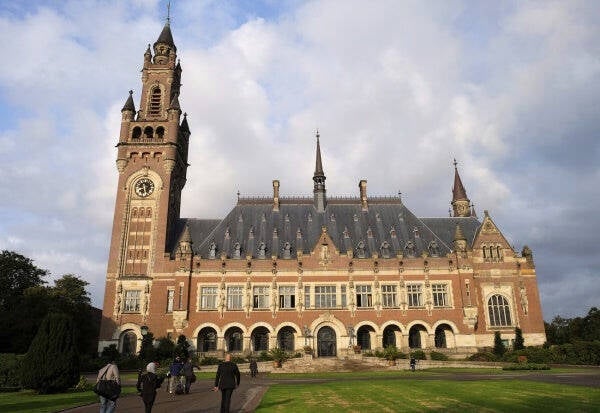
Israel Defies Court, Starves Gaza
Lire la version en français / Hier die deutsche Ausgabe lesen
Last month, the International Court of Justice (ICJ) told the government of Israel it had to “take immediate and effective measures to enable the provision of urgently needed basic services and humanitarian aid” in Gaza. It was a legally binding order, and Israel was to report back on its compliance with the order within one month.
Today, one month later, Israel has failed to comply.
The government of Israel continues to obstruct the provision of basic services and the entry and distribution within Gaza of fuel and lifesaving aid. In fact, Israeli authorities have allowed even fewer trucks into Gaza and fewer aid missions into northern Gaza in recent weeks than in the weeks preceding the World Court order.
As we’ve highlighted before in this newsletter, weaponizing starvation and collective punishment of the population are war crimes.
The court orders came in the context of the “genocide case” against the government of Israel at the ICJ, an independent court based in The Hague. In December, South Africa’s government filed the case, alleging that, in the wake of the Hamas-led October 7 attacks on Israeli civilians, Israel has committed atrocities against the Palestinian people that violate the 1948 Genocide Convention.
Obligations to civilians are nonreciprocal. The fact that Hamas-led fighters committed war crimes against Israeli civilians – does not justify Israeli war crimes against Palestinian civilians.
A final determination on the question of “genocide” may take years, but in January, the court ruled on interim “provisional measures” to address the immediate situation. Citing “catastrophic conditions” in Gaza, the court issued legally binding orders, including an order to enable the provision of basic services and humanitarian assistance.
International humanitarian law is clear here: an occupying power is responsible for the wellbeing of an occupied population. As the occupying power in Gaza, Israel is obliged to provide for the welfare of people in Gaza and ensure their humanitarian needs are met. And in any situation of armed conflict, warring parties are required to facilitate the rapid delivery of humanitarian aid to civilians.
The government of Israel is both ignoring these legal obligations and openly flouting the World Court’s legally binding order. It is a direct challenge to the rules-based international system.
As Israeli authorities continue to flout their obligations to Gaza’s 2.3 million Palestinians, the only real hope is other countries will pressure Israel’s government to not just facilitate, but also to actively provide life-saving aid.
With so many lives at stake, they should use all forms of political and economic leverage, including individual sanctions and suspension of arms transfers, to press the Israeli government to comply with international law.

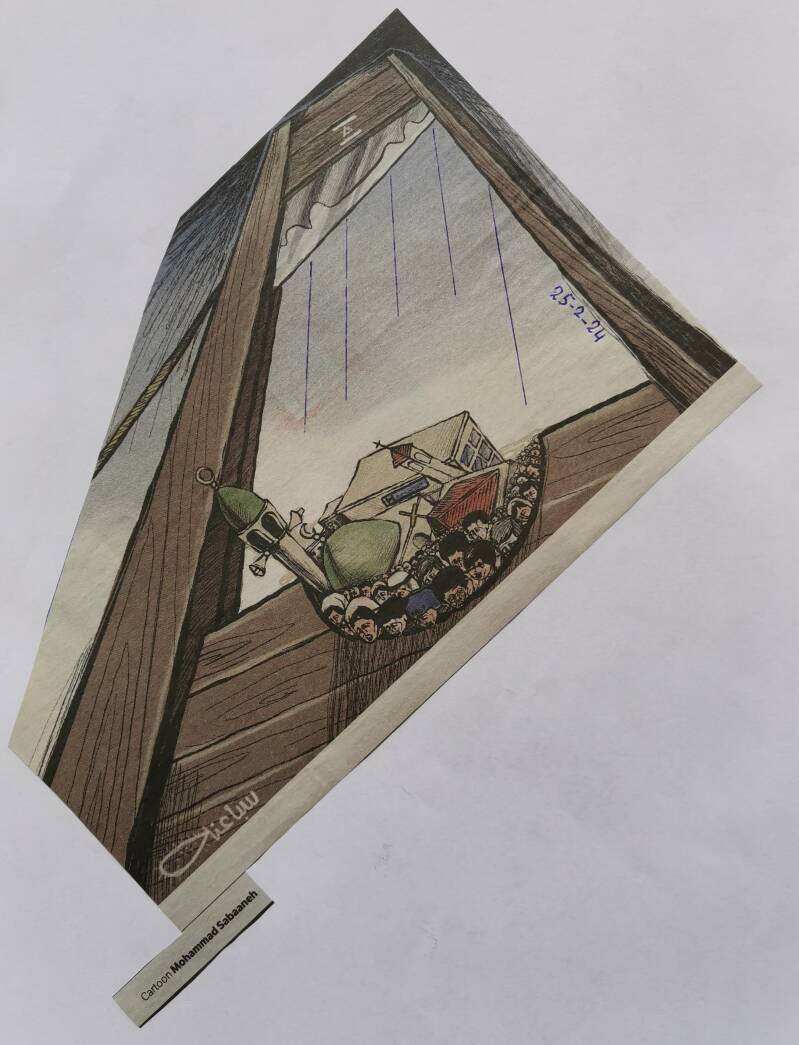
25 februari 2024


25 februari 2024
Today's headlines
UN experts call for immediate arms embargo on Israel
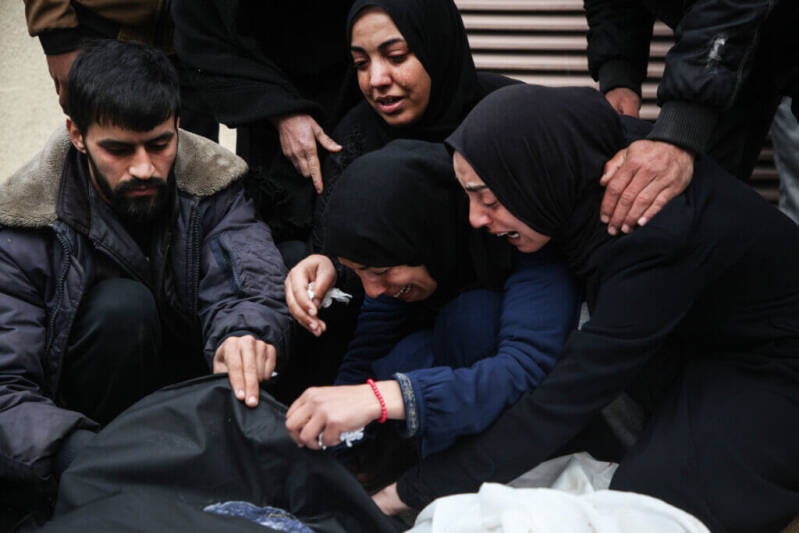
Israel bombs near Egypt’s fortified wall with Rafah as talks resume to reach a captive exchange with Hamas. UN experts call for arms embargo against Israel and say states supplying weapons, ammunition or intelligence risk violating international law.
Extraordinary charges of bias emerge against NYTimes reporter Anat Schwartz

New doubts are emerging about the New York Times’s coverage of sexual violence in the October 7 attack. The paper must explain why it broke its own rules by hiring a clearly biased writer who endorsed racist and violent rhetoric toward Palestinians.
Of families, mills, and gardens

"It is true that there are many people who prefer to flee and search for a safe place outside the Gaza Strip, but this is not the case for the majority of people...It is not easy to start life again away from a homeland that you love."
In a continuous return to Jerusalem: a eulogy for Mustafa al-Kurd

Mustafa al-Kurd left an indelible mark on Palestine’s genre of “committed singing,” contributing to the music of the First Intifada through his “Give Me the Plow and Sickle,” among other classics.
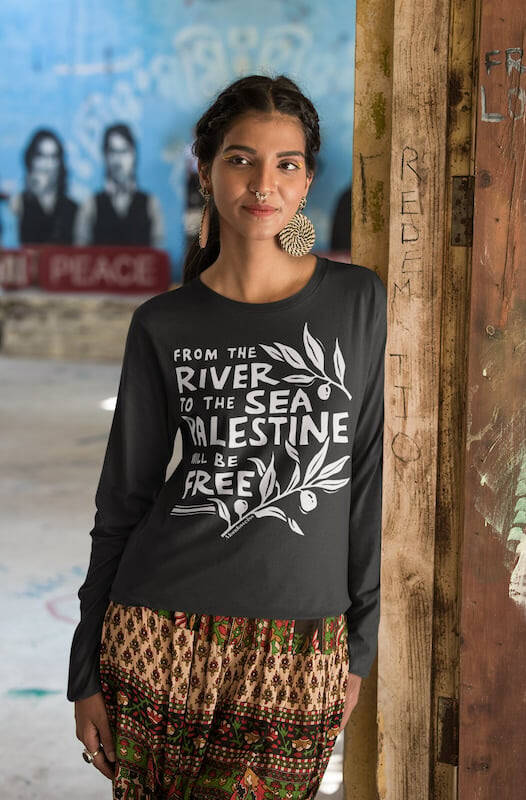

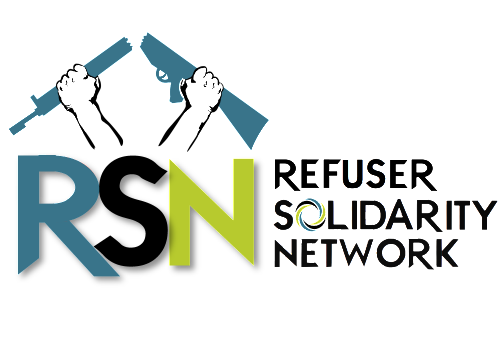
25 februari 2024
While the Israeli government continues to send soldiers into Gaza, attacking hospitals and enclosing millions of Gazans into the southern point of the Strip, some of those most affected by the Hamas assault on October 7th are actively resisting the assault on Gaza.
Maoz Inon, the son of Bilha Inon and Yacovi Inon, both killed by Hamas on October 7th, has since declared himself a peace and anti-war activist. A few weeks ago, I attended an anti-war rally where Inon said:
“To the American administration, and to the government of Germany, please don’t send us military aid, send us reconciliation aid. Send us initiative aid. Send us peace aid. We want peace, not war. Your unlimited support in Hague, in the UN Security Council, in the Israeli government. That is dehumanizing and oppressing, not just the Palestinians in Gaza and in the West Bank, they are … oppressing [the] freedom of speech, the freedom of gathering, the freedom of protesting, the voices of peace here in Israel.”
I agree wholeheartedly with Maoz Inon when he urges world leaders to listen to the voices of the families who Israel claims to be waging this war for - people who know the profound toll of upholding the occupation, apartheid and the ongoing war on Gaza. People who want true justice, safety and lasting peace for all living between the Jordan river and the Mediterranean sea.
You can amplify their voices by signing this petition.
Refuser Solidarity Network has created a petition asking Biden to stop the war on Gaza. We demand Biden:
“1. Publicly call for, and take action towards, an immediate ceasefire, followed by humanitarian aid and release of all hostages and prisoners.
2. Condition continued aid to Israel on concrete steps to end the occupation of the Palestinian people and bring about a political solution to the conflict.”
Currently the United States is not listening to Inon’s and other war resisters' pleas, as the US Senate just passed a bill allocating $14 billion in military aid to Israel.
It is time we stand in solidarity with Palestinians and Israeli war resisters, and urge President Biden to find the moral courage to stop contributing to this horrific war on Gaza and work towards a better future.
Maya,
Intenational Solidarity Coordinator
Refuser Solidarity Network

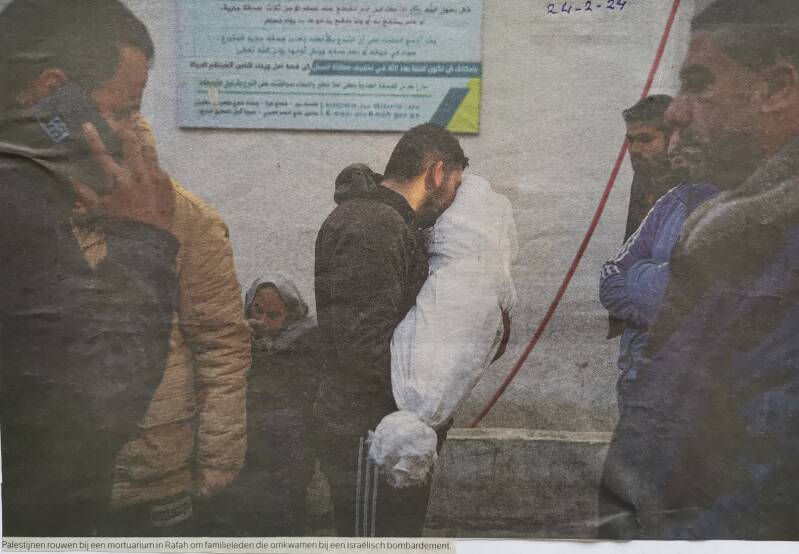
24 februari 2024


24 februari 2024
Today's headlines
Israel attacks civilian shelter in Deir el-Balah as ceasefire talks continue in Paris
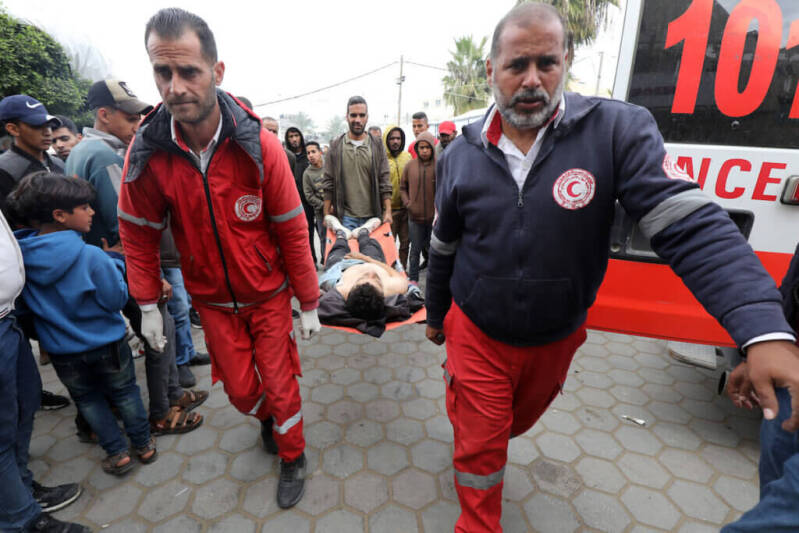
Israeli forces attacked a building in Deir el-Balah where more than 120 people were sheltering, killing at least 24. Medical staff at nearby Al Aqsa Hospital expect many more casualties and are struggling to deal with the influx of wounded civilians.
Why the U.S. must engage Hamas politically
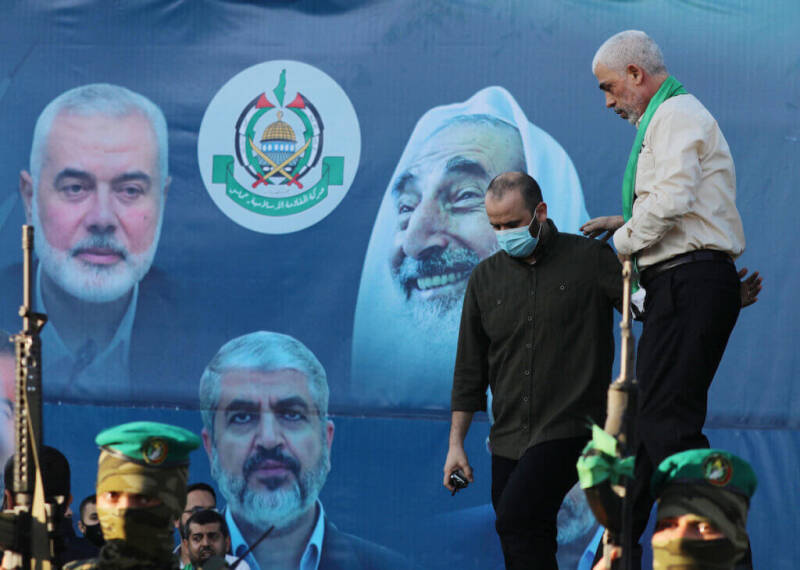
The U.S. must engage politically with Hamas in order to end the horror in Gaza and pave the way toward progress. The alternative is further escalation and the growing possibility of a wider regional war.
Over 2/3 of Jewish Israelis oppose humanitarian aid to Palestinians starving in Gaza
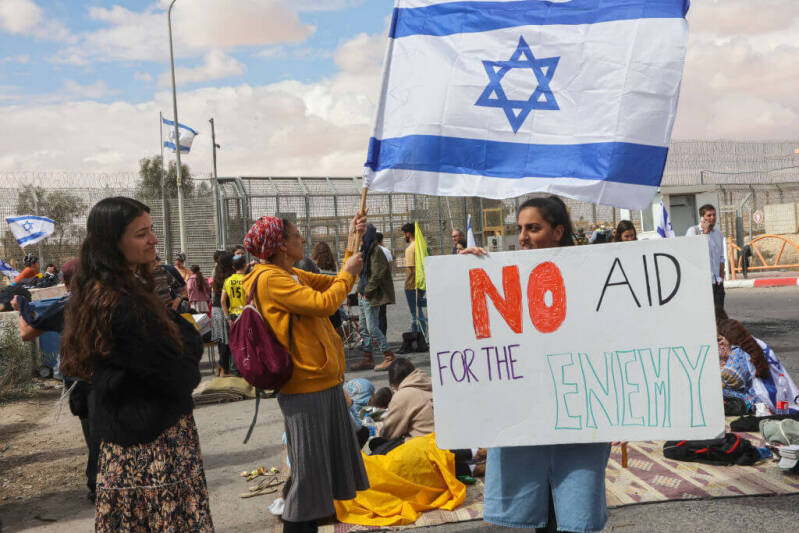
A new Israeli Democracy Institute survey shows that 68% of Jewish Israelis oppose “the transfer of humanitarian aid to Gaza residents.”
Biden won’t let Israel’s rejection of a Palestinian state interfere with his pretexes

In yet another clear sign from Israel, the Knesset overwhelmingly voted this week to reject any “unilateral recognition of a Palestinian state." But this isn't stopping the Biden administration from clinging to its so called support with respect to a two state solution.


24 februari 2024
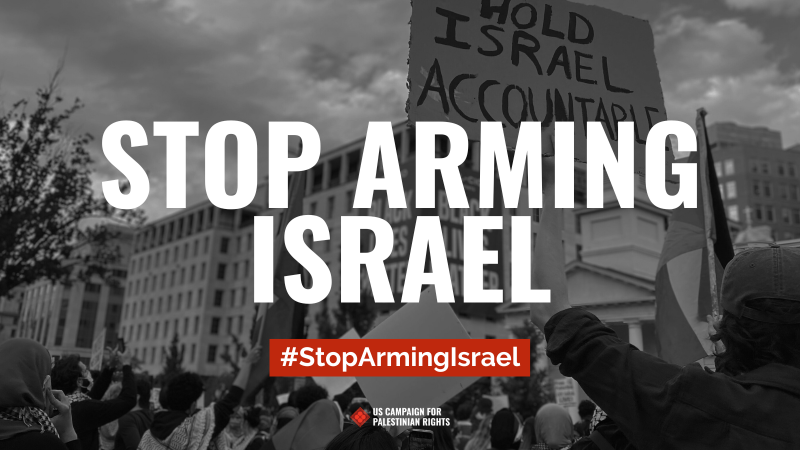
Every day that this genocide goes on, the crisis on the ground in Gaza deepens and the U.S. government facilitates countless more killings. For the sake of every Palestinian person still alive in Gaza, we must resist.
These next two weeks will be critical, as we approach the Global Day of Action on Saturday, March 2, followed by the People’s State of the Union rally in DC on March 7.
Read the latest updates below, and find out how you can keep resisting with us.
Your Activist Scoop
OUR GOVERNMENT'S GUILT

- On Tuesday, the Biden administration singlehandledly vetoed a ceasefire at the UN Security Council for the third time, in what will be remembered as one of the most shameful moments in the history of this administration.
- U.S. government spokespeople continue to brush off even the thought of holding the Israeli military accountable. The Pentagon remarked that they’re “not asking to check their homework” on Israel’s plans for a genocidal ground invasion of Rafah, and the State Department disregarded a new UN report on Israel’s sexual violence against Palestinians.
- An UNRWA spokesperson said today that the humanitarian aid agency can no longer operate in northern Gaza, where Palestinians are starving to death, after the U.S. government and other countries cut funding.
READ "BIDEN'S LEGACY IS GENOCIDE" STATEMENT
YOUR IMPACt
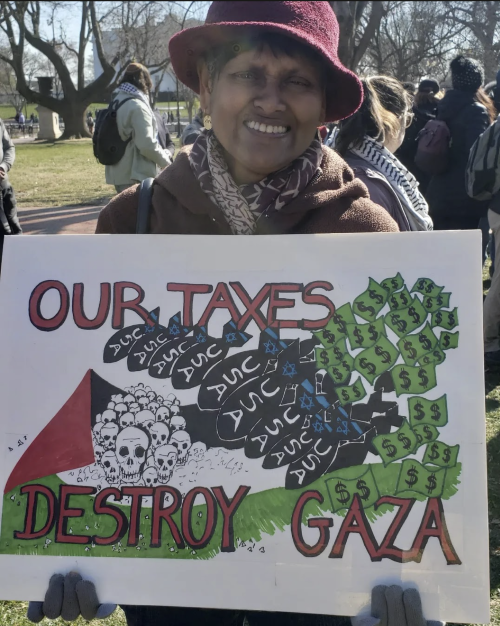

Pilgrimage for Peace rally in DC
- You’ve collectively made 247,000+ calls and 978,000+ emails to Congress through USCPR action tools alone, moving 69 members of Congress to call for a permanent ceasefire. And on top of that, you’ve collectively sent over 3 million emails total to 200+ individual senior Biden administration officials asking them to resign in protest.
- 63% of the American public supports a permanent ceasefire, including most Jews, Muslims, Catholics, Protestants, and white evangelicals, according to the latest polling.
- Hundreds of interfaith leaders from across the country made a pilgrimage from Independence Hall in Philadelphia to the White House to urge Biden to call for a permanent ceasefire. See the Pilgrimage for Peace rally as faith leaders arrived at the White House on Wednesday.
- Student organizers led a historic divestment win at University of California, Davis, pressuring the university to divest from BDS targets complicit in genocide.
SEE THE PILGRIMAGE FOR PEACE RALLY
WHAT TO DO NEXT

- Millions around the world will march for Gaza for the Global Day of Action on Saturday, March 2 from Shut It Down with Palestine. Mobilize your community to march together on March 2!
- Join our next USCPR Phone Zap on Wednesday, Feb. 28 at 2 PM ET to take action and discuss our joint struggles! The theme will be “Honoring Black-Palestinian Solidarity” with guest speaker Jalil Muntaqim, Black Panther Party member and former political prisoner. Sign up now for the Phone Zap.
- Join our ally Grassroots International’s webinar next week on “Legal Strategies to Stop the Genocide in Palestine - A Briefing for Funders and Human Rights Advocates” which features Raji Sourani, Katherine Gallagher, Josh Paul, and Diala Shamas on February 29 at noon ET.
- Raise the pressure on Biden officials to #QuitGenocide! This week, we’re focusing on asking three Arab-American officials to resign in protest: Hady Amr, United States Special Representative for Palestinian Affairs at the U.S. Department of State Bureau of Near Eastern Affairs; Brenda F. Abdelall, Assistant Secretary of Partnership and Engagement at the U.S. Department of Homeland Security; and Fayrouz Saad, Director of Public Engagement at the Department of Commerce.
ASK THESE BIDEN ADMINISTRATION
OFFICIALS TO QUIT
Thank you for taking action.
Onward to liberation,
Communications Director


23 februari 2024
Hostilities in the Gaza Strip and Israel
Flash Update #125
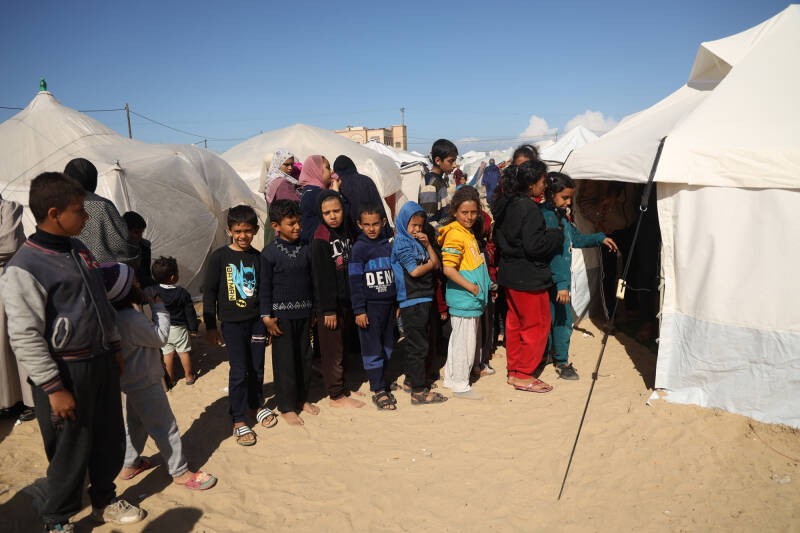
Children standing in line in front of a tent clinic in Rafah, to be screened for malnutrition and referred for treatment as necessary. Photo by UNICEF/El Baba
Key points
- Intense Israeli bombardment from air, land and sea continues to be reported across much of the Gaza Strip, resulting in further civilian casualties, displacement, and destruction of civilian infrastructure. Ground operations and heavy fighting between Israeli forces and Palestinian armed groups also continue to be reported, particularly in Jabalya (northern Gaza), Gaza city, Deir al Balah and Khan Younis.
- Between the afternoon of 22 February and 10:30 on 23 February, according to the Ministry of Health (MoH) in Gaza, 104 Palestinians were killed, and 160 Palestinians were injured. Between 7 October 2023 and 10:30 on 23 February 2024, at least 29,514 Palestinians were killed in Gaza and 69,616 Palestinians were injured, according to MoH in Gaza.
- On 22 February, Israeli forces conducted airstrikes reportedly on residential buildings, mainly in Deir al Balah and Rafah, without prior warning, resulting in the death and injury of multiple people from the same family, including children. The following are among the deadliest incidents reported on 21 and 22 February:
- On 21 February, at about 20:20, 22 Palestinians were reportedly killed, and tens of others were injured, when a residential building in western An Nuseirat Camp, in Deir al Balah, was struck.
- On 22 February, at about 0:15, three Palestinians, including one child, were reportedly killed, and others were injured, when a residential building sheltering internally displaced persons (IDPs) in Al Geneina neighbourhood, northern Rafah, was struck.
- On 22 February, at about 1:30, four Palestinians were reportedly killed, including three children, when a residential building in Deir al Balah was struck.
- On 22 February, at about 7:20, four Palestinians were reportedly killed, when a residential building in Az Zawayda, Deir al Balah, was struck.
- On 22 February, In the Zaytoun neighbourhood of Gaza city, up to eighteen people from the same family were reportedly killed, and several remained unaccounted for, in a strike on a residential building
- Between the afternoons of 22 and 23 February, no Israeli soldiers were reported killed in Gaza. As of 23 February, 235 soldiers have been killed and 1,396 soldiers injured in Gaza since the beginning of the ground operation, according to the Israeli military. In addition, over 1,200 Israelis and foreign nationals have been killed in Israel, according to the Israeli authorities, the vast majority on 7 October. As of 23 February, the Israeli authorities estimate that some 134 Israelis and foreign nationals remain captive in Gaza and include fatalities whose bodies are being withheld.
- On 22 February, Christopher Lockyear, Secretary-General of Médecins Sans Frontières (MSF), briefed the UN Security Council. On 21 February, a shelter hosting MSF staff and their families in Gaza was shelled, killing two family members of MSF staff and injuring six others. MSF staff are treating patients with catastrophic injuries, amputations, crushed limbs, and severe burns, despite a lack of hospital beds, medications and supplies. Surgeons are reusing basic gauze on their patients and have had to carry out amputations without anaesthesia on children. Patients need sophisticated care and long and intensive rehabilitation, but since 7 October, MSF have been forced to evacuate nine different health facilities. The MSF Secretary-General again called for an immediate and sustained ceasefire in Gaza and for the unequivocal protection of medical facilities, staff and patients. Also on 22 February, UN Security Council members expressed their deep concern regarding the extremely difficult and dangerous conditions under which UN personnel and the broader humanitarian and health care community are operating in Gaza and stressed the importance of respecting deconflicting mechanisms for the safety and security of UN personnel and facilities.
- A new report by the London School of Hygiene and Tropical Medicine and the Johns Hopkins Center for Humanitarian Health estimates the potential public health impact of the current conflict in the Gaza Strip, focusing on the deaths in excess of what would have been expected in the absence of hostilities. The report provides a range of projections of what could happen under three distinct scenarios and covers a six-month period from 7 February to 6 August 2024. Under an immediate permanent ceasefire scenario, 6,550 excess deaths are projected, mainly due to the time needed to improve water, sanitation and shelter conditions, reduce malnutrition, and restore functioning healthcare services. Under the ‘current status quo’ and ‘escalation of the conflict’ scenarios, the projections rise sharply to 58,260 and 74,290 excess deaths, with traumatic injuries followed by infectious diseases being the main causes of additional fatalities in both cases. These figures are based on the absence of epidemics; should outbreaks of infectious disease such as cholera occur, the projections rise significantly to 11,580, 66,720 and 85,750 excess deaths, respectively. The report underscores the lasting impact of the conflict on the civilian population and emphasizes the urgent need for improved sanitation, nutrition, and healthcare services in Gaza.
- On 22 February, the Palestine Red Crescent Society (PRCS) reported that its VHF system had been disabled, due to artillery shelling near Al Amal Hospital in Khan Younis, aggravating challenges in communicating with field teams, in particular ambulances. On 20 February, 7,500 litres of fuel were delivered to the hospital, to operate the back-up power generator, but the hospital urgently requires additional fuel, as well as food and medical supplies. Some 140 sick and injured patients, their families, and healthcare workers, still remain in Nasser Hospital, also in Khan Younis, which is struggling to operate, with no electricity, running water, sufficient food supplies, or drinking water. According to the World Health Organization (WHO), as of 22 February, there are 12 partially functional hospitals in the Gaza Strip, including six in northern Gaza and six in the south, in addition to three partly functional field hospitals. On 22 February, the newly appointed Regional Director for the Eastern Mediterranean for WHO stressed that funding cuts to UNRWA would result in ‘further catastrophic consequences’ for people in Gaza, and stated that ‘no agency, including WHO, can meet the critical gaps left if UNRWA is unable to fully operate.’
- Catastrophic levels of acute food insecurity are reportedly intensifying across Gaza, with Save the Children reporting that families are forced to “forage for scraps or food left by rats and eating leaves out of desperation to survive,” amid rapidly declining aid supplies. Without an increased access to adequate food, water, sanitation, hygiene and comprehensive health and nutrition services for children and families, the risk of famine is projected to increase, the organization added. Recently, the Global Nutrition Cluster reported a steep rise in malnutrition among children and pregnant and breastfeeding women in Gaza, with serious concerns in northern Gaza (see Cluster updates below). To avert the threat of mass starvation, Save the Children is calling for safe unfettered humanitarian aid access for a massive scale-up in humanitarian aid supplies and the personnel needed to deliver it, particularly in northern Gaza.
West Bank Updates
- On 22 February, an Israeli drone struck a vehicle travelling in Jenin refugee camp, killing two Palestinians, a man and a 17-year-old child, and injuring 13 other Palestinians, including one in a critical condition. According to the Israeli military, the man was involved in attacks against Israelis and was on his way to carry out another attack.
- Since 7 October 2023, 399 Palestinians have been killed, including 102 children, and 4,545 Palestinians have been injured, including 702 children, in conflict-related incidents across the West Bank, including East Jerusalem, and Israel. During the same period, 13 Israelis, including four members of Israeli forces, were killed and 86 injured in conflict-related incidents in the West Bank, including East Jerusalem, and Israel.
- On 21 February, OCHA issued a report highlighting trends in displacement in the West Bank, including East Jerusalem, in 2023. About 4,000 Palestinians were displaced from their homes in 2023, of whom 29 per cent (1,153) were displaced when 214 homes were demolished in Area C and East Jerusalem for lacking building permits issued by the Israeli authorities, the highest such figure documented by OCHA since 2009. Israeli settler violence and shrinking access to grazing land were also a main cause of displacement; at least 1,539 Palestinians (39 per cent of total displacement) were displaced in this context in 2023, the majority in the aftermath of 7 October, with at least 14 Palestinian communities now completely depopulated. Nearly twenty-five per cent of the overall displacement (911) took place as a result of operations carried out by the Israeli army, particularly in refugee camps in the northern West Bank. Some 200 Palestinians (5 per cent) were additionally displaced from Masafer Yatta and H2 areas of Hebron, citing heightened access and movement restrictions and search-and-arrest operations by the Israeli army after 7 October. Finally, 173 people were displaced as a result of the punitive demolition of homes belonging to the families of Palestinians allegedly responsible for attacks against Israelis, accounting for 4 per cent of overall displacement.
- On 21 February, a Palestinian family in Ath Thuri in East Jerusalem was forced to demolish the two upper floors of their three-storey residential building, due to the lack of Israeli-issued permits. The first floor was built before 1967 and did not receive a demolition order. As a result, five families comprising 23 children, including 12 children, were displaced. Since 7 October 2023, 576 people, including 276 children, have been displaced in Area C, and East Jerusalem, after their homes were demolished due to the lack of Israeli-issued building permits, which are almost impossible to obtain.
- Since 7 October 2023, Israeli forces punitively demolished or sealed off 24 Palestinian-owned homes, displacing 117 Palestinians, including 51 children.
- Since 7 October 2023, 830 Palestinians, including 337 children, have been displaced, following the destruction of 131 homes during operations carried out by Israeli forces across the West Bank. About 95 per cent of the displacement was reported in the refugee camps of Jenin, Nur Shams and Tulkarm.
- On 23 February, an Israeli settler from an outpost associated with Nili settlement, near Qibya village (west of Ramallah), shot and injured a Palestinian man, with live ammunition reportedly after the settler brought his livestock to graze on cultivated Palestinian land. Also on 23 February, settlers from Bracha settlement raided the village of Burin in Nablus and set fire to a Palestinian vehicle. Since 7 October 2023, OCHA has recorded 583 Israeli settler attacks against Palestinians that resulted in Palestinian casualties (52 incidents), damage to Palestinian-owned property (467 incidents), or both casualties and damage to property (64 incidents).
Funding
- The Flash Appeal for the occupied Palestinian territory (oPt), which requests US$1.2 billion to meet critical needs of 2.7 million people across the oPt (2.2 million in the Gaza Strip and 500,000 in the West Bank, including East Jerusalem), was extended through the end of March 2024. As of 19 February, member states disbursed nearly $901 million against the updated Flash Appeal (73 per cent); this includes $612 million out of $629 million (97 per cent) requested for October-December 2023 and $289 million out of $600 million (48 per cent) requested for January-March 2024. For funding analysis, please see the Flash Appeal Financial Tracking dashboard.
- The occupied Palestinian territory Humanitarian Fund (oPt HF) and the Central Emergency Relief Fund (CERF) are currently funding more than 94 ongoing projects in the Gaza Strip to meet urgent humanitarian needs, notwithstanding constraints on the entry and delivery of aid into and within the Gaza Strip. These interventions, totalling about $88 million, address needs in the areas of food security, shelter, water, sanitation and hygiene (WASH), health and protection. Since October 7, the oPt HF has received a total of $88 million in contributions from member states and private donors. Private donations are collected directly through the Humanitarian Fund.

HUMANITARIAN NEEDS AND RESPONSE UPDATES | 13–19 February
Health
Needs
- There is a growing need for: primary health services in informal shelters; increasing routine immunization coverage and conducting catch-up campaigns; reducing overcrowding in maternity hospitals; anaesthetic and analgesic medications which are in short supply;
- There is an urgent need for medication for non-communicable diseases and psychotropics; laboratory equipment and reagents to support diagnostics; and blood and blood products to ensure patients receive timely and necessary transfusions.
- The continued siege on some hospitals is greatly affecting case management capacity of hospitals leading to overcrowding of the ones that are still accessible.
- There is a need to strengthen referral mechanisms between hospitals.
Response:
- On average, partners are reaching about 450,000 people in need of various health services per week.
- Ongoing disease surveillance at all health facilities to ensure early diagnosis and treatment of cases as well as early detection of any potential outbreak.
- Plans to open stabilization centres for acute malnutrition cases with medical complications are underway.
- On average, partners provided nearly 300,000 primary health care consultations per week.
Challenges and Gaps
- Increased insecurity in Rafah is greatly affecting response activities. The influx of IDPs migrating to Rafah has overwhelmed available bed capacities at hospitals.
- High insecurity and limited access to health facilities in the northern and middle governorates continue to present major challenges to partners’ response activities.
- Persistent siege of hospitals impedes access and the implementation of response activities.
- The waiting list for patient referrals outside of Gaza continues to grow.
- Partner operations continue to be negatively affected by the displacement of staff, social stresses and telecommunication challenges.
- Limited access to proper WASH facilities is hindering prevention.
Nutrition
Needs
- Ongoing collaboration with partners is still needed to enhance capacity in Mid-Upper Arm Circumference (MUAC) screening, identify cases of Severe Acute Malnutrition (SAM) and Moderate Acute Malnutrition (MAM), and the delivery of effective treatment.
- The Gaza nutrition vulnerability situation analysis results have been published on the Global Nutrition Cluster (GNC) website and shared across GNC's social media platforms. This assessment was carried out by the NIS-E Task Force under the leadership of GNC and co-chaired by WFP and UNICEF. The findings show:
- Over 90 per cent of children aged 6-23 months and pregnant and breastfeeding women (PBWs) face severe food poverty (consuming two or fewer food groups each day).
- Some 90 per cent of children under 5 are affected by one or more infectious diseases.
- Some 81 per cent of households lack safe and clean water with average household access estimated at less than one litre per person per day.
- One in six (15 per cent) children aged 6-23 in north Gaza are acutely malnourished.
- In Rafah, five per cent of children aged 6-23 are acutely malnourished; this lower rate is mainly due to the limited humanitarian assistance provided, demonstrating that humanitarian assistance can mitigate the worst outcomes.
Response
- Thirty-six staff members (17 Female, 19 male) received training on MUAC screening to enhance early case identification and treatment. The training is crucial for enhancing the capacity of our partners and expanding MUAC screening across affected areas.
- Five implementing partners continue conducting screenings for malnutrition among children aged 6 to 59 months, using MUAC measurements in shelters and health facilities. Children who are detected with MAM and SAM are referred for treatment using simplified treatment protocol. Cumulative MUAC assessment data are as follows:
- Total Children Screened (Cumulative): 7,479
- Average number of children Screened per week: 1,247
- Total SAM children identified: 83
- Total MAM Children Identified: 378
Challenges and Gaps
- Ongoing hostilities in Gaza have caused significant food shortages, poor access to clean water and sanitation facilities, and disruptions to healthcare services. This situation is putting children under five and pregnant or lactating women (PLW) at a relatively higher risk of malnutrition.
- Without private areas for breastfeeding women, it is challenging to encourage and sustain breastfeeding practices. This lack of privacy could have lasting negative effects, particularly on children under two years of age and new-born babies.
Food Security
Needs
- The humanitarian situation in North Gaza and Gaza governorates is extremely critical. The food security situation in Deir al Balah and the southern governorates is particularly acute, with the majority of the population in extreme hunger. In Rafah, the situation is becoming increasingly concerning. People in Rafah are reported to be stopping aid trucks to take food, highlighting the severity of their desperation and hunger.
- There is an urgent need to augment the fleet of delivery trucks to ensure the entire population's nutritional requirements are met and to improve healthcare services, including primary health services, routine immunization coverage, and the provision of medication for non-communicable diseases.
- Gaza's food production sector is severely impacted, eliminating the local production of essential fresh foods like eggs, vegetables, and milk. There is a critical need to restart the import of these vital inputs to revive local production and ensure the availability of balanced nutrition, especially for children and the broader population. Without this, achieving dietary balance remains an unattainable goal.
- Vulnerable segments of the population, including children, the elderly, and individuals with underlying health conditions, are particularly susceptible to the risk of malnutrition. Partners are working to ensure that aid reaches these vulnerable groups.
- Establishing secure and uninterrupted humanitarian corridors in Gaza, with the support of the private sector and a focus on critical resources like fuel and cooking gas, is essential to address the immediate needs of the affected population and support the overall humanitarian response.
Response
- Between 12 and 18 February, a total of 15 partners engaged in providing food assistance across the Gaza Strip. Around 1.7 million people were reached, with Rafah Governorate receiving about 32 per cent of the total food assistance, followed by Deir al Balah (28 per cent), Khan Younis (26 per cent), and northern Gaza Strip (14 per cent).
Challenges and Gaps
- Ongoing airstrikes and heavy fighting in Gaza continue to affect the flow of food supply, posing challenges for the conduct of safe and efficient humanitarian operations. Frequent border closures, restrictions, and security concerns hinder the ability to ensure a consistent and dependable food supply.
- The escalation of hostilities has substantially damaged critical infrastructure, including roads, electricity, and water supply systems, exacerbating severe impediments to the efficient distribution of food.
Shelter and Non-Food Items (NFI)
Needs
- Some 1.7 million people need shelter and NFI assistance across the Gaza Strip.
- Urgent needs are tents, sealing-off kits (SOKs) and NFIs, including bedding, kitchen sets, and winter clothing. SOKs can be used to consolidate makeshift shelters or to protect damaged housing to facilitate return where possible.
- Partners estimate that the amount of debris generated by the destruction of residential housing residential housing units will exceed 12,000 metric tons and will take over four years to remove, given Gaza’s current capabilities.
Response
- Since the start of hostilities, cluster partners reached about 900,000 people with partial shelter and NFI assistance. Partial assistance means that although a household has received some shelter and NFI items, not all their needs have been met.
- During the reporting period, cluster partners distributed 7,900 bedding items, 1,600 SOKs and 340 clothing kits to IDPs sheltering outside of UN shelters in Rafah.
- Some 28,000 tents, 7,600 SOKs, and 35,000 NFI kits are currently in the pipeline.
- At present, there are 26 cluster partners operating in Gaza. Most of the assistance is currently provided in-kind; cash will be pursued further when market conditions allow.
- Further details in the Cluster response strategy and website dashboard.
Challenges and Gaps:
- Slow entry of items into Gaza due to limited aid trucks and complicated bureaucratic and procurement processes.
- Rising prices of shelter materials in neighbouring markets, including high freight rates and shipping costs.
- Need to restore commercial imports and re-establish local markets to relieve pressure on in-kind provision.
- Restrictions on or denial of the entry of key shelter items including timber, hand tools, and cooking stoves.
- Lack of security and access to IDP locations, lack of fuel, and rising social tensions because of the limited quantity of aid available in comparison to outstanding needs.
- Unplanned sites and lack of adequate equipment is leading to water damage to makeshift shelters and tents, and recurrent displacement resulting in the need for re-distribution of assistance.
- Urgent funding is needed to address the key gaps in the supply of shelter and NFIs. As of 19 February, only 28 per cent of the Shelter Cluster funding requirement ($209.2M) has been funded.
Protection
Needs
- Main needs include identification, tracing and reunification, and interim and alternative care arrangements of unaccompanied, previously detained and separated children.
- There is an urgent need to provide Mental Health and Psychological Support (MHPSS), including psychological first aid (PFA); winterization materials, including warm clothing and blanket, for children and new-born babies.
- There is urgent need to provide essential supplies, including menstrual management (MHM) kits and hygiene kits for women and girls.
Response
- In January, Child Protection Area of Responsibility (AoR) partners reached 111,202 boys and girls, and 2,633 women and men through awareness raising interventions; MHPSS for children and caregivers; identification and registration of Unaccompanied and Separated Children (USAC); and distribution of clothing kits.
- Partners distributed essential supplies, including Menstrual Hygiene Management (MHM) kits and hygiene kits for women and girls. A total of 3,500 Dignity Kits and 8,926 MHM kits have been distributed by Gender-Based Violence (GBV) Sub-Cluster partners.
- GBV responders are conducting procurement and distribution of Clinical Management of Rape (CMR) kits, and identification of health service points to provide CMR. Partners are also trying to establish emergency safe spaces, to provide PFA and recreational activities for vulnerable women and girls. Partners continue to expand PFA services for vulnerable groups, including GBV survivors, through frontline responders.
Challenges and Gaps:
- The increased hostilities in Rafah governorate pose a significant threat for partners providing lifesaving protection services in the governorate. There is a lack of available space to provide group-based psychosocial support activities, due to the population density.
- Limited access to other governorates prevents thousands of affected people from being reached with critical protection services.
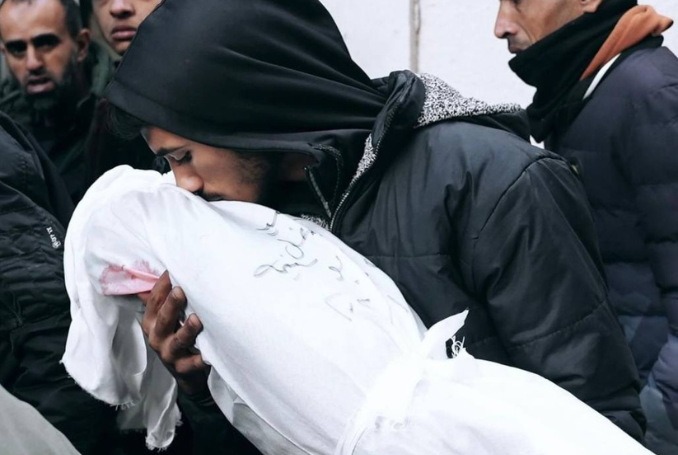
Education
Needs
- More than 625,000 students and nearly 23,000 teachers in the Gaza Strip have been affected by school closures and attacks on education, leaving them with no access to education or safe places.
- According to the Ministry of Education, as of 13 February, more than 5,055 students and 246 educational staff have been killed and more than 8,497 students and 836 teachers have been injured in Gaza since 7 October.
- Some 92 per cent of all school buildings in Gaza are being used as shelters for IDPs and/or have sustained varying levels of damage. Some 394 schools (79.5 per cent of the total school buildings in Gaza) have sustained damage, including 142 schools that sustained major damage or were destroyed. Combined, these schools previously served some 459,231 children and more than 17,110 teachers. The North, Gaza, and Khan Younis governorates have been especially impacted, accounting for 76 per cent of all damaged schools (source: Education Cluster Damaged School Dashboard.)
- The Education Cluster conducted a Satellite-derived Damage Assessment of all Gaza schools to verify damage to schools based on proximity to damaged sites. Key findings include:
- Satellite-derived Damage verification exercise confirmed the large level of damage to schools previously reported by the cluster in Gaza.
- Actual damages to school infrastructure might be 15 to 20 per cent higher than what has been previously reported by the Education Cluster.
- At least 55 per cent of schools in Gaza will either need full reconstruction or major rehabilitation work to be functional again.
- One quarter of directly hit and damaged schools are UNRWA-run schools.
- Forty-five per cent of school buildings that have been used by IDPs as shelters, have been either directly hit or damaged.
- The satellite-derived images provide evidence for the military use of schools.
- Education partners are concerned about reports, videos and pictures depicting schools being used for military operations by Israeli forces, including their use as detention and interrogation centres, or as military bases.
- Key priorities include the provision of Education in Emergencies (EiE) recreational activities and psychological support, including Social Emotional Learning (SEL) activities to children in shelters and designated emergency shelters (DESs); establishing Temporary Learning Spaces (TLS) in shelters/DESs to start non-formal learning for children; and provision of emergency supplies and learning kits. In addition, a key need is to identify and support of children with disabilities and other needs, with assistive devices for learning.
Response
- Since October 2023, eleven partners have reached more than 160,975 students and teachers with psychosocial support, emergency learning, recreational supplies and activities, and awareness sessions in the Deir al Balah, Khan Younis, and Rafah governorates. Most of the cluster responses are delivered by local partners (source: Education Cluster 5W dashboard).
Challenges and Gaps:
- No activities have been undertaken in the North Gaza and Gaza governorates due to ongoing hostilities and access challenges.
- As of 18 February, the education response remains significantly underfunded, receiving less than 10 per cent of its requirements. Urgent funding is required to meet immediate response requirements.
Logistics
Response:
- As of 18 February 2024, the Logistics Cluster has stored 7,256 cubic metres of cargo on behalf of 17 organisations, and supported 21 organisations with cargo notification service in Rafah.
- Of relief items transported through the Jordanian corridor, the Logistics Cluster facilitated partners` access to the inter-agency convoy, transporting a total of 6,159 metric tons of relief items on 463 WFP trucks on behalf of six partners.
- The Logistics Cluster has circulated the Compiled Logistics Supplier List through the mailing list. The aggregated list comes from partners to partners and is intended to ease access to and exchange of information; it is the list is based on partners' vendors’/suppliers’ contributions. The list will be circulated on a regular basis.
- Challenges and Gaps:
- The storage and transport capacity inside Gaza remains limited. The Logistics Cluster continues to facilitate access to temporary storage, transport from handover points to common warehouses, and cargo notification trans-shipment services.
- The Logistics Cluster is coordinating the pipeline for incoming cargo through the Egyptian and Jordanian corridors for the coming three months. This is a vital exercise for operational planning, in terms of understanding the resources available and making allocations based on the prioritization list. Partners have received a dedicated form and are requested to update it weekly. Partners who have not received the form can reach out to palestine.logcluster@wfp.org.
Emergency Telecommunications
Needs:
- There is an urgent need for independent communications platforms for responders in Gaza to coordinate the delivery of relief items amid the ongoing telecoms blackouts and unreliable/intermittent access to telecommunication services.
Response:
- On 12 February, the UN Humanitarian Coordinator received approval from the Israeli authorities to import 30 digital Very High Frequency (VHF) handheld radios for the use of UN agencies in Gaza, and solar solutions to power radio repeaters. Since its establishment on 3 November 2023, the ETC has been engaging with the Israeli authorities to obtain authorizations to import all essential telecommunications equipment into Gaza and provide independent access to communications for humanitarian responders.
- Since 9 January, the ETC has supported humanitarian agencies with Information and Communication Technology (ICT) assessments, technical advice and information, repairs, and guidance on the use of ICT equipment in Gaza. To date, the ETC has conducted eight ICT assessments across four locations in Rafah and supported 14 humanitarian agencies with ICT repairs, technical advice, and guidance on the use of ICT equipment, in order to maximize the available telecommunications resources on the ground.
Challenges and Gaps:
- Limited access to electricity, fuel, and telecommunications services continues to hamper the humanitarian response in Gaza.
- The import of telecommunications equipment into Gaza is fraught, lengthy, and extremely challenging.
Multi-Purpose Cash Assistance (MPCA)
Response:
- Since the start of hostilities, one round of emergency MPCA was delivered to some 130,000 households, a top-up was delivered to 35,000 people (including people with disabilities and nursing mothers), and over 21,000 households have received a second round.
- Around 93,000 households have cashed out their assistance since 7 October. Around 5,400 payments have been cancelled after not being cashed out for months, despite multiple follow ups. Cash out operations are currently almost exclusively in the southern governorates.
- The assistance provided falls well short of need under the recurrent in-extremis circumstances, particularly given market collapse and price volatility. The last post-distribution monitoring data (PDMD) showed a significant decrease in the number of people who reported being able to meet all their needs, with the received assistance, combined with a major decrease in the number of people who reported not being able to cover any need. Overall, some 70 per cent of respondents reported that the assistance helped them access needed basic goods and services.
- Based on the last PDMD collected between mid-January and mid-February, food remains the most purchased item with humanitarian cash (80 per cent), followed by medicines (39 per cent), water (23 per cent), hygiene bedding (10 per cent), and transportation.
Challenges and Gaps:
- Poor electricity supply and connectivity is affecting the ability of financial service providers to make cash accessible, compromising the encashment of the MPCA package.
- Since late December, commercial trucks have sporadically entered Gaza, with 770 trucks recorded up to date. Truck vendors sell goods on the streets and in informal markets, complicating efforts to track distributions and gather market data. Informal markets are the primary source of accessible goods. Currently, there is limited market data available on informal markets/street vendors due to challenges with collecting data about informal market transactions.
IASC Protection from Sexual and Exploitation Abuse (PSEA) Network
Needs:
- There is a need to mainstream PSEA messages & safeguarding practices across the Gaza Strip and West Bank, including East Jerusalem.
- There is a pressing need to prioritize protection interventions at large. Safeguarding and SEA risk have become prominent in a context of severe aid dependency. The lack of safe aid delivery increases vulnerability and leads to exploitation and abuse.
- Provide safe and accessible reporting channels, that lead to assistance and investigations of PSEA allegations.
- Ensure that services are available for people at risk of sexual exploitation and abuse (SEA).
Response:
- Since October 2023, more than 1,500 cases have been referred by the SAWA Foundation specialized counsellors, including eight per cent from the West Bank.
- Due to the communication cuts in Gaza, a range of public communication materials were produced and distributed.
- The PSEA Network has made available MHPSS support and remote counselling sessions for PSEA focal points on the ground in Gaza, who are documenting the impact and the emerging needs by collecting complaints and feedback.
Challenges:
- Identifying cases and reaching vulnerable individuals pose significant challenges, particularly due to internet and telecommunication blackouts. Electricity and communication cuts make it challenging to establish contact with on-the-ground PSEA focal points.


23 februari 2024
Today's headlines
UN experts urge countries to stop arming Israel as Netanyahu unveils postwar plan

Benjamin Netanyahu's postwar plan would see Israel exerting direct control over a demilitarized Gaza Strip while permanently dismantling UNRWA and assigning "local officials" to govern civilian affairs.
Two Palestinians killed, 14 injured by Israeli drone strike on vehicle in Jenin refugee camp
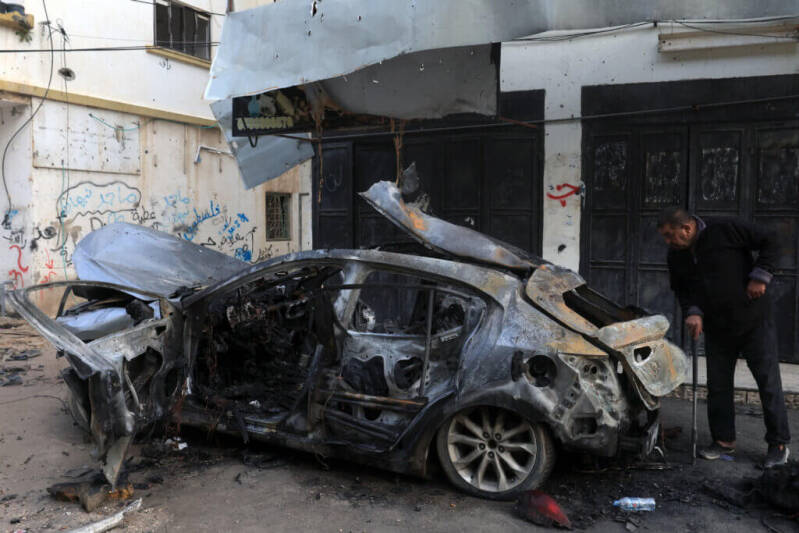
The Israeli army is now killing resistance fighters in the Jenin Brigade using drones after several failed assassination attempts by Israeli special forces on the ground, an associate of the Jenin Brigade told Mondoweiss.
Israeli lies about a ‘land bridge’ to the Gulf show the Yemeni blockade is working
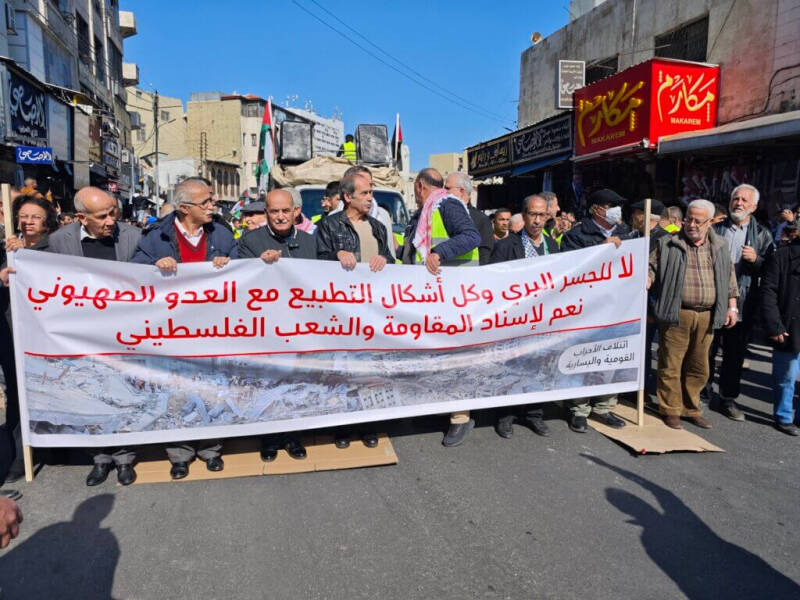
Israel says it is circumventing Yemen’s Red Sea blockade with a “land bridge” connecting it to Saudi Arabia and the UAE via Jordan. This is simply a charade to hide that Yemen’s blockade is working.


22 februari 2024
Earlier this week, the United States used its veto at the United Nations for the third time in 137 days to block the adoption of a ceasefire resolution in the Security Council.
Tell those still working for the Biden administration to take a stand against genocide by resigning immediately: Quit Genocide Now!
Earlier this month we launched a campaign to demand Biden administration staff resign in protest of the President's active role in the genocide in Gaza.
Collectively, we’ve sent almost three million emails to senior administration officials urging them to resign in protest of Biden’s active role in supporting Israel’s genocide.
We know that because of your emails, the administration has dispatched senior officials to meet with our communities.
However, despite our persistent calls for a permanent ceasefire and an end to US military funding to Israel, our demands have not been met. Therefore, our call for resignation in protest of genocide remains unchanged.
This week we are focused on three Arab-American officials in the administration: Hady Amr, United States Special Representative for Palestinian Affairs at the U.S. Department of State Bureau of Near Eastern Affairs; Brenda F. Abdelall, Assistant Secretary of Partnership and Engagement at the U.S. Department of Homeland Security; and Fayrouz Saad, Director of Public Engagement at the Department of Commerce.
As Biden promises to send even more weapons to Israel to continue genocide, there is no more room for staff in any government agency to separate themselves from his policies. His legacy is genocide, and their legacy is becoming that as well.
It is especially disheartening to have prominent Arab-American staff members continue to endorse genocide by maintaining their positions. For an administration that prides itself on diversity, Biden and his senior staff have demonstrated disregard for the concerns of Palestinians and other Arab Americans, and regularly dismissed their voices. Continuing to serve under such leadership is tantamount to endorsing genocide.
The only appropriate course of action now is for these individuals to resign publicly and send a clear message that the administration must be held accountable for its actions.


22 februari 2024
Hostilities in the Gaza Strip and Israel
Flash Update #124

Medical evacuation from Nasser hospital, 18 February. Since 18 February, 46 patients have been evacuated from the hospital. Still remaining there are 325 people, including some 140 sick and injured patients, their families, and healthcare workers. Photo by WHO
Key points
- Intense Israeli bombardment from air, land and sea continues to be reported across much of the Gaza Strip, resulting in further civilian casualties, displacement, and destruction of civilian infrastructure. Ground operations and heavy fighting between Israeli forces and Palestinian armed groups also continue to be reported, particularly in Gaza city, Deir al Balah and Khan Younis.
- Between the afternoon of 21 February and 10:30 on 22 February, according to the Ministry of Health (MoH) in Gaza, 97 Palestinians were killed, and 132 Palestinians were injured. Between 7 October 2023 and 10:30 on 22 February 2024, at least 29,410 Palestinians were killed in Gaza and 69,465 Palestinians were injured, according to MoH in Gaza.
- Between the afternoons of 21 and 22 February, no Israeli soldiers were reported killed in Gaza. As of 22 February, 235 soldiers have been killed and 1,396 soldiers injured in Gaza since the beginning of the ground operation, according to the Israeli military. In addition, over 1,200 Israelis and foreign nationals have been killed in Israel, according to the Israeli authorities, the vast majority on 7 October. As of 22 February, the Israeli authorities estimate that some 134 Israelis and foreign nationals remain captive in Gaza and include fatalities whose bodies are being withheld.
- A new report by the London School of Hygiene and Tropical Medicine and the Johns Hopkins Center for Humanitarian Health estimates the potential public health impact of the current conflict in the Gaza Strip, focusing on the deaths in excess of what would have been expected in the absence of hostilities. The report, which draws on a range of publicly available data, expert consultations, and peer-reviewed research, provides a range of projections of what could happen under three distinct scenarios and covers a six-month period from 7 February to 6 August 2024. The projections are designed to help humanitarian organizations, governments, and other actors plan their response to the crisis and take sound, evidence-based decisions. Under an immediate permanent ceasefire scenario, 6,550 excess deaths are projected, mainly due to the time needed to improve water, sanitation and shelter conditions, reduce malnutrition, and restore functioning healthcare services. Under the ‘current status quo’ and ‘escalation of the conflict’ scenarios, the projections rise sharply to 58,260 and 74,290 excess deaths, with traumatic injuries followed by infectious diseases being the main causes of additional fatalities in both cases. These figures are based on the absence of epidemics; should outbreaks of infectious disease such as cholera occur, the projections rise significantly to 11,580, 66,720 and 85,750 excess deaths, respectively. The report underscores the lasting impact of the conflict on the civilian population and emphasizes the urgent need for improved sanitation, nutrition, and healthcare services in Gaza.
- Humanitarian operations continue to face immense challenges, with aid workers themselves killed, displaced, or facing mounting movement restrictions and a breakdown of civil order. On 21 February, Principals of the Inter-Agency Standing Committee (IASC) emphasized that the humanitarian response “is already on its knees,” warning that “no amount of humanitarian response will make up for the months of deprivation that families in Gaza have endured.” The Principals put forth ten requirements to avoid an even worse catastrophe. These requirements include, among others, an immediate ceasefire, reliable entry points to bring in relief supplies to distribute throughout Gaza, security assurances, a reliable humanitarian notification system, and a stable communication network. The Principals also called on Israel to fulfil its legal obligation to provide food and medical supplies as well as facilitate aid operations.
- On 21 February, Médecins Sans Frontières (MSF) General Director Meinie Nicolai condemned the strike on a house in Al Mawasi area in Khan Younis, where 64 people including MSF staff and their families were sheltering: “The amount of force being used in densely populated urban environments is staggering, and targeting a building knowing it is full of humanitarian workers and their families is unconscionable.” The attack resulted in the killing of two family members of MSF staff and the injury of six others. According to MSF, the site’s location had been notified to Israeli forces, an MSF flag was hung on the building, and no evacuation orders were issued before the strike. In response to the incident, the UN Under-Secretary-General for Humanitarian Affairs and Emergency Relief Coordinator, Martin Griffiths, stated: “Humanitarians are putting their lives on the line. Like all civilians, they must be protected.”
- The provision of lifesaving services across Gaza is taking place amid intense hostilities, limitations on the entry and delivery of aid, and growing insecurity. On 20 February, the Palestine Red Crescent Society (PRCS) reported receiving a delivery of 7,500 litres of fuel, in coordination with OCHA, to operate the generator at Al Amal Hospital, but the hospital still urgently requires food and medical supplies as well as additional fuel. Moreover, since 18 February, PCRS, OCHA and the World Health Organization (WHO) have coordinated the medical evacuation of 46 patients from Nasser hospital in Khan Younis, where 325 people, including some 140 sick and injured patients, their families, and healthcare workers, still remain. As of 22 February, Nasser hospital is struggling to operate, however minimally, with no electricity, running water, sufficient food supplies, or drinking water as well as a heavy Israeli military presence inside the hospital and heavy fighting in its vicinity. At least 12 patients still require medical evacuation and there are ongoing attempts to restore electricity. According to WHO, as of 22 February, there are 12 partially functional hospitals in the Gaza Strip, including six in northern Gaza and six in the south, in addition to three partly functional field hospitals.
- Between 1 and 15 February, only two out of 21 planned fuel missions by humanitarian partners to the north of Wadi Gaza were facilitated by the Israeli authorities, allowing the delivery of 38,400 litres of fuel. During this period, all 16 planned fuel or assessment missions to water and wastewater pumping stations in the north were denied access. In contrast, 25 out of 42 fuel missions to areas to the south of Wadi Gaza that require prior coordination were facilitated by the Israeli authorities, resulting in the delivery of 457,000 litres of fuel.
- Warning that the Gaza Strip is on the brink of a public health catastrophe, the Water, Sanitation and Hygiene (WASH) and the Health Clusters emphasize that there is a crucial need for adequate WASH infrastructiure to respond to the scale of the crisis. According to the WASH and Health Clusters, the majority of people in Gaza have no access to clean drinking water and water and sanitation infrastructure lacks the fuel necessary for its effective operation. Only one in three water pipelines from Israel remains operational, but only at 47 per cent of its full capacity. Additionally, two of the three main water desalination plants are only partially functional and wastewater treatment systems are all not operational. On 19 February, the Gaza Municipality reported widespread destruction of sewage facilities in the city, including severe damage to pump stations, drainage lines and power generators, which has led to the outflow of large amounts of untreated sewage.
- The following are among the deadliest incidents reported on 20 and 21 February, mainly in Deir al Balah:
- On 20 February, at about 14:00, 12 Palestinians were reportedly killed, and at least five others injured, when a residential square in western An Nuseirat, in Deir al Balah, was struck.
- On 20 February, at about 21:00, one Palestinian body was reportedly recovered from under the rubble of a residential building in Az Zawayda, in Deir al Balah, that was struck on 18 February, bringing the total number of fatalities from the incident to 33.
- On 20 February, at about 21:00, at least 25 Palestinians were reportedly killed, and tens of others injured, when a residential building in Deir al Balah was struck.
- On 20 February, at about 22:00, eight Palestinians were reportedly killed, including the Dean of the Faculty of Nursing at the Islamic University of Gaza, along with seven members of his family, when several residential buildings in eastern Rafah were struck.
- On 21 February, at about 7:00, nine Palestinians, including three children (siblings), were reportedly killed during an incursion in the vicinity of Khan Younis port.
- On 21 February, at about 9:00, six Palestinians were reportedly killed, when a civilian vehicle in Deir al Balah was struck.
West Bank Updates
- On 21 February, Israeli forces shot and killed a 15-year-old boy by live ammunition in clashes between Palestinian stone throwers and the Israeli army during a raid in Azzun village in Qalqiliya. Medical sources reported that the ambulance was allowed by Israeli forces to evacuate the boy after around 20 minutes of his injury.
- Initial information indicates that on the morning of 22 February, three Palestinian men from Bethlehem perpetrated a shooting attack near Az Za’ayyem checkpoint that controls access to East Jerusalem from the east. As a result, one Israeli settler and two of the three Palestinian men were killed and six Israelis were injured, one of whom is in critical condition. According to Israeli military sources, three Palestinians stopped their vehicle at a junction close to Ma’ale Adumim settlement during a traffic jam and opened fire at Israeli vehicles. Following the incident, Israeli forces closed all checkpoints leading to Jerusalem.
- Since 7 October 2023, a total of 397 Palestinians have been killed, including 101 children, and 4,530 Palestinians have been injured, including 702 children, in conflict-related incidents across the West Bank, including East Jerusalem, and Israel. During the same period, 13 Israelis, including four members of Israeli forces, were killed and 86 injured in conflict-related incidents in the West Bank, including East Jerusalem, and Israel.
- On 20 February, OCHA issued a report analysing the impact of the 2023 olive harvest in the West Bank, which took place between September and November 2023. This coincided with the 7 October attack in Israel and the military offensive in Gaza, after which restrictions on movement within the West Bank were intensified and incidents of settler violence against Palestinians significantly increased. It is estimated that at least 96,000 dunums of olive-cultivated land across the West Bank remained unharvested in the 2023 season, primarily in areas in the ‘Seam Zone’ area behind the Barrier, and in the vicinity of Israeli settlements, where long-term restrictions on Palestinian access apply. The agricultural gates along the Barrier remained closed, except for the period between 24 and 30 November when a humanitarian pause was implemented in Gaza. The prior ‘coordination system’ required by Palestinians to access their land in, and in the vicinity of settlements, was cancelled for the duration of the harvest. According to the Food Security Sector, the financial cost of olive oil production losses to the Palestinian economy is estimated at US$10 million. During September-November 2023, OCHA documented 113 harvest-related cases where Israeli settlers attacked Palestinians, damaged over 2,000 trees or stole crops and harvesting equipment. Farmers are concerned that the current restrictions may impede essential upcoming agricultural activities such as ploughing, pruning and weeding.
- Since 7 October 2023, 551 people, including 264 children, have been displaced in Area C, and East Jerusalem, after their homes were demolished due to the lack of Israeli-issued building permits, which are almost impossible to obtain.
- On 18 February, the Israeli authorities punitively sealed off an apartment in a 13-storey building in Shu’fat refugee camp in East Jerusalem, displacing five people, including four children. The house belonged to the family of the Palestinian who was shot and killed while carrying out a shooting attack in Kiryat Malachi in Israel on 16 February, killing two Israelis. Since 7 October 2023 and as of 18 February, Israeli forces punitively demolished or sealed off 24 Palestinian-owned homes, displacing 117 Palestinians, including 51 children.
- Since 7 October 2023, 830 Palestinians, including 337 children, have been displaced, following the destruction of 131 homes during operations carried out by Israeli forces across the West Bank. About 95 per cent of the displacement was reported in the refugee camps of Jenin, Nur Shams and Tulkarm.
- In two separate incidents on 20 February, in Asira al Qibliya village in Nablus, Israeli settlers reportedly from Yitzhar settlement threw a sound grenade at an electricity pole, causing electricity outages in the village for half-an-hour, and opened fire at a Palestinian vehicle when the driver tried to avoid a flying checkpoint they had erected along with the guards of the settlement. Settlers from Yitzhar settlement also raided the village on 21 February and threw stones and incendiary materials in the yard of two houses. As a result, a man was hurt in the leg while the yard of one of the houses and two vehicles parked outside the houses sustained damage. Since 7 October 2023 and as of 21 February, OCHA has recorded 577 Israeli settler attacks against Palestinians that resulted in Palestinian casualties (51 incidents), damage to Palestinian-owned property (463 incidents), or both casualties and damage to property (63 incidents).
Funding
- The Flash Appeal for the occupied Palestinian territory (oPt), which requests US$1.2 billion to meet critical needs of 2.7 million people across the oPt (2.2 million in the Gaza Strip and 500,000 in the West Bank, including East Jerusalem), was extended through the end of March 2024. As of 19 February, member states disbursed nearly $901 million against the updated Flash Appeal (73 per cent); this includes $612 million out of $629 million (97 per cent) requested for October-December 2023 and $289 million out of $600 million (48 per cent) requested for January-March 2024. For funding analysis, please see the Flash Appeal Financial Tracking dashboard.
- The occupied Palestinian territory Humanitarian Fund (oPt HF) and the Central Emergency Relief Fund (CERF) are currently funding more than 94 ongoing projects in the Gaza Strip to meet urgent humanitarian needs, notwithstanding constraints on the entry and delivery of aid into and within the Gaza Strip. These interventions, totalling about $88 million, address needs in the areas of food security, shelter, water, sanitation and hygiene (WASH), health and protection. Since October 7, the oPt HF has received a total of $88 million in contributions from member states and private donors. Private donations are collected directly through the Humanitarian Fund.

HUMANITARIAN NEEDS AND RESPONSE UPDATES | 13–19 February
Health
Needs
- There is a growing need for: primary health services in informal shelters; increasing routine immunization coverage and conducting catch-up campaigns; reducing overcrowding in maternity hospitals; anaesthetic and analgesic medications which are in short supply;
- There is an urgent need for medication for non-communicable diseases and psychotropics; laboratory equipment and reagents to support diagnostics; and blood and blood products to ensure patients receive timely and necessary transfusions.
- The continued siege on some hospitals is greatly affecting case management capacity of hospitals leading to overcrowding of the ones that are still accessible.
- There is a need to strengthen referral mechanisms between hospitals.
Response:
- On average, partners are reaching about 450,000 people in need of various health services per week.
- Ongoing disease surveillance at all health facilities to ensure early diagnosis and treatment of cases as well as early detection of any potential outbreak.
- Plans to open stabilization centres for acute malnutrition cases with medical complications are underway.
- On average, partners provided nearly 300,000 primary health care consultations per week.
Challenges and Gaps
- Increased insecurity in Rafah is greatly affecting response activities. The influx of IDPs migrating to Rafah has overwhelmed available bed capacities at hospitals.
- High insecurity and limited access to health facilities in the northern and middle governorates continue to present major challenges to partners’ response activities.
- Persistent siege of hospitals impedes access and the implementation of response activities.
- The waiting list for patient referrals outside of Gaza continues to grow.
- Partner operations continue to be negatively affected by the displacement of staff, social stresses and telecommunication challenges.
- Limited access to proper WASH facilities is hindering prevention.
Nutrition
Needs
- Ongoing collaboration with partners is still needed to enhance capacity in Mid-Upper Arm Circumference (MUAC) screening, identify cases of Severe Acute Malnutrition (SAM) and Moderate Acute Malnutrition (MAM), and the delivery of effective treatment.
- The Gaza nutrition vulnerability situation analysis results have been published on the Global Nutrition Cluster (GNC) website and shared across GNC's social media platforms. This assessment was carried out by the NIS-E Task Force under the leadership of GNC and co-chaired by WFP and UNICEF. The findings show:
- Over 90 per cent of children aged 6-23 months and pregnant and breastfeeding women (PBWs) face severe food poverty (consuming two or fewer food groups each day).
- Some 90 per cent of children under 5 are affected by one or more infectious diseases.
- Some 81 per cent of households lack safe and clean water with average household access estimated at less than one litre per person per day.
- One in six (15 per cent) children aged 6-23 in north Gaza are acutely malnourished.
- In Rafah, five per cent of children aged 6-23 are acutely malnourished; this lower rate is mainly due to the limited humanitarian assistance provided, demonstrating that humanitarian assistance can mitigate the worst outcomes.
Response
- Thirty-six staff members (17 Female, 19 male) received training on MUAC screening to enhance early case identification and treatment. The training is crucial for enhancing the capacity of our partners and expanding MUAC screening across affected areas.
- Five implementing partners continue conducting screenings for malnutrition among children aged 6 to 59 months, using MUAC measurements in shelters and health facilities. Children who are detected with MAM and SAM are referred for treatment using simplified treatment protocol. Cumulative MUAC assessment data are as follows:
- Total Children Screened (Cumulative): 7,479
- Average number of children Screened per week: 1,247
- Total SAM children identified: 83
- Total MAM Children Identified: 378
Challenges and Gaps
- Ongoing hostilities in Gaza have caused significant food shortages, poor access to clean water and sanitation facilities, and disruptions to healthcare services. This situation is putting children under five and pregnant or lactating women (PLW) at a relatively higher risk of malnutrition.
- Without private areas for breastfeeding women, it is challenging to encourage and sustain breastfeeding practices. This lack of privacy could have lasting negative effects, particularly on children under two years of age and new-born babies.
Food Security
Needs
- The humanitarian situation in North Gaza and Gaza governorates is extremely critical. The food security situation in Deir al Balah and the southern governorates is particularly acute, with the majority of the population in extreme hunger. In Rafah, the situation is becoming increasingly concerning. People in Rafah are reported to be stopping aid trucks to take food, highlighting the severity of their desperation and hunger.
- There is an urgent need to augment the fleet of delivery trucks to ensure the entire population's nutritional requirements are met and to improve healthcare services, including primary health services, routine immunization coverage, and the provision of medication for non-communicable diseases.
- Gaza's food production sector is severely impacted, eliminating the local production of essential fresh foods like eggs, vegetables, and milk. There is a critical need to restart the import of these vital inputs to revive local production and ensure the availability of balanced nutrition, especially for children and the broader population. Without this, achieving dietary balance remains an unattainable goal.
- Vulnerable segments of the population, including children, the elderly, and individuals with underlying health conditions, are particularly susceptible to the risk of malnutrition. Partners are working to ensure that aid reaches these vulnerable groups.
- Establishing secure and uninterrupted humanitarian corridors in Gaza, with the support of the private sector and a focus on critical resources like fuel and cooking gas, is essential to address the immediate needs of the affected population and support the overall humanitarian response.
Response
- Between 12 and 18 February, a total of 15 partners engaged in providing food assistance across the Gaza Strip. Around 1.7 million people were reached, with Rafah Governorate receiving about 32 per cent of the total food assistance, followed by Deir al Balah (28 per cent), Khan Younis (26 per cent), and northern Gaza Strip (14 per cent).
Challenges and Gaps
- Ongoing airstrikes and heavy fighting in Gaza continue to affect the flow of food supply, posing challenges for the conduct of safe and efficient humanitarian operations. Frequent border closures, restrictions, and security concerns hinder the ability to ensure a consistent and dependable food supply.
- The escalation of hostilities has substantially damaged critical infrastructure, including roads, electricity, and water supply systems, exacerbating severe impediments to the efficient distribution of food.
Shelter and Non-Food Items (NFI)
Needs
- Some 1.7 million people need shelter and NFI assistance across the Gaza Strip.
- Urgent needs are tents, sealing-off kits (SOKs) and NFIs, including bedding, kitchen sets, and winter clothing. SOKs can be used to consolidate makeshift shelters or to protect damaged housing to facilitate return where possible.
- Partners estimate that the amount of debris generated by the destruction of residential housing residential housing units will exceed 12,000 metric tons and will take over four years to remove, given Gaza’s current capabilities.
Response
- Since the start of hostilities, cluster partners reached about 900,000 people with partial shelter and NFI assistance. Partial assistance means that although a household has received some shelter and NFI items, not all their needs have been met.
- During the reporting period, cluster partners distributed 7,900 bedding items, 1,600 SOKs and 340 clothing kits to IDPs sheltering outside of UN shelters in Rafah.
- Some 28,000 tents, 7,600 SOKs, and 35,000 NFI kits are currently in the pipeline.
- At present, there are 26 cluster partners operating in Gaza. Most of the assistance is currently provided in-kind; cash will be pursued further when market conditions allow.
- Further details in the Cluster response strategy and website dashboard.
Challenges and Gaps:
- Slow entry of items into Gaza due to limited aid trucks and complicated bureaucratic and procurement processes.
- Rising prices of shelter materials in neighbouring markets, including high freight rates and shipping costs.
- Need to restore commercial imports and re-establish local markets to relieve pressure on in-kind provision.
- Restrictions on or denial of the entry of key shelter items including timber, hand tools, and cooking stoves.
- Lack of security and access to IDP locations, lack of fuel, and rising social tensions because of the limited quantity of aid available in comparison to outstanding needs.
- Unplanned sites and lack of adequate equipment is leading to water damage to makeshift shelters and tents, and recurrent displacement resulting in the need for re-distribution of assistance.
- Urgent funding is needed to address the key gaps in the supply of shelter and NFIs. As of 19 February, only 28 per cent of the Shelter Cluster funding requirement ($209.2M) has been funded.

Protection
Needs
- Main needs include identification, tracing and reunification, and interim and alternative care arrangements of unaccompanied, previously detained and separated children.
- There is an urgent need to provide Mental Health and Psychological Support (MHPSS), including psychological first aid (PFA); winterization materials, including warm clothing and blanket, for children and new-born babies.
- There is urgent need to provide essential supplies, including menstrual management (MHM) kits and hygiene kits for women and girls.
Response
- In January, Child Protection Area of Responsibility (AoR) partners reached 111,202 boys and girls, and 2,633 women and men through awareness raising interventions; MHPSS for children and caregivers; identification and registration of Unaccompanied and Separated Children (USAC); and distribution of clothing kits.
- Partners distributed essential supplies, including Menstrual Hygiene Management (MHM) kits and hygiene kits for women and girls. A total of 3,500 Dignity Kits and 8,926 MHM kits have been distributed by Gender-Based Violence (GBV) Sub-Cluster partners.
- GBV responders are conducting procurement and distribution of Clinical Management of Rape (CMR) kits, and identification of health service points to provide CMR. Partners are also trying to establish emergency safe spaces, to provide PFA and recreational activities for vulnerable women and girls. Partners continue to expand PFA services for vulnerable groups, including GBV survivors, through frontline responders.
Challenges and Gaps:
- The increased hostilities in Rafah governorate pose a significant threat for partners providing lifesaving protection services in the governorate. There is a lack of available space to provide group-based psychosocial support activities, due to the population density.
- Limited access to other governorates prevents thousands of affected people from being reached with critical protection services.
Education
Needs
- More than 625,000 students and nearly 23,000 teachers in the Gaza Strip have been affected by school closures and attacks on education, leaving them with no access to education or safe places.
- According to the Ministry of Education, as of 13 February, more than 5,055 students and 246 educational staff have been killed and more than 8,497 students and 836 teachers have been injured in Gaza since 7 October.
- Some 92 per cent of all school buildings in Gaza are being used as shelters for IDPs and/or have sustained varying levels of damage. Some 394 schools (79.5 per cent of the total school buildings in Gaza) have sustained damage, including 142 schools that sustained major damage or were destroyed. Combined, these schools previously served some 459,231 children and more than 17,110 teachers. The North, Gaza, and Khan Younis governorates have been especially impacted, accounting for 76 per cent of all damaged schools (source: Education Cluster Damaged School Dashboard.)
- The Education Cluster conducted a Satellite-derived Damage Assessment of all Gaza schools to verify damage to schools based on proximity to damaged sites. Key findings include:
- Satellite-derived Damage verification exercise confirmed the large level of damage to schools previously reported by the cluster in Gaza.
- Actual damages to school infrastructure might be 15 to 20 per cent higher than what has been previously reported by the Education Cluster.
- At least 55 per cent of schools in Gaza will either need full reconstruction or major rehabilitation work to be functional again.
- One quarter of directly hit and damaged schools are UNRWA-run schools.
- Forty-five per cent of school buildings that have been used by IDPs as shelters, have been either directly hit or damaged.
- The satellite-derived images provide evidence for the military use of schools.
- Education partners are concerned about reports, videos and pictures depicting schools being used for military operations by Israeli forces, including their use as detention and interrogation centres, or as military bases.
- Key priorities include the provision of Education in Emergencies (EiE) recreational activities and psychological support, including Social Emotional Learning (SEL) activities to children in shelters and designated emergency shelters (DESs); establishing Temporary Learning Spaces (TLS) in shelters/DESs to start non-formal learning for children; and provision of emergency supplies and learning kits. In addition, a key need is to identify and support of children with disabilities and other needs, with assistive devices for learning.
Response
- Since October 2023, eleven partners have reached more than 160,975 students and teachers with psychosocial support, emergency learning, recreational supplies and activities, and awareness sessions in the Deir al Balah, Khan Younis, and Rafah governorates. Most of the cluster responses are delivered by local partners (source: Education Cluster 5W dashboard).
Challenges and Gaps:
- No activities have been undertaken in the North Gaza and Gaza governorates due to ongoing hostilities and access challenges.
- As of 18 February, the education response remains significantly underfunded, receiving less than 10 per cent of its requirements. Urgent funding is required to meet immediate response requirements.
Logistics
Response:
- As of 18 February 2024, the Logistics Cluster has stored 7,256 cubic metres of cargo on behalf of 17 organisations, and supported 21 organisations with cargo notification service in Rafah.
- Of relief items transported through the Jordanian corridor, the Logistics Cluster facilitated partners` access to the inter-agency convoy, transporting a total of 6,159 metric tons of relief items on 463 WFP trucks on behalf of six partners.
- The Logistics Cluster has circulated the Compiled Logistics Supplier List through the mailing list. The aggregated list comes from partners to partners and is intended to ease access to and exchange of information; it is the list is based on partners' vendors’/suppliers’ contributions. The list will be circulated on a regular basis.
- Challenges and Gaps:
- The storage and transport capacity inside Gaza remains limited. The Logistics Cluster continues to facilitate access to temporary storage, transport from handover points to common warehouses, and cargo notification trans-shipment services.
- The Logistics Cluster is coordinating the pipeline for incoming cargo through the Egyptian and Jordanian corridors for the coming three months. This is a vital exercise for operational planning, in terms of understanding the resources available and making allocations based on the prioritization list. Partners have received a dedicated form and are requested to update it weekly. Partners who have not received the form can reach out to palestine.logcluster@wfp.org.
Emergency Telecommunications
Needs:
- There is an urgent need for independent communications platforms for responders in Gaza to coordinate the delivery of relief items amid the ongoing telecoms blackouts and unreliable/intermittent access to telecommunication services.
Response:
- On 12 February, the UN Humanitarian Coordinator received approval from the Israeli authorities to import 30 digital Very High Frequency (VHF) handheld radios for the use of UN agencies in Gaza, and solar solutions to power radio repeaters. Since its establishment on 3 November 2023, the ETC has been engaging with the Israeli authorities to obtain authorizations to import all essential telecommunications equipment into Gaza and provide independent access to communications for humanitarian responders.
- Since 9 January, the ETC has supported humanitarian agencies with Information and Communication Technology (ICT) assessments, technical advice and information, repairs, and guidance on the use of ICT equipment in Gaza. To date, the ETC has conducted eight ICT assessments across four locations in Rafah and supported 14 humanitarian agencies with ICT repairs, technical advice, and guidance on the use of ICT equipment, in order to maximize the available telecommunications resources on the ground.
Challenges and Gaps:
- Limited access to electricity, fuel, and telecommunications services continues to hamper the humanitarian response in Gaza.
- The import of telecommunications equipment into Gaza is fraught, lengthy, and extremely challenging.
Multi-Purpose Cash Assistance (MPCA)
Response:
- Since the start of hostilities, one round of emergency MPCA was delivered to some 130,000 households, a top-up was delivered to 35,000 people (including people with disabilities and nursing mothers), and over 21,000 households have received a second round.
- Around 93,000 households have cashed out their assistance since 7 October. Around 5,400 payments have been cancelled after not being cashed out for months, despite multiple follow ups. Cash out operations are currently almost exclusively in the southern governorates.
- The assistance provided falls well short of need under the recurrent in-extremis circumstances, particularly given market collapse and price volatility. The last post-distribution monitoring data (PDMD) showed a significant decrease in the number of people who reported being able to meet all their needs, with the received assistance, combined with a major decrease in the number of people who reported not being able to cover any need. Overall, some 70 per cent of respondents reported that the assistance helped them access needed basic goods and services.
- Based on the last PDMD collected between mid-January and mid-February, food remains the most purchased item with humanitarian cash (80 per cent), followed by medicines (39 per cent), water (23 per cent), hygiene bedding (10 per cent), and transportation.
Challenges and Gaps:
- Poor electricity supply and connectivity is affecting the ability of financial service providers to make cash accessible, compromising the encashment of the MPCA package.
- Since late December, commercial trucks have sporadically entered Gaza, with 770 trucks recorded up to date. Truck vendors sell goods on the streets and in informal markets, complicating efforts to track distributions and gather market data. Informal markets are the primary source of accessible goods. Currently, there is limited market data available on informal markets/street vendors due to challenges with collecting data about informal market transactions.
IASC Protection from Sexual and Exploitation Abuse (PSEA) Network
Needs:
- There is a need to mainstream PSEA messages & safeguarding practices across the Gaza Strip and West Bank, including East Jerusalem.
- There is a pressing need to prioritize protection interventions at large. Safeguarding and SEA risk have become prominent in a context of severe aid dependency. The lack of safe aid delivery increases vulnerability and leads to exploitation and abuse.
- Provide safe and accessible reporting channels, that lead to assistance and investigations of PSEA allegations.
- Ensure that services are available for people at risk of sexual exploitation and abuse (SEA).
Response:
- Since October 2023, more than 1,500 cases have been referred by the SAWA Foundation specialized counsellors, including eight per cent from the West Bank.
- Due to the communication cuts in Gaza, a range of public communication materials were produced and distributed.
- The PSEA Network has made available MHPSS support and remote counselling sessions for PSEA focal points on the ground in Gaza, who are documenting the impact and the emerging needs by collecting complaints and feedback.
Challenges:
- Identifying cases and reaching vulnerable individuals pose significant challenges, particularly due to internet and telecommunication blackouts. Electricity and communication cuts make it challenging to establish contact with on-the-ground PSEA focal points.


22 februari 2024
Today's headlines
As Palestinians in north Gaza starve, Israel attacks MSF building in Rafah

The situation in Gaza grows worse by the day as Palestinians are starved and Israeli forces turn hospitals into morgues. In the occupied West Bank and East Jerusalem, tensions rise as Ramadan approaches.
How Haaretz has aided Israel’s genocide in Gaza
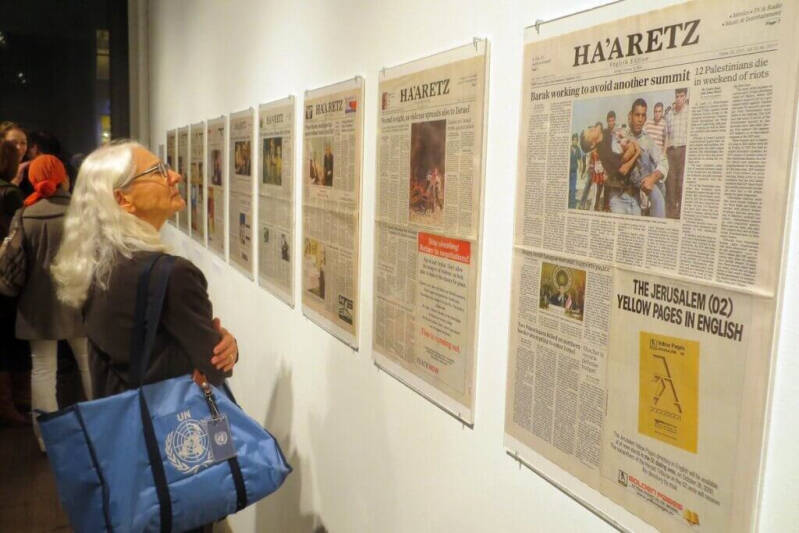
Haaretz is widely considered Israel's leading liberal news source, but it has published and promoted some of the most harmful propaganda in support of Israel’s genocide in Gaza.
The reasons for Canada’s ‘unwavering’ support for Israel
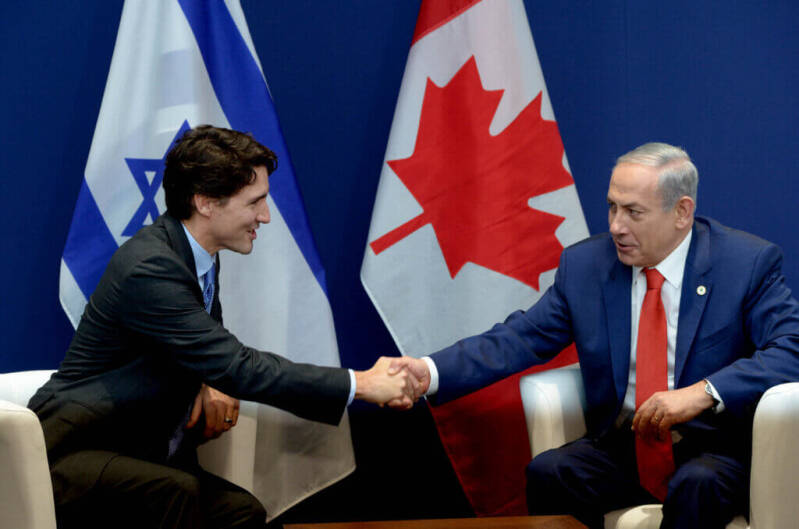
Canada’s remarkable fidelity to an apartheid state committing genocide is driven by imperial geopolitics, settler solidarity, Christian Zionism and the Israel lobby in Canada, and the weaponization of antisemitism.
The context for October 7 is apartheid, not the Holocaust

The Israel lobby is attempting to indoctrinate Americans that the context for the October 7 attack is the Holocaust. This is a misrepresentation. The Palestinians had nothing to do with the Holocaust.


22 februari 2024
Genocide is a bad investment.

One of the largest pension funds in the world has divested entirely from Israel Bonds.
Israel’s economy is in trouble. That tells us we need to double down on demands to divest from Israel Bonds…
Read the full Wire on our website
'Let Gaza Live' at the NBA All-Star Game.
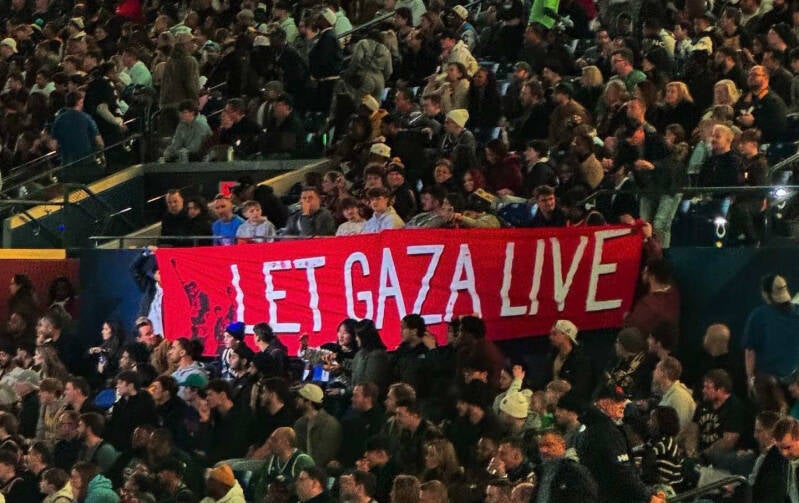
“Visibility like we saw on Saturday night means letting dissenters they are not alone; that they would have significant support if they raised their voices at this critical moment, and—as JVP always reminds us—that there is nothing antisemitic about trying to let Gaza live.” — Dave Zirin

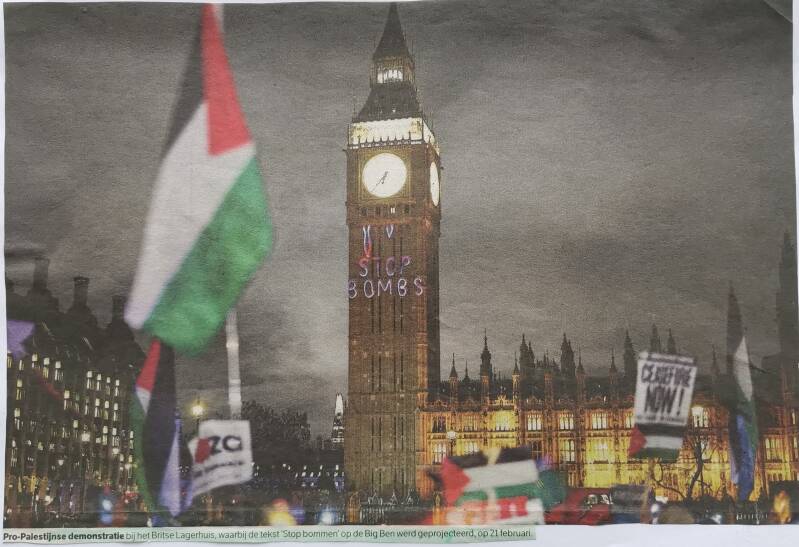
21 februari 2024


21 februari 2024
Hostilities in the Gaza Strip and Israel
Flash Update #123
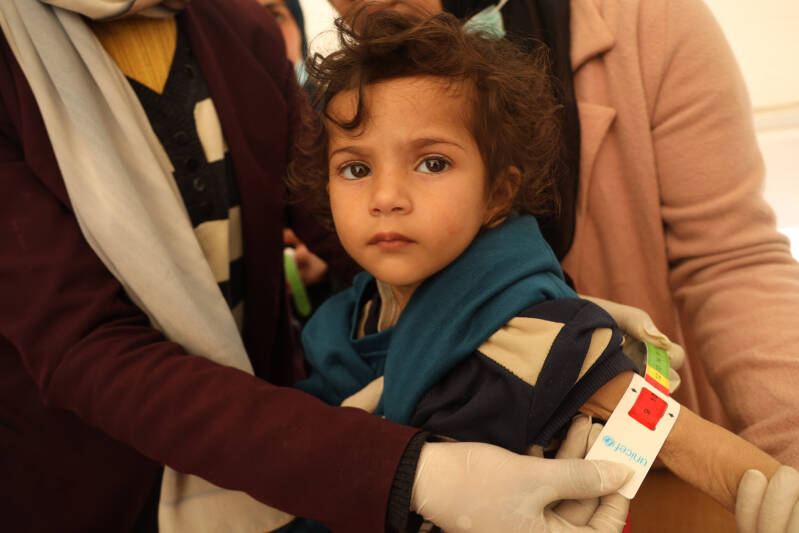
A two-year-old girl getting her middle-upper-arm-circumference (MUAC) measured. Her MUAC reads less than 10, indicating severe acute malnutrition, drastic weight loss, and muscle atrophy. Photo by UNICEF/ Eyad El Baba
Key points
- Intense Israeli bombardment from air, land and sea continues to be reported across much of the Gaza Strip, resulting in further civilian casualties, displacement, and destruction of civilian infrastructure. Ground operations and heavy fighting between Israeli forces and Palestinian armed groups also continue to be reported, particularly south of Gaza city and Al Mawasi area northwest of Khan Younis, where tens of thousands of internally displaced persons (IDPs) are currently located.
- Between the afternoons of 20 and 21 February, according to the Ministry of Health (MoH) in Gaza, 118 Palestinians were killed, and 163 Palestinians were injured. Between 7 October 2023 and noon on 21 February 2024, at least 29,313 Palestinians were killed in Gaza and 69,333 Palestinians were injured, according to MoH in Gaza. There are no figures available for the number of detainees from the Gaza Strip held by the Israeli military.
- Between the afternoons of 20 and 21 February, one Israeli soldier was reported killed in Gaza. As of 21 February, 235 soldiers have been killed and 1,395 soldiers injured in Gaza since the beginning of the ground operation, according to the Israeli military. In addition, over 1,200 Israelis and foreign nationals have been killed in Israel, according to the Israeli authorities, the vast majority on 7 October. As of 21 February, the Israeli authorities estimate that some 134 Israelis and foreign nationals remain captive in Gaza and include fatalities whose bodies are being withheld.
- Catastrophic levels of acute food insecurity are reportedly intensifying across Gaza, with growing reports of families struggling to feed their children and a rising risk of hunger-induced deaths in northern Gaza. The Global Nutrition Cluster is reporting a steep rise in malnutrition among children and pregnant and breastfeeding women in the Gaza Strip. The situation is especially serious in northern Gaza where 1 in 6 children under the age of two (15.6 per cent) who were screened at IDP shelters and health centres in January were found to be acutely malnourished, a decline in a population’s nutritional status that is unprecedented globally in three months. In comparison, 5 per cent of children under the age of two in Rafah were found to be acutely malnourished, evidence that access to humanitarian aid can help prevent the worst outcomes. In addition, 70 per cent of screened children had diarrhea in the preceding two weeks, a 23-fold increase compared with the 2022 baseline. “Hunger and disease are a deadly combination,” warned Dr Mike Ryan, Executive Director of the World Health Organization’s (WHO) Health Emergencies Programme. “Hungry, weakened and deeply traumatised children are more likely to get sick, and children who are sick, especially with diarrhea, cannot absorb nutrients well. It’s dangerous, and tragic, and happening before our eyes.” Earlier this month, Anera highlighted the “silent crisis” of hunger-induced deaths: “In the tragic circumstances of starvation in Gaza, there’s a compounding issue: many who perish from starvation-related symptoms aren’t accurately documented. Their deaths often get attributed to other physical causes, masking the true toll of starvation.”
- A public health catastrophe is unfolding in the Gaza Strip despite repeated warnings, and this requires urgent action, warned the water, sanitation and hygiene (WASH) and health clusters in the occupied Palestinian territory on 20 February. According to the same sources, the only currently operating water pipeline from Israel is operational at 47 per cent of its full capacity, the water desalination plant in northern Gaza ceased operations in October 2023, all wastewater treatment plants are no longer functional, and 83 per cent of groundwater wells are not operating. The dire water and sanitation conditions are also aggravating the state of health in Gaza, with more than 300,000 reported cases of acute respiratory infections and more than 200,000 reported cases of acute watery diarrhoea, of whom more than half are children under five, among other outbreaks. Accordingly, the WASH and health clusters emphasize that effective early detection of infectious diseases and prevention of avoidable deaths require inter alia a major scale-up in capacities, the removal of impediments to the entry and distribution of aid including fuel, as well as the free and safe movement of medical and humanitarian personnel into and within the Gaza Strip.
- Humanitarian operations continue to face immense challenges, with aid workers themselves killed. On 21 February, Medecins sans Frontieres (MSF) reported that a shelter hosting MSF staff and their families in Al Mawasi area west of Khan Younis was shelled. As a result, at least two MSF staff members were killed and six others were injured, including two children with burns, all evacuated by Palestine Red Crescent Society (PRCS) medical teams to the International Medical Corps field hospital in Rafah, in coordination with OCHA. Since 7 October, 160 UN staff have been killed in Gaza.
- Intense hostilities, limitations on the entry and delivery of aid, and growing insecurity continue to gravely hamper the provision of lifesaving services across Gaza. On 20 February, PRCS reported that Al Amal hospital in Khan Younis continues to be directly impacted by artillery shelling that led to major damage to its facilities and to casualties. The hospital already faces a lack of fuel reserves to generate electricity for high-risk patients and a near exhaustion of food supplies. On 20 February, PRCS ambulances evacuated 21 injured people from Nasser Hospital, also in Khan Younis, to two field Hospitals in Rafah, in collaboration with WHO and OCHA. The previous two days, the same partners had evacuated 32 patients in critical condition from Nasser Hospital to three other hospitals in Gaza following the siege and raid on the hospital complex by the Israeli military. According to MoH in Gaza, some 110 sick and injured patients, and an estimated 15 doctors and nurses, still remain in the hospital, which has no electricity or running water, has sewage water flooding some departments, medical waste accumulating, and the decomposing bodies of eight ICU patients who died for lack of oxygen. As of 21 February, there are 12 partially functional hospitals in the Gaza Strip, including six in northern Gaza and six in the south, in addition to three partly functional field hospitals, according to WHO. As of 18 February, according to UNRWA, only seven out of its 23 health centres are now operational.
- On 20 February, the UN World Food Programme (WFP) announced that it is pausing deliveries of food aid to northern Gaza, largely due to a breakdown in civil order combined with the absence of a functioning humanitarian notification system. On 21 February, WFP Chief Cindy McCain stated: “We’ve had to make the impossible choice to pause aid distributions in Northern Gaza. There’s an incredible level of desperation against the backdrop of immense humanitarian need. A famine doesn’t have to happen. But if things don’t change, it will.” Between 1 January and 15 February, less than 20 per cent of missions (15 out of 77) planned by humanitarian partners to deliver aid and undertake assessments in areas to the north of Wadi Gaza were facilitated by the Israeli authorities fully or partially and 51 per cent were denied (39 out of 77). Facilitated missions primarily involved food distribution, while the access of missions to support hospitals and facilities providing water, hygiene and sanitation (WASH) services was among those overwhelmingly denied.
- The following are among the deadliest incidents reported on 19 February:
- On 19 February, at about 13:00, five Palestinians were reportedly killed and others injured when a group of people was struck in western Khan Younis.
- On 19 February, at about 20:00, six Palestinians were killed and others injured when a house in Az Zaytoun neighborhood, in eastern Gaza city, was struck.
- On 19 February, at about 20:30, four Palestinians were killed and others injured when a residential square in western An Nuseirat, in Deir al Balah, was hit. Other bodies reportedly remain under the rubble.
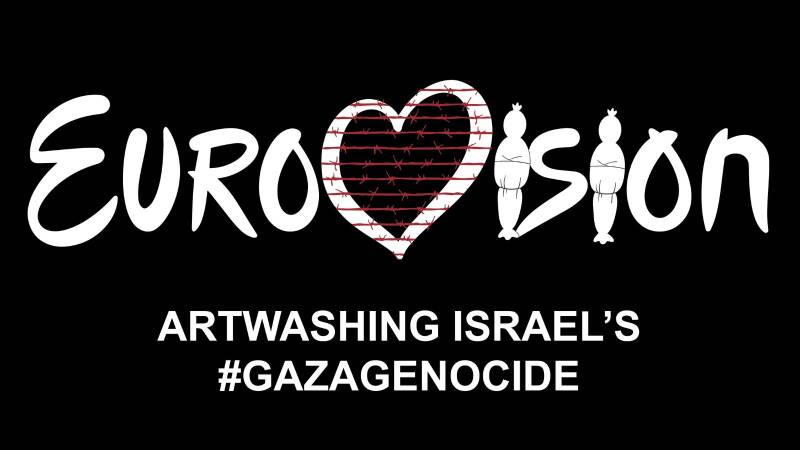
West Bank Updates
- On 20 February, an Israeli forces undercover unit shot and killed a Palestinian man after besieging a house in Jenin Refugee Camp; another Palestinian was injured. The unit was followed by Israeli forces and bulldozers. Clashes erupted between Palestinian armed groups and Israeli forces, with reports on an exchange of fire when the unit was discovered by Palestinians. Initial information indicates that multiple sections of roads in the camp were bulldozed, causing severe damage to infrastructure, and at least two houses sustained severe damage when they were hit by Israeli drones. The operation ended in the early morning hours of the next day.
- Since 7 October 2023 and as of 20 February, 394 Palestinians have been killed, including 100 children, and 4,528 Palestinians, including 702 children, have been injured in conflict-related incidents across the West Bank, including East Jerusalem, and Israel. During the same period, 12 Israelis, including four members of Israeli forces, were killed and 80 injured in conflict-related incidents in the West Bank, including East Jerusalem, and Israel.
- Since 7 October 2023 and as of 20 February, OCHA has recorded 573 Israeli settler attacks against Palestinians that resulted in Palestinian casualties (51 incidents), damage to Palestinian-owned property (459 incidents), or both casualties and damage to property (63 incidents).
- Demolition of five homes due to the lack of Israeli-issued permits on 19 and 20 February, resulted in displacement to 25 Palestinians, including eight children, in Al Walaja village (Bethlehem) and Ras al Amud area in East Jerusalem. Two of the houses were demolished by their owners to avoid paying fines imposed by the Israeli authorities. Since 7 October 2023 and as of 20 February, 551 people, including 264 children, have been displaced in Area C, and East Jerusalem, after their homes were demolished due to the lack of Israeli-issued building permits, which are almost impossible to obtain.
- Since 7 October 2023, 830 Palestinians, including 337 children, have been displaced, following the destruction of 131 homes during operations carried out by Israeli forces across the West Bank. About 95 per cent of the displacement was reported in the refugee camps of Jenin, Nur Shams and Tulkarm.
Funding
- The Flash Appeal for the occupied Palestinian territory (oPt), which requests US$1.2 billion to meet critical needs of 2.7 million people across the oPt (2.2 million in the Gaza Strip and 500,000 in the West Bank, including East Jerusalem), was extended through the end of March 2024. As of 19 February, member states disbursed nearly $901 million against the updated Flash Appeal (73 per cent); this includes $612 million out of $629 million (97 per cent) requested for October-December 2023 and $289 million out of $600 million (48 per cent) requested for January-March 2024. For funding analysis, please see the Flash Appeal Financial Tracking dashboard.
- The occupied Palestinian territory Humanitarian Fund (oPt HF) and the Central Emergency Relief Fund (CERF) are currently funding more than 94 ongoing projects in the Gaza Strip to meet urgent humanitarian needs, notwithstanding constraints on the entry and delivery of aid into and within the Gaza Strip. These interventions, totalling about $88 million, address needs in the areas of food security, shelter, water, sanitation and hygiene (WASH), health and protection. Since October 7, the oPt HF has received a total of $88 million in contributions from member states and private donors. Private donations are collected directly through the Humanitarian Fund.

HUMANITARIAN NEEDS AND RESPONSE UPDATES | 13–19 February
Health
Needs
- There is a growing need for: primary health services in informal shelters; increasing routine immunization coverage and conducting catch-up campaigns; reducing overcrowding in maternity hospitals; anaesthetic and analgesic medications which are in short supply;
- There is an urgent need for medication for non-communicable diseases and psychotropics; laboratory equipment and reagents to support diagnostics; and blood and blood products to ensure patients receive timely and necessary transfusions.
- The continued siege on some hospitals is greatly affecting case management capacity of hospitals leading to overcrowding of the ones that are still accessible.
- There is a need to strengthen referral mechanisms between hospitals.
Response
- On average, partners are reaching about 450,000 people in need of various health services per week.
- Ongoing disease surveillance at all health facilities to ensure early diagnosis and treatment of cases as well as early detection of any potential outbreak.
- Plans to open stabilization centres for acute malnutrition cases with medical complications are underway.
- On average, partners provided nearly 300,000 primary health care consultations per week.
Challenges and Gaps
- Increased insecurity in Rafah is greatly affecting response activities. The influx of IDPs migrating to Rafah has overwhelmed available bed capacities at hospitals.
- High insecurity and limited access to health facilities in the northern and middle governorates continue to present major challenges to partners’ response activities.
- Persistent siege of hospitals impedes access and the implementation of response activities.
- The waiting list for patient referrals outside of Gaza continues to grow.
- Partner operations continue to be negatively affected by the displacement of staff, social stresses and telecommunication challenges.
- Limited access to proper WASH facilities is hindering prevention.
Nutrition
Needs
- Ongoing collaboration with partners is still needed to enhance capacity in Mid-Upper Arm Circumference (MUAC) screening, identify cases of Severe Acute Malnutrition (SAM) and Moderate Acute Malnutrition (MAM), and the delivery of effective treatment.
- The Gaza nutrition vulnerability situation analysis results have been published on the Global Nutrition Cluster (GNC) website and shared across GNC's social media platforms. This assessment was carried out by the NIS-E Task Force under the leadership of GNC and co-chaired by WFP and UNICEF. The findings show:
- Over 90 per cent of children aged 6-23 months and pregnant and breastfeeding women (PBWs) face severe food poverty (consuming two or fewer food groups each day).
- Some 90 per cent of children under 5 are affected by one or more infectious diseases.
- Some 81 per cent of households lack safe and clean water with average household access estimated at less than one litre per person per day.
- One in six (15 per cent) children aged 6-23 in north Gaza are acutely malnourished.
- In Rafah, five per cent of children aged 6-23 are acutely malnourished; this lower rate is mainly due to the limited humanitarian assistance provided, demonstrating that humanitarian assistance can mitigate the worst outcomes.
Response
- Thirty-six staff members (17 Female, 19 male) received training on MUAC screening to enhance early case identification and treatment. The training is crucial for enhancing the capacity of our partners and expanding MUAC screening across affected areas.
- Five implementing partners continue conducting screenings for malnutrition among children aged 6 to 59 months, using MUAC measurements in shelters and health facilities. Children who are detected with MAM and SAM are referred for treatment using simplified treatment protocol. Cumulative MUAC assessment data are as follows:
- Total Children Screened (Cumulative): 7,479
- Average number of children Screened per week: 1,247
- Total SAM children identified: 83
- Total MAM Children Identified: 378
Challenges and Gaps
- Ongoing hostilities in Gaza have caused significant food shortages, poor access to clean water and sanitation facilities, and disruptions to healthcare services. This situation is putting children under five and pregnant or lactating women (PLW) at a relatively higher risk of malnutrition.
- Without private areas for breastfeeding women, it is challenging to encourage and sustain breastfeeding practices. This lack of privacy could have lasting negative effects, particularly on children under two years of age and new-born babies.
Food Security
Needs
- The humanitarian situation in North Gaza and Gaza governorates is extremely critical. The food security situation in Deir al Balah and the southern governorates is particularly acute, with the majority of the population in extreme hunger. In Rafah, the situation is becoming increasingly concerning. People in Rafah are reported to be stopping aid trucks to take food, highlighting the severity of their desperation and hunger.
- There is an urgent need to augment the fleet of delivery trucks to ensure the entire population's nutritional requirements are met and to improve healthcare services, including primary health services, routine immunization coverage, and the provision of medication for non-communicable diseases.
- Gaza's food production sector is severely impacted, eliminating the local production of essential fresh foods like eggs, vegetables, and milk. There is a critical need to restart the import of these vital inputs to revive local production and ensure the availability of balanced nutrition, especially for children and the broader population. Without this, achieving dietary balance remains an unattainable goal.
- Vulnerable segments of the population, including children, the elderly, and individuals with underlying health conditions, are particularly susceptible to the risk of malnutrition. Partners are working to ensure that aid reaches these vulnerable groups.
- Establishing secure and uninterrupted humanitarian corridors in Gaza, with the support of the private sector and a focus on critical resources like fuel and cooking gas, is essential to address the immediate needs of the affected population and support the overall humanitarian response.
Response
- Between 12 and 18 February, a total of 15 partners engaged in providing food assistance across the Gaza Strip. Around 1.7 million people were reached, with Rafah Governorate receiving about 32 per cent of the total food assistance, followed by Deir al Balah (28 per cent), Khan Younis (26 per cent), and northern Gaza Strip (14 per cent).
Challenges and Gaps
- Ongoing airstrikes and heavy fighting in Gaza continue to affect the flow of food supply, posing challenges for the conduct of safe and efficient humanitarian operations. Frequent border closures, restrictions, and security concerns hinder the ability to ensure a consistent and dependable food supply.
- The escalation of hostilities has substantially damaged critical infrastructure, including roads, electricity, and water supply systems, exacerbating severe impediments to the efficient distribution of food.
Shelter and Non-Food Items (NFI)
Needs
- Some 1.7 million people need shelter and NFI assistance across the Gaza Strip.
- Urgent needs are tents, sealing-off kits (SOKs) and NFIs, including bedding, kitchen sets, and winter clothing. SOKs can be used to consolidate makeshift shelters or to protect damaged housing to facilitate return where possible.
- Partners estimate that the amount of debris generated by the destruction of residential housing residential housing units will exceed 12,000 metric tons and will take over four years to remove, given Gaza’s current capabilities.
Response
- Since the start of hostilities, cluster partners reached about 900,000 people with partial shelter and NFI assistance. Partial assistance means that although a household has received some shelter and NFI items, not all their needs have been met.
- During the reporting period, cluster partners distributed 7,900 bedding items, 1,600 SOKs and 340 clothing kits to IDPs sheltering outside of UN shelters in Rafah.
- Some 28,000 tents, 7,600 SOKs, and 35,000 NFI kits are currently in the pipeline.
- At present, there are 26 cluster partners operating in Gaza. Most of the assistance is currently provided in-kind; cash will be pursued further when market conditions allow.
- Further details in the Cluster response strategy and website dashboard.
Challenges and Gaps
- Slow entry of items into Gaza due to limited aid trucks and complicated bureaucratic and procurement processes.
- Rising prices of shelter materials in neighbouring markets, including high freight rates and shipping costs.
- Need to restore commercial imports and re-establish local markets to relieve pressure on in-kind provision.
- Restrictions on or denial of the entry of key shelter items including timber, hand tools, and cooking stoves.
- Lack of security and access to IDP locations, lack of fuel, and rising social tensions because of the limited quantity of aid available in comparison to outstanding needs.
- Unplanned sites and lack of adequate equipment is leading to water damage to makeshift shelters and tents, and recurrent displacement resulting in the need for re-distribution of assistance.
- Urgent funding is needed to address the key gaps in the supply of shelter and NFIs. As of 19 February, only 28 per cent of the Shelter Cluster funding requirement ($209.2M) has been funded.

Protection
Needs
- Main needs include identification, tracing and reunification, and interim and alternative care arrangements of unaccompanied, previously detained and separated children.
- There is an urgent need to provide Mental Health and Psychological Support (MHPSS), including psychological first aid (PFA); winterization materials, including warm clothing and blanket, for children and new-born babies.
- There is urgent need to provide essential supplies, including menstrual management (MHM) kits and hygiene kits for women and girls.
Response
- In January, Child Protection Area of Responsibility (AoR) partners reached 111,202 boys and girls, and 2,633 women and men through awareness raising interventions; MHPSS for children and caregivers; identification and registration of Unaccompanied and Separated Children (USAC); and distribution of clothing kits.
- Partners distributed essential supplies, including Menstrual Hygiene Management (MHM) kits and hygiene kits for women and girls. A total of 3,500 Dignity Kits and 8,926 MHM kits have been distributed by Gender-Based Violence (GBV) Sub-Cluster partners.
- GBV responders are conducting procurement and distribution of Clinical Management of Rape (CMR) kits, and identification of health service points to provide CMR. Partners are also trying to establish emergency safe spaces, to provide PFA and recreational activities for vulnerable women and girls. Partners continue to expand PFA services for vulnerable groups, including GBV survivors, through frontline responders.
Challenges and Gaps
- The increased hostilities in Rafah governorate pose a significant threat for partners providing lifesaving protection services in the governorate. There is a lack of available space to provide group-based psychosocial support activities, due to the population density.
- Limited access to other governorates prevents thousands of affected people from being reached with critical protection services.
Education
Needs
- More than 625,000 students and nearly 23,000 teachers in the Gaza Strip have been affected by school closures and attacks on education, leaving them with no access to education or safe places.
- According to the Ministry of Education, as of 13 February, more than 5,055 students and 246 educational staff have been killed and more than 8,497 students and 836 teachers have been injured in Gaza since 7 October.
- Some 92 per cent of all school buildings in Gaza are being used as shelters for IDPs and/or have sustained varying levels of damage. Some 394 schools (79.5 per cent of the total school buildings in Gaza) have sustained damage, including 142 schools that sustained major damage or were destroyed. Combined, these schools previously served some 459,231 children and more than 17,110 teachers. The North, Gaza, and Khan Younis governorates have been especially impacted, accounting for 76 per cent of all damaged schools (source: Education Cluster Damaged School Dashboard.)
- The Education Cluster conducted a Satellite-derived Damage Assessment of all Gaza schools to verify damage to schools based on proximity to damaged sites. Key findings include:
- Satellite-derived Damage verification exercise confirmed the large level of damage to schools previously reported by the cluster in Gaza.
- Actual damages to school infrastructure might be 15 to 20 per cent higher than what has been previously reported by the Education Cluster.
- At least 55 per cent of schools in Gaza will either need full reconstruction or major rehabilitation work to be functional again.
- One quarter of directly hit and damaged schools are UNRWA-run schools.
- Forty-five per cent of school buildings that have been used by IDPs as shelters, have been either directly hit or damaged.
- The satellite-derived images provide evidence for the military use of schools.
- Education partners are concerned about reports, videos and pictures depicting schools being used for military operations by Israeli forces, including their use as detention and interrogation centres, or as military bases.
- Key priorities include the provision of Education in Emergencies (EiE) recreational activities and psychological support, including Social Emotional Learning (SEL) activities to children in shelters and designated emergency shelters (DESs); establishing Temporary Learning Spaces (TLS) in shelters/DESs to start non-formal learning for children; and provision of emergency supplies and learning kits. In addition, a key need is to identify and support of children with disabilities and other needs, with assistive devices for learning.
Response
- Since October 2023, eleven partners have reached more than 160,975 students and teachers with psychosocial support, emergency learning, recreational supplies and activities, and awareness sessions in the Deir al Balah, Khan Younis, and Rafah governorates. Most of the cluster responses are delivered by local partners (source: Education Cluster 5W dashboard).
Challenges and Gaps
- No activities have been undertaken in the North Gaza and Gaza governorates due to ongoing hostilities and access challenges.
- As of 18 February, the education response remains significantly underfunded, receiving less than 10 per cent of its requirements. Urgent funding is required to meet immediate response requirements.
Logistics
Response
- As of 18 February 2024, the Logistics Cluster has stored 7,256 cubic metres of cargo on behalf of 17 organisations, and supported 21 organisations with cargo notification service in Rafah.
- Of relief items transported through the Jordanian corridor, the Logistics Cluster facilitated partners` access to the inter-agency convoy, transporting a total of 6,159 metric tons of relief items on 463 WFP trucks on behalf of six partners.
- The Logistics Cluster has circulated the Compiled Logistics Supplier List through the mailing list. The aggregated list comes from partners to partners and is intended to ease access to and exchange of information; it is the list is based on partners' vendors’/suppliers’ contributions. The list will be circulated on a regular basis.
Challenges and Gaps
- The storage and transport capacity inside Gaza remains limited. The Logistics Cluster continues to facilitate access to temporary storage, transport from handover points to common warehouses, and cargo notification trans-shipment services.
- The Logistics Cluster is coordinating the pipeline for incoming cargo through the Egyptian and Jordanian corridors for the coming three months. This is a vital exercise for operational planning, in terms of understanding the resources available and making allocations based on the prioritization list. Partners have received a dedicated form and are requested to update it weekly. Partners who have not received the form can reach out to palestine.logcluster@wfp.org.
Emergency Telecommunications
Needs
- There is an urgent need for independent communications platforms for responders in Gaza to coordinate the delivery of relief items amid the ongoing telecoms blackouts and unreliable/intermittent access to telecommunication services.
Response
- On 12 February, the UN Humanitarian Coordinator received approval from the Israeli authorities to import 30 digital Very High Frequency (VHF) handheld radios for the use of UN agencies in Gaza, and solar solutions to power radio repeaters. Since its establishment on 3 November 2023, the ETC has been engaging with the Israeli authorities to obtain authorizations to import all essential telecommunications equipment into Gaza and provide independent access to communications for humanitarian responders.
- Since 9 January, the ETC has supported humanitarian agencies with Information and Communication Technology (ICT) assessments, technical advice and information, repairs, and guidance on the use of ICT equipment in Gaza. To date, the ETC has conducted eight ICT assessments across four locations in Rafah and supported 14 humanitarian agencies with ICT repairs, technical advice, and guidance on the use of ICT equipment, in order to maximize the available telecommunications resources on the ground.
Challenges and Gaps
- Limited access to electricity, fuel, and telecommunications services continues to hamper the humanitarian response in Gaza.
- The import of telecommunications equipment into Gaza is fraught, lengthy, and extremely challenging.
Multi-Purpose Cash Assistance (MPCA)
Response
- Since the start of hostilities, one round of emergency MPCA was delivered to some 130,000 households, a top-up was delivered to 35,000 people (including people with disabilities and nursing mothers), and over 21,000 households have received a second round.
- Around 93,000 households have cashed out their assistance since 7 October. Around 5,400 payments have been cancelled after not being cashed out for months, despite multiple follow ups. Cash out operations are currently almost exclusively in the southern governorates.
- The assistance provided falls well short of need under the recurrent in-extremis circumstances, particularly given market collapse and price volatility. The last post-distribution monitoring data (PDMD) showed a significant decrease in the number of people who reported being able to meet all their needs, with the received assistance, combined with a major decrease in the number of people who reported not being able to cover any need. Overall, some 70 per cent of respondents reported that the assistance helped them access needed basic goods and services.
- Based on the last PDMD collected between mid-January and mid-February, food remains the most purchased item with humanitarian cash (80 per cent), followed by medicines (39 per cent), water (23 per cent), hygiene bedding (10 per cent), and transportation.
Challenges and Gaps
- Poor electricity supply and connectivity is affecting the ability of financial service providers to make cash accessible, compromising the encashment of the MPCA package.
- Since late December, commercial trucks have sporadically entered Gaza, with 770 trucks recorded up to date. Truck vendors sell goods on the streets and in informal markets, complicating efforts to track distributions and gather market data. Informal markets are the primary source of accessible goods. Currently, there is limited market data available on informal markets/street vendors due to challenges with collecting data about informal market transactions.
IASC Protection from Sexual and Exploitation Abuse (PSEA) Network
Needs
- There is a need to mainstream PSEA messages & safeguarding practices across the Gaza Strip and West Bank, including East Jerusalem.
- There is a pressing need to prioritize protection interventions at large. Safeguarding and SEA risk have become prominent in a context of severe aid dependency. The lack of safe aid delivery increases vulnerability and leads to exploitation and abuse.
- Provide safe and accessible reporting channels, that lead to assistance and investigations of PSEA allegations.
- Ensure that services are available for people at risk of sexual exploitation and abuse (SEA).
Response
- Since October 2023, more than 1,500 cases have been referred by the SAWA Foundation specialized counsellors, including eight per cent from the West Bank.
- Due to the communication cuts in Gaza, a range of public communication materials were produced and distributed.
- The PSEA Network has made available MHPSS support and remote counselling sessions for PSEA focal points on the ground in Gaza, who are documenting the impact and the emerging needs by collecting complaints and feedback.
Challenges
- Identifying cases and reaching vulnerable individuals pose significant challenges, particularly due to internet and telecommunication blackouts. Electricity and communication cuts make it challenging to establish contact with on-the-ground PSEA focal points.


21 februari 2024

UK/Gaza: In the UK, the high court has rejected a legal challenge aimed at halting UK arms sales to the government of Israel. Rights groups have warned the UK government such arms transfers might be used to facilitate or commit serious violations of international law in Gaza, including attacks that may amount to war crimes. Campaigners will appeal the court’s decision.

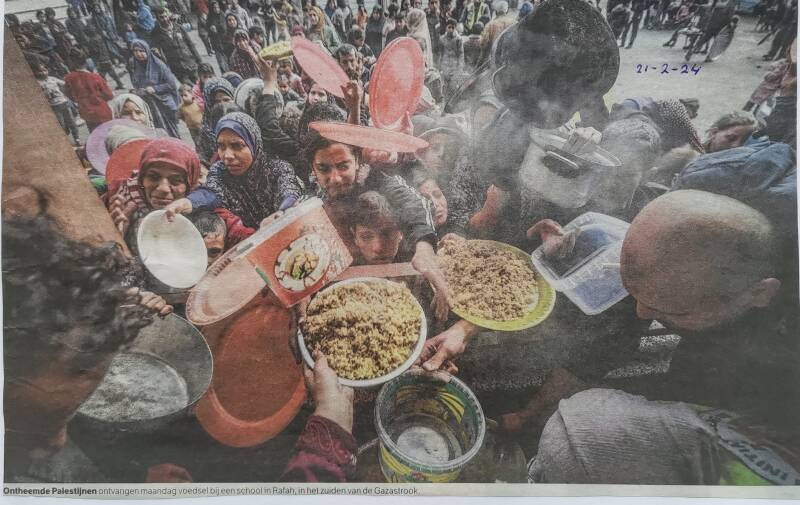
21 februari 2024


21 februari 2024
Today's headlines
U.S. vetoes another UN resolution calling for ceasefire in Gaza

The U.S. vetoed another resolution in the UN Security Council calling for a Gaza ceasefire as the WHO evacuates 32 critical patients from besieged Nasser Hospital, and the World Food Program is forced to suspend distribution amid mounting famine.
Momentum grows for protest vote against Biden in Michigan primary
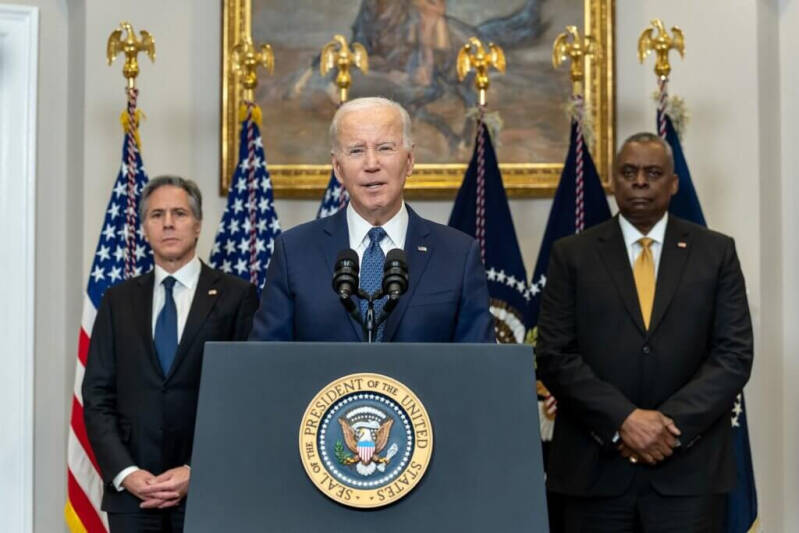
Activists are calling for a ballot protest at Michigan's February 27 primary, in an effort to push President Joe Biden to support a ceasefire and end the administration's support for Israel's brutal assault on Gaza.
My medical colleagues in Gaza are exhausted, and terrified of what is to come

When I left Gaza two weeks ago, my colleagues at the European Hospital in Khan Younis were already overwhelmed. Now, they are terrified Israel will invade the hospital and kill patients like they did at nearby Nasser Hospital.
Our hunger strike is over but we won’t stop pressuring Brown University to end its complicity with genocide

Israel’s genocide in Gaza is the defining political moment of our generation. We recently ended a week-long hunger strike against Brown University's complicity, but we are not letting up the pressure.

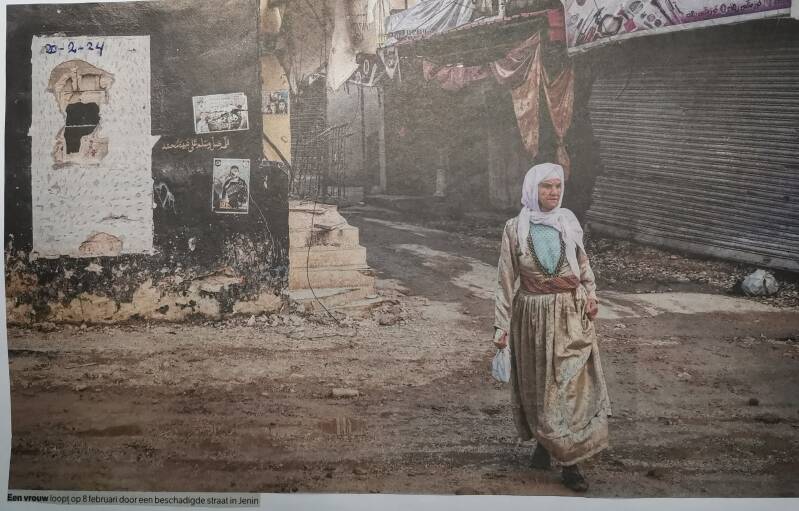
20 februari 2024


20 februari 2024
Lula is right about Israel’s genocide in Gaza.

On Sunday, Brazilian president Luiz Inácio Lula da Silva delivered a scathing condemnation of Israel’s genocide in Gaza. Speaking at an African Union summit in Ethiopia, Lula accused Israel of committing a genocide that compares only to the Holocaust.
“What’s happening in the Gaza Strip with the Palestinian people hasn’t happened at any other moment in history. Actually, it has happened: when Hitler decided to kill the Jews.”
Taking aim at Israel’s brutal assaults on civilians in Gaza, Lula added: “It’s not a war of soldiers against soldiers. It’s a war between a highly prepared army, and women and children.”
Israel predictably dismissed Lula’s remarks as antisemitic. Prime Minister Benjamin Netanyahu described Lula’s Holocaust parallel as “disgraceful and grave,” while Foreign Minister Israel Katz announced that Lula is “a persona non grata in Israel” until he takes back his comments.


20 februari 2024
Today's headlines
Israel builds highway cutting Gaza Strip in two

Several patients evacuated Nasser Hospital while dozens remain trapped under the Israeli siege of Khan Younis. Meanwhile, Palestine called on the ICJ to end the Israeli occupation, and Brazil’s Lula likened Israel’s Gaza genocide to Nazi Germany.
“If this is not apartheid, what is?” Palestine tells top UN court Israel’s occupation is illegal

Twenty years after the International Court of Justice issued an Advisory Opinion on Israel's Separation Wall, the ICJ is now considering the legality of Israel's 56-year belligerent occupation of the Palestinian territories.
Nancy Pelosi claims no U.S. weapons have been used to carry out Israeli atrocities in Gaza

Rep. Nancy Pelosi claims no U.S. weapons have been used to carry our Israeli atrocities in Gaza since October 7, but the evidence proves otherwise.
Egypt’s Sinai construction does not provide safety for Palestinians, it supports Israel’s ethnic cleansing in Gaza
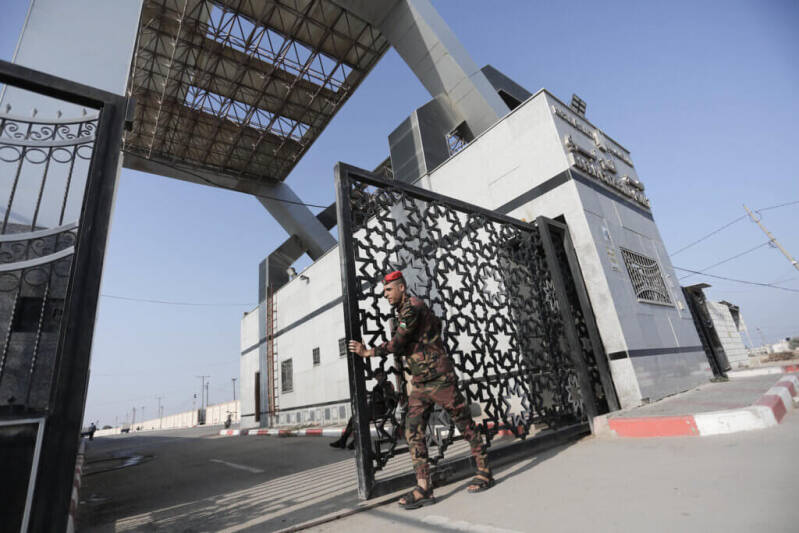
Israel has been clear about its plans to force Palestinians from Gaza, and Egypt is now reportedly building an area to receive them. Palestinians need a respite from Israel's brutality, but mass displacement into the Sinai would be a catastrophe.


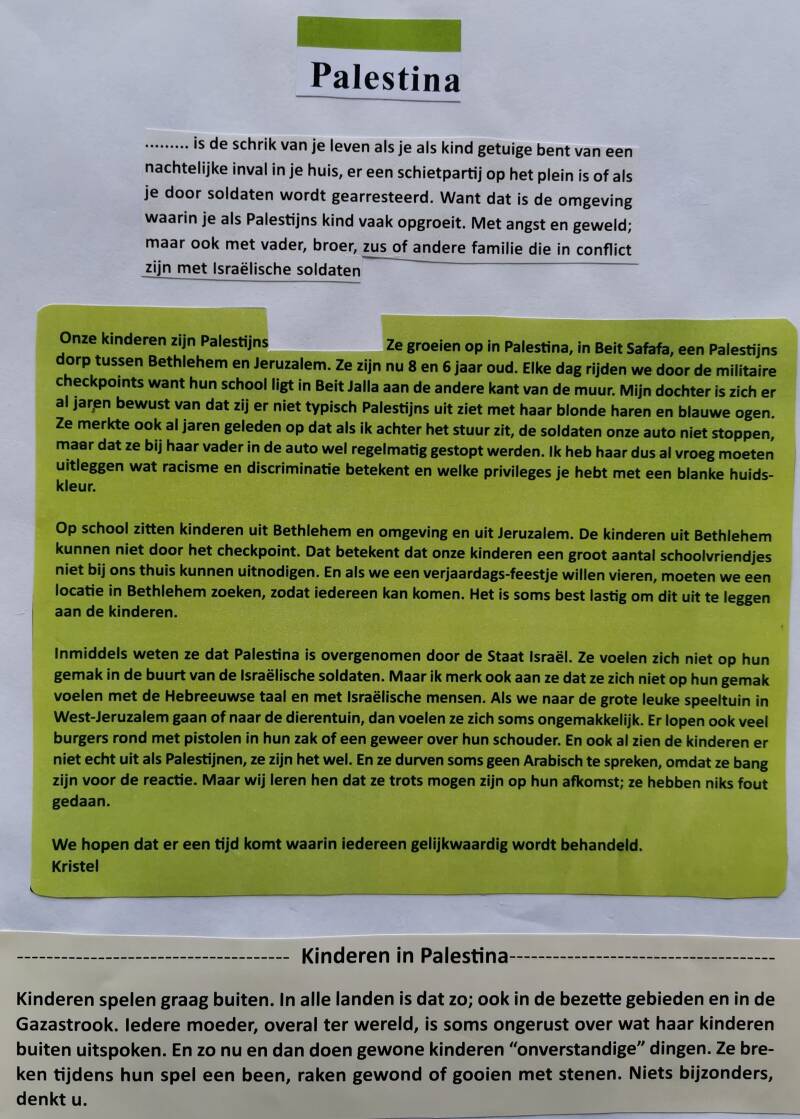
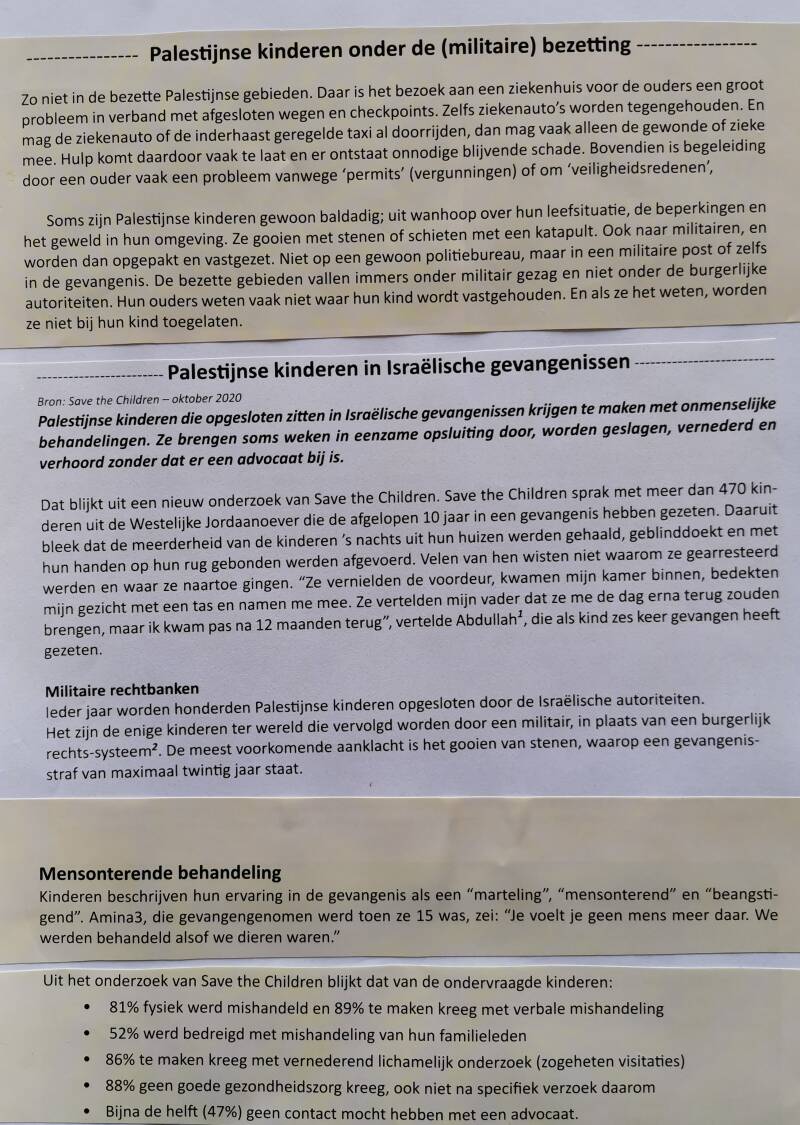

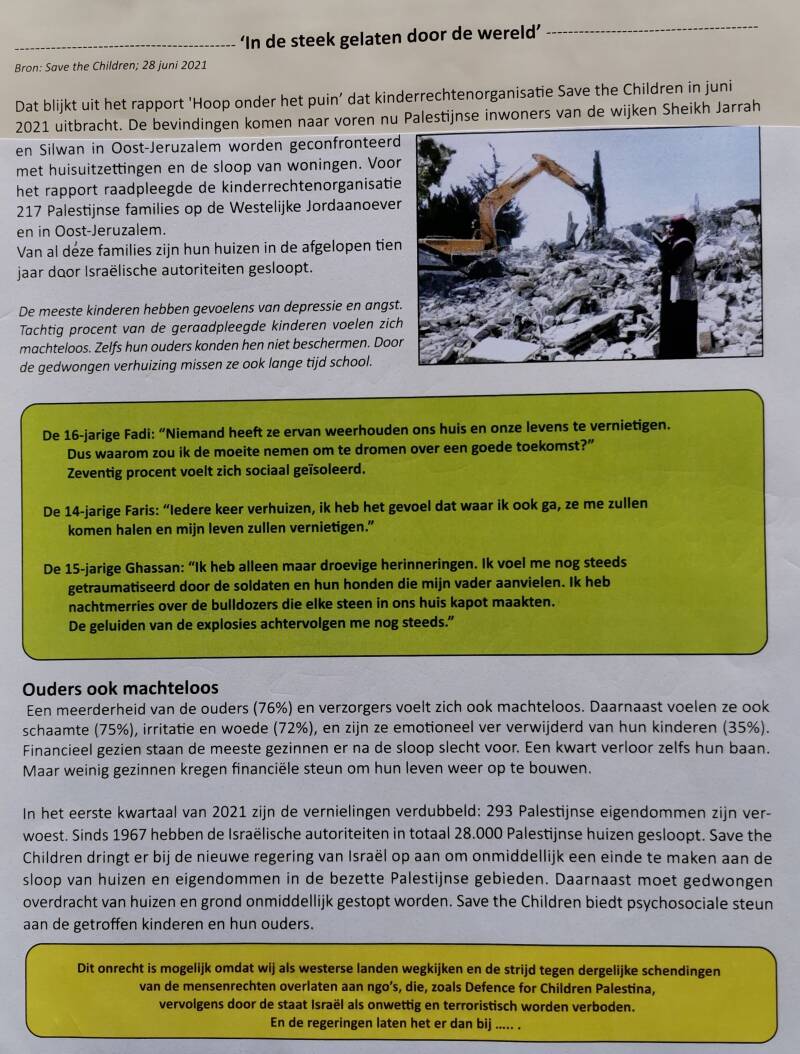




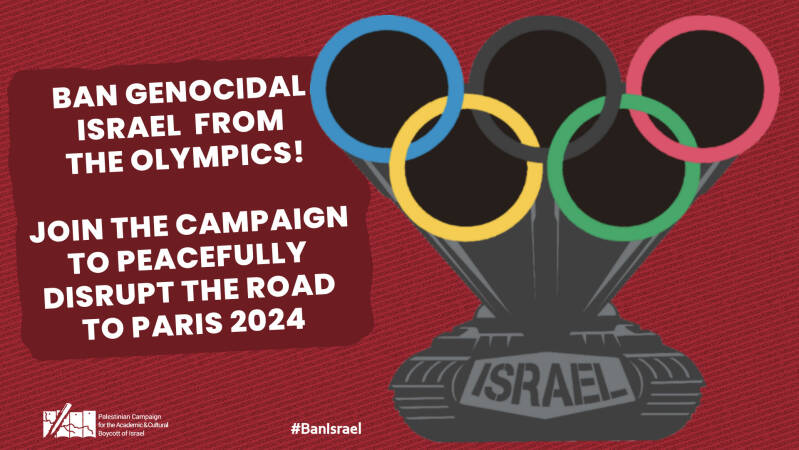
20 februari 2024
More than 300 Palestinian sports teams are calling to ban Israel from the Olympics over its genocide against Palestinians in Gaza.
As sports journalist Dave Zirin said, “the International Olympic Committee (IOC) will not act unless we make it.”
So let’s make it.
Join the global campaign to peacefully disrupt the road to Paris 2024 calling on the IOC to #BanIsrael until it ends its crimes against Palestinians and recognizes our UN-stipulated rights.
There can be no Olympics as usual while Israel continues to escalate its genocide against Palestinians in Gaza and entrench its apartheid regime. Western-dominated international bodies like the IOC that had in the past excluded apartheid South Africa are today not only allowing apartheid Israel to take part, but viciously defending its participation as well! Colonial hypocrisy is at an all-time high.
Here’s what you can do.
1. Join the Global Day(s) of Action, March 15-17
Ahead of the IOC executive board meeting in Lausanne Switzerland (March 19-21), take the call from Palestinian teams to your National Olympic Committee or International Sports Federations. Organize protests, sit-ins, peaceful disruptions, or awareness raising events on Israeli attacks on Palestinian sports. Register your group above for resources and more information.
2. Olympics qualifiers and events
From now until the Olympic Games start in July, the road to Paris will be filled with opportunities to remind the IOC that there is no place in the Olympics for genocide perpetrators. Earlier this month, four runners took the #CeasefireNow message to the Olympic Trials Marathon in Florida, crossing the finish line with Palestinian flags. Find information on Olympic time trials and qualifiers or other Olympics-related events in your area. Register your group above for more information.
3. Kick Israeli apartheid out of sports
Is your country a signatory to the International Convention Against Apartheid in Sports? If so, it has an obligation to “take all appropriate action to secure the expulsion of a country practising apartheid from international and regional sports bodies.” Register your group above to learn what you can do.
4. Sign the petition to ban Israel from world sports
In Gaza, Israel has killed Palestinian Olympic Football coach Hani Al Masdar, destroyed the Palestinian Olympic Committee offices, and turned sports facilities into shameful mass detention and torture centers.
We can’t sit back as the IOC allows Israel to use the Olympics to sportswash its genocide in Gaza and its apartheid regime against Palestinians everywhere. Support the call from Palestinian teams.
Join the campaign to #BanIsrael from the Olympics.
In solidarity,
Palestinian Campaign for the Academic and Cultural Boycott of Israel (PACBI)


20 februari 2024
As the Israeli military continues its genocidal assault on Palestinians — with over one million Palestinians in Rafah facing an imminent ground invasion with nowhere to flee — one of the world’s biggest social media giants is trying to further silence Palestinians and anyone critical of the Israeli government.
Meta, the parent company of Instagram and Facebook, is considering a policy that would shut down free speech by increasingly treating the word "Zionist" as a proxy for "Jew" or "Jewish."
Tell Meta: Don't censor us
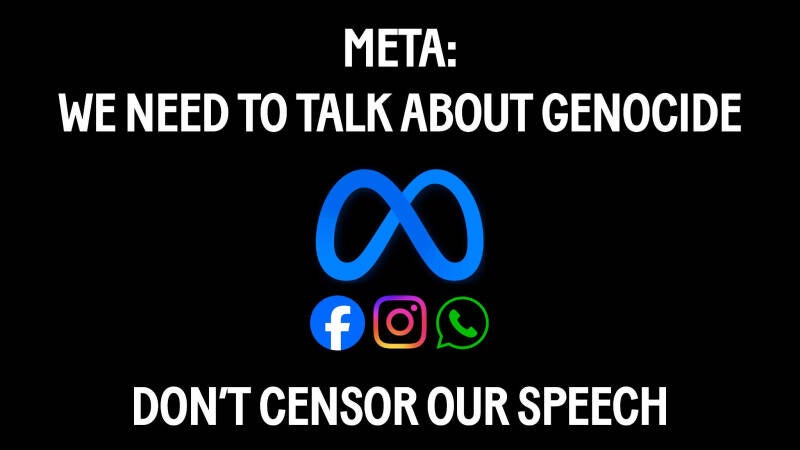
This potential policy change at Meta comes amid the ongoing genocide of Palestinians in Gaza, in which over 28,000 Palestinians have been killed.
Social media is often Palestinians’ only means of documenting human rights abuses and sharing their stories with the wider world in order to inspire solidarity through action.
Conflating criticism of Zionism with anti-semitism forces Palestinians and all people of conscience standing up for Palestinian rights, including non-Zionist and anti-Zionist Jews, to choose between acquiescing to injustice or being labeled a bigot.
Such a move would further shut down vital conversations in our own Jewish community, as more Jews than ever are not just criticizing the state of Israel for the first time, but also criticizing Zionism — the political ideology that has fueled the dispossession and genocide of Palestinians.
We cannot do the work of dismantling racism and bigotry of all kinds, including anti-semitism, if we are blocked from voicing our opinions and sharing our experiences with each other through policies like the one Meta is considering.
Palestinians, anti-Zionist and non-Zionist Jews, and all human rights defenders must be able to hold the Israeli military and government accountable during an active genocide. That means being able to talk about Zionism.
Add your name to the petition.
This isn’t the first time Meta has tried something like this. Three years ago, the company was poised to add “Zionist” as a protected category under its hate speech policy — and together, we helped mobilize thousands of people to stop them.
Palestinians and everyone standing for Palestinian rights must be able to freely express themselves online without fear of censorship.
In Solidarity,
Madeleine Hall
Digital Editorial Coordinator


20 februari 2024
Hostilities in the Gaza Strip and Israel
Flash Update #122
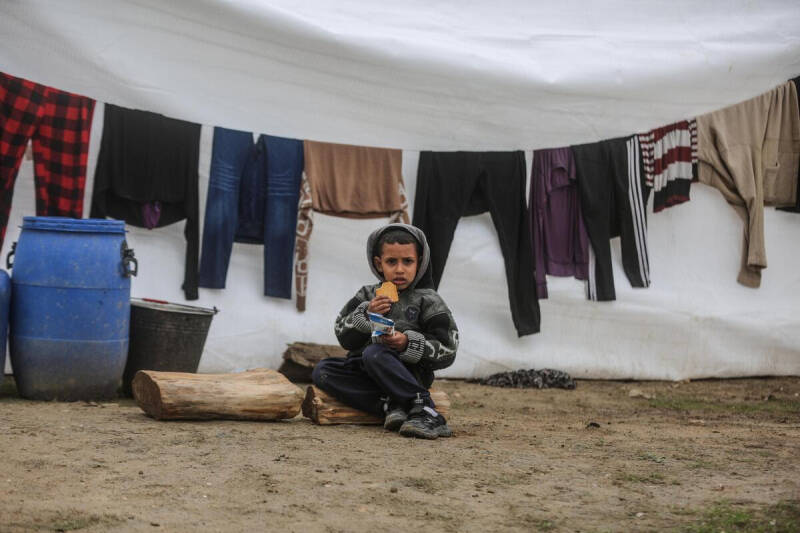
A steep rise in malnutrition is being reported among children and pregnant and breastfeeding women in Gaza, as food and safe water become increasingly scarce and disease proliferates. A boy from a displaced family with a fortified biscuit provided as humanitarian assistance in southern Gaza. Photo by WFP/Ali Jadallahhun
Key points
- Intense Israeli bombardment from air, land and sea continues to be reported across much of the Gaza Strip, resulting in further civilian casualties, displacement, and destruction of civilian infrastructure. Widespread ground operations and heavy fighting between Israeli forces and Palestinian armed groups also continue to be reported, especially in Gaza city, Khan Younis and Deir al Balah.
- Between the afternoons of 19 and 20 February, according to the Ministry of Health (MoH) in Gaza, 103 Palestinians were killed, and 142 Palestinians were injured. Between 7 October 2023 and noon on 20 February 2024, at least 29,195 Palestinians were killed in Gaza and 69,170 Palestinians were injured, according to MoH in Gaza.
- Between the afternoons of 19 and 20 February, one Israeli soldier died of injuries sustained in fighting in Gaza. As of 20 February, 234 soldiers have been killed and 1,396 soldiers injured in Gaza since the beginning of the ground operation, according to the Israeli military. In addition, over 1,200 Israelis and foreign nationals have been killed in Israel, according to the Israeli authorities, the vast majority on 7 October. As of 20 February, the Israeli authorities estimate that some 134 Israelis and foreign nationals remain captive in Gaza and include fatalities whose bodies are being withheld.
- The Global Nutrition Cluster is reporting a steep rise in malnutrition among children and pregnant and breastfeeding women in the Gaza Strip, as food and safe water become increasingly scarce and disease proliferates. The situation is especially serious in northern Gaza where 1 in 6 children under the age of 2 (15.6 per cent) who were screened at shelters and health centres in January were found to be acutely malnourished. Of these, almost 3 per cent suffered from severe wasting, the most life-threatening form of malnutrition. This rate of 15.6 per cent of wasting among children under the age of two indicates a decline in a population’s nutritional status that is unprecedented globally in three months, according to the report. Prior to 7 October, just 0.8 per cent of children under 5 in Gaza were acutely malnourished. In Rafah in southern Gaza, where aid has been more available than in the north, 5 per cent of children under the age of two are acutely malnourished, evidence that access to humanitarian aid can help prevent the worst outcomes. Accordingly, UNICEF, WFP and WHO are calling for safe, unimpeded and sustained access to urgently deliver multi-sectoral humanitarian assistance throughout the Gaza Strip. According to UNICEF, “the Gaza Strip is poised to witness an explosion in preventable child deaths which would compound the already unbearable level of child deaths in Gaza. We’ve been warning for weeks that the Gaza Strip is on the brink of a nutrition crisis. If the conflict doesn’t end now, children’s nutrition will continue to plummet, leading to preventable deaths or health issues which will affect the children of Gaza for the rest of their lives and have potential intergenerational consequences.”
- On 20 February, WHO reported that over the previous two days, it had succeeded in transferring 32 patients in critical condition from Nasser Hospital in Khan Younis to three other hospitals in Gaza, with the support of the Palestine Red Crescent Society (PRCS) and OCHA. The transfer was requested by hospital staff following the siege and raid on the hospital complex by the Israeli military. Prior to the mission, WHO had received two consecutive denials to access the hospital, causing delays in urgently needed patient referral and leading to the death of at least five patients in the Intensive Care Unit (ICU), according to WHO. The Israeli military stated that it had discovered weapons inside the compound and arrested hundreds of suspects. The WHO team and partners also provided limited supplies of essential medicines and food for the remaining 130 sick and injured patients, and the estimated 15 doctors and nurses staff who remain in the hospital, which has no electricity or running water. The ICU is no longer functioning, and the remaining patient was transferred to a different part of the complex where other patients receive basic care. Efforts to facilitate further patient referrals are in process. Emphasizing that “the dismantling and degradation of the Nasser Medical Complex is a massive blow to Gaza’s health system,” WHO expressed its concern for the safety and wellbeing of the patients and health workers who remain and warned that further disruption to lifesaving care for the sick and injured would lead to more deaths.
- The UN World Food Programme (WFP) has announced that it is pausing deliveries of food aid to northern Gaza. This follows incidents on 18 and 19 February when WFP convoys were unable to deliver aid as planned, largely due to a breakdown in civil order, leading to the looting of trucks and the beating of a driver on 19 February. The convoys had resumed on 18 February after a three-week suspension following a strike on an UNRWA truck and due to the absence of a functioning humanitarian notification system. WFP has reluctantly taken the decision to suspend operations, acknowledging that the situation in northern Gaza will deteriorate further and more people risk dying of hunger. WFP stated that it will seek to resume deliveries as soon as possible and reiterated that it is committed, “to urgently reaching desperate people across Gaza but the safety and security to deliver critical food aid - and for the people receiving it - must be ensured.” Between 1 January and 15 February, humanitarian partners planned 77 missions to deliver aid and undertake assessments to areas to the north of Wadi Gaza. Of these, 12 were facilitated by the Israeli authorities, three were partially facilitated, 14 were impeded, 39 were denied access, and nine were postponed. Facilitated missions primarily involved food distribution, while the access of missions to support hospitals and facilities providing water, hygiene and sanitation (WASH) services remained among those overwhelmingly denied.
- The situation in Al Amal Hospital in Khan Younis continues to be critical, following a 29-day siege by the Israeli military. On 19 February, PRCS reported that the water desalination station at the facility is no longer functional after being hit by Israeli forces, and that available drinking water is only sufficient for three days. The facility already faces a lack of fuel reserves to generate electricity for high-risk patients and a near exhaustion of food supplies and has reportedly sustained damage due to recent artillery shelling.
- As of 17 February, up to 1.7 million people have been displaced across the Gaza Strip, many multiple times, according to UNRWA. Following intense Israeli bombardment and fighting in Khan Younis and Deir al Balah, a significant number of Palestinians has moved to Rafah, where the influx of Internally Displaced Persons (IDPs) has overwhelmed the capacity of health and water, sanitation and hygiene (WASH) services to meet the needs of the population. According to a recent assessment of satellite data by UNOSAT, it is estimated that over one million IDPs are currently residing in makeshift shelters, the majority in Rafah. On 20 February, the Israeli military announced an order for residents of two specific areas of Gaza city to evacuate to Al Mawasi area in Khan Younis. Since 7 October 2023, about 67 per cent of the Gaza Strip have been placed under evacuation orders.
Hostilities and casualties (Gaza Strip)
- Incidents of the targeting of people as they wait for humanitarian aid convoys continue to be reported in Gaza city. On 19 February, at about 14:00, five Palestinians were allegedly killed, and several others injured, when people who had gathered for a possible delivery of humanitarian aid at Al Kuwaiti roundabout were allegedly shot by Israeli Defence Forces quadcopters. On 18 February, at about 16:00, at least one Palestinian was allegedly killed, and others injured, when a group that was waiting for relief aid at Al Nabulsi roundabout came under fire.
The following are among the deadliest incidents reported on 18 February:
- On 18 February, seven Palestinians were reportedly killed, and others injured, when a residential building in Deir al Balah, central Gaza, was struck.
- On 18 February, at about 13:00, five Palestinians were reportedly killed, and others were injured, when a residential building in Ash Shuja’iyeh neighbourhood, eastern Gaza city, was struck.
- On 18 February, at about 15:30, at least five Palestinians, including three women and two girls, were reportedly killed, and others injured, when a residential building in Beit Lahiya, northern Gaza, was struck.

West Bank Updates
- Since 7 October 2023 and as of 19 February, 393 Palestinians have been killed, including 100 children, and 4,522 Palestinians, including 702 children, have been injured in conflict-related incidents across the West Bank, including East Jerusalem, and Israel. During the same period, 12 Israelis, including four members of Israeli forces, were killed and 80 injured in conflict-related incidents in the West Bank, including East Jerusalem, and Israel.
- On 19 February, large numbers of Israeli settlers, accompanied by Israeli forces, raided the village of Burqa in Nablus, after a Molotov cocktail was reportedly thrown at a settler vehicle driving in the area, injuring the passenger. Settlers set fire to two vehicles and damaged three others. Israeli forces reportedly conducted a search-and-arrest operation for fifteen hours, resulting in damage to at least ten houses. One Palestinian was injured after being physically assaulted by Israeli forces. Israeli forces have withdrawn but access to and from the village is still restricted.
- In two separate incidents on 18 and 19 February, Israeli settlers set fire to an agricultural structure and stole machines and tools from another in the outskirts of At Taybe village in Hebron. On 19 February, settlers set fire to a Palestinian vehicle and wrote anti-Arab slogans on walls in Turmus’ayya village in Ramallah.
- Since 7 October 2023 and as of 19 February, OCHA has recorded 561 Israeli settler attacks against Palestinians that resulted in Palestinian casualties (50 incidents), damage to Palestinian-owned property (450 incidents), or both casualties and damage to property (61 incidents).
- Since 7 October 2023, 524 people, including 256 children, have been displaced in Area C, and East Jerusalem, after their homes were demolished due to the lack of Israeli-issued building permits, which are almost impossible to obtain.
- Since 7 October 2023, 830 Palestinians, including 337 children, have been displaced, following the destruction of 131 homes during operations carried out by Israeli forces across the West Bank. About 95 per cent of the displacement was reported in the refugee camps of Jenin, Nur Shams and Tulkarm.
Funding
- The Flash Appeal for the occupied Palestinian territory (oPt), which requests US$1.2 billion to meet critical needs of 2.7 million people across the oPt (2.2 million in the Gaza Strip and 500,000 in the West Bank, including East Jerusalem), was extended through the end of March 2024. As of 19 February, member states disbursed nearly $901 million against the updated Flash Appeal (73 per cent); this includes $612 million out of $629 million (97 per cent) requested for October-December 2023 and $289 million out of $600 million (48 per cent) requested for January-March 2024. For funding analysis, please see the Flash Appeal Financial Tracking dashboard.
- The occupied Palestinian territory Humanitarian Fund (oPt HF) and the Central Emergency Relief Fund (CERF) are currently funding more than 94 ongoing projects in the Gaza Strip to meet urgent humanitarian needs, notwithstanding constraints on the entry and delivery of aid into and within the Gaza Strip. These interventions, totalling about $88 million, address needs in the areas of food security, shelter, water, sanitation and hygiene (WASH), health and protection. Since October 7, the oPt HF has received a total of $88 million in contributions from member states and private donors. Private donations are collected directly through the Humanitarian Fund.

HUMANITARIAN NEEDS AND RESPONSE UPDATES | 13–19 February
Health
Needs
- Primary health services are critically needed in informal shelters across the Gaza Strip.
- There is a need to increase routine immunization coverage as well as the provision of medication for non-communicable diseases, psychotropics, and anaesthesia, due to the number of surgeries and procedures being carried out, to address the health needs of the population and prevent the spread of infectious disease.
- Expanding sexual and reproductive health services at the community level is necessary to alleviate overcrowding in maternity hospitals and ensure that women have access to the care they need.
- The establishment of field hospitals in additional areas of the Gaza Strip is crucial to accommodate the medical needs of the local population. Health partners indicate the need to support case management and to decongest hospitals.
- People are unable to effectively access healthcare due to the lack of laboratory equipment and reagents needed for accurate diagnosis and testing.
- There is an urgent need for blood products in hospitals to ensure a timely and necessary blood transfusions for patient.
- The waiting list of patients in need of medical evacuation continues to grow, as options for medical evacuation remain very limited.
- There is a need to strengthen health logistics at all levels to ensure an adequate flow of supplies across the five governorates.
Response
- On average, response activities have reached approximately 170,000 people weekly, as of 15 February. This includes more than 152,000 people receiving primary healthcare services, including in fixed and mobile facilities, and medical points, and more than 89,000 people receiving trauma and emergency care services. For more information on the Health Cluster response, consult the Gaza Health Cluster Partners Bi-Weekly Update.
- On 18 and 19 February, 32 critical patients, including two children, from Nasser Hospital were evacuated and transferred to other hospitals.
- UNFPA, in collaboration with the Emergency Medical Team (EMT) in Al Awda Maternity Hospital, in An Nuseirat Area, is conducting an assessment to determine the necessary needed support.
- Some 12 EMTs are currently operational and providing primary, secondary and specialized care in Deir al Balah, Khan Younis and Rafah. EMTs engaged at primary healthcare are also systematically monitoring and collecting data for disease surveillance for early detection of outbreak-prone disease. In addition, they are undertaking Mid-Upper Arm Circumference (MUAC) screenings, to assess acute malnutrition levels among vulnerable populations.
- From 13 to 19 February, psychotropics medicines were distributed to for some 30,000 patients.
Challenges and Gaps
- The influx of IDPs to Rafah has overwhelmed the available bed capacities in hospitals, leading to insufficient capacity to meet the healthcare needs of the population.
- Response operations by health partners are negatively affected by the displacement of the medical staff, social stresses and telecommunication challenges.
- The high insecurity and limited access to health facilities in the northern and middle governorates continues to present major challenges to partners’ response activities. Furthermore, ongoing fighting and persistent siege of hospitals have severely affected their functionality and accessibility.
- Limited and proper access to water, sanitation and hygiene (WASH) facilities is hindering disease prevention services.
- Referring patients outside of Gaza remains a major challenge.
Food Security
Needs
- The humanitarian situation in North Gaza and Gaza governorates is extremely critical, exacerbating the challenges faced in delivering essential aid. The food security situation in Deir al Balah and the southern governorates is particularly acute, with the majority of the population in extreme hunger.
- In Rafah, the situation is becoming increasingly concerning, given the expected ground attack. People in Rafah are reported to be stopping aid trucks to take food and eat it immediately, highlighting the severity of their desperation and hunger.
- There is an urgent need to augment the fleet of delivery trucks to ensure the entire population's nutritional requirements are met and to improve healthcare services, including primary health services, routine immunization coverage, and the provision of medication for non-communicable diseases.
- Vulnerable segments of the population, including children, the elderly, and individuals with underlying health conditions, are particularly susceptible to the risk of malnutrition. Partners are working to ensure that aid reaches these vulnerable groups.
- Establishing secure and uninterrupted humanitarian corridors in Gaza, with the support of the private sector and a focus on critical resources like fuel and cooking gas, is essential to address the immediate needs of the affected population and support the overall humanitarian response.
Response
- Between 12 and 18 February, a total of 15 partners engaged in providing food assistance across the Gaza Strip. Around 1.7 million people were reached, with Rafah Governorate receiving about 32 per cent of the total food assistance, followed by Deir al Balah (28 per cent), Khan Younis (26 per cent), and northern Gaza Strip (14 per cent).
Challenges and Gaps
- Ongoing airstrikes and heavy fighting in Gaza continue to affect the flow of food supply, posing challenges for safe and efficient operations. Frequent border closures, restrictions, and security concerns hinder the ability to ensure a consistent and dependable food supply.
- The escalation of hostilities has substantially damaged critical infrastructure, including roads, electricity, and water supply systems, exacerbating severe impediments to the efficient distribution of food.
Shelter and Non-Food Items (NFI)
Needs
- Some 1.7 million people are in need of shelter and NFI assistance across the Gaza Strip.
- Urgent needs are tents, sealing-off kits (SOKs) and NFIs, including bedding, kitchen sets, and winter clothing. SOKs can be used to consolidate makeshift shelters or to protect damaged housing to facilitate return where possible.
- Partners estimate that the amount of debris generated by the destruction of residential housing residential housing units will exceed 12,000 metric tons and will take over four years to remove, given Gaza’s current capabilities.
Response
- Since the start of hostilities, cluster partners reached about 900,000 people with partial shelter and NFI assistance. Partial assistance means that although a household has received some shelter and NFI items, not all their needs have been met.
- During the reporting period, cluster partners distributed 7,900 bedding items, 1,600 SOKs and 340 clothing kits to IDPs sheltering outside of UN shelters in Rafah.
- Some 28,000 tents, 7,600 SOKs, and 35,000 NFI kits are currently in the pipeline.
- At present, there are 26 cluster partners operating in Gaza. The vast majority of assistance is currently provided in-kind; cash will be pursued further when market conditions allow.
- Further details in the Cluster response strategy and website dashboard.
Challenges and Gaps
- Slow entry of items into Gaza due to limited aid trucks and complicated bureaucratic and procurement processes.
- Rising prices of shelter materials in neighbouring markets, including high freight rates and shipping costs.
- Need to restore commercial imports and re-establish local markets to relieve pressure on in-kind provision.
- Restrictions on or denial of the entry of key shelter items including timber, hand tools, and cooking stoves.
- Lack of security and access to IDP locations, lack of fuel, and rising social tensions because of the limited quantity of aid available in comparison to outstanding needs.
- Unplanned sites and lack of adequate equipment is leading to water damage to makeshift shelters and tents, and recurrent displacement resulting in the need for re-distribution of assistance.
- Urgent funding is needed to address the key gaps in the supply of shelter and NFIs. As of 19 February, only 28 per cent of the Shelter Cluster funding requirement ($209.2M) has been funded.
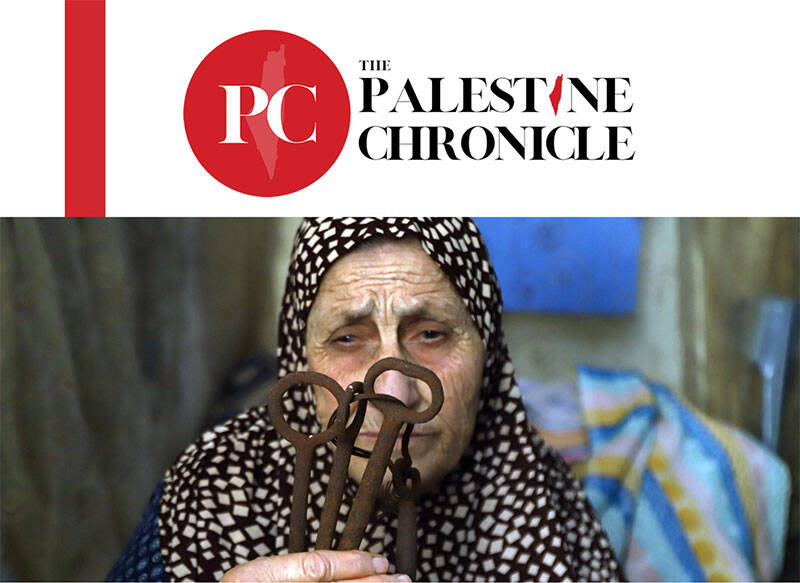
Protection
Needs
- Main needs include identification, tracing and reunification, and interim and alternative care arrangements of unaccompanied, previously detained and separated children.
- There is an urgent need to provide Mental Health and Psychological Support (MHPSS), including psychological first aid (PFA); winterization materials, including warm clothing and blanket, for children and new-born babies.
- There is urgent need to provide essential supplies, including menstrual management (MHM) kits and hygiene kits for women and girls.
Response
- In January, Child Protection Area of Responsibility (AoR) partners reached 111,202 boys and girls, and 2,633 women and men through awareness raising interventions; MHPSS for children and caregivers; identification and registration of Unaccompanied and Separated Children (USAC); and distribution of clothing kits.
- Partners distributed essential supplies, including Menstrual Hygiene Management (MHM) kits and hygiene kits for women and girls. A total of 3,500 Dignity Kits and 8,926 MHM kits have been distributed by Gender-Based Violence (GBV) Sub-Cluster partners.
- GBV responders are conducting procurement and distribution of Clinical Management of Rape (CMR) kits, and identification of health service points to provide CMR. Partners are also trying to establish emergency safe spaces, to provide PFA and recreational activities for vulnerable women and girls. Partners continue to expand PFA services for vulnerable groups, including GBV survivors, through frontline responders.
Challenges and Gaps
- The increased hostilities in Rafah governorate pose a significant threat for partners providing lifesaving protection services in the governorate. There is a lack of available space to provide group-based psychosocial support activities, due to the population density.
- Limited access to other governorates prevents thousands of affected people from being reached with critical protection services.
Education
Needs
- More than 625,000 students and nearly 23,000 teachers in the Gaza Strip have been affected by school closures and attacks on education, leaving them with no access to education or safe places.
- According to the Ministry of Education, as of 13 February, more than 5,055 students and 246 educational staff have been killed and more than 8,497 students and 836 teachers have been injured in Gaza since 7 October.
- Some 92 per cent of all school buildings in Gaza are being used as shelters for IDPs and/or have sustained varying levels of damage. Some 394 schools (79.5 per cent of the total school buildings in Gaza) have sustained damage, including 142 schools that sustained major damage or were destroyed. Combined, these schools previously served some 459,231 children and more than 17,110 teachers. The North, Gaza, and Khan Younis governorates have been especially impacted, accounting for 76 per cent of all damaged schools (source: Education Cluster Damaged School Dashboard.)
- The Education Cluster conducted a Satellite-derived Damage Assessment of all Gaza schools to verify damage to schools based on proximity to damaged sites. Key findings include:
- Satellite-derived Damage verification exercise confirmed the large level of damage to schools previously reported by the cluster in Gaza.
- Actual damages to school infrastructure might be 15 to 20 per cent higher than what has been previously reported by the Education Cluster.
- At least 55 per cent of schools in Gaza will either need full reconstruction or major rehabilitation work to be functional again.
- One quarter of directly hit and damaged schools are UNRWA-run schools.
- Forty-five per cent of school buildings that have been used by IDPs as shelters, have been either directly hit or damaged.
- The satellite-derived images provide evidence for the military use of schools.
- Education partners are concerned about reports, videos and pictures depicting schools being used for military operations by Israeli forces, including their use as detention and interrogation centres, or as military bases.
- Key priorities include the provision of Education in Emergencies (EiE) recreational activities and psychological support, including Social Emotional Learning (SEL) activities to children in shelters and designated emergency shelters (DESs); establishing Temporary Learning Spaces (TLS) in shelters/DESs to start non-formal learning for children; and provision of emergency supplies and learning kits. In addition, a key need is to identify and support of children with disabilities and other needs, with assistive devices for learning.
Response
- Since October 2023, eleven partners have reached more than 160,975 students and teachers with psychosocial support, emergency learning, recreational supplies and activities, and awareness sessions in the Deir al Balah, Khan Younis, and Rafah governorates. Most of the cluster responses are delivered by local partners (source: Education Cluster 5W dashboard).
Challenges and Gaps
- No activities have been undertaken in the North Gaza and Gaza governorates due to ongoing hostilities and access challenges.
- As of 18 February, the education response remains significantly underfunded, receiving less than 10 per cent of its requirements. Urgent funding is required to meet immediate response requirements.
Logistics
Response
- As of 18 February 2024, the Logistics Cluster has stored 7,256 cubic metres of cargo on behalf of 17 organisations, and supported 21 organisations with cargo notification service in Rafah.
- Of relief items transported through the Jordanian corridor, the Logistics Cluster facilitated partners` access to the inter-agency convoy, transporting a total of 6,159 metric tons of relief items on 463 WFP trucks on behalf of six partners.
- The Logistics Cluster has circulated the Compiled Logistics Supplier List through the mailing list. The aggregated list comes from partners to partners and is intended to ease access to and exchange of information; it is the list is based on partners' vendors’/suppliers’ contributions. The list will be circulated on a regular basis.
Challenges and Gaps
- The storage and transport capacity inside Gaza remains limited. The Logistics Cluster continues to facilitate access to temporary storage, transport from handover points to common warehouses, and cargo notification trans-shipment services.
- The Logistics Cluster is coordinating the pipeline for incoming cargo through the Egyptian and Jordanian corridors for the coming three months. This is a vital exercise for operational planning, in terms of understanding the resources available and making allocations based on the prioritization list. Partners have received a dedicated form and are requested to update it weekly. Partners who have not received the form can reach out to palestine.logcluster@wfp.org.
Emergency Telecommunications
Needs
- Recurrent telecommunications shutdown in the Gaza Strip continues to restrict people from accessing life-saving information and is impeding other forms of humanitarian response.
Response
- On 12 February, the UN Humanitarian Coordinator received approval from the Israeli authorities to import 30 digital Very High Frequency (VHF) handheld radios for the use of UN agencies in Gaza, and solar solutions to power radio repeaters. Since its establishment on 3 November 2023, the ETC has been engaging with the Israeli authorities to obtain authorizations to import all essential telecommunications equipment into Gaza and provide independent access to communications for humanitarian responders.
- Since 9 January, the ETC has supported humanitarian agencies with Information and Communication Technology (ICT) assessments, technical advice and information, repairs, and guidance on the use of ICT equipment in Gaza. To date, the ETC has conducted eight ICT assessments across four locations in Rafah and supported 14 humanitarian agencies with ICT repairs, technical advice, and guidance on the use of ICT equipment, in order to maximize the available telecommunications resources on the ground.
Challenges and Gaps
- Limited access to electricity, fuel, and telecommunications services continues to hamper the humanitarian response in Gaza.
- The import of telecommunications equipment into Gaza is fraught, lengthy, and extremely challenging.
Multi-Purpose Cash Assistance (MPCA)
Response
- Since the start of hostilities, one round of emergency MPCA was delivered to some 130,000 households, a top-up was delivered to 35,000 people (including people with disabilities and nursing mothers), and over 21,000 households have received a second round.
- Around 93,000 households have cashed out their assistance since 7 October. Around 5,400 payments have been cancelled after not being cashed out for months, despite multiple follow ups. Cash out operations are currently almost exclusively in the southern governorates.
- The assistance provided falls well short of need under the recurrent in-extremis circumstances, particularly given market collapse and price volatility. The last post-distribution monitoring data (PDMD) showed a significant decrease in the number of people who reported being able to meet all their needs, with the received assistance, combined with a major decrease in the number of people who reported not being able to cover any need. Overall, some 70 per cent of respondents reported that the assistance helped them access needed basic goods and services.
- Based on the last PDMD collected between mid-January and mid-February, food remains the most purchased item with humanitarian cash (80 per cent), followed by medicines (39 per cent), water (23 per cent), hygiene bedding (10 per cent), and transportation.
Challenges and Gaps
- Poor electricity supply and connectivity is affecting the ability of financial service providers to make cash accessible, compromising the encashment of the MPCA package.
- Since late December, commercial trucks have sporadically entered Gaza, with 770 trucks recorded up to date. Truck vendors sell goods on the streets and in informal markets, complicating efforts to track distributions and gather market data. Informal markets are the primary source of accessible goods. Currently, there is limited market data available on informal markets/street vendors due to challenges with collecting data about informal market transactions.
IASC Protection from Sexual and Exploitation Abuse (PSEA) Network
Needs
- There is a need to mainstream PSEA messages & safeguarding practices across the Gaza Strip and West Bank, including East Jerusalem.
- There is a pressing need to prioritize protection interventions at large. Safeguarding and SEA risk have become prominent in a context of severe aid dependency. The lack of safe aid delivery increases vulnerability and leads to exploitation and abuse.
- Provide safe and accessible reporting channels, that lead to assistance and investigations of PSEA allegations.
- Ensure that services are available for people at risk of sexual exploitation and abuse (SEA).
Response
- Since October 2023, more than 1,500 cases have been referred by the SAWA Foundation specialized counsellors, including eight per cent from the West Bank.
- Due to the communication cuts in Gaza, a range of public communication materials were produced and distributed.
- The PSEA Network has made available MHPSS support and remote counselling sessions for PSEA focal points on the ground in Gaza, who are documenting the impact and the emerging needs by collecting complaints and feedback.
Challenges
- Identifying cases and reaching vulnerable individuals pose significant challenges, particularly due to internet and telecommunication blackouts. Electricity and communication cuts make it challenging to establish contact with on-the-ground PSEA focal points.


20 februari 2024

The International Court of Justice in The Hague, Netherlands, August 27, 2018. © 2018 Mike Corder/AP Photo
Israel/Palestine: Yesterday, the International Court of Justice began landmark hearings to consider the legal consequences of Israel’s nearly six-decades-long occupation and mistreatment of the Palestinian people. Note, this is a separate case from the Gaza genocide case against Israel at the same court, discussed here.


20 februari 2024

Have you always wanted to see Jerusalem? Here's your chance and you don't even have to leave your home! Join Eyewitness Palestine this Saturday, February 24th at 11am ET for our Live from Jerusalem webinar.


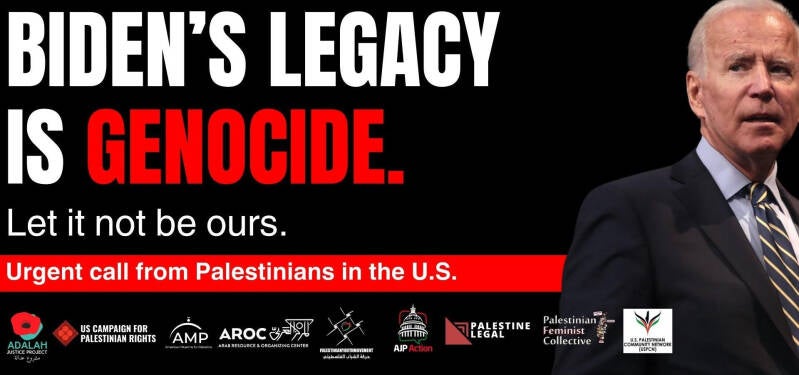
19 februari 2024
Today is President’s Day, a nationalist holiday designed to honor U.S. presidents. This celebration could not be more deeply wrong than when our sitting president is facilitating the mass murder of the Palestinian people with our tax dollars.
Biden has blood on his hands. Tomorrow, he intends to veto a ceasefire at the UN Security Council again, spilling even more Palestinian blood.
TAKE ACTION FOR GAZA TODAY
Then, read the “Biden’s Legacy Is Genocide” statement below from Palestinian-led organizations in the U.S.
Onward to liberation,
AHMAD ABUZNAID
Executive Director
Biden's Legacy Is Genocide
We, Palestinian-led organizations in the United States, are issuing an urgent call and a warning to President Biden. Palestinians in Gaza are facing the threat of extermination or expulsion, and this administration is greenlighting it. Israel’s genocidal assault on the Gaza Strip is the latest chapter in the ongoing Nakba, which began in 1948. Then, like now, Israel’s colonial regime is trying to erase Palestinian life in Palestine under the fog of war.
1.5 million Palestinians are crowded in Rafah. The majority have been displaced from elsewhere in the Gaza Strip over the course of the last 132 days. The majority were already refugees before October, forced to flee from homes across Palestine. With this assault, Israel is pursuing plans to depopulate Rafah, pushing a population it has starved into the Sinai Peninsula, in a continuation of its century-long attempt to cleanse Palestine of all Palestinians.
The world has watched this unfold, streaming horrors in real-time, scenes that will be embedded in our memories for centuries to come. Yet, even as we cry out for justice, the leaders of the so-called free world, led by Biden and Congress, continue to fuel the flames of destruction with their unrelenting support for Israel. The most bone-chilling part of this all is the public gloating and encouragement of our destruction, by Israeli and US officials alike, without consequence. We cannot, we must not, let Rafah fall under the shadow of yet another joint US-backed Israeli assault meant to drive Palestinians into the desert and into permanent exile. We Palestinians know that when we leave our homes, Israel works to ensure we cannot go back. This cannot be repeated.
Palestinians in the United States have watched our government’s complicity in what US courts and the International Court of Justice have described as a genocidal campaign. We have watched the Biden administration state “no red lines” on Israel, and instead, rush even more weapons, veto ceasefire resolutions, and block humanitarian aid, enabling every step of this genocide.
We also know that the horrors of today are the culmination of a 100-year process of dehumanization, dispossession, fragmentation, and suppression of Palestinians. With a blank check from the US, Apartheid Israel has thrived.
Through a century of Zionist colonization and 75 years of an ongoing Nakba, our Palestinian people continue, against all odds, to collectively struggle against our erasure. We are still here, whether on our lands or in our communities in exile, demanding a future of freedom, justice, and dignity between the river and the sea. The international community thought Palestinians would accept their permanent subjugation. But the history of colonized people tells a different story. The next 100 years will be our century of liberation, and it begins with protecting Rafah, protecting Gaza, and ending US complicity in apartheid and genocide.
We all recognize the unwillingness of Western world leaders to contend with the damage and destruction they cause both at home and abroad. We are living through complete obliteration: a human and climate disaster that will mark the earth for centuries to come, permanent environmental destruction through chemical and arms pollution, and an enduring trauma that will alter the DNA of humanity.
What happens in Gaza is about much more than freedom for Palestine and our return to our homes. The struggle for Gaza is a struggle of all oppressed peoples. This is why we have seen so many rise up and join our struggle.
The weapons of destruction, the tactics of dehumanization, the open complicity of the US in the face of genocide—these are the same tools that threaten us all. From immigrants and minorities, to workers and all the oppressed, the specter of white supremacy and racism looms large.
We call on everyone of you who reads these words to not stay silent, not stay seated. Rise up. To those who have been on the streets with us, do not tire. Do not allow the inhumanity to become normalized. Disrupt the complacency of everyday life, and refuse to turn a blind eye to the genocide unfolding before us.
Adalah Justice Project
American Muslims for Palestine (AMP)
Americans for Justice in Palestine Action (AJP Action)
Arab Resource and Organizing Center
Palestine Legal
Palestinian Feminist Collective
Palestinian Youth Movement
US Campaign for Palestinian Rights
US Palestinian Community Network


Hostilities in the Gaza Strip and Israel
Flash Update #121

A United Nations team attempting to deliver fuel to Nasser hospital through destroyed roads. The Israeli military operation in Nasser hospital is ongoing. Photo by OCHA/Themba Linden, 16 February 2024
19 februari 2024
Key points
- Intense Israeli bombardment from air, land and sea continues to be reported across much of the Gaza Strip, resulting in further civilian casualties, displacement, and destruction of civilian infrastructure. Widespread ground operations and heavy fighting between Israeli forces and Palestinian armed groups also continue to be reported, especially in Khan Younis and Deir al Balah. Between 17 and 19 February, tens of rockets were also reportedly fired by armed Palestinians toward Israel.
- Between the afternoon of 16 February and noon on 19 February, according to the Ministry of Health (MoH) in Gaza, 234 Palestinians were killed and 350 Palestinians were injured, including 107 killed and 145 injured in the last 24 hours. Between 7 October 2023 and noon on 19 February 2024, at least 29,092 Palestinians were killed in Gaza and 69,028 Palestinians were injured, according to MoH in Gaza.
- As of February 2024, according to the Israel Prison Service (IPS), there are nearly 9,000 Palestinians in Israeli custody, including 3,484 administrative detainees (39 per cent) held without trial. These figures do not include detainees from the Gaza Strip held by the Israeli military.
- Between the afternoons of 16 and 19 February, one Israeli soldier was reported killed in Gaza. As of 19 February, 233 soldiers have been killed and 1,373 soldiers injured in Gaza since the beginning of the ground operation, according to the Israeli military. In addition, over 1,200 Israelis and foreign nationals have been killed in Israel, according to the Israeli authorities, the vast majority on 7 October. As of 19 February, the Israeli authorities estimate that about 134 Israelis and foreign nationals remain captive in Gaza and reportedly include fatalities whose bodies are being withheld.
- As of 19 February, the Israeli military operation in the Nasser Hospital complex in Khan Younis continues. On 18 February, the UN and the Palestine Red Crescent Society (PRCS) visited the hospital and evacuated 14 patients. Prior to that, WHO Director-General, Tedros Adhanom Ghebreyesus, reported that a WHO team was not permitted to enter the hospital to assess the conditions of the patients and critical medical needs, despite reaching the hospital compound to deliver fuel. According to the Ministry of Health in Gaza, Israeli forces have arrested 70 medical personnel, including an intensive care doctor and the Director of Surgery, and eight patients died due to the depletion of oxygen. Negotiations are ongoing to allow for the evacuation of the remaining patients. The Israeli military stated that it had discovered weapons and a vehicle taken from an Israeli kibbutz on 7 October inside the compound, had arrested hundreds of suspects, and was providing medical supplies and resources to the hospital.
- The situation in Al Amal Hospital in Khan Younis continues to be critical, following a 28-day siege by the Israeli military. On 19 February, PRCS reported a decrease in fuel reserves to generate electricity for high-risk patients and a near exhaustion of food supplies. On 18 February, PRCS reported that the third floor of the hospital sustained damage by artillery shelling and the destruction of the central maintenance room. On 17 February, PRCS published images showing signs of what they assess to be torture of two doctors who had been detained from Al Amal hospital by Israeli forces on 9 February. Twelve PRCS staff members continue to be detained by Israeli forces, according to PRCS. Notwithstanding the lack of blood units and medical personnel, the medical team successfully performed an urgent cesarian section for a pregnant woman at Al Amal hospital on 16 February.
- Public health concerns are reportedly mounting across Gaza, disproportionately affecting women. This is due to continued bombardment, the lack of essential food and water supplies, the collapsing health system, and limited access to those in need of urgent assistance. On 16 February, the UN Population Fund (UNFPA) highlighted that 500,000 cases of communicable disease, including meningitis and acute diarrhoea, have been reported across Gaza, emphasizing the particular vulnerabilities facing women: “Everyone in Gaza is hungry, including 50,000 pregnant women, with malnutrition making them more susceptible to disease and less able to recover.” Underscoring the immense risks facing pregnant women in Gaza, UNFPA warned: “If the bombs don't kill pregnant women, if disease, hunger and dehydration don't catch up with them, simply giving birth could.”
- As of 17 February, up to 1.7 million people have been displaced across the Gaza Strip, many multiple times, according to UNRWA. Following intense Israeli bombardment and fighting in Khan Younis and Deir al Balah in recent days, a significant number of Palestinians has moved to Rafah, where the influx of Internally Displaced Persons (IDPs) has overwhelmed the capacity of health and water, sanitation and hygiene (WASH) services to meet the needs of the population. Between 150 and 155 UNRWA installations continue to shelter IDPs in extremely overcrowded conditions. According to the Education Cluster, some 92 per cent of all school buildings in Gaza are being used as shelters for IDPs and/or have sustained varying levels of damage during the conflict. UNRWA estimates that at least 396 IDPs sheltering in its shelters have been killed and at least 1,383 injured since 7 October and 158 UNRWA staff members killed during this period.
Hostilities and casualties (Gaza Strip)
The following are among the deadliest incidents reported between 16 and 18 February:
- On 16 February, in the early morning, seven Palestinians were reportedly killed, and others injured, when a residential building in An Naser neighbourhood, in northern Rafah, was hit.
- On 16 February, at about 20:00, at least ten Palestinians were reportedly killed, when a residential building in northern Gaza city was hit.
- On 17 February, at about 10:30, seven Palestinians were reportedly killed, when a residential building in Ash Sheikh Redwan neighbourhood, in Gaza city, was struck.
- On 17 February, at about 15:00, 20 Palestinians were reportedly killed, when a number of residential buildings in An Nuseirat Camp, in Deir al Balah, were hit.
- On 17 February, at about 15:20, ten Palestinians were reportedly killed, when a residential building in Deir al Balah was hit.
- On 17 February, at about 19:00, seven Palestinians, including two children and one woman, were reportedly killed, and other were injured, when a residence that was reportedly sheltering IDPs, in eastern Rafah, was hit.
- On 18 February, at about 5:30, seven Palestinians were reportedly killed, when a residential building in Az Zawayda, in Deir al Balah, was hit. Forty other people have reportedly remained under the rubble.
West Bank Updates
- On 16 February, two Israeli men were shot and killed in southern Israel, and four others including a child were injured, by a Palestinian man from Shu’fat refugee camp in East Jerusalem. The Palestinian man was then shot and killed by an armed Israeli civilian. Following the incident, Israeli forces closed the checkpoint leading to Shu'fat Refugee camp and raided the camp.
- On 18 February, Israeli forces, including undercover units, shot and killed two Palestinian men in Tulkarm Refugee camp, during an exchange of fire with a Palestinian man whose body was later withheld by Israeli forces. The second fatality was an unarmed Palestinian who was reportedly killed by an Israeli army sniper while standing on the rooftop of his house. The four-hour military operation took place during school hours, impacting 1,356 pupils and 61 education staff inside four UNRWA schools in the camp. Also on 18 February, Israeli forces shot and killed a Palestinian man at Beit Furik checkpoint in Nablus. According to the Israeli military, the man was asked to stop and was shot when he refused to do so. Israeli forces withheld the body of the man for three hours.
- Since 7 October 2023 and as of 18 February, 393 Palestinians have been killed, including 100 children, and 4,511 Palestinians, including 699 children, have been injured in conflict-related incidents across the West Bank, including East Jerusalem, and Israel. During the same period, 12 Israelis, including four members of Israeli forces, were killed and 80 injured in conflict-related incidents in the West Bank, including East Jerusalem, and Israel.
- Since 7 October 2023 and as of 16 February, OCHA has recorded 558 Israeli settler attacks against Palestinians that resulted in Palestinian casualties (50 incidents), damage to Palestinian-owned property (447 incidents), or both casualties and damage to property (61 incidents).
- Since 7 October 2023, 524 people, including 256 children, have been displaced in Area C and East Jerusalem after their homes were demolished due to the lack of Israeli-issued building permits, which are almost impossible to obtain.
- On 13 February, four Palestinian houses were rendered uninhabitable by Israeli bulldozers during a raid on Jenin refugee camp. Some 16 Palestinians were displaced, including three children. Roads inside the camp were also bulldozed, causing significant damage to sewage networks. Since 7 October 2023, 830 Palestinians, including 337 children, have been displaced, following the destruction of 131 homes during operations carried out by Israeli forces across the West Bank. About 95 per cent of the displacement was reported in the refugee camps of Jenin, Nur Shams and Tulkarm.

Funding
- The Flash Appeal for the occupied Palestinian territory (oPt), which requests US$1.2 billion to meet critical needs of 2.7 million people across the oPt (2.2 million in the Gaza Strip and 500,000 in the West Bank, including East Jerusalem), was extended through the end of March 2024. As of 19 February, member states disbursed nearly against the updated Flash Appeal (73 per cent); this includes $612 million out of $629 million (97 per cent) requested for October-December 2023 and $289 million out of $600 million (48 per cent) requested for January-March 2024. For funding analysis, please see the Flash Appeal Financial Tracking dashboard.
- The occupied Palestinian territory Humanitarian Fund (oPt HF) and the Central Emergency Relief Fund (CERF) are currently funding more than 94 ongoing projects in the Gaza Strip to meet urgent humanitarian needs, notwithstanding constraints on the entry and delivery of aid into and within the Gaza Strip. These interventions, totalling about $77 million, address needs in the areas of food security, shelter, water, sanitation and hygiene (WASH), health and protection. Since October 7, the oPt HF has received a total of $88 million in contributions from member states and private donors. Private donations are collected directly through the Humanitarian Fund.

HUMANITARIAN NEEDS AND RESPONSE UPDATES | 13–19 February
Food Security
Needs
- The humanitarian situation in North Gaza and Gaza governorates is extremely critical, exacerbating the challenges faced in delivering essential aid. The food security situation in the Middle Area and southern governorates is particularly acute, with the majority of the population in extreme hunger.
- In Rafah, the situation is becoming increasingly concerning, given the expected ground attack. People in Rafah are reported to be stopping aid trucks to take food and eat it immediately, highlighting the severity of their desperation and hunger.
- There is an urgent need to augment the fleet of delivery trucks to ensure the entire population's nutritional requirements are met and to improve healthcare services, including primary health services, routine immunization coverage, and the provision of medication for non-communicable diseases.
- Vulnerable segments of the population, including children, the elderly, and individuals with underlying health conditions, are particularly susceptible to the risk of malnutrition. Partners are working to ensure that aid reaches these vulnerable groups.
- Establishing secure and uninterrupted humanitarian corridors in Gaza, with the support of the private sector and a focus on critical resources like fuel and cooking gas, is essential to address the immediate needs of the affected population and support the overall humanitarian response.
Response
- Between 12 and 18 February, a total of 14 partners engaged in providing food assistance across the Gaza Strip. Around 1.5 million people were reached, with Rafah Governorate receiving about 32 per cent of the total food assistance, followed by Deir al Balah (28 per cent), Khan Younis (26 per cent), and northern Gaza Strip (14 per cent).
Challenges and Gaps
- Ongoing airstrikes and heavy fighting in Gaza continue to affect the flow of food supply, posing challenges for safe and efficient operations. Frequent border closures, restrictions, and security concerns hinder the ability to ensure a consistent and dependable food supply.
- The escalation of hostilities has substantially damaged critical infrastructure, including roads, electricity, and water supply systems, exacerbating severe impediments to the efficient distribution of food.
Shelter and Non-Food Items (NFI)
Needs
- Some 1.7 million people are in need of shelter and NFI assistance across the Gaza Strip.
- Urgent needs are tents, sealing-off kits (SOKs) and NFIs, including bedding, kitchen sets, and winter clothing. SOKs can be used to consolidate makeshift shelters or to protect damaged housing to facilitate return where possible.
- Partners estimate that the amount of debris generated by the destruction of residential housing residential housing units will exceed 12,000 metric tons and will take over four years to remove, given Gaza’s current capabilities.
Response
- Since the start of hostilities, cluster partners reached about 900,000 people with partial shelter and NFI assistance. Partial assistance means that although a household has received some shelter and NFI items, not all their needs have been met.
- During the reporting period, cluster partners distributed 7,900 bedding items, 1,600 SOKs and 340 clothing kits to IDPs sheltering outside of UN shelters in Rafah.
- Some 28,000 tents, 7,600 SOKs, and 35,000 NFI kits are currently in the pipeline.
- At present, there are 26 cluster partners operating in Gaza. The vast majority of assistance is currently provided in-kind; cash will be pursued further when market conditions allow.
- Further details in the Cluster response strategy and website dashboard.
Challenges and Gaps
- Slow entry of items into Gaza due to limited aid trucks and complicated bureaucratic and procurement processes.
- Rising prices of shelter materials in neighbouring markets, including high freight rates and shipping costs.
- Need to restore commercial imports and re-establish local markets to relieve pressure on in-kind provision.
- Restrictions on or denial of the entry of key shelter items including timber, hand tools, and cooking stoves.
- Lack of security and access to IDP locations, lack of fuel, and rising social tensions because of the limited quantity of aid available in comparison to outstanding needs.
- Unplanned sites and lack of adequate equipment is leading to water damage to makeshift shelters and tents, and recurrent displacement resulting in the need for re-distribution of assistance.
- Urgent funding is needed to address the key gaps in the supply of shelter and NFIs. As of 19 February, only 28 per cent of the Shelter Cluster funding requirement ($209.2M) has been funded.
Protection
Needs
- Main needs include identification, tracing and reunification, and interim and alternative care arrangements of unaccompanied, previously detained and separated children.
- There is an urgent need to provide Mental Health and Psychological Support (MHPSS), including psychological first aid (PFA); winterization materials, including warm clothing and blanket, for children and new-born babies.
- There is urgent need to provide essential supplies, including menstrual management (MHM) kits and hygiene kits for women and girls.
Response
- In January, Child Protection Area of Responsibility (AoR) partners reached 111,202 boys and girls, and 2,633 women and men through awareness raising interventions; MHPSS for children and caregivers; identification and registration of Unaccompanied and Separated Children (USAC); and distribution of clothing kits.
- Partners distributed essential supplies, including Menstrual Hygiene Management (MHM) kits and hygiene kits for women and girls. A total of 3,500 Dignity Kits and 8,926 MHM kits have been distributed by Gender-Based Violence (GBV) Sub-Cluster partners.
- GBV responders are conducting procurement and distribution of Clinical Management of Rape (CMR) kits, and identification of health service points to provide CMR. Partners are also trying to establish emergency safe spaces, to provide PFA and recreational activities for vulnerable women and girls. Partners continue to expand PFA services for vulnerable groups, including GBV survivors, through frontline responders.
Challenges and Gaps
- The increased hostilities in Rafah governorate pose a significant threat for partners providing lifesaving protection services in the governorate. There is a lack of available space to provide group-based psychosocial support activities, due to the population density.
- Limited access to other governorates prevents thousands of affected people from being reached with critical protection services.
Education
Needs
- More than 625,000 students and nearly 23,000 teachers in the Gaza Strip have been affected by school closures and attacks on education, leaving them with no access to education or safe places.
- According to the Ministry of Education, as of 13 February, more than 5,055 students and 246 educational staff have been killed and more than 8,497 students and 836 teachers have been injured in Gaza since 7 October.
- Some 92 per cent of all school buildings in Gaza are being used as shelters for IDPs and/or have sustained varying levels of damage. Some 394 schools (79.5 per cent of the total school buildings in Gaza) have sustained damage, including 142 schools that sustained major damage or were destroyed. Combined, these schools previously served some 459,231 children and more than 17,110 teachers. The North, Gaza, and Khan Younis governorates have been especially impacted, accounting for 76 per cent of all damaged schools (source: Education Cluster Damaged School Dashboard.)
- The Education Cluster conducted a Satellite-derived Damage Assessment of all Gaza schools to verify damage to schools based on proximity to damaged sites. Key findings include:
- -Satellite-derived Damage verification exercise confirmed the large level of damage to schools previously reported by the cluster in Gaza.
- -Actual damages to school infrastructure might be 15 to 20 per cent higher than what has been previously reported by the Education Cluster.
- -At least 55 per cent of schools in Gaza will either need full reconstruction or major rehabilitation work to be functional again.
- -One quarter of directly hit and damaged schools are UNRWA-run schools.
- -Forty-five per cent of school buildings that have been used by IDPs as shelters, have been either directly hit or damaged.
- -The satellite-derived images provide evidence for the military use of schools.
- Education partners are concerned about reports, videos and pictures depicting schools being used for military operations by Israeli forces, including their use as detention and interrogation centres, or as military bases.
- Key priorities include the provision of Education in Emergencies (EiE) recreational activities and psychological support, including Social Emotional Learning (SEL) activities to children in shelters and designated emergency shelters (DESs); establishing Temporary Learning Spaces (TLS) in shelters/DESs to start non-formal learning for children; and provision of emergency supplies and learning kits. In addition, a key need is to identify and support of children with disabilities and other needs, with assistive devices for learning.
Response
- Since October 2023, eleven partners have reached more than 160,975 students and teachers with psychosocial support, emergency learning, recreational supplies and activities, and awareness sessions in the Deir al Balah, Khan Younis, and Rafah governorates. Most of the cluster responses are delivered by local partners (source: Education Cluster 5W dashboard).
Challenges and Gaps
- No activities have been undertaken in the North Gaza and Gaza governorates due to ongoing hostilities and access challenges.
- As of 18 February, the education response remains significantly underfunded, receiving less than 10 per cent of its requirements. Urgent funding is required to meet immediate response requirements.
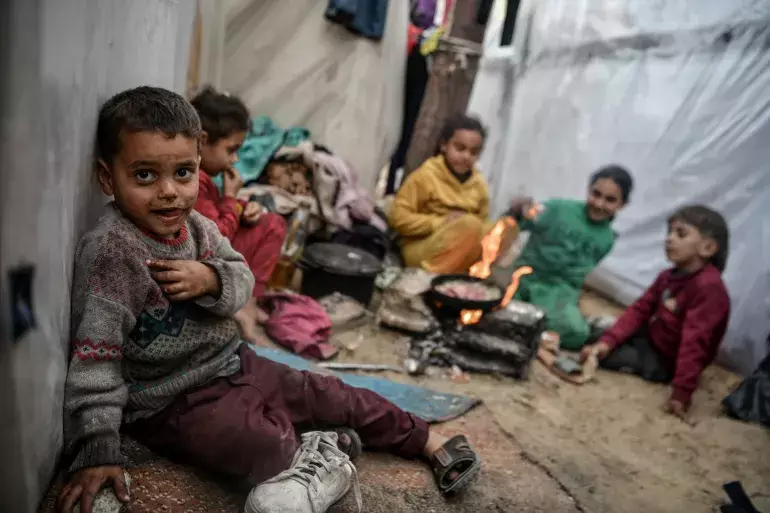
Logistics
Response
- As of 18 February 2024, the Logistics Cluster has stored 7,256 cubic metres of cargo on behalf of 17 organisations, and so far supported 21 organisations with cargo notification service in Rafah.
- Of relief items transported through the Jordanian corridor, the Logistics Cluster facilitated partners` access to the inter-agency convoy, transporting a total of 6,159 metric tons of relief items on 463 WFP trucks on behalf of six partners.
- The Logistics Cluster has circulated the Compiled Logistics Supplier List through the mailing list. The aggregated list comes from partners to partners and is intended to ease access to and exchange of information; it is the list is based on partners' vendors’/suppliers’ contributions. The list will be circulated on a regular basis.
Challenges and Gaps
- The storage and transport capacity inside Gaza remains limited. The Logistics Cluster continues to facilitate access to temporary storage, transport from handover points to common warehouses, and cargo notification trans-shipment services.
- The Logistics Cluster is coordinating the pipeline for incoming cargo through the Egyptian and Jordanian corridors for the coming three months. This is a vital exercise for operational planning, in terms of understanding the resources available and making allocations based on the prioritization list. Partners have received a dedicated form and are requested to update it weekly. Partners who have not received the form can reach out to palestine.logcluster@wfp.org.
Emergency Telecommunications
Needs
- Recurrent telecommunications shutdown in the Gaza Strip continues to restrict people from accessing life-saving information and is impeding other forms of humanitarian response.
Response
- On 12 February, the UN Humanitarian Coordinator received approval from the Israeli authorities to import 30 digital Very High Frequency (VHF) handheld radios for the use of UN agencies in Gaza, and solar solutions to power radio repeaters. Since its establishment on 3 November 2023, the ETC has been engaging with the Israeli authorities to obtain authorizations to import all essential telecommunications equipment into Gaza and provide independent access to communications for humanitarian responders.
- Since 9 January, the ETC has supported humanitarian agencies with Information and Communication Technology (ICT) assessments, technical advice and information, repairs, and guidance on the use of ICT equipment in Gaza. To date, the ETC has conducted eight ICT assessments across four locations in Rafah and supported 14 humanitarian agencies with ICT repairs, technical advice, and guidance on the use of ICT equipment, in order to maximize the available telecommunications resources on the ground.
Challenges and Gaps
- Limited access to electricity, fuel, and telecommunications services continues to hamper the humanitarian response in Gaza.
- The import of telecommunications equipment into Gaza is fraught, lengthy, and extremely challenging.
Multi-Purpose Cash Assistance (MPCA)
Response
- Since the start of hostilities, one round of emergency MPCA was delivered to some 130,000 households, a top-up was delivered to 35,000 people (including people with disabilities and nursing mothers), and over 21,000 households have received a second round.
- Around 93,000 households have cashed out their assistance since 7 October. Around 5,400 payments have been cancelled after not being cashed out for months, despite multiple follow ups. Cash out operations are currently almost exclusively in the southern governorates.
- Provided assistance falls well short of need under the recurrent in-extremis circumstances, particularly given market collapse and price volatility. The last post-distribution monitoring data (PDMD) showed a significant decrease in the number of people who reported being able to meet all their needs with the received assistance, combined with a major decrease in the number of people who reported not being able to cover any need. Overall, some 70 per cent of respondents reported that the assistance helped them access needed basic goods and services.
- Based on the last PDMD collected between mid-January and mid-February, food remains the most purchased item with humanitarian cash (80 per cent), followed by medicines (39 per cent), water (23 per cent), hygiene bedding (10 per cent), and transportation.
Challenges and Gaps
- Poor electricity supply and connectivity is affecting the ability of financial service providers to make cash accessible, compromising the encashment of the MPCA package.
- Since late December, commercial trucks have sporadically entered Gaza, with 770 trucks recorded up to date. Truck vendors sell goods on the streets and in informal markets, complicating efforts to track distributions and gather market data. Informal markets are the primary source of accessible goods. Currently, there is limited market data available on informal markets/street vendors due to challenges with collecting data about informal market transactions.


19 februari 2024
Today's headlines
Netanyahu approves Ramadan restrictions on Al-Aqsa Mosque
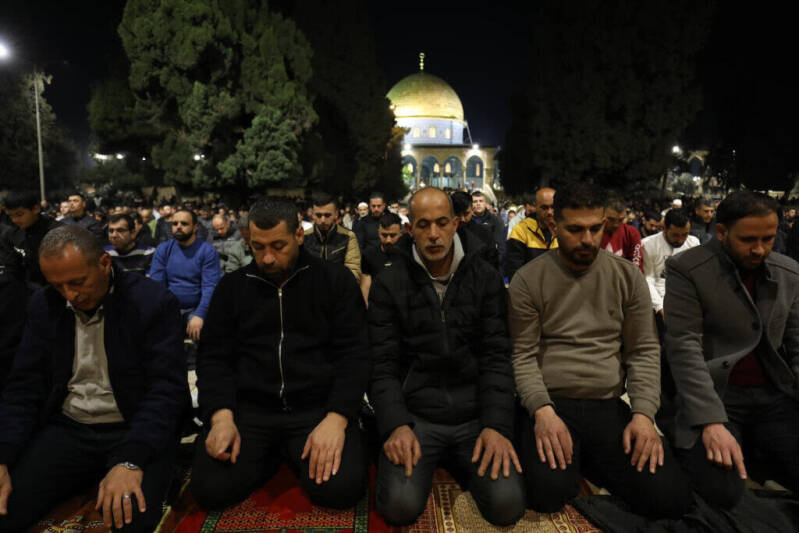
Hamas slams Israel over plans to restrict access of Palestinian worshipers to the Al-Aqsa Mosque in occupied Jerusalem during the holy month of Ramadan. Meanwhile, more Palestinians die from preventable causes as Israel besieges hospitals in Gaza.
Music and resistance after October 7
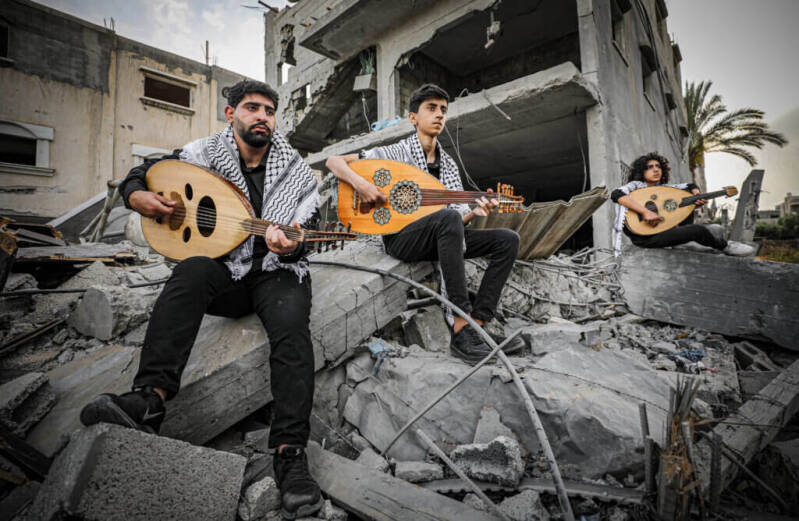
The Palestinian people practice resistance through "sumud" and steadfastness in every aspect of their lives, including in music. After October 7, Palestinian music can serve as the moral compass pointing toward decolonization.
Trying to survive a mouse click away from death
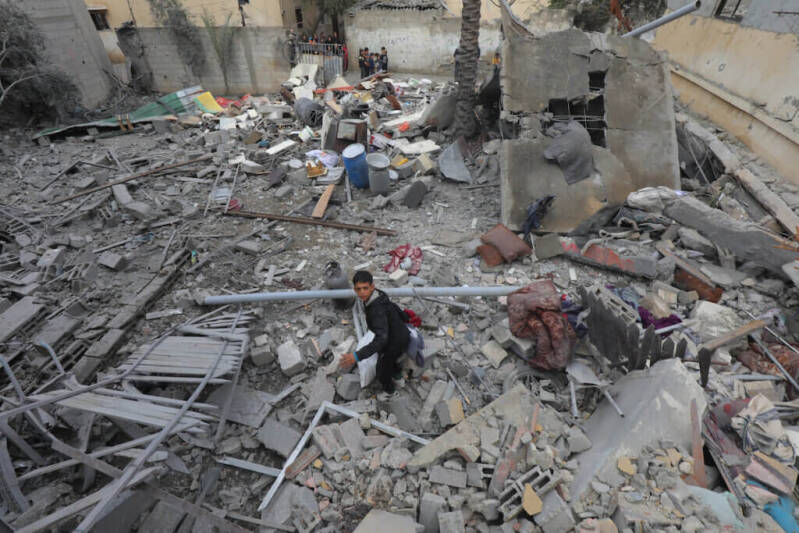
Musa, Moses, fled the then all-powerful pharaohs to this side of the Sinai. Now, my daughter and I will, with God’s grace, flee the Israelis to the land of Egypt, to save our lives.

Many Palestinians are fleeing Rafah ahead of Israel’s impending invasion, but when they return to their destroyed neighborhoods they still face bombardment. "We escaped death to walk into a different kind of death,” Jamila Eleywa tells Mondoweiss.

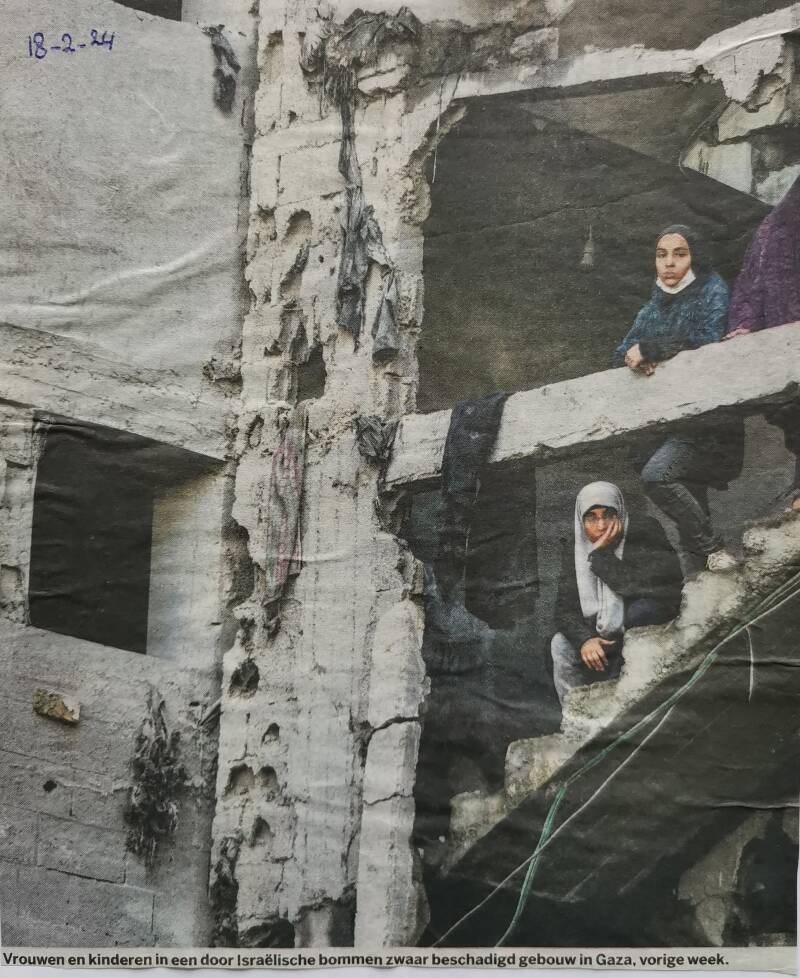
18 februari 2024


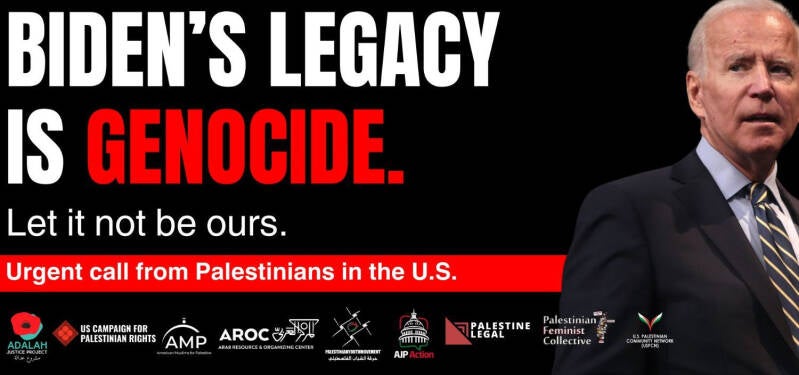
Biden's legacy is genocide, let it not be ours
18 februari 2024
AMP and eight other Palestinian organizations in the U.S. have issued a critical call and warning to President Biden. The situation in Gaza demands continued attention, as Palestinians face the imminent threat of extermination or expulsion, while this administration appears to be persistent in greenlighting such atrocities.
Israel's ongoing genocidal assault on the Gaza Strip is not merely a contemporary crisis; it is the latest chapter in a long history of dispossession and oppression dating back to the Nakba in 1948. As we witness the horrors unfolding in real-time, it's evident that urgent action is needed to prevent further bloodshed and displacement.
As we reflect on the values and principles our nation claims to stand for, it's imperative that we hold our leaders accountable for their complicity in enabling these atrocities.
TAKE ACTION AND SPREAD THE WORD


Today's headlines
Israel’s war on Gaza’s hospitals continues
Nasser Hospital, the second-largest medical facility in the Gaza Strip, was forced closed Sunday following an Israeli siege, storming, and arrest of medical staff and patients. Meanwhile, Israel also bombed Al-Amal Hospital in Khan Younis.
Good Christians, bad Christians
Palestinian Christians are viewed by the West as "bad Christians" because they refuse to act as a minority. To be considered a "good Muslim" or a "good Christian" in the Middle East, you must be aligned with Israel and the U.S.
The role of food in the movement for Palestine
Food is central to the movement for Palestinian liberation, because food is central to history, identity, and life.



17 februari 2024
All over Palestine, from Israel’s genocidal massacres in Gaza to military attacks in the West Bank, the Israeli regime is bent on annihilating Palestinian life to remove our people from our native land. Israel is operating with full impunity and full U.S. backing, with zero consequences from our elected officials for each new war crime.
For weeks, Israel has been viciously attacking Palestinian refugees and patients trapped inside Nasser Hospital in Khan Younis amid a media blackout. Palestinian people in Gaza have a right to live in safety and freedom. We must keep fighting to stop the genocide funded by our tax dollars.
Read the latest updates below.
Your Activist Scoop
OUR GOVERNMENT'S GUILT
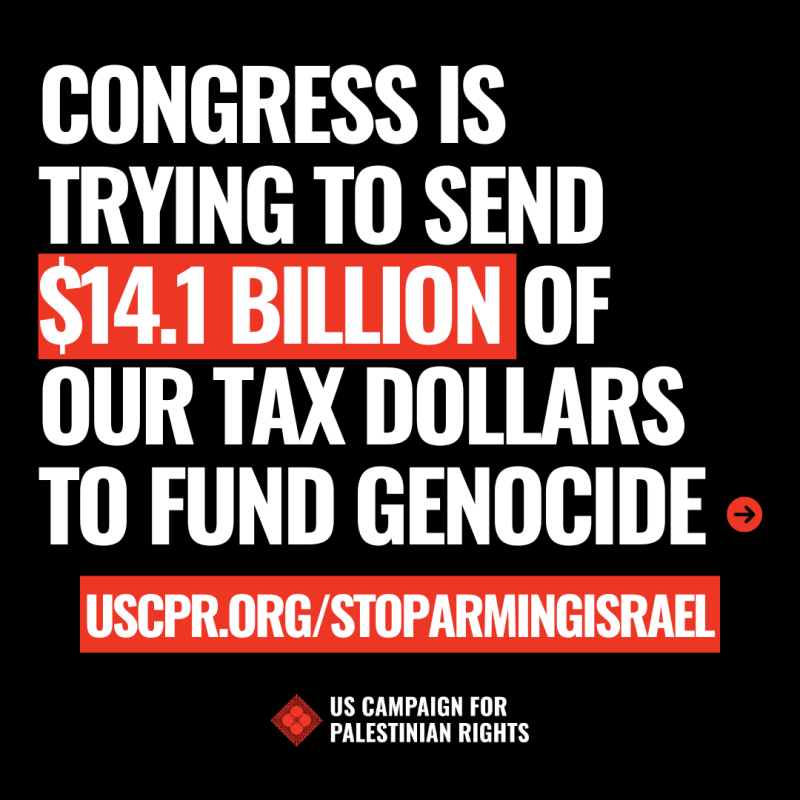
- Biden’s “Deadly Deal” spending package, now reduced to $95 billion without border militarization in an effort to push it through Congress, has passed the Senate and now heads to the House. Every non-Republican senator except for Sen. Bernie Sanders and Sen. Jeff Merkley voted to send $14 billion more in weapons to Israel AND disband UNRWA. They have blood on their hands.
- Israel is continuing to murder and harm Palestinian-American U.S. citizens with impunity, including most recently 17-year-old Mohammad Ahmed Khdour.
- Biden administration officials have revealed that there will be zero consequences if Israel launches a full-scale ground invasion to expel and slaughter 1.9 million Palestinian refugees sheltering in Rafah.
YOUR IMPACT

No Pride in Genocide protest at Human Rights Campaign in DC
- You’ve collectively took action, raising your voice to end the genocide and stop U.S. weapons to Israel.
- Thanks to the pressure you’ve built, 68 members of Congress have now called for a ceasefire. See the full list here. Additionally, about 60 cities have now passed ceasefire resolutions as seen on this map.
- The AME church, a Methodist Black denomination with millions of members, has called for both a permanent ceasefire and a withdrawal of U.S. military funding and complicity from Israel’s genocide.
- Protests and disruptions are halting business as usual, calling out powerful actors for their complicity, and stopping traffic across the country, including at the Golden Gate Bridge on Wednesday.
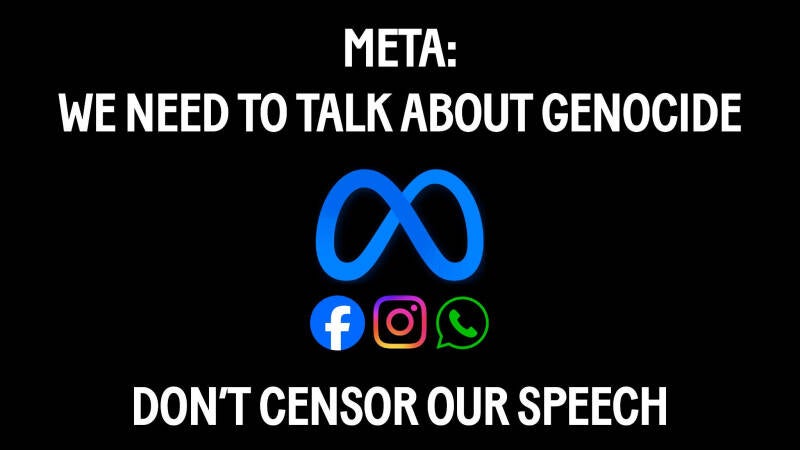
- Meta, already deeply complicit in genocide, is now considering heightening its censorship of Palestinian and ally voices who critique Zionism.
- Email Parliament now to tell them to stop the genocide!The Deadly U.S. Deal with $14 billion in weapons to Israel is coming through the House next. No more money for Israel’s crimes!
Executive Director

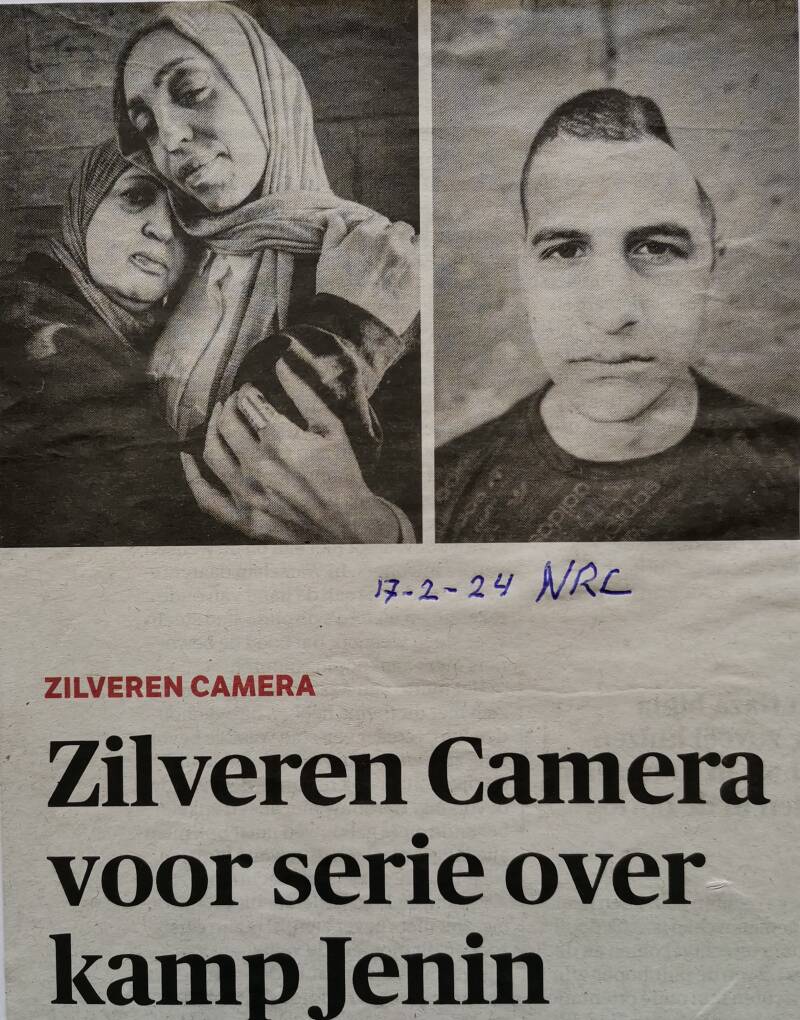
17 februari 2024


17 februari 2024

Today's headlines
Biden claims to push for temporary ceasefire, as US authorizes more weapons to Israel
Academics form national group to advocate for justice in Palestine
Faculty for Justice in Palestine, which already has 80 affiliate groups across college campuses, was formed to support students who are being targeted for their Palestine activism.
A reformed PLO that includes Hamas is the only hope
A reformed PLO that includes Hamas and other Palestinian factions will revive for many Palestinians the idea that the PLO still supports the right to resist. While this outcome remains a long shot, it is the only way forward with a positive future.

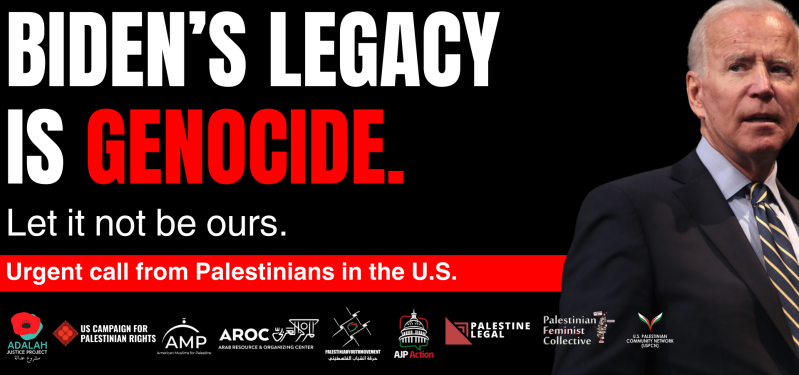
17 februari 2024
We call on the American people to continue to rise up for justice.
Take Action
Palestinians in Gaza are facing the threat of expulsion, and this administration is greenlighting it. The situation is dire, with Israel's relentless assault amounting to nothing short of genocide.
The appalling targeting of Rafah, where 1.5 million Palestinians are sheltering, seeks to drive Palestinians into permanent exile. We cannot stand idly by as our people face this brutality
What happens in Gaza is about much more than freedom for Palestine and our return to our homes. The struggle for Gaza is a struggle of all oppressed peoples.
We call on everyone of you who reads these words to not stay silent, not stay seated. Rise up. To those who have been on the streets with us, do not tire.
Do not allow the inhumanity to become normalized. Disrupt the complacency of everyday life, and refuse to turn a blind eye to the genocide unfolding before us.
Take Action

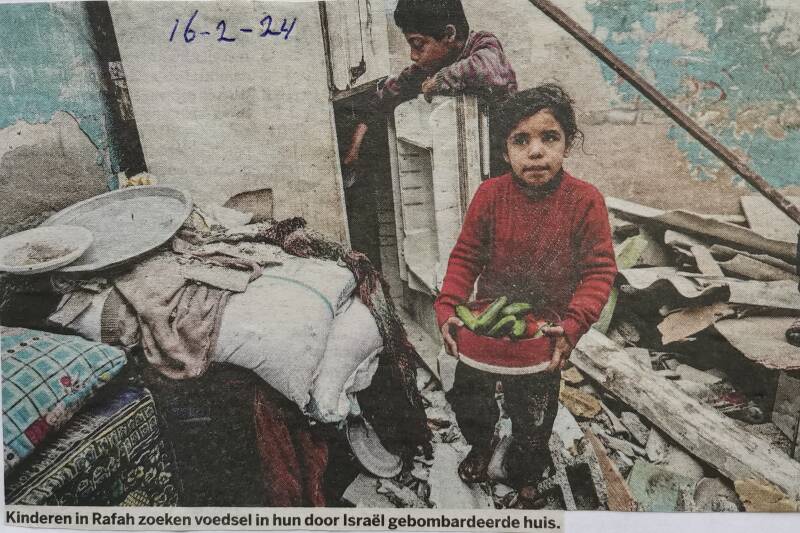
16 februari 2024


16 februari 2024
Maandag 12 februari werd bekend dat we de rechtszaak hebben gewonnen die we tegen de Nederlandse staat aanspanden. Samen met PAX en Oxfam Novib eisten wij dat Nederland zou stoppen met het leveren van onderdelen voor F-35 gevechtsvliegtuigen aan Israël.

Het Gerechtshof Den Haag stelde vast ‘dat er een duidelijk risico bestaat dat door Israël met de F-35-gevechtsvliegtuigen ernstige schendingen van het humanitaire oorlogsrecht worden gepleegd in de Gazastrook', en dat Nederland de uitvoer van militaire goederen daarom dient te staken.
Lees hier onze analyse van de uitspraak
Andere landen gingen Nederland voor
De uitspraak komt twee weken na de conclusie van het Internationaal Gerechtshof dat het ‘aannemelijk’ is dat Israël genocide pleegt in Gaza. De regionale regering van Wallonië en de regering van Spanje kondigden vorige week daarom al aan te stoppen met de wapenexport naar Israël vanwege het risico bij te dragen aan ernstige schendingen van het humanitair oorlogsrecht.
Uitspraak volop in het nieuws
In binnen- en buitenland was de uitspraak in de F-35-zaak volop in het nieuws. In Nederland schreven onder meer de NRC, Volkskrant en Trouw uitgebreid over het vonnis van het Gerechtshof en de kwalijke rol van Nederland als leverancier. Ook buitenlandse media zoals Mondoweiss, Al-Jazeera, New York Times, Washington Post en Deutsche Welle besteedden aandacht aan de zaak.
Staat in cassatie
Demissionair minister Geoffrey van Leeuwen voor Buitenlandse Handel heeft inmiddels bekendgemaakt dat de staat in cassatie gaat tegen de uitspraak. Volgens Van Leeuwen heeft het gerechtshof er onvoldoende rekening mee gehouden dat het aan de staat is om zijn buitenlandbeleid vorm te geven. Wel zal de minister de uitspraak van het hof uitvoeren.
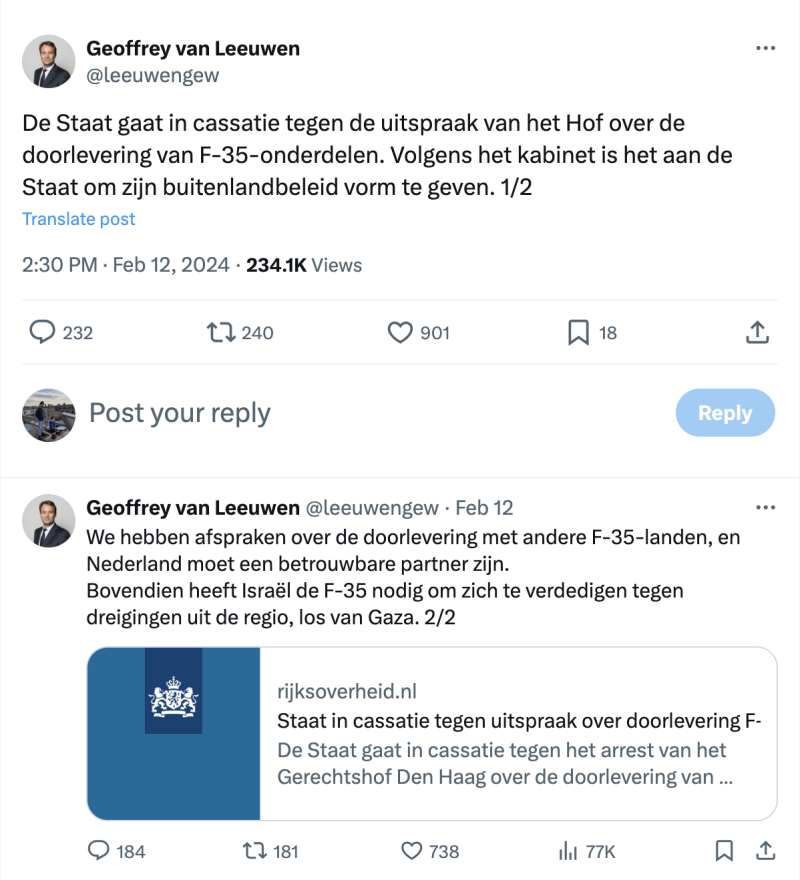
Ook de Tweede Kamer heeft zich inmiddels uitgesproken over de uitspraak. Op donderdag 15 februari stemde een meerderheid van de Kamer voor een motie van Ruben Brekelmans (VVD) waarin de regering wordt opgeroepen ‘om de brede zelfverdediging van Israël niet in het gedrang te laten komen’; en om ‘een betrouwbare partner te blijven binnen zowel het F-35-programma als toekomstige internationale defensiesamenwerking’.
De motie gaat volledig voorbij aan de redenen van het oordeel van het Hof, namelijk dat met levering 'een duidelijk risico bestaat op ernstige schendingen van internationaal humanitair recht'. Naar onze mening is de motie dan ook een verkapte oproep om de rechterlijke uitspraak te omzeilen.
Moed en inspiratie
Ondanks de reactie van de Nederlandse politiek heeft de overwinning ons een nieuwe dosis moed, energie en inspiratie gegeven voor de voortzetting van onze strijd voor rechtvaardigheid. De vele berichten van steun die wij van jullie kregen naar aanleiding van de uitspraak speelden daarin ook een belangrijke rol.
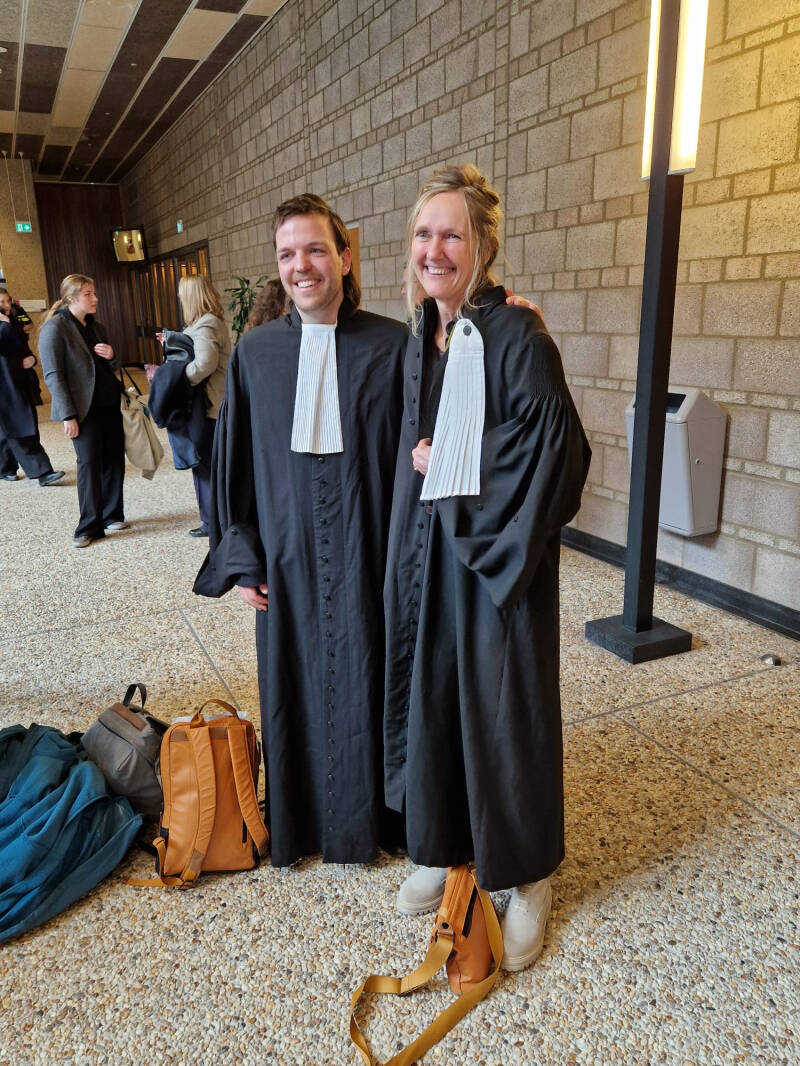
Internationaal Gerechtshof Hoorzittingen over situatie in Palestina van start
Van maandag 19 tot en met maandag 26 februari vinden de eerste hoorzittingen plaats van het Internationaal Gerechtshof in het kader van de gevraagde adviesopinie m.b.t. de ‘Legal Consequences arising from the Policies and Practices of Israel in the Occupied Palestinian Territory, including East Jerusalem’.
Er komen 52 landen en drie internationale organisaties aan het woord. Palestina bijt maandag de spits af. Nederland is dinsdag van 11.40 tot 12.10 uur aan de beurt. Israël ontbreekt.

De zittingen zijn online te volgen via de website van het Gerechtshof en UN Web TV.
Klik hier voor meer informatie over de hoorzittingen. Komend weekend publiceren wij een toelichting op de hoorzittingen op onze website.
Tweede Kamer debatteert met minister over Gaza, kolonistengeweld en F-35-zaak
Afgelopen dinsdag en woensdag debatteerde de Tweede Kamer met minister van Buitenlandse Zaken Hanke Bruins Slot (CDA). Ter sprake kwamen onder meer de catastrofale situatie in Rafah, het kolonistengeweld op de Westoever en de F-35 uitspraak. Dieptepunt van het debat was de inbreng van Kamerlid Raymond de Roon (PVV) die in een discussie met Stephan van Baarle (Denk) stelde dat Israël het ‘netjes doet’ in Gaza.
Grondoffensief in Rafah
Over Rafah gaf Bruins Slot aan dat een Israëlisch grondoffensief ‘onder de huidige omstandigheden’ ‘gewoon niet te rechtvaardigen’ zou zijn, en dat er ‘maximale druk’ gezet zou worden op Israel om dit te voorkomen. Op vragen van vrijwel de gehele linkse oppositie over wat die maximale druk inhoudt kwam de minister niet verder dan het herhalen van de oproep aan Israël om geen grondoffensief te starten. ‘Hopelijk’ zou dit Israël ertoe bewegen van het offensief af te zien.

Laurens Dassen (Volt) verweet de minister niet bereid te zijn tot het uiterste te gaan: 'Het zijn tandeloze woorden die geen enkel effect zullen hebben.' Kati Piri (PvdA) sprak van een ‘nieuwe Nakba’ als Palestijnen over de grens met Egypte zouden worden gedwongen. Voor Don Ceder (CU) zou dit scenario wel acceptabel zijn. Dat Ceder de situatie in verband bracht met etnische zuivering en een vergelijking maakte met de situatie van de Armenen in Nagorno Karabach veranderde opmerkelijk genoeg niets aan zijn standpunt.
Kolonistengeweld
De Tweede Kamer lijkt tot actie over te gaan met betrekking tot het kolonistengeweld op de Westelijke Jordaanoever. Dat gebeurt in navolging van de VS, het Verenigd Koninkrijk en Frankrijk, die de afgelopen weken sancties instelden.
Nederland werkt momenteel op Europees niveau aan het instellen van individuele sancties tegen gewelddadige kolonisten, maar de plannen worden door Hongarije en Tsjechië tegengehouden. De Kamer nam een motie aan die de minister oproept desnoods zonder Europese unanimiteit over te gaan tot het instellen van sancties. Verdergaande moties om ook organisaties en bedrijven die meewerken aan het uitbreiden en instandhouden van de nederzettingen werden door de minister afgeraden en behaalden geen meerderheid, ondanks een voorstem van haar eigen partij CDA.
F-35
Kamerlid Dobbe (SP) kwalificeerde het besluit van de staat om in cassatie gaat tegen de hierboven bespreken uitspraak van het Haags Gerechtshof als ‘verschrikkelijk’ en ‘ongeloofwaardig’ gezien de zogenaamde zorgen over de situatie in Rafah.
De regering wil dat er meer duidelijkheid komt van de Hoge Raad over de vraag 'in hoeverre wij ons eigen buitenlandbeleid mogen bepalen'. Maar het Gerechtshof gaf hier maandag al glashelder antwoord op: het beleid wordt beperkt door 'verplichtingen onder het EU Gemeenschappelijk Standpunt, het Wapenhandelsverdrag en art. 1 van de Geneefse Conventie'. Het is de Nederlandse Staat zelf die zich hieraan heeft gecommitteerd.
De verslagen van de debatten zijn hier en hier terug te lezen. Alle ingediende moties (zowel aangenomen als verworpen) staan hier.
Petitie Nederland, laat Palestijnse vluchtelingen niet in de steek
De gezondheidszorg in Gaza staat op instorten. Veel mensen hebben honger, ziektes verspreiden zich razendsnel en ouders hebben geen toegang meer tot schoon water en babyvoeding.
Te midden van deze humanitaire ramp stopt Nederland de financiering van UNRWA, de VN-organisatie voor hulpverlening aan Palestijnse vluchtelingen.
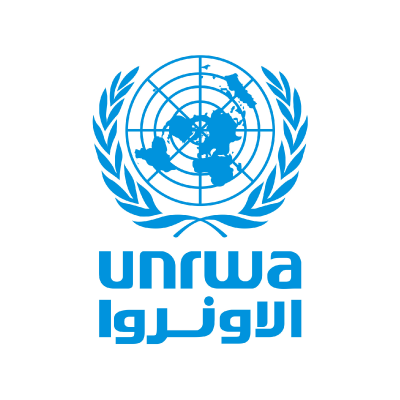
UNRWA is de belangrijkste reddingslijn voor meer dan 2 miljoen mensen in Gaza.
Daarom is Amnesty een petitie gestart, met een duidelijke oproep aan de Nederlandse regering:
de steun aan UNRWA moet worden hervat.
Teken de petitie
Opinie Het grootste obstakel voor vrede is Israëls straffeloosheid
Op 8 februari 2024 organiseerde de commissie voor Buitenlandse Zaken van de Tweede Kamer een rondetafelgesprek over de situatie in het Midden-Oosten en de oorlog in Gaza. Eén van de deelnemende experts was Mouin Rabbani, lid van de Raad van Advies van The Rights Forum. Op onze website publiceerden wij zijn inbreng tijdens het rondetafelgesprek.
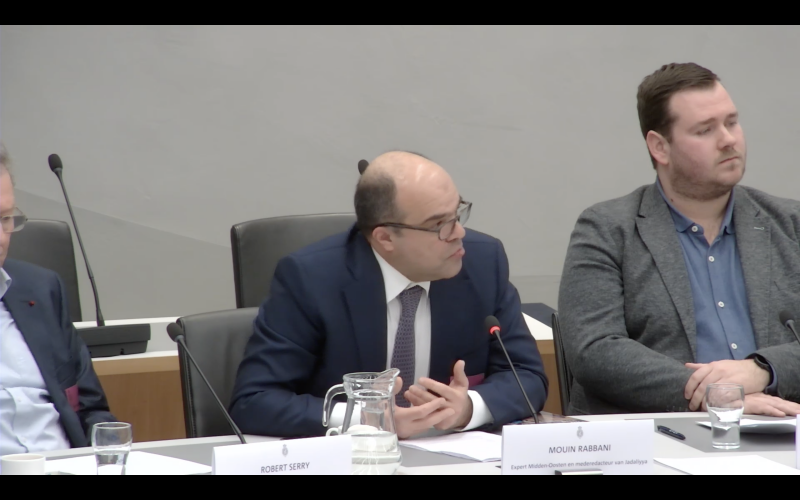
'The Middle East is experiencing a moment of truth. And so are we. Our governments, our political parties, our civic organisations, and indeed each of us as members of global society, must now choose whether to be part of the solution or part of the problem. Our actions, and the choices we make, are being recorded for posterity. History will – and should – judge us accordingly.'

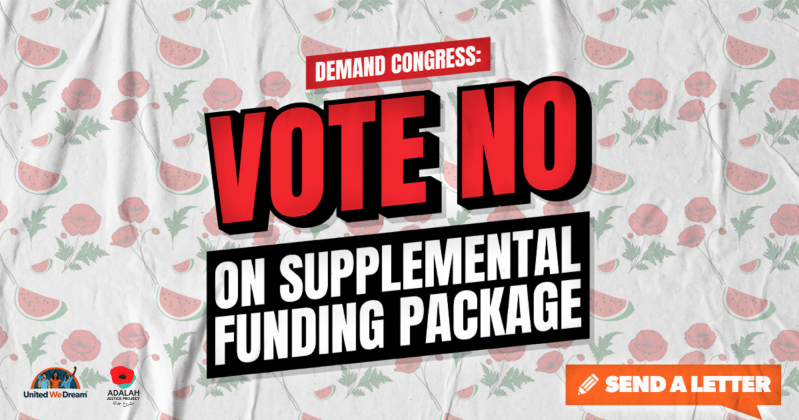
16 februari 2024
Yesterday, more than 200 youth from across the country staged a “die-in” at the Capitol to demand Congress vote NO on a harmful supplemental funding bill that would increase funding for Israeli weapons.
Immigrant, Palestinian, Jewish, and Black and brown youth came together to demand a permanent ceasefire in Gaza.

WRITE CONGRESS
Earlier this week, the Senate voted to pass its deadly foreign aid package that would send $14.1 billion in weapons to Israel following months of bad-faith efforts by Senators who attempted, but failed, to include harmful anti-immigrant provisions.
In the coming days and weeks, the debate will be taken up in the House where funding to Israel and funding for border militarization will be linked once again.
Capitol Police arrested over a dozen youth during their civil disobedience action yesterday. But we will not be silenced or intimidated.

Photo Credit: Eman Mohammed; IG:@emanit
We know that the struggle against genocide in Palestine is tied to the struggle against militarism here in the U.S.
We won’t stop fighting until all of us are free.
Alia El-Assar
Director of Media Organizing
Adalah Justice Project
Adalah Justice Project is a Palestinian-led advocacy organization based in the U.S. that builds cross-movement coalitions to achieve collective liberation.


Today's headlines
Israel cuts electricity to critical Nasser Hospital patients, forces staff to evacuate

Medicins Sans Frontiers reports "an unknown number of dead and wounded” following Israel's attack on Nasser Hospital. UNRWA says 84% of Gaza health facilities have been impacted by Israeli attacks, and 70% of civilian infrastructure has been damaged.
16 februari 2024
Former Mossad official: Children in Gaza over the age of 4 deserve to be starved
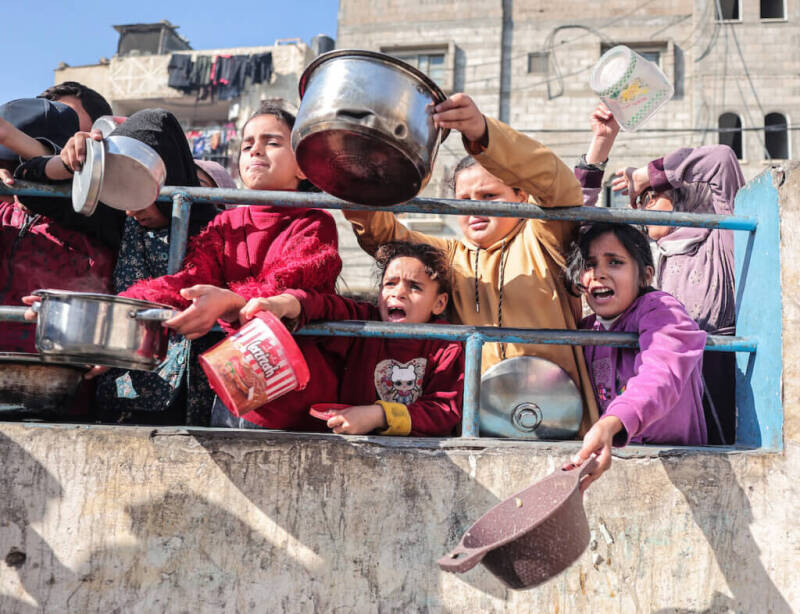
In an interview on Israeli television, former Mossad official Rami Igra said all Palestinians in Gaza over the age of 4 are "involved" and deserve to face Israel's collective punishment policy of withholding food and humanitarian aid.
From the cities to the countryside, armed resistance is spreading in the West Bank

Armed resistance in the West Bank had been concentrated in larger cities, but since October 7 it is spreading. “Resistance in Azzun used to be non-armed,” a resident of the small town tells Mondoweiss. “Then everything changed after October 7.”

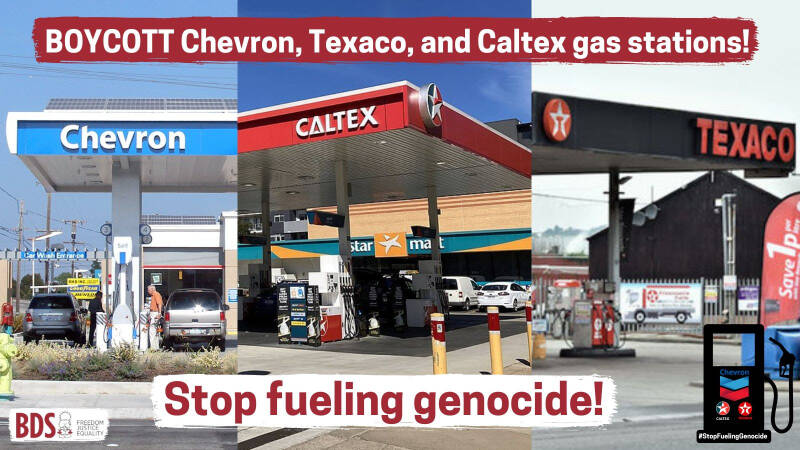
Chevron fuels apartheid and environmental devastation.
We have already seen organizations taking action to escalate pressure on Chevron, including by activists in Houston who protested Chevron’s sponsorship of the Houston marathon, and climate activists in California, who led a protest at Chevron’s Richmond refinery. They also disrupted two Chevron executives’ private events leading up to the protest. Sign their pledge to boycott Chevron, and look out for more information and resources to assist campaigning in the coming weeks and months.


Hostilities in the Gaza Strip and Israel
Flash Update #120
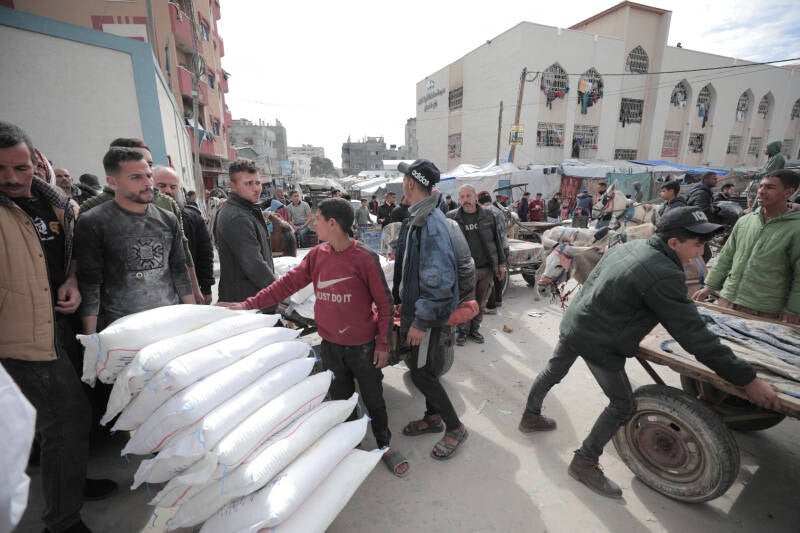
The United Nations and its humanitarian partners in Gaza work to deliver the supplies and services essential for people’s survival despite operational conditions that are nearly impossible, including heavy import restrictions, systematic denial of access to large areas, and the constant risk of coming under fire. Photo by UNRWA
16 februari 2024
Key points
- Intense Israeli bombardment from air, land and sea continues to be reported across much of the Gaza Strip, resulting in further civilian casualties, displacement, and destruction of civilian infrastructure. Widespread ground operations and heavy fighting between Israeli forces and Palestinian armed groups also continue to be reported, especially in the centre of Khan Younis and east of Deir al Balah.
- Between the afternoon of 15 February and 11:00 on 16 February, according to the Ministry of Health (MoH) in Gaza, 112 Palestinians were killed, and 157 Palestinians were injured. Between 7 October 2023 and 11:00 on 16 February 2024, at least 28,775 Palestinians were killed in Gaza and 68,552 Palestinians were injured, according to MoH in Gaza.
- Intensified airstrikes on Rafah, where more than half of Gaza’s population are crammed into less than 20 per cent of the Gaza Strip, and statements by Israeli officials about a ground operation in Gaza have reportedly led to the movement of people out of Gaza’s southernmost governorate toward Deir al Balah. On 14 February, the International Committee of the Red Cross (ICRC) emphasized that international humanitarian law “protects all civilians from the effects of hostilities, including those who may not be able to depart Rafah,” and added: “Israel, as the occupying power, must ensure that the basic needs of the civilian population are met. In addition, it is necessary … that the trickle of aid being let into Gaza becomes a steady, robust stream: food, drinkable water, hygiene items, medicines, and materials to do basic sanitation and allow for adequate shelter.”
- Between the afternoons of 15 and 16 February, two Israeli soldiers were reported killed in Gaza. As of 16 February, 232 soldiers have been killed and 1,368 soldiers injured in Gaza since the beginning of the ground operation, according to the Israeli military. In addition, over 1,200 Israelis and foreign nationals have been killed in Israel, according to the Israeli authorities, the vast majority on 7 October. As of 16 February, the Israeli authorities estimate that about 134 Israelis and foreign nationals remain captive in Gaza and reportedly include fatalities whose bodies are being withheld.
- As of 16 February, the Israeli forces’ operation in the the Nasser Hospital complex in Khan Younis continues. The Israeli military alleged that Hamas was holding hostages or withholding the bodies of Israelis within the compound, and subsequently reported that its forces arrested twenty of the suspects from the 7 October attacks in Israel. On 15 February, the Ministry of Health in Gaza reported that hundreds of patients and staff had been relocated to a building within the hospital compound, where they lacked food, water, and baby formula, and that the hospital generators had stopped functioning, putting the lives of six patients on ventilators in the intensive care unit (ICU), and three premature babies, at risk. On the morning of 16 February, the Ministry of Health reported that five ICU patients had died due to the depletion of oxygen. On 15 February, Médecins Sans Frontières (MSF) reported that the hospital had been shelled, killing and wounding an undetermined number of people, and that one of its staff was unaccounted for. On 15 February, Martin Griffiths, Under-Secretary-General for Humanitarian Affairs and Emergency Relief Coordinator, expressing his concern about developments at the hospital, stated the “wounded and sick, as well as medical personnel and facilities must be protected. All feasible precautions must be taken to spare patients, staff and civilians sheltering in the hospital. Hospitals must be places of greater safety, not of war.”
- According to the Food Security Sector (FSS), a consistent and dependable food supply to serve the entire population of Gaza continues to be hindered by frequent border closures, longstanding import restrictions of goods into Gaza, damage to critical infrastructure, and the security situation. Food insecurity in North Gaza and Gaza governorates has especially reached an extremely critical state, given significant restrictions on the delivery of humanitarian assistance. In Rafah, humanitarian conditions have become increasingly severe, with continued reports of people stopping aid trucks to take food. Vulnerable segments of the population, including children, the elderly, and people with underlying health conditions, are particularly susceptible to the risk of malnutrition.
- Between 1 January and 12 February, 51 per cent of missions planned by humanitarian partners to deliver aid and undertake assessments to areas to the north of Wadi Gaza were denied access by the Israeli authorities. During the same period, 25 per cent of missions planned to areas assessed as necessitating coordination to the south of Wadi Gaza were denied by the Israeli authorities. Missions to areas not requiring coordination to the south of Wadi Gaza are not included in these statistics.
- On 15 February, UNRWA reported that its Rehabilitation Centre for the Visually Impaired in Gaza city, which had provided services and recreational activities for affected children across Gaza, has been destroyed. Some 321 incidents impacting UNRWA premises in Gaza have been reported since 7 October 2023, including at least 45 incidents of military use and/or interference at UNRWA premises. In the same period, at least 396 IDPs sheltering in UNRWA shelters have been killed and at least 1,383 injured. As of 15 February, the total number of UNRWA staff members killed since the beginning of hostilities is 158.
Hostilities and casualties (Gaza Strip)
The following are among the deadliest incidents reported on 14 February, mainly in Gaza city and Deir al Balah governorate:
- On 14 February, at about 14:00, three Palestinians were reportedly killed, when a civilian car was reportedly hit in Gaza city.
- On 14 February, at about 15:00, 15 Palestinians were reportedly killed, when a residential building in An Nuseirat Refugee Camp in Deir al Balah, was hit.
- On 14 February, at about 16:00, five Palestinians were reportedly killed, when a group of people in Az Zaytoun neighbourhood in Gaza city, was hit.
- On 14 February, at about 16:00, six Palestinians were reportedly killed, and 18 others were injured, when an area behind Al Aqsa Hospital, in Deir al Balah, was hit.
- On 14 February, at about 16:00, six Palestinians were reportedly killed, and 10 others were injured, when a residential building in An Nuseirat Refugee Camp in Deir al Balah, was hit.
- On 14 February, at about 17:00, three Palestinians, including a journalist, his wife and son, were killed when a car in Ash Sheik Radwan neighbourhood in Gaza city was hit.
West Bank Updates
- Since 7 October 2023, 389 Palestinians have been killed, including 100 children, and 4,503 Palestinians, including 698 children, have been injured in conflict-related incidents across the West Bank, including East Jerusalem, and Israel. During the same period, 10 Israelis, including four members of security forces, were killed and 75 injured in conflict-related incidents in the West Bank, including East Jerusalem, and Israel.
- Since 7 October 2023, OCHA has recorded 552 Israeli settler attacks against Palestinians that resulted in Palestinian casualties (51 incidents), damage to Palestinian-owned property (440 incidents), or both casualties and damage to property (61 incidents).
- Since 7 October 2023, 524 people, including 256 children, have been displaced in Area C and East Jerusalem after their homes were demolished due to the lack of Israeli-issued building permits, which are almost impossible to obtain.
- Since 7 October 2023, 814 Palestinians, including 332 children, have been displaced, following the destruction of 127 homes during operations carried out by Israeli forces across the West Bank. About 94 per cent of the displacement was reported in the refugee camps of Jenin, Nur Shams and Tulkarm.
Funding
- The Flash Appeal for the occupied Palestinian territory (oPt) was extended through the end of March 2024 on a “no cost” basis given that enabling operational conditions for the implementation of planned activities did not materialize, and requirements were split between the last quarter of 2023 and the first quarter of 2024. The Flash Appeal, which was launched in October 2023 and updated in November 2023, requests US$1.2 billion to meet critical needs of 2.7 million people across the oPt (2.2 million in the Gaza Strip and 500,000 in the West Bank, including East Jerusalem). As of 13 February, member states disbursed a total of $900.7 million against the updated Flash Appeal (73 per cent); this includes $611.7 million out of $629.1 million (97 per cent) requested for October-December 2023 and $289 million out of $600 million (48 per cent) requested for January-March 2024. For funding analysis, please see the Flash Appeal Financial Tracking dashboard.
- The occupied Palestinian territory Humanitarian Fund (oPt HF) and the Central Emergency Relief Fund (CERF) are currently funding more than 94 ongoing projects in the Gaza Strip to address urgent humanitarian needs. These interventions, totalling about $77 million, cover needs in the areas of food security, shelter, water, sanitation and hygiene (WASH), health and protection. Since October 7, the oPt HF has received a total of $86 million in contributions from member states and private donors. Private donations are collected directly through the Humanitarian Fund. Funding for recently approved projects includes $3.5 million for the Emergency Fleet Augmentation project that aims to enhance aid delivery to Gaza under the oPt HF, and $700,000 for strengthening collective, gender-responsive and inclusive Accountability to Affected People (AAP) in the oPt under the CERF.
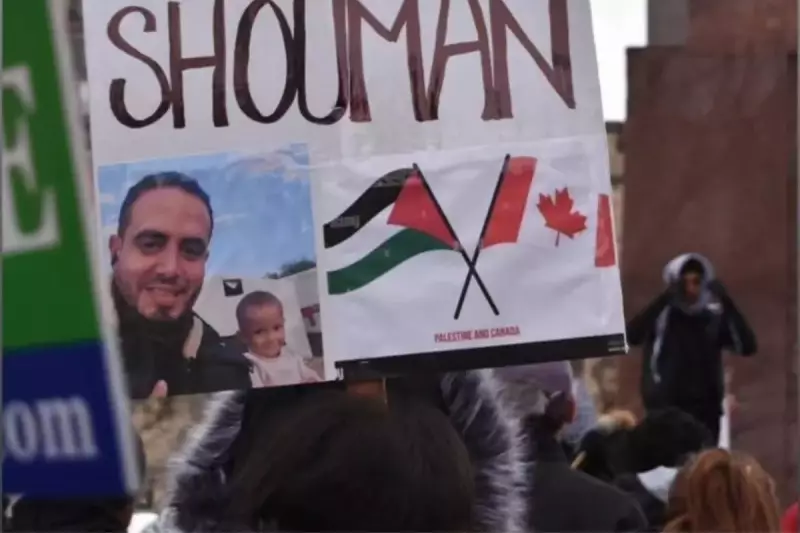
HUMANITARIAN NEEDS AND RESPONSE UPDATES | 5–12 February
Health
Needs
- High need for primary health services in informal shelters hosting IDPs.
- The high number of surgeries and procedures has led to increased demand for anaesthetic and analgesic medications which are in short supply.
- There is a need to increase routine immunization coverage and conduct a catch-up campaign.
- Provision of medication for non-communicable diseases and psychotropics is needed.
- There is a need to reduce overcrowding in maternity hospitals.
- The continued siege around some hospitals is significantly affecting their case management capacity.
- Laboratory equipment and reagents are needed to support diagnostics.
- Blood and blood products in hospitals are needed for emergencies and medical procedures to ensure that patients receive timely transfusions.
Response
- Cluster partners are reaching a weekly average of about 450,000 people in need of various health services and supplies.
- Ongoing disease surveillance at all health facilities is underway to ensure early diagnosis and treatment of cases as well as early detection of potential outbreaks.
- Planning to open stabilization centres for acute malnutrition cases with medical complications. One will be at Tal as Sultan and another in one of the field hospitals.
- Twelve emergency medical teams were deployed, assisting more than 16,000 patients.
- A weekly average of nearly 300,000 primary health care consultations was reported by partners.
Challenges and Gaps:
- There is a need to strengthen referral mechanisms between hospitals.
- The influx of IDPs migrating to Rafah has overwhelmed the available bed availability in hospitals, leading to insufficient capacity to meet the healthcare needs of the population. Heigtened insecurity in Rafah is also greatly affecting response activities.
- Heightened insecurity and limited access to health facilities in the northern and middle governorates continue to present major challenges for partners to respond.
- Persisting siege of hospitals remains a major challenge.
- Referring patients outside of Gaza remains a challenge, as the waiting list continues to grow.
- Partner operations continue to be negatively affected by the displacement of staff, social stresses and telecommunication challenges.
- Limited access to proper WASH facilities is hindering prevention of diseases.
Nutrition
Needs
- There is a need for continued prepositioning of essential nutrition supplies to ensure timely access to life-saving supplies in areas facing significant challenges.
- Ongoing collaboration with partners is still needed to enhance capacity in Mid-Upper Arm Circumference (MUAC) screening, identify cases of Severe Acute Malnutrition (SAM) and Moderate Acute Malnutrition (MAM), and the delivery of effective treatment.
- There is an urgent need to establish a stabilization centre in Rafah for treating children suffering from severe malnutrition and suffering from complications.
Response
- Thirty-six staff members (17 Female, 19 male) received training on MUAC screening to enhance early case identification and treatment. The training is crucial for enhancing the capacity of our partners and expanding MUAC screening across affected areas.
- Five implementing partners continue conducting screenings for malnutrition in 4,466 children aged 6 to 59 months, using MUAC measurements in shelters and health facilities. Children who are detected with MAM and SAM are referred for treatment using simplified treatment protocol.
- The Nutrition Cluster continues to conduct MUAC training sessions every week.
- UNICEF and WFP continue to collaboratively stock up nutritional supplies in the Gaza Strip and the West Bank.
- The Nutrition Cluster is partnering with WHO to set up a stabilization centre in Rafah with five beds to treat children with SAM and suffering from medical complications.
Challenges and Gaps
- Ongoing hostilities in Gaza have caused significant food shortages, poor access to clean water and sanitation facilities, and disruptions to healthcare services. This situation is putting children under five and pregnant or lactating women (PLW) at a relatively higher risk of malnutrition.
- Without private areas for breastfeeding women, it is challenging to encourage and sustain breastfeeding practices. This lack of privacy could have lasting negative effects, particularly on children under two years of age and new-born babies.
Food Security
Needs
- The humanitarian situation in North Gaza and Gaza governorates is extremely critical, exacerbating the challenges faced in delivering essential aid. The food security situation in the Middle Area and southern governorates is particularly dire, with the majority of the population in extreme hunger.
- In Rafah, in the south the situation is becoming increasingly dire, given the expected ground attack. The humanitarian crisis in Rafah is alarming, with makeshift shelters congested and the population desperate, hungry, and terrified. People in Rafah are reported to be in such dire need that they stop aid trucks to take food and eat it immediately, highlighting the severity of their desperation and hunger.
- There is an urgent need to augment the fleet of delivery trucks to ensure the entire population's nutritional requirements are met and to improve healthcare services, including primary health services, routine immunization coverage, and the provision of medication for non-communicable diseases.
- Vulnerable segments of the population, including children, the elderly, and individuals with underlying health conditions, are particularly susceptible to the risk of malnutrition. Partners are working to ensure that aid reaches these vulnerable groups.
- Establishing secure and uninterrupted humanitarian corridors in Gaza, with the support of the private sector and a focus on critical resources like fuel and cooking gas, is essential to address the immediate needs of the affected population and support the overall humanitarian response.
Response
- Between 5 and 11 February, a total of 18 partners engaged in providing food assistance across the Gaza Strip. Around 1.8M people were reached as per the following geographical distribution:
- Rafah Governorate received about 40 per cent of the total food assistance.
- Deir al Balah received about 25 per cent of the total food assistance.
- Khan Younis received around 20 per cent of the food assistance.
- Northern Gaza Strip received around 15 per cent of food assistance.
Challenges and Gaps
- The ongoing airstrikes and heavy fighting in Gaza continues to impact the flow of food. Frequent border closures, restrictions, and security concerns hinder the ability to ensure there is a consistent and dependable food supply.
- The escalation of hostilities has substantially damaged critical infrastructure, including roads, electricity, and water supply systems, exacerbating severe impediments to the efficient distribution of food aid.
- The volatile security situation poses risks to food distribution, making it challenging to conduct safe and efficient operations.
Shelter and Non-Food Items (NFI)
Needs
- Some 1.7 million people are need of shelter and NFI assistance, including 900,000 people reached with partial shelter and NFI assistance. Partial assistance means that although a household has received some shelter and NFI items, not all their needs have been met.
- Urgent needs are tents, sealing-off kits (SOKs) and NFIs, including bedding, kitchen sets, and winter clothing. SOKs can be used to consolidate makeshift shelters or to protect damaged housing to facilitate return where possible.
- Technical assistance is required to improve self-built shelters ad spontaneous/informal sites. Also see Shelter Cluster snapshot, as of 7 February.
Response
- A total of 26 partners are providing assistance. Some 28,000 tents, 7,600 SOKs, and 35,000 NFI kits are currently in the pipeline.
- The vast majority of assistance is currently provided in-kind; cash will be pursued further when market conditions allow.
- Further details in the Cluster response strategy and website dashboard.
Challenges and Gaps:
- Slow entry of items into Gaza due to limited aid trucks and bureaucratic processes are complicating procurement.
- Rising prices of shelter materials in neighbouring markets, including high freight rates and shipping costs.
- Need to restore commercial imports and re-establish local markets to relieve pressure on in-kind provision.
- Restrictions on or denial of the entry of key shelter items including timber, hand tools, and cooking stoves.
- Lack of security and access to IDP locations, including logistical challenges such as lack of fuel and rising social tensions because of the limited quantity of aid available in comparison to outstanding needs.
- Unplanned sites and lack of adequate tools is leading to water damage to makeshift shelters and tents, and recurrent displacement resulting in loss and need for re-distribution of assistance.
Water, Sanitation and Hygiene (WASH)
Needs
- Some 2.25 million people need WASH Assistance. Two-thirds of IDPs are concentrated in the Rafah area and urgently need WASH support.
- Access to safe drinking water for the entire population of Gaza is needed, especially for IDPs and in the northern areas of Gaza.
- Currently only 5.7 per cent of water is being produced from all the water sources in Gaza, compared to pre-war production levels. Safe drinking water and water for domestic use, including personal hygiene, remains very limited.
- Only 17 per cent of the 284 groundwater wells are operating with limited hours; some 39 wells were destroyed and 93 were moderately to severely damaged.
- None of the wastewater treatment systems are working due to damage, lack of fuel/power supply, and maintenance. Municipalities have limited water treatment, no water quality testing capacity, and no fuel for solid waste management, and operations have been suspended since 19 November 2023.
- Mekorot Connections: Two of the three water pipelines are not functioning (the Mentar pipeline since the beginning of the conflict, and the Bani Suhaila pipeline since 18 December. The Bani Saeed pipeline is functioning, but is currently producing 6,000 cubic metres per day, which is only 42 per cent of its full capacity. Plans are in place to repair the Bani Suheila pipeline, but there are challenges for safe access, communication, and coordination of repair activities.
- Two out of out of three desalination plans are partially operating: the Middle Area plant produces an average of 750 cubic metres per day and is distributed via water trucking and the South Gaza desalination plant produces 1,700 cubic metres per day; around 600 cubic metres are distributed via water trucking and 1,100 cubic metres via the water network.
- The UAE's small desalination plant located on the Egyptian side of Rafah, operates at full capacity, providing 2,400 cubic metres per day, following the construction of a 3-kilometre transmission line.
Challenges and Gaps
- The risk to public health is intensified due to an acute scarcity of hygiene materials and adequate sanitation infrastructure. Persistent anecdotal reports of Hepatitis A cases in Gaza, as recorded by UNRWA and the Health Cluster, highlight ongoing concerns.
- The constraints of the clearance and transport of items considered to be dual-use into Gaza remain a limiting factor of the overall WASH response.
- Sanitation remains a major issue and the situation continues to deteriorate. Despite significant efforts by UNICEF through its partners to construct 80 family latrines this week, the sanitation coverage remains very low. WASH partners continue to construct family latrines, but the lack of cement, wood and other construction materials slows down the progress.
- The crisis is exacerbated by a fuel shortage, hindering sewage station operation and leading to environmental and public health concerns. The situation is worsened by continuous restricted access to essential sanitation supplies and services in Gaza.

Education
Needs
- More than 625,000 students and nearly 23,000 teachers in the Gaza Strip have been affected by school closures and attacks on education, leaving them with no access to education or a safe place.
- According to the Ministry of Education, as of 6 February, more than 4,851 students and 239 educational staff have been killed and more than 8,227 students and 836 teachers have been injured in the Gaza Strip since 7 October.
- Some 92 per cent of all school buildings in Gaza are being used as shelters for IDPs and/or have sustained varying levels of damage. Some 392 schools (79 per cent of the total school buildings in Gaza) have sustained damage, including 141 schools that sustained major damage or were destroyed. Combined, these schools previously served some 457,019 children and more than 17,043 teachers. The North, Gaza, and Khan Younis governorates have been especially impacted, accounting for 76 per cent of all damaged schools (source: Education Cluster Damaged School Dashboard.)
- The Education Cluster conducted a Satellite-derived Damage Assessment of all Gaza schools to verify damage to schools based on proximity to damaged sites. Key findings include:
- Satellite-derived Damage verification exercise confirmed the large level of damage to schools previously reported by the cluster in Gaza.
- Actual damages to school infrastructure might be 15 to 20 per cent higher than what has been previously reported by the Education Cluster.
- At least 55 per cent of schools in Gaza will either need full reconstruction or major rehabilitation work to be functional again.
- One quarter of directly hit and damaged schools are UNRWA-run schools.
- Forty-five per cent of school buildings that have been used by IDPs as shelters, have been either directly hit or damaged.
- The satellite-derived images provide evidence for military use of schools.
- Education partners are concerned about reports, videos and pictures depicting schools being used for military operations by Israeli forces, including their use as detention and interrogation centres, or as military bases.
- Key priorities include the provision of Education in Emergencies (EiE) recreational activities and psychological support, including Social Emotional Learning (SEL) activities to children in shelters and designated emergency shelters (DESs); establishing Temporary Learning Spaces (TLS) in shelters/DESs to start non-formal learning for children; and provision of emergency supplies and learning kits. In addition, a key need is to identify and support of children with disabilities and other needs, with assistive devices for learning.
Response
- Since October 2023, eleven partners have reached more than 135,126 students and teachers with psychosocial support, emergency learning, recreational supplies and activities, and awareness sessions in the Deir al Balah, Khan Younis, and Rafah governorates. Most of the cluster responses are delivered by local partners (source: Education Cluster 5W dashboard).
- UNICEF, with three of its partners and Teacher Creativity Centre, is working on establishing TLS to start non-formal education activities with displaced children in shelters/DESs.
- The Education and the Shelter Clusters are jointly carrying out advocacy activities to highlight the devastating impacts of the current situation in Gaza on children and the inextricable links between shelter and schooling.
Challenges and Gaps:
- No activities have been undertaken in the North Gaza and Gaza governorates due to ongoing hostilities and access challenges.
- As of 11 February, the education response remains significantly underfunded, receiving less than 10 per cent of its requirements. Urgent funding is required to meet immediate response requirements.
Logistics
Response
- The Logistics Cluster has conducted the Gaps and Needs Analysis Survey to identify needs and gaps, and to adapt the Cluster`s strategy and services accordingly. Findings will be made available by mid-February.
- The Logistics Cluster has made available to partners an additional common warehouse in the North Camp of Rafah, bringing up the total storage capacity to 2,470 m2. The Logistics Cluster has secured storage space at the WFP warehouse in Amman with a capacity of 1,300 m2 for consolidation and pre-positioning of cargo.
- As of 11 February, the Logistics Cluster in Rafah has stored 6,696 cubic metres of cargo for of 16 organisations and supported 21 organizations with cargo notification service.
- On 6 February, the Logistics Cluster facilitated access for an inter-agency convoy (five partners), which transported a total of 335 metric tons of relief items on 24 WFP trucks from Jordan to Gaza, via the King Hussein Bridge.
Challenges and Gaps:
- The storage and transport capacity inside Gaza remains limited. The Logistics Cluster continues to facilitate access to temporary storage, transport from handover points to common warehouses, and cargo notification trans-shipment services.
- The Logistics Cluster is coordinating the pipeline for incoming cargo through the Egyptian and Jordanian corridors for the coming three months. This is a vital exercise for operational planning, in terms of understanding the resources available and making allocations based on the prioritization list. Partners have received a dedicated form and are requested to update it weekly. Partners who have not received the form can reach out to palestine.logcluster@wfp.org.
Emergency Telecommunications
Needs
- Recurrent telecommunications shutdown in the Gaza Strip continues to restrict people from accessing life-saving information and is impeding other forms of humanitarian response.
Response
- On 8 February, the Emergency Telecommunications Cluster (ETC) presented a one-month telecommunications planning and implementation document to the Humanitarian Coordinator, Deputy Humanitarian Coordinator and other agencies in Rafah. The plan should inform humanitarian responders, clusters, and agencies about achievable telecommunication goals with or without the anticipated humanitarian pause, provided the successful importation of the required telecommunications equipment.
- Since 9 January, the ETC has supported humanitarian agencies with Information and Communication Technology (ICT) assessments, technical advice and information, repairs, and guidance on the use of ICT equipment in Gaza.
- Since its establishment on 3 November 2023, the ETC has been engaging with the Israeli authorities to obtain authorizations to import all essential telecommunications equipment into Gaza and provide independent access to communications for humanitarian responders.
Challenges and Gaps
- Limited access to electricity, fuel, and telecommunications services continues to hamper the humanitarian response in Gaza.
- The import of telecommunications equipment into Gaza is fraught, lengthy, and extremely challenging.

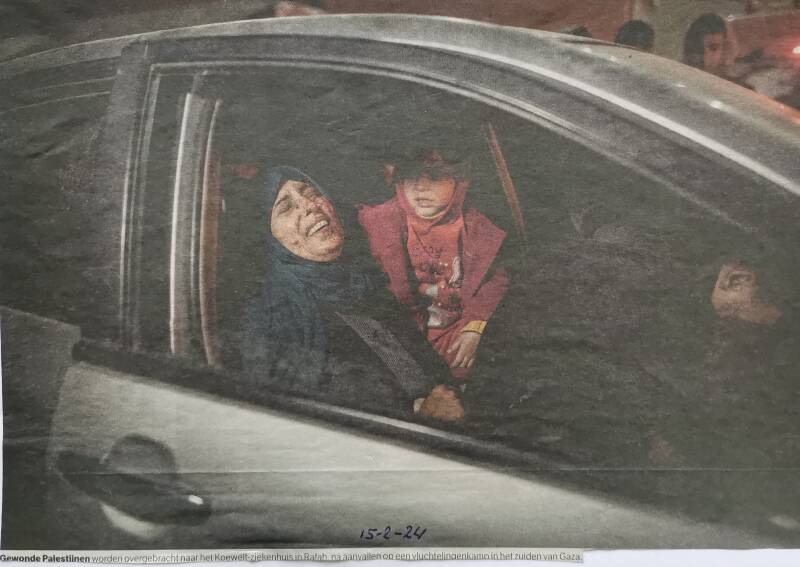
15 februari 2024


Officials keep admitting Biden’s anger at Israel isn’t real.
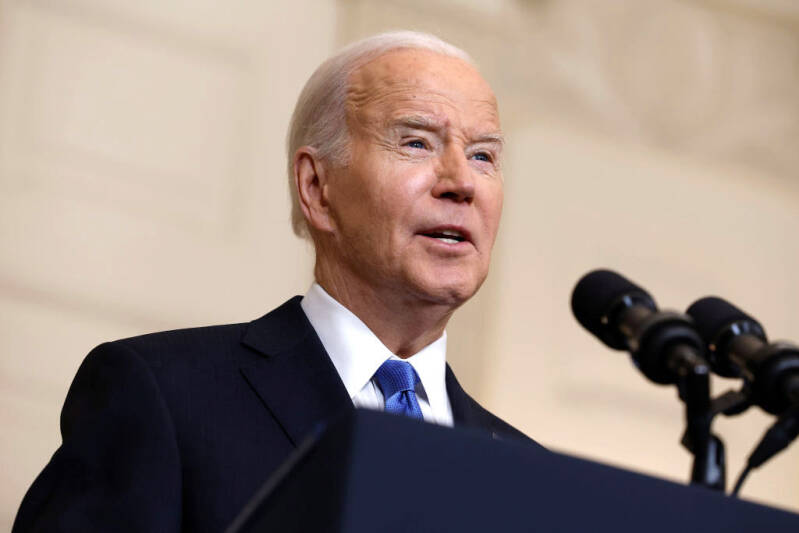
15 februari 2024
Buried in one of the recent spate of stories about how President Joe Biden is really, really upset with Benjamin Netanyahu when no one’s looking — part of a newly urgent press campaign by the White House to distance the president from his own increasingly unpopular policy on the brutal Gaza war — was a telling line: “Yet, even as Biden has escalated his rhetoric, he is not yet prepared to make significant policy changes, officials said. He and his aides continue to believe his approach of unequivocally supporting Israel is the right one.”
Besides comically negating the fourteen paragraphs that came before it emphasizing Biden’s supposed unhappiness with Israel’s conduct in the war, the line corroborates what has been, from time to time, explicitly stated in reporting on Gaza: that Biden is and has been consciously and deliberately helping Israel carry out what the International Court of Justice has now ruled is plausibly a genocide.
Here’s the latest...
An invasion of Rafah would be the most dangerous stage of Israel’s genocide of Palestinians yet, causing death on a scale unseen even in these four months of sheer brutality.


Today's headlines
Israel bombards Nasser hospital, reports of Egypt preparing ‘buffer zone’ ahead of Gaza expulsion
Leila Warah
15 februari 2024
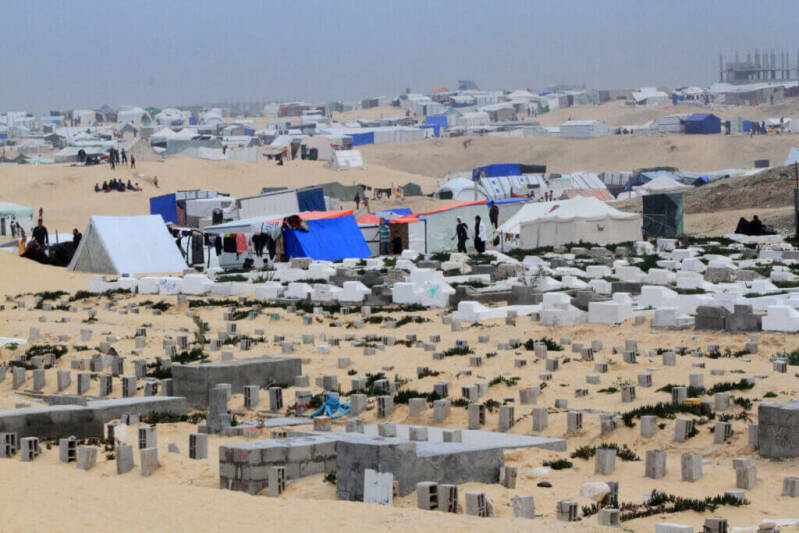
Israeli forces bombarded the Nasser Medical Complex in Khan Yunis, killing and injuring patients and Palestinians sheltering in the hospital. A number of doctors and medical staff were also reportedly tied up and detained from the hospital.
UAW Arab Caucus: UAW must move from ceasefire declaration to stopping weapons for Israel
UAW Arab Caucus
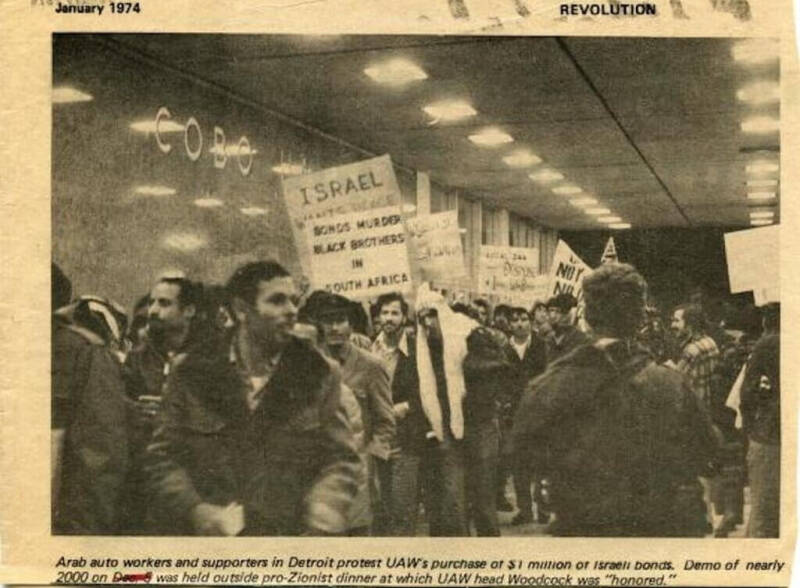
UAW Arab Caucus to union president Shawn Fain: The union must take action to translate the UAW’s ceasefire declaration to practical interruption of the weapons our UAW siblings are making, sending to Israel, and are being used to kill our families.

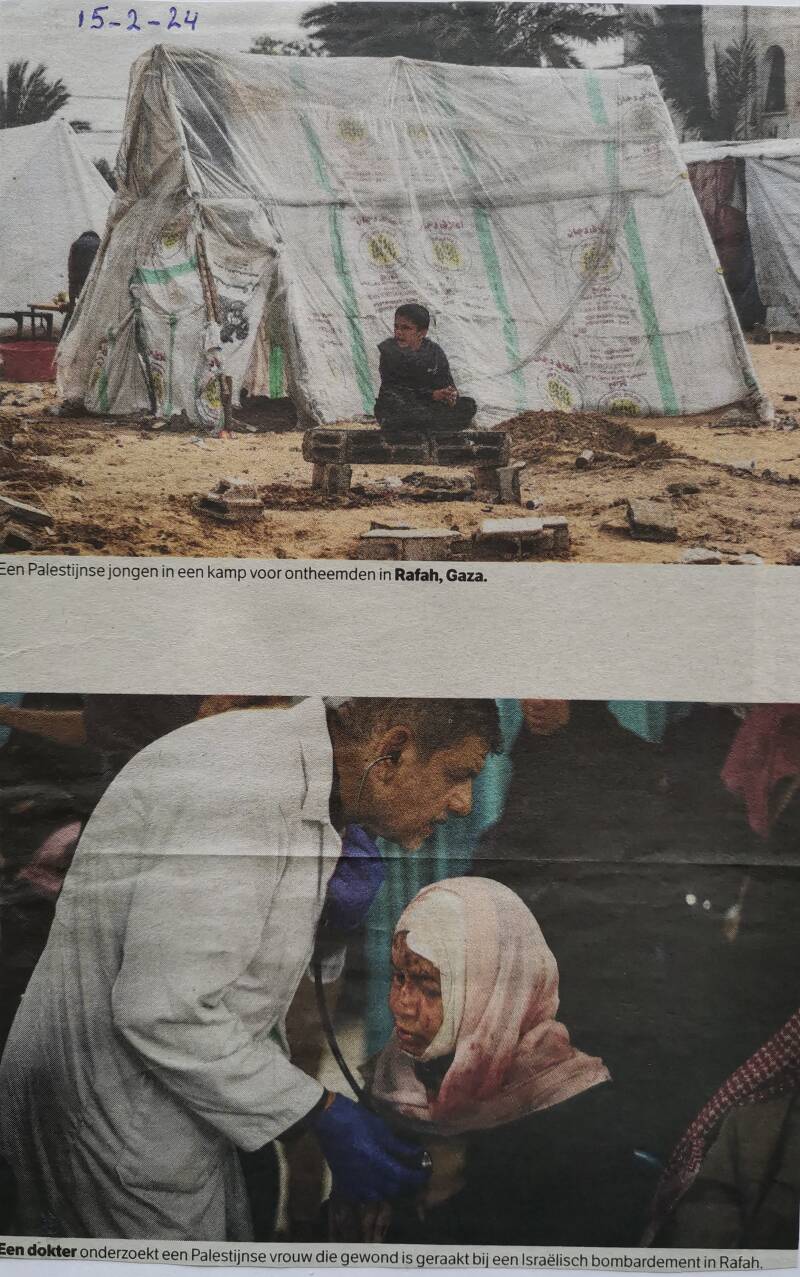
15 februari 2024


Hostilities in the Gaza Strip and Israel
Flash Update #119
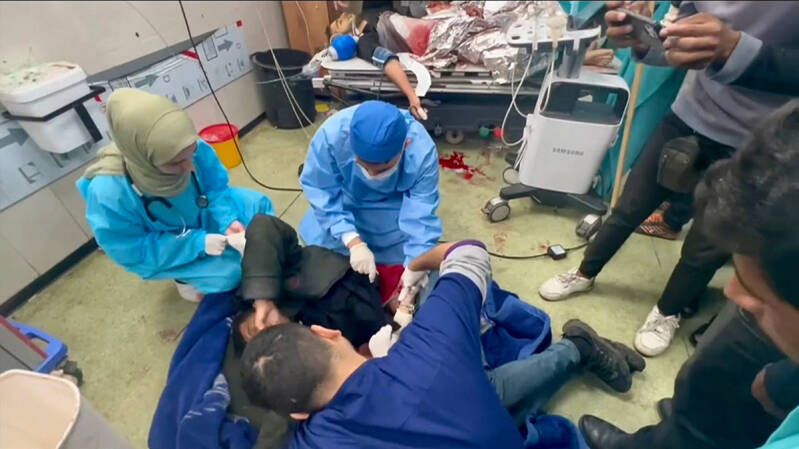
Medical team treating trauma injuries on the floor in Nasser hospital, Khan Younis. Screenshot from a video by WHO, January 2024
15 februari 2024
Key points
- Intense Israeli bombardment from air, land and sea continues to be reported across much of the Gaza Strip, resulting in further civilian casualties, displacement, and destruction of civilian infrastructure. Ground operations and heavy fighting between Israeli forces and Palestinian armed groups also continue to be reported, especially in Khan Younis and Deir al Balah. On 14 February, Palestinian armed groups in Gaza reportedly launched several rockets and missiles into Israel, with no casualties reported.
- Between the afternoon of 14 February and 13:30 on 15 February, according to the Ministry of Health (MoH) in Gaza, 87 Palestinians were killed, and 104 Palestinians were injured. Between 7 October 2023 and 13:30 on 15 February 2024, at least 28,663 Palestinians were killed in Gaza and 68,395 Palestinians were injured, according to MoH in Gaza.
- Between the afternoons of 14 and 15 February, there were no Israeli soldiers reported killed in Gaza. As of 15 February, 230 soldiers have been killed and 1,361 soldiers injured in Gaza since the beginning of the ground operation, according to the Israeli military. In addition, over 1,200 Israelis and foreign nationals have been killed in Israel, according to the Israeli authorities, the vast majority on 7 October. As of 15 February, the Israeli authorities estimate that about 134 Israelis and foreign nationals remain captive in Gaza and reportedly include fatalities whose bodies are being withheld.
- Intensified airstrikes on Rafah, where more than half of Gaza’s population are crammed into less than 20 per cent of the Gaza Strip, and statements by Israeli officials have reportedly led to the movement of people out of Gaza’s southernmost governorate toward Deir al Balah. On 13 February, the Palestine Red Crescent Society (PRCS) reported that it has established a field hospital west of Rafah to provide medical services to the wounded and sick despite the shortage of medical supplies. On 14 February, the International Committee of the Red Cross (ICRC) emphasized that international humanitarian law “protects all civilians from the effects of hostilities, including those who may not be able to depart Rafah,” and added: “Israel, as the occupying power, must ensure that the basic needs of the civilian population are met. In addition, it is necessary … that the trickle of aid being let into Gaza becomes a steady, robust stream: food, drinkable water, hygiene items, medicines, and materials to do basic sanitation and allow for adequate shelter.”
- As of the time of writing of this update, on 15 February, Israeli forces reportedly entered Nasser Hospital in Khan Younis, including the maternity department, according to MoH in Gaza. The Israeli military has alleged that Hamas was holding hostages or withholding the bodies of Israelis within the compound. These events are unfolding following the besiegement of the hospital, allegations of continued sniper fire in the vicinity, and sewage continuing to flood the emergency department. According to MoH in Gaza, following the forceful evacuation of thousands of people from the hospital under the orders of the Israeli military, and as of the evening of 14 February, more than 2,500 people remained in the hospital, including about 1,500 internally displaced persons (IDPs), about 490 health workers and their families, and 600 patients and their companions, including people in the intensive care unit and three babies in incubators. On 14 February, MoH in Gaza reported that a doctor was injured when the third floor of the hospital was hit. The orthopaedic department was also hit, killing one patient and injuring many others. On 14 February, the World Health Organization (WHO) Director-General, Tedros Adhanom Ghebreyesus, reported that two planned missions to reach the hospital over the past four days had been denied access and his staff have lost contact with the hospital personnel. “Nasser is the backbone of the health system in southern Gaza. It must be protected. Humanitarian access must be allowed,” he added.
- Humanitarian and health workers continue to face enormous challenges and risks to serve people in need of urgent assistance and save lives, particularly given continued attacks on health facilities, the lack of supplies, and overcrowding. On 14 and 15 February, PRCS reported that Al Amal hospital building sustained damage due to intense shelling in the vicinity of the hospital. On 13 February, WHO reported that patients and health workers had evacuated the Patients Friends Association Hospital, in northern Gaza, in early February, and the hospital has been rendered out of service after sustaining severe damage. Between 7 October and 12 February, there were 378 attacks on health care across Gaza, affecting 98 health facilities and 98 ambulances, according to WHO. Some 65 per cent of these attacks were reported in Gaza and North Gaza governorates. Reporting from the European Gaza Hospital on 8 February, the Humanitarian Coordinator ad interim, Jamie McGoldrick, highlighted the need to bring in more supplies to ease the pressure on hospitals, noting that “the systems here are breaking down. We are not getting enough supply in here to support the doctors.”
- Between 1 January and 12 February, 51 per cent of missions planned by humanitarian partners to deliver aid and undertake assessments to areas to the north of Wadi Gaza were denied access by the Israeli authorities. During the same period, 25 per cent of missions planned to areas assessed as necessitating coordination to the south of Wadi Gaza were denied by the Israeli authorities. Missions to areas not requiring coordination south of Wadi Gaza are not included in these statistics.
Hostilities and casualties (Gaza Strip)
- On 13 February, at about 9:30, three Palestinians including a girl were reportedly injured when the boundary wall of the external hall of Rafah Crossing was shelled.
- On 13 February, at about 13:00, two Palestinian journalists were reportedly injured when a group of journalists in the Mirage area in northern Rafah, were hit.
- On 13 February, at about 14:00, six Palestinians including an unknown number of women and children were reportedly killed when a civilian car was reportedly hit in Ash Sheikh Radwan area in northern Gaza city.
- On 14 February, at about 19:00, a handcuffed Palestinian detainee who was allegedly sent by Israeli forces to deliver a message to IDPs at Nasser hospital to evacuate, was reportedly shot and killed afterwards.
West Bank Updates
- On 14 February, Israeli forces shot and killed a 16-year-old Palestinian boy and injured 18 others (including 10 children), all by live ammunition, during an Israeli army raid in the village of Beit Ummar in Hebron at the time of dismissal of students from schools. During the raid, clashes took place between Palestinian stone throwers and Israeli soldiers.
- Since 7 October 2023, 389 Palestinians have been killed, including 100 children, and 4,499 Palestinians, including 697 children, have been injured in conflict-related incidents across the West Bank, including East Jerusalem, and Israel. During the same period, 10 Israelis, including four members of security forces, were killed and 75 injured in conflict-related incidents in the West Bank, including East Jerusalem, and Israel.
- On 13 February, Israeli settlers, accompanied by Israeli forces, raided the village of Yasuf, in Salfit governorate, as well as threw stones and shot live ammunition at houses. As a result, one Palestinian was injured, and two houses sustained damage. In addition, settlers forced out some families picnicking near a water spring in the village. Since 7 October 2023, OCHA has recorded 537 Israeli settler attacks against Palestinians that resulted in Palestinian casualties (50 incidents), damage to Palestinian-owned property (427 incidents), or both casualties and damage to property (60 incidents).
- On 14 February, the Israeli authorities demolished a residential structure comprising three housing units in Silwan, in East Jerusalem, due to the lack of building permits. As a result, three households comprising 11 people, including five children, were displaced. The residence belonged to the family of a community leader who has been outspoken against the demolition of Palestinian homes in East Jerusalem, particularly in Silwan. Since 7 October 2023, 524 people, including 256 children, have been displaced in Area C and East Jerusalem after their homes were demolished due to the lack of Israeli-issued building permits, which are almost impossible to obtain.
- Since 7 October 2023, 814 Palestinians, including 332 children, have been displaced, following the destruction of 127 homes during operations carried out by Israeli forces across the West Bank. About 94 per cent of the displacement was reported in the refugee camps of Jenin, Nur Shams and Tulkarm.
Funding
- The Flash Appeal for the occupied Palestinian territory (oPt) was extended through the end of March 2024 on a “no cost” basis given that enabling operational conditions for the implementation of planned activities did not materialize, and requirements were split between the last quarter of 2023 and the first quarter of 2024. The Flash Appeal, which was launched in October 2023 and updated in November 2023, requests US$1.2 billion to meet critical needs of 2.7 million people across the oPt (2.2 million in the Gaza Strip and 500,000 in the West Bank, including East Jerusalem). As of 13 February, member states disbursed a total of $900.7 million against the updated Flash Appeal (72.2 per cent); this includes $608.7 million out of $629.1 million (96.8 per cent) requested for October-December 2023 and $278.4 million out of $600 million (46.4 per cent) requested for January-March 2024. For funding analysis, please see the Flash Appeal Financial Tracking dashboard.
- The occupied Palestinian territory Humanitarian Fund (oPt HF) and the CERF are currently funding more than 94 ongoing projects in the Gaza Strip to address urgent humanitarian needs. These interventions, totalling approximately $77 million, cover needs in the areas of food security, shelter, water, sanitation and hygiene (WASH), health and protection. Since October 7, the oPt the HF has received a total of $86 million in contributions from member states and private donors. Private donations are collected directly through the Humanitarian Fund. Recently approved projects include $3.5 million for the Emergency Fleet Augmentation project that aims to enhance aid delivery to Gaza under the oPt HF, and $700,000 for “Strengthening Collective Gender Responsive and Inclusive Accountability to Affected People in OPT” under the CERF.

HUMANITARIAN NEEDS AND RESPONSE UPDATES | 5–12 February
Health
Needs
- High need for primary health services in informal shelters hosting IDPs.
- The high number of surgeries and procedures has led to increased demand for anaesthetic and analgesic medications which are in short supply.
- There is a need to increase routine immunization coverage and conduct a catch-up campaign.
- Provision of medication for non-communicable diseases and psychotropics is needed.
- There is a need to reduce overcrowding in maternity hospitals.
- The continued siege around some hospitals is significantly affecting their case management capacity.
- Laboratory equipment and reagents are needed to support diagnostics.
- Blood and blood products in hospitals are needed for emergencies and medical procedures to ensure that patients receive timely transfusions.
Response
- Cluster partners are reaching a weekly average of about 450,000 people in need of various health services and supplies.
- Ongoing disease surveillance at all health facilities is underway to ensure early diagnosis and treatment of cases as well as early detection of potential outbreaks.
- Planning to open stabilization centres for acute malnutrition cases with medical complications. One will be at Tal as Sultan and another in one of the field hospitals.
- 12 Emergency Medical Teams (EMTs) were deployed, assisting more than 16,000 patients.
- A weekly average of nearly 300,000 primary health care consultations was reported by partners.
Challenges and Gaps
- There is a need to strengthen referral mechanisms between hospitals.
- The influx of IDPs migrating to Rafah has overwhelmed the available bed availability in hospitals, leading to insufficient capacity to meet the healthcare needs of the population. Heigtened insecurity in Rafah is also greatly affecting response activities.
- Heightened insecurity and limited access to health facilities in the northern and middle governorates continue to present major challenges for partners to respond.
- Persisting siege of hospitals remains a major challenge.
- Referring patients outside of Gaza remains a challenge, as the waiting list continues to grow.
- Partner operations continue to be negatively affected by the displacement of staff, social stresses and telecommunication challenges.
- Limited access to proper WASH facilities is hindering prevention of diseases.
Nutrition
Needs
- There is a need for continued prepositioning of essential nutrition supplies to ensure timely access to life-saving supplies in areas facing significant challenges.
- Ongoing collaboration with partners is still needed to enhance capacity in Mid-Upper Arm Circumference (MUAC) screening, identify cases of Severe Acute Malnutrition (SAM) and Moderate Acute Malnutrition (MAM), and the delivery of effective treatment.
- There is an urgent need to establish a stabilization centre in Rafah for treating children suffering from severe malnutrition and suffering from complications.
Response
- Thirty-six staff members (17 Female, 19 male) received training on MUAC screening to enhance early case identification and treatment. The training is crucial for enhancing the capacity of our partners and expanding MUAC screening across affected areas.
- Five implementing partners continue conducting screenings for malnutrition in 4,466 children aged 6 to 59 months, using MUAC measurements in shelters and health facilities. Children who are detected with MAM and SAM are referred for treatment using simplified treatment protocol.
- The Nutrition Cluster continues to conduct MUAC training sessions every week.
- UNICEF and WFP continue to collaboratively stock up nutritional supplies in the Gaza Strip and the West Bank.
- The Nutrition Cluster is partnering with WHO to set up a stabilization centre in Rafah with five beds to treat children with SAM and suffering from medical complications.
Challenges and Gaps
- Ongoing hostilities in Gaza have caused significant food shortages, poor access to clean water and sanitation facilities, and disruptions to healthcare services. This situation is putting children under five and pregnant or lactating women (PLW) at a relatively higher risk of malnutrition.
- Without private areas for breastfeeding women, it is challenging to encourage and sustain breastfeeding practices. This lack of privacy could have lasting negative effects, particularly on children under two years of age and new-born babies.
Shelter and Non-Food Items (NFI)
Needs
- Some 1.7 million people are need of shelter and NFI assistance, including 900,000 people reached with partial shelter and NFI assistance. Partial assistance means that although a household has received some shelter and NFI items, not all their needs have been met.
- Urgent needs are tents, sealing-off kits (SOKs) and NFIs, including bedding, kitchen sets, and winter clothing. SOKs can be used to consolidate makeshift shelters or to protect damaged housing to facilitate return where possible.
- Technical assistance is required to improve self-built shelters and spontaneous/informal sites. Also see Shelter Cluster snapshot, as of 7 February.
Response
- A total of 26 partners are providing assistance. Some 28,000 tents, 7,600 SOKs, and 35,000 NFI kits are currently in the pipeline.
- The vast majority of assistance is currently provided in-kind; cash will be pursued further when market conditions allow.
- Further details in the Cluster response strategy and website dashboard.
Challenges and Gaps
- Slow entry of items into Gaza due to limited aid trucks and bureaucratic processes are complicating procurement.
- Rising prices of shelter materials in neighbouring markets, including high freight rates and shipping costs.
- Need to restore commercial imports and re-establish local markets to relieve pressure on in-kind provision.
- Restrictions on or denial of the entry of key shelter items including timber, hand tools, and cooking stoves.
- Lack of security and access to IDP locations, including logistical challenges such as lack of fuel and rising social tensions because of the limited quantity of aid available in comparison to outstanding needs.
- Unplanned sites and lack of adequate tools is leading to water damage to makeshift shelters and tents, and recurrent displacement resulting in loss and need for re-distribution of assistance.

Water, Sanitation and Hygiene (WASH)
Needs
- Some 2.25 million people need WASH Assistance. Two-thirds of IDPs are concentrated in the Rafah area and urgently need WASH support.
- Access to safe drinking water for the entire population of Gaza is needed, especially for IDPs and in the northern areas of Gaza.
- Currently only 5.7 per cent of water is being produced from all the water sources in Gaza, compared to pre-war production levels. Safe drinking water and water for domestic use, including personal hygiene, remains very limited.
- Only 17 per cent of the 284 groundwater wells are operating with limited hours; some 39 wells were destroyed and 93 were moderately to severely damaged.
- None of the wastewater treatment systems are working due to damage, lack of fuel/power supply, and maintenance. Municipalities have limited water treatment, no water quality testing capacity, and no fuel for solid waste management, and operations have been suspended since 19 November 2023.
- Mekorot Connections: Two of the three water pipelines are not functioning (the Mentar pipeline since the beginning of the conflict, and the Bani Suhaila pipeline since 18 December. The Bani Saeed pipeline is functioning, but is currently producing 6,000 cubic metres per day, which is only 42 per cent of its full capacity. Plans are in place to repair the Bani Suheila pipeline, but there are challenges for safe access, communication, and coordination of repair activities.
- Two out of out of three desalination plans are partially operating: the Middle Area plant produces an average of 750 cubic metres per day and is distributed via water trucking and the South Gaza desalination plant produces 1,700 cubic metres per day; around 600 cubic metres are distributed via water trucking and 1,100 cubic metres via the water network.
- The UAE's small desalination plant located on the Egyptian side of Rafah, operates at full capacity, providing 2,400 cubic metres per day, following the construction of a 3-kilometre transmission line.
Challenges and Gaps
- The risk to public health is intensified due to an acute scarcity of hygiene materials and adequate sanitation infrastructure. Persistent anecdotal reports of Hepatitis A cases in Gaza, as recorded by UNRWA and the Health Cluster, highlight ongoing concerns.
- The constraints of the clearance and transport of items considered to be dual-use into Gaza remain a limiting factor of the overall WASH response.
- Sanitation remains a major issue and the situation continues to deteriorate. Despite significant efforts by UNICEF through its partners to construct 80 family latrines this week, the sanitation coverage remains very low. WASH partners continue to construct family latrines, but the lack of cement, wood and other construction materials slows down the progress.
- The crisis is exacerbated by a fuel shortage, hindering sewage station operation and leading to environmental and public health concerns. The situation is worsened by continuous restricted access to essential sanitation supplies and services in Gaza.
Education
Needs
- More than 625,000 students and nearly 23,000 teachers in the Gaza Strip have been affected by school closures and attacks on education, leaving them with no access to education or a safe place.
- According to the Ministry of Education, as of 6 February, more than 4,851 students and 239 educational staff have been killed and more than 8,227 students and 836 teachers have been injured in the Gaza Strip since 7 October.
- Some 92 per cent of all school buildings in Gaza are being used as shelters for IDPs and/or have sustained varying levels of damage. Some 392 schools (79 per cent of the total school buildings in Gaza) have sustained damage, including 141 schools that sustained major damage or were destroyed. Combined, these schools previously served some 457,019 children and more than 17,043 teachers. The North, Gaza, and Khan Younis governorates have been especially impacted, accounting for 76 per cent of all damaged schools (source: Education Cluster Damaged School Dashboard.)
- The Education Cluster conducted a Satellite-derived Damage Assessment of all Gaza schools to verify damage to schools based on proximity to damaged sites. Key findings include:
- Satellite-derived Damage verification exercise confirmed the large level of damage to schools previously reported by the cluster in Gaza.
- Actual damages to school infrastructure might be 15 to 20 per cent higher than what has been previously reported by the Education Cluster.
- At least 55 per cent of schools in Gaza will either need full reconstruction or major rehabilitation work to be functional again.
- One quarter of directly hit and damaged schools are UNRWA-run schools
- Forty-five per cent of school buildings that have been used by IDPs as shelters, have been either directly hit or damaged.
- The satellite-derived images provide evidence for military use of schools.
- Education partners are concerned about reports, videos and pictures depicting schools being used for military operations by Israeli forces, including their use as detention and interrogation centres, or as military bases.
- Key priorities include the provision of Education in Emergencies (EiE) recreational activities and psychological support, including Social Emotional Learning (SEL) activities to children in shelters and designated emergency shelters (DESs); establishing Temporary Learning Spaces (TLS) in shelters/DESs to start non-formal learning for children; and provision of emergency supplies and learning kits. In addition, a key need is to identify and support of children with disabilities and other needs, with assistive devices for learning.
Response
- Since October 2023, eleven partners have reached more than 135,126 students and teachers with psychosocial support, emergency learning, recreational supplies and activities, and awareness sessions in the Deir al Balah, Khan Younis, and Rafah governorates. Most of the cluster responses are delivered by local partners (source: Education Cluster 5W dashboard).
- UNICEF, with three of its partners and Teacher Creativity Centre, is working on establishing TLS to start non-formal education activities with displaced children in shelters/DESs.
- The Education and the Shelter Clusters are jointly carrying out advocacy activities to highlight the devastating impacts of the current situation in Gaza on children and the inextricable links between shelter and schooling.
Challenges and Gaps
- No activities have been undertaken in the North Gaza and Gaza governorates due to ongoing hostilities and access challenges.
- As of 11 February, the education response remains significantly underfunded, receiving less than 10 per cent of its requirements. Urgent funding is required to meet immediate response requirements.
Logistics
Response
- The Logistics Cluster has conducted the Gaps and Needs Analysis Survey to identify needs and gaps, and to adapt the Cluster`s strategy and services accordingly. Findings will be made available by mid-February.
- The Logistics Cluster has made available to partners an additional common warehouse in the North Camp of Rafah, bringing up the total storage capacity to 2,470 m2. The Logistics Cluster has secured storage space at the WFP warehouse in Amman with a capacity of 1,300 m2 for consolidation and pre-positioning of cargo.
- As of 11 February, the Logistics Cluster in Rafah has stored 6,696 cubic metres of cargo for of 16 organisations and supported 21 organizations with cargo notification service.
- On 6 February, the Logistics Cluster facilitated access for an inter-agency convoy (five partners), which transported a total of 335 metric tons of relief items on 24 WFP trucks from Jordan to Gaza, via the King Hussein Bridge.
Challenges and Gaps
- The storage and transport capacity inside Gaza remains limited. The Logistics Cluster continues to facilitate access to temporary storage, transport from handover points to common warehouses, and cargo notification trans-shipment services.
- The Logistics Cluster is coordinating the pipeline for incoming cargo through the Egyptian and Jordanian corridors for the coming three months. This is a vital exercise for operational planning, in terms of understanding the resources available and making allocations based on the prioritization list. Partners have received a dedicated form and are requested to update it weekly. Partners who have not received the form can reach out to palestine.logcluster@wfp.org.
Emergency Telecommunications
Needs
- Recurrent telecommunications shutdown in the Gaza Strip continues to restrict people from accessing life-saving information and is impeding other forms of humanitarian response.
Response
- On 8 February, the Emergency Telecommunications Cluster (ETC) presented a one-month telecommunications planning and implementation document to the Humanitarian Coordinator, Deputy Humanitarian Coordinator and other agencies in Rafah. The plan should inform humanitarian responders, clusters, and agencies about achievable telecommunication goals with or without the anticipated humanitarian pause, provided the successful importation of the required telecommunications equipment.
- Since 9 January, the ETC has supported humanitarian agencies with Information and Communication Technology (ICT) assessments, technical advice and information, repairs, and guidance on the use of ICT equipment in Gaza.
- Since its establishment on 3 November 2023, the ETC has been engaging with the Israeli authorities to obtain authorizations to import all essential telecommunications equipment into Gaza and provide independent access to communications for humanitarian responders.
Challenges and Gaps
- Limited access to electricity, fuel, and telecommunications services continues to hamper the humanitarian response in Gaza.
- The import of telecommunications equipment into Gaza is fraught, lengthy, and extremely challenging.

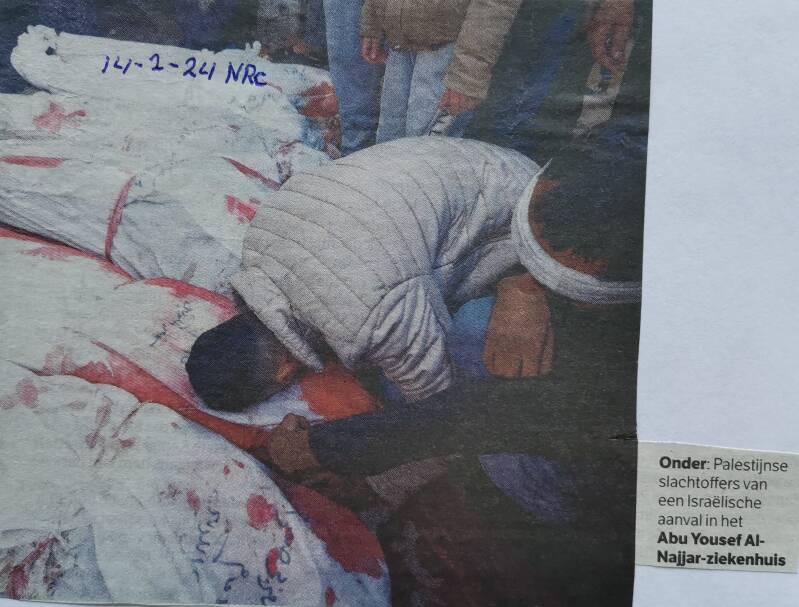
14 februari 2024


Meta: Don’t Censor Our Speech!
14 februari 2024
Amidst the horrific attacks on Gaza, the intensifying bombardment of over one million Palestinians sheltering in Rafah, and “plausible” genocide according to the International Court of Justice, Meta is moving to further silence and censor Palestinian solidarity. The social media giant is considering restricting speech critical of “Zionists” — by expanding when they interpret “Zionist” as a proxy for “Jew/Jewish” under their hate speech policy. This move would repress information coming out of Gaza and any criticism of Israel in a vital moment for outcry.
Tell Meta: We need to talk about genocide

This policy change would be incredibly dangerous, as social media is often Palestinians’ only means of documenting human rights abuses and sharing their daily realities with the world. Palestinians should be able to name the political ideology that impacts their survival without fearing reprisals. Anti-Zionist and non-Zionist Jews should be able to criticize the ideology that claims to represent them. And human rights defenders should be able to hold the Israeli military and Zionist government accountable — now, more than ever.


The penultimate stage of genocide.

14 februari 2024
Sunday Israel took the opportunity to unleash the next stage in its genocide of Palestinians. Air strikes over Rafah killed at least 67 Palestinians, while Prime Minister Benjamin Netanyahu ordered soldiers to prepare for a ground entry into the city.
Rafah, on Gaza’s southern border with Egypt, is the last refuge for nearly 1.5 million Palestinians displaced by the ongoing Israeli genocide.
Since Israeli bombs began decimating Northern Gaza in October, Palestinians have been told to evacuate to the south. Rafah is as far south as anyone can go. With a ground invasion imminent, the Israeli government is calling for the population to “evacuate” — even though they have nowhere to evacuate to.
An Israeli invasion of Rafah would be the most dangerous stage of the genocide yet, causing death on a scale unseen even in these four months of sheer brutality.
Having pushed Palestinians into famine, having indiscriminately flattened Gaza, now the Israeli military is seeking to remove the Palestinians from Gaza permanently, whether by displacement, disease, hunger, or execution. This is the next stage of genocide.
Take action for ceasefire.
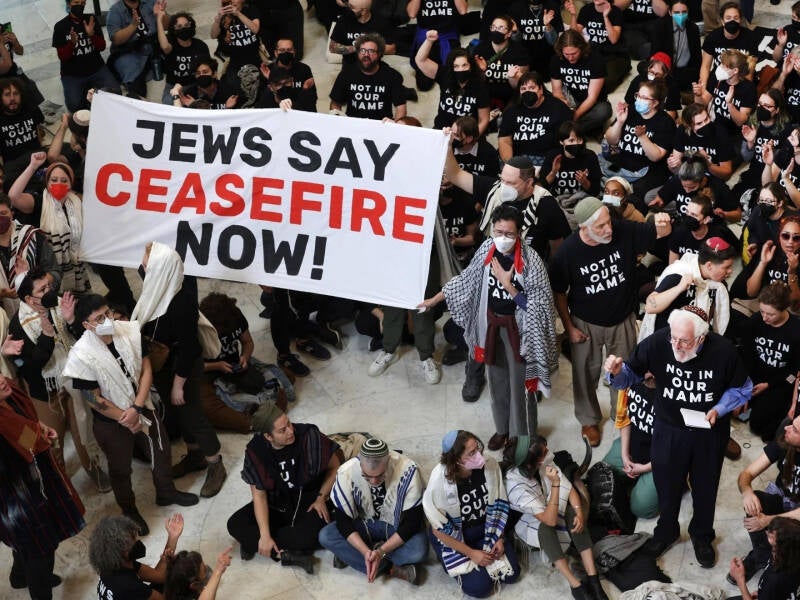
Facing the possibility of an even more devastating stage of genocide, grief, fear, and discouragement are all too real. And at the same time, it is as crucial now as ever that we continue to mobilize with a diversity of tactics.
No one thing, no one action, can end this genocide. It will take all of us, bringing the demand for a ceasefire everywhere we go: in the halls of government, to the media outlets that far too often run cover for these genocidal policies, and in the streets of our cities and towns.
While this moment is devastating, there are all kinds of ways we can act — and we need all of us doing what we can.
Tell the New York Times: Call for Ceasefire NOW!
Four months into the genocide, the New York Times editorial board still refuses to call for a permanent ceasefire in Gaza.
Write the NYT editorial board right now to demand they take a stand in this critical moment.
Write the NYT
Tell Congress: No more weapons to Israel!
Right now, the House is gearing up to send even more bombs and munitions to Israel — weapons that will be used to further Israel's ongoing genocide of Palestinians.
Use these tools from our sibling organization JVP Action to tell your representatives to stop arming genocide, and tell your senators that they should have voted "no" on more weapons for Israel's genocidal military.
Tell Meta: Don’t censor justice for Palestine.
As Palestinians in Gaza face genocide, Meta, the parent company of Facebook, Twitter, and Whatsapp, is choosing this moment to consider a policy that would repress free speech by shutting down conversations involving the term “Zionist.”
We’re telling Meta: We need to talk about genocide. Don’t censor our speech.
P.O. Box 589
Berkeley, CA 94701
United States


14 februari 2024
The powerful voices of Palestinians and allies on social media have been a lifeline for many — and a real-time counterpoint to state propaganda during a time of utter horror in Rafah and throughout Gaza.
It’s no surprise that Palestinians and solidarity activists everywhere are experiencing increased repression and censorship on Meta-owned social media platforms like Facebook and Instagram.¹
Now, in a blatant move to silence Palestinians even more, Meta is aiming to revise its hate speech policy on conversations that include the term “Zionist.”²
Tell Meta: We need to talk about genocide.

Meta already silences Palestine solidarity voices with content removal, shadowbanning, and censorship. The sudden move to revise its existing hate-speech policy on the term “Zionist” is an attempt to codify its practices, and ramp up a pattern of widespread repression and silencing.
If Meta expands its policy on when the term “Zionist”’ is treated as a proxy for “Jewish” and/or “Israeli” it will lead to more restrictions on legitimate political speech and debate.
Palestinian, Muslim, and Arab students in particular will be impacted by this change as they already face widespread repression online and on campuses for voicing solidarity with Palestinians in Gaza and the West Bank.
Most importantly, it will prevent Palestinians in Gaza from freely sharing the brutal reality of living through genocide as they fight for survival.
Sign the petition to Meta and Meta CEO Mark Zuckerberg here.
In solidarity,
the team at MPower Change
Sources:
- “Meta’s Broken Promises: Systemic Censorship of Palestine Content on Instagram and Facebook,” Human Rights Watch, Dec. 21, 2023.
- “Meta Considering Increased Censorship of the Word “Zionist”,” The Intercept, Feb. 8, 2024.


Today's headlines
Israeli snipers force dozens to evacuate Nasser Hospital in Khan Younis, Israel steps up bombing in Lebanon
Anna Lekas Miller
14 februari 2024

As ceasefire negotiations enter their second day in Cairo, fighting around Nasser Hospital in Khan Younis is intensifying—with dozens of Palestinians who have been sheltering inside forced to evacuate by Israeli sniper attacks.
Dutch court orders government to stop providing F-35 parts to Israel

An appeals court ordered the Dutch government to cease exports of F-35 components to Israel, saying “there is a clear risk that the F-35 parts to be exported will be used in committing serious violations of international humanitarian law.”
Rafah on the precipice

Palestinians in Rafah are dreading Israel’s impending invasion, but there is nothing we can do to ensure our safety. If the army surrounds us, we have nowhere left to go. We will be forced to endure the fire and look death in the face.

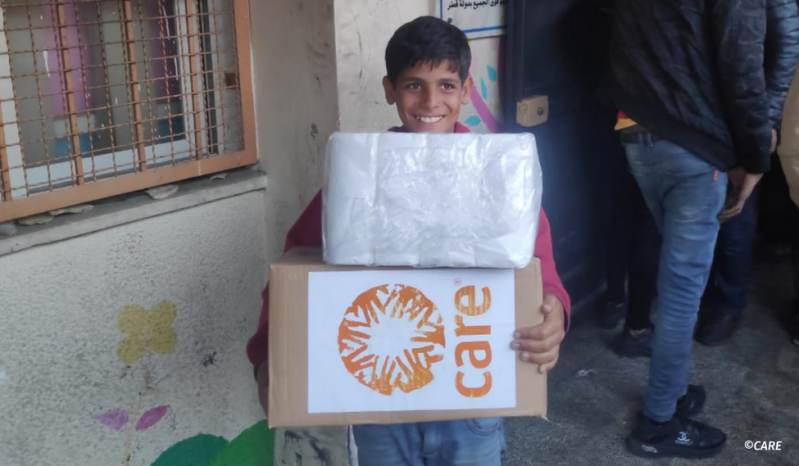
Een Palestijnse jongen met een CARE-pakket in Rafah, Gaza.
14 februari 2024
De afgelopen maanden konden wij, als één van de grootste humanitaire hulporganisaties ter wereld, direct noodhulp leveren in Gaza.
CARE is al sinds 1948 actief in Gaza en de West Bank. Wij werken met lokale partners. Daardoor kennen we het land en kunnen we van binnenuit noodhulp bieden. Zo hebben we tot nu toe meer dan 60.000 mensen bereikt met medische zorg, waaronder medicijnen, medische instrumenten en eerstehulpdiensten.
Daarnaast passeerden de afgelopen tijd meerdere vrachtwagens met spullen van CARE de grens van Egypte naar Gaza. Op die manier leverden we hygiënepakketten, water, dekens en matrassen aan meer dan 91.000 vluchtelingen. Bovendien liggen onze magazijnen aan de grens vol hulpgoederen. Wanneer een staakt-het-vuren wordt afgekondigd, kunnen wij onze noodhulpactiviteiten direct opschalen.
Zonder betrokkenheid zijn deze resultaten niet mogelijk en zouden wij geen noodhulp kunnen verlenen.
Met vriendelijke groet,
Nok van de Langenberg
Hoofd humanitaire actie bij CARE Nederland


Hostilities in the Gaza Strip and Israel
Flash Update #118

People have been reportedly moving out of Rafah towards Deir al Balah following intensified airstrikes. This is occurring within the context of rising food insecurity, limitations on the entry of aid, the erosion of coping mechanisms, and the prospects of a ground operation in the area. Photo by UNRWA.
14 februari 2024
Key points
- Intense Israeli bombardment from air, land and sea continues to be reported across much of the Gaza Strip, resulting in further civilian casualties, displacement, and destruction of civilian infrastructure. Ground operations and heavy fighting between Israeli forces and Palestinian armed groups also continue to be reported, especially in Gaza’s southern city of Khan Younis.
- Between the afternoon of 13 February and 12:00 on 14 February, according to the Ministry of Health (MoH) in Gaza, 103 Palestinians were killed, and 145 Palestinians were injured. Between 7 October 2023 and 12:00 on 14 February 2024, at least 28,576 Palestinians were killed in Gaza and 68,291 Palestinians were injured, according to MoH in Gaza.
- Between the afternoons of 13 and 14 February, there were no Israeli soldiers reported killed in Gaza. As of 14 February, 230 soldiers have been killed and 1,352 soldiers injured in Gaza since the beginning of the ground operation, according to the Israeli military. In addition, over 1,200 Israelis and foreign nationals have been killed in Israel, according to the Israeli authorities, the vast majority on 7 October. As of 14 February, the Israeli authorities estimate that about 134 Israelis and foreign nationals remain captive in Gaza and reportedly include fatalities whose bodies are being withheld.
- Airstrikes on Gaza’s southernmost city of Rafah and statements by Israeli officials have heightened concerns about a possible ground invasion in Rafah where well over one million people are crammed amid insecurity and acute shortages of shelter, food, clean water, and medical care. On 13 February, Under-Secretary-General for Humanitarian Affairs and Emergency Relief Coordinator, Martin Griffiths, warned that a military operation in Rafah “could lead to a slaughter in Gaza” and “leave an already fragile humanitarian operation at death’s door,” noting that the “Government of Israel cannot continue to ignore these calls” by the international community.
- Population movements out of Rafah toward Deir al Balah and An Nuseirat Refugee Camp have been reported, following intensified airstrikes on Rafah. This is occurring within the context of rising food insecurity, limitations on the entry of aid, the erosion of coping mechanisms, and the prospects of a ground operation in the area. On 13 February, the World Food Programme (WFP) expressed concern that displacement from Rafah would further decrease the resilience of people who have been previously displaced to Rafah in search of safety, and Action Against Hunger warned that it will be forced to suspend its activities if military operations expand to Rafah. On 12 February, the Food and Agriculture Organization (FAO) reported “unprecedented levels of acute food insecurity, hunger, and near famine-like conditions in Gaza,” warning that with every passing day “more and more people are simply going hungry and having less accessibility to food, nutrition, water, and medical services.”
- Humanitarian and health workers continue to face enormous challenges and risks to serve people in need of urgent assistance and save lives, particularly given the insufficient materials and supplies that aid organizations are able to bring in, according to the Humanitarian Coordinator ad interim for the occupied Palestinian territory, Jamie McGoldrick. On 8 February, Project HOPE’s medical coordinator described the “inhumane conditions” she witnessed while working at Al Aqsa Hospital in Deir al Balah between 17 and 31 January, noting that “there were not enough health workers, medicine, or supplies to treat everybody.” On 10 February, the United Nations Population Fund (UNFPA), the World Health Organization (WHO) and OCHA delivered medicine, trauma supplies, and maternal health kits to Al Aqsa Hospital, following coordination with the Israeli authorities. The hospital is one of six hospitals that remain only partially functional south of Wadi Gaza, according to WHO. Like other partially functional hospitals across Gaza where average bed occupancy is 388 per cent, Al Aqsa Hospital is overwhelmed by the constant flow of patients and wounded persons, amid critical shortages of medical supplies, pharmaceuticals, fuel and health personnel, and has expanded services for less critical cases to two adjacent schools to cope with the rising caseload.
- Nasser Hospital in Khan Younis continues to be besieged by Israeli tanks and there are continued allegations of sniper shooting toward the hospital and its vicinity, endangering the lives of 300 medical personnel, 450 wounded, and some 10,000 displaced people who are reportedly sheltering in the hospital’s compound. On 13 and 14 February, the Israeli military called for the evacuation of civilians seeking shelter at Nasser Hospital, claiming that military activities are being carried out from within the hospital’s compound. According to MoH in Gaza, three people were killed, and 10 others injured, inside Nasser medical complex by Israeli sniper fire in the afternoon of 13 February. Also on 13 February, the diesel generators of Nasser hospital reportedly ceased working, which reportedly led to the death of a 10-year-old child. As of 13:00 on 14 February, IDPs, including pregnant women and the elderly, were reportedly forced to begin to evacuate the hospital amid heavy gunfire in the area.
- Damage to civilian infrastructure continues to be reported across Gaza, including residential buildings, schools, hospitals, roads, cemeteries, as well as water and sanitation facilities. In December 2023, UNICEF reported that at least half of water, sanitation and hygiene facilities have been damaged or destroyed in Gaza. UNRWA also reports that 152 UNRWA installations have sustained damage across Gaza since 7 October, including premises providing shelter to IDPs. According to UNOSAT data published on 1 February, 30 per cent of structures in the Gaza Strip have been destroyed or sustained severe to moderate damage, with the governorates of Gaza and Khan Younis experiencing the highest rise in damage in January 2024 compared to November 2023. On 10 February, the Education Cluster published a Satellite-derived Damage Assessment, which found that at least 55 per cent of 563 school buildings have been either directly hit or confirmed as damaged. On 8 February 2024, UN High Commissioner for Human Rights Volker Türk stated: “Such destruction of homes and other essential civilian infrastructure also entrenches the displacement of communities that were living in these areas prior to the escalation in hostilities.”
Hostilities and casualties (Gaza Strip)
- Reports of attacks on police members and premises in Rafah continue. On 13 February, the police station in Zalata area, east of Rafah, was reportedly hit; no casualties were reported. Previously, on 6 and 10 February, nine police officers were reportedly killed in Rafah: six while guarding an aid truck, and three as a police vehicle was struck, respectively.
- The following are among the deadliest incidents reported on 12 and 13 February:
- On 12 February, at about 13:00, two Palestinians, including a boy and his 21-year-old sister, were reportedly killed, when a group of people in Bader Refugee Camp in northwestern Rafah was struck.
- On 13 February, at about 1:00, five Palestinians, including a journalist and his son and daughter, were reportedly killed, when a residential building, near Ash Shuhada mosque in Deir al Balah was struck.
- On 13 February, at about 2:45, at least three Palestinians, including a young girl and two women, were reportedly killed, when a residential building in southern An Nuseirat Refugee Camp in Deir al Balah was struck.
West Bank Updates
- Since 7 October 2023, 388 Palestinians have been killed, including 99 children, and 4,475 Palestinians, including 686 children, injured in conflict-related incidents across the West Bank, including East Jerusalem, and Israel. During the same period, 10 Israelis, including four members of security forces, were killed and 75 injured in conflict-related incidents in the West Bank, including East Jerusalem, and Israel.
- On 12 February, Israeli settlers, accompanied by Israeli forces, raided Jinba community in the Masafer Yatta area in southern Hebron, searched Palestinian houses, and destroyed belongings inside some 18 houses. Israeli settlers also stole electric tools, water pumps and generators, as well as destroyed the main door of the community’s health clinic and speakers of the local mosque. Furthermore, settlers raided two animal pens, which caused panic among sheep and the death of two lambs while trying to run away. Since 7 October 2023, OCHA has recorded 532 Israeli settler attacks against Palestinians that resulted in Palestinian casualties (50 incidents), damage to Palestinian-owned property (423 incidents), or both casualties and damage to property (59 incidents).
- On 13 February, a Palestinian residence was rendered uninhabitable after being targeted by two off-shoulder missiles during an operation by Israeli forces in Sir village in Jenin, displacing a family of six. Moreover, initial information indicates that the destruction of homes and roads, during the Israeli military operation in Jenin Refugee Camp on 13 February, has hindered the access of residents to Jenin city. Since 7 October 2023, 814 Palestinians, including 332 children, have been displaced, following the destruction of 127 homes during operations carried out by Israeli forces across the West Bank. About 94 per cent of the displacement was reported in the refugee camps of Jenin, Nur Shams and Tulkarm.
- Since 7 October 2023, 513 people, including 251 children, have been displaced in Area C and East Jerusalem after their homes were demolished due to the lack of Israeli-issued building permits, which are almost impossible to obtain.
Funding
- The Flash Appeal for the occupied Palestinian territory (oPt) was extended through the end of March 2024 on a “no cost” basis given that enabling operational conditions for the implementation of planned activities did not materialize, and requirements were split between the last quarter of 2023 and the first quarter of 2024. The Flash Appeal, which was launched in October 2023 and updated in November 2023, requests US$1.2 billion to meet critical needs of 2.7 million people across the oPt (2.2 million in the Gaza Strip and 500,000 in the West Bank, including East Jerusalem). As of 13 February, member states disbursed a total of $887.1 million against the updated Flash Appeal (72.2 per cent); this includes $608.7 million out of $629.1 million (96.8 per cent) requested for October-December 2023 and $278.4 million out of $600 million (46.4 per cent) requested for January-March 2024. For funding analysis, please see the Flash Appeal Financial Tracking dashboard.
- The occupied Palestinian territory Humanitarian Fund (oPt HF) and the CERF are currently funding more than 94 ongoing projects in the Gaza Strip to address urgent humanitarian needs. These interventions, totalling approximately $77 million, cover needs in the areas of food security, shelter, water, sanitation and hygiene (WASH), health and protection. Since October 7, the oPt the HF has received a total of $86 million in contributions from member states and private donors. Private donations are collected directly through the Humanitarian Fund. Recently approved projects include $3.5 million for the Emergency Fleet Augmentation project that aims to enhance aid delivery to Gaza under the oPt HF, and $700,000 for “Strengthening Collective Gender Responsive and Inclusive Accountability to Affected People in OPT” under the CERF.
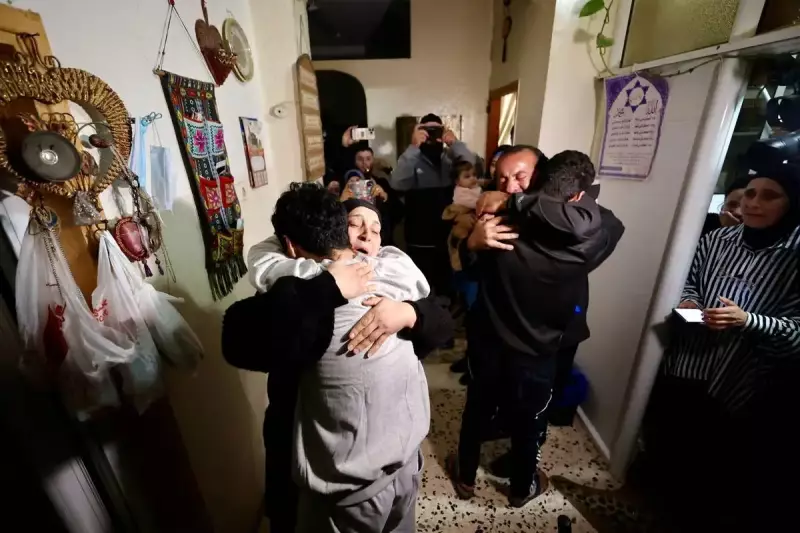
HUMANITARIAN NEEDS AND RESPONSE UPDATES | 5–12 February
Health
Needs
- High need for primary health services in informal shelters hosting IDPs.
- The high number of surgeries and procedures has led to increased demand for anaesthetic and analgesic medications which are in short supply.
- There is a need to increase routine immunization coverage and conduct a catch-up campaign.
- Provision of medication for non-communicable diseases and psychotropics is needed.
- There is a need to reduce overcrowding in maternity hospitals.
- The continued siege around some hospitals is significantly affecting their case management capacity.
- Laboratory equipment and reagents are needed to support diagnostics.
- Blood and blood products in hospitals are needed for emergencies and medical procedures to ensure that patients receive timely transfusions.
Response
- Cluster partners are reaching a weekly average of about 450,000 people in need of various health services and supplies.
- Ongoing disease surveillance at all health facilities is underway to ensure early diagnosis and treatment of cases as well as early detection of potential outbreaks.
- Planning to open stabilization centres for acute malnutrition cases with medical complications. One will be at Tal as Sultan and another in one of the field hospitals.
- 12 Emergency Medical Teams (EMTs) were deployed, assisting more than 16,000 patients.
- A weekly average of nearly 300,000 primary health care consultations was reported by partners.
Challenges and Gaps
- There is a need to strengthen referral mechanisms between hospitals.
- The influx of IDPs migrating to Rafah has overwhelmed the available bed availability in hospitals, leading to insufficient capacity to meet the healthcare needs of the population. Heigtened insecurity in Rafah is also greatly affecting response activities.
- Heightened insecurity and limited access to health facilities in the northern and middle governorates continue to present major challenges for partners to respond.
- Persisting siege of hospitals remains a major challenge.
- Referring patients outside of Gaza remains a challenge, as the waiting list continues to grow.
- Partner operations continue to be negatively affected by the displacement of staff, social stresses and telecommunication challenges.
- Limited access to proper WASH facilities is hindering prevention of diseases.
Nutrition
Needs
- There is a need for continued prepositioning of essential nutrition supplies to ensure timely access to life-saving supplies in areas facing significant challenges.
- Ongoing collaboration with partners is still needed to enhance capacity in Mid-Upper Arm Circumference (MUAC) screening, identify cases of Severe Acute Malnutrition (SAM) and Moderate Acute Malnutrition (MAM), and the delivery of effective treatment.
- There is an urgent need to establish a stabilization centre in Rafah for treating children suffering from severe malnutrition and suffering from complications.
Response
- Thirty-six staff members (17 Female, 19 male) received training on MUAC screening to enhance early case identification and treatment. The training is crucial for enhancing the capacity of our partners and expanding MUAC screening across affected areas.
- Five implementing partners continue conducting screenings for malnutrition in 4,466 children aged 6 to 59 months, using MUAC measurements in shelters and health facilities. Children who are detected with MAM and SAM are referred for treatment using simplified treatment protocol.
- The Nutrition Cluster continues to conduct MUAC training sessions every week.
- UNICEF and WFP continue to collaboratively stock up nutritional supplies in the Gaza Strip and the West Bank.
- The Nutrition Cluster is partnering with WHO to set up a stabilization centre in Rafah with five beds to treat children with SAM and suffering from medical complications.
Challenges and Gaps
- Ongoing hostilities in Gaza have caused significant food shortages, poor access to clean water and sanitation facilities, and disruptions to healthcare services. This situation is putting children under five and pregnant or lactating women (PLW) at a relatively higher risk of malnutrition.
- Without private areas for breastfeeding women, it is challenging to encourage and sustain breastfeeding practices. This lack of privacy could have lasting negative effects, particularly on children under two years of age and new-born babies.
Shelter and Non-Food Items (NFI)
Needs
- Some 1.7 million people are need of shelter and NFI assistance, including 900,000 people reached with partial shelter and NFI assistance. Partial assistance means that although a household has received some shelter and NFI items, not all their needs have been met.
- Urgent needs are tents, sealing-off kits (SOKs) and NFIs, including bedding, kitchen sets, and winter clothing. SOKs can be used to consolidate makeshift shelters or to protect damaged housing to facilitate return where possible.
- Technical assistance is required to improve self-built shelters and spontaneous/informal sites. Also see Shelter Cluster snapshot, as of 7 February.
Response
- A total of 26 partners are providing assistance. Some 28,000 tents, 7,600 SOKs, and 35,000 NFI kits are currently in the pipeline.
- The vast majority of assistance is currently provided in-kind; cash will be pursued further when market conditions allow.
- Further details in the Cluster response strategy and website dashboard.
Challenges and Gaps
- Slow entry of items into Gaza due to limited aid trucks and bureaucratic processes are complicating procurement.
- Rising prices of shelter materials in neighbouring markets, including high freight rates and shipping costs.
- Need to restore commercial imports and re-establish local markets to relieve pressure on in-kind provision.
- Restrictions on or denial of the entry of key shelter items including timber, hand tools, and cooking stoves.
- Lack of security and access to IDP locations, including logistical challenges such as lack of fuel and rising social tensions because of the limited quantity of aid available in comparison to outstanding needs.
- Unplanned sites and lack of adequate tools is leading to water damage to makeshift shelters and tents, and recurrent displacement resulting in loss and need for re-distribution of assistance.

Water, Sanitation and Hygiene (WASH)
Needs
- Some 2.25 million people need WASH Assistance. Two-thirds of IDPs are concentrated in the Rafah area and urgently need WASH support.
- Access to safe drinking water for the entire population of Gaza is needed, especially for IDPs and in the northern areas of Gaza.
- Currently only 5.7 per cent of water is being produced from all the water sources in Gaza, compared to pre-war production levels. Safe drinking water and water for domestic use, including personal hygiene, remains very limited.
- Only 17 per cent of the 284 groundwater wells are operating with limited hours; some 39 wells were destroyed and 93 were moderately to severely damaged.
- None of the wastewater treatment systems are working due to damage, lack of fuel/power supply, and maintenance. Municipalities have limited water treatment, no water quality testing capacity, and no fuel for solid waste management, and operations have been suspended since 19 November 2023.
- Mekorot Connections: Two of the three water pipelines are not functioning (the Mentar pipeline since the beginning of the conflict, and the Bani Suhaila pipeline since 18 December. The Bani Saeed pipeline is functioning, but is currently producing 6,000 cubic metres per day, which is only 42 per cent of its full capacity. Plans are in place to repair the Bani Suheila pipeline, but there are challenges for safe access, communication, and coordination of repair activities.
- Two out of out of three desalination plans are partially operating: the Middle Area plant produces an average of 750 cubic metres per day and is distributed via water trucking and the South Gaza desalination plant produces 1,700 cubic metres per day; around 600 cubic metres are distributed via water trucking and 1,100 cubic metres via the water network.
- The UAE's small desalination plant located on the Egyptian side of Rafah, operates at full capacity, providing 2,400 cubic metres per day, following the construction of a 3-kilometre transmission line.
Challenges and Gaps
- The risk to public health is intensified due to an acute scarcity of hygiene materials and adequate sanitation infrastructure. Persistent anecdotal reports of Hepatitis A cases in Gaza, as recorded by UNRWA and the Health Cluster, highlight ongoing concerns.
- The constraints of the clearance and transport of items considered to be dual-use into Gaza remain a limiting factor of the overall WASH response.
- Sanitation remains a major issue and the situation continues to deteriorate. Despite significant efforts by UNICEF through its partners to construct 80 family latrines this week, the sanitation coverage remains very low. WASH partners continue to construct family latrines, but the lack of cement, wood and other construction materials slows down the progress.
- The crisis is exacerbated by a fuel shortage, hindering sewage station operation and leading to environmental and public health concerns. The situation is worsened by continuous restricted access to essential sanitation supplies and services in Gaza.
Education
Needs
- More than 625,000 students and nearly 23,000 teachers in the Gaza Strip have been affected by school closures and attacks on education, leaving them with no access to education or a safe place.
- According to the Ministry of Education, as of 6 February, more than 4,851 students and 239 educational staff have been killed and more than 8,227 students and 836 teachers have been injured in the Gaza Strip since 7 October.
- Some 92 per cent of all school buildings in Gaza are being used as shelters for IDPs and/or have sustained varying levels of damage. Some 392 schools (79 per cent of the total school buildings in Gaza) have sustained damage, including 141 schools that sustained major damage or were destroyed. Combined, these schools previously served some 457,019 children and more than 17,043 teachers. The North, Gaza, and Khan Younis governorates have been especially impacted, accounting for 76 per cent of all damaged schools (source: Education Cluster Damaged School Dashboard.)
- The Education Cluster conducted a Satellite-derived Damage Assessment of all Gaza schools to verify damage to schools based on proximity to damaged sites. Key findings include:
- Satellite-derived Damage verification exercise confirmed the large level of damage to schools previously reported by the cluster in Gaza.
- Actual damages to school infrastructure might be 15 to 20 per cent higher than what has been previously reported by the Education Cluster.
- At least 55 per cent of schools in Gaza will either need full reconstruction or major rehabilitation work to be functional again.
- One quarter of directly hit and damaged schools are UNRWA-run schools
- Forty-five per cent of school buildings that have been used by IDPs as shelters, have been either directly hit or damaged.
- The satellite-derived images provide evidence for military use of schools.
- Education partners are concerned about reports, videos and pictures depicting schools being used for military operations by Israeli forces, including their use as detention and interrogation centres, or as military bases.
- Key priorities include the provision of Education in Emergencies (EiE) recreational activities and psychological support, including Social Emotional Learning (SEL) activities to children in shelters and designated emergency shelters (DESs); establishing Temporary Learning Spaces (TLS) in shelters/DESs to start non-formal learning for children; and provision of emergency supplies and learning kits. In addition, a key need is to identify and support of children with disabilities and other needs, with assistive devices for learning.
Response
- Since October 2023, eleven partners have reached more than 135,126 students and teachers with psychosocial support, emergency learning, recreational supplies and activities, and awareness sessions in the Deir al Balah, Khan Younis, and Rafah governorates. Most of the cluster responses are delivered by local partners (source: Education Cluster 5W dashboard).
- UNICEF, with three of its partners and Teacher Creativity Centre, is working on establishing TLS to start non-formal education activities with displaced children in shelters/DESs.
- The Education and the Shelter Clusters are jointly carrying out advocacy activities to highlight the devastating impacts of the current situation in Gaza on children and the inextricable links between shelter and schooling.
Challenges and Gaps
- No activities have been undertaken in the North Gaza and Gaza governorates due to ongoing hostilities and access challenges.
- As of 11 February, the education response remains significantly underfunded, receiving less than 10 per cent of its requirements. Urgent funding is required to meet immediate response requirements.
Logistics
Response
- The Logistics Cluster has conducted the Gaps and Needs Analysis Survey to identify needs and gaps, and to adapt the Cluster`s strategy and services accordingly. Findings will be made available by mid-February.
- The Logistics Cluster has made available to partners an additional common warehouse in the North Camp of Rafah, bringing up the total storage capacity to 2,470 m2. The Logistics Cluster has secured storage space at the WFP warehouse in Amman with a capacity of 1,300 m2 for consolidation and pre-positioning of cargo.
- As of 11 February, the Logistics Cluster in Rafah has stored 6,696 cubic metres of cargo for of 16 organisations and supported 21 organizations with cargo notification service.
- On 6 February, the Logistics Cluster facilitated access for an inter-agency convoy (five partners), which transported a total of 335 metric tons of relief items on 24 WFP trucks from Jordan to Gaza, via the King Hussein Bridge.
Challenges and Gaps
- The storage and transport capacity inside Gaza remains limited. The Logistics Cluster continues to facilitate access to temporary storage, transport from handover points to common warehouses, and cargo notification trans-shipment services.
- The Logistics Cluster is coordinating the pipeline for incoming cargo through the Egyptian and Jordanian corridors for the coming three months. This is a vital exercise for operational planning, in terms of understanding the resources available and making allocations based on the prioritization list. Partners have received a dedicated form and are requested to update it weekly. Partners who have not received the form can reach out to palestine.logcluster@wfp.org.


14 februari 2024
Let’s cut straight to the heart of the matter: Palestinian refugees and their inalienable right of return are under attack.
A few weeks ago, the Biden Administration announced it would abruptly halt funding to the United Nations Relief and Works Agency for Palestine Refugees in the Near East (UNRWA), the institution responsible for providing education, health care, and other essential services to Palestinian refugees.
Now, the House and the Senate are both considering legislation to prevent the US - UNRWA’s largest donor - from ever resuming funding.
UNRWA officials have said that if funding is not restored, the organization may have to halt operations within the next few weeks.
The abrupt collapse of an agency as massive as UNRWA could threaten the lives of millions of Palestinians in refugee camps across the Middle East.
We can not let this happen.
Tell Congress to Reinstate Funding to UNRWA
Since its inception by the UN General Assembly in 1949, following the Nakba, UNRWA has been a lifeline for Palestinian refugees. It has provided education, employment, healthcare, and crucial food assistance across generations, amid ongoing displacement and denial of rights.
Yet, now, during the devastating genocide in Gaza, the U.S. and other Western State actors are ripping away this lifeline.
The assault on UNRWA's funding is a calculated move by the Israeli government to obliterate the "Palestinian refugee problem" from global consciousness.
This egregious act not only promises to plunge millions into deeper hardship but also to cement Israel's genocidal agenda to erase Palestinian existence and deny their right to return.
This tactic is not new. In 2018, the Trump administration targeted UNRWA's funding in a vile attempt to silence Palestinian demands for the right of return. Despite a temporary reprieve under Biden, we're now backsliding into peril with the recent, baseless suspension of aid.
Like Trump, Biden is now advancing Israel's agenda to take away refugee status from nearly six million Palestinians.
The stakes couldn't be higher. As members of Netanyahu's government block ships carrying food to Palestinians starving in Gaza, Republicans and Democrats on Capitol Hill are voting not only to provide more weapons for Israel to kill Palestinians but also to allow Palestinians to starve to death.
Meanwhile, millions of Palestinian refugees in Lebanon, Syria, Jordan, and the West Bank also depend on UNRWA. With both U.S. political parties and the Israeli Knesset intent on eradicating UNRWA, our collective action is imperative.
Demand your parliament vote no on defunding UNRWA
I'm also asking you to stand in solidarity by donating to UNRWA today, filling the void left by Western governmental abandonment.
We must continue to defend the rights of Palestinians in Gaza and everywhere.
In solidarity,
Izzy Mustafa
Adalah Justice Project

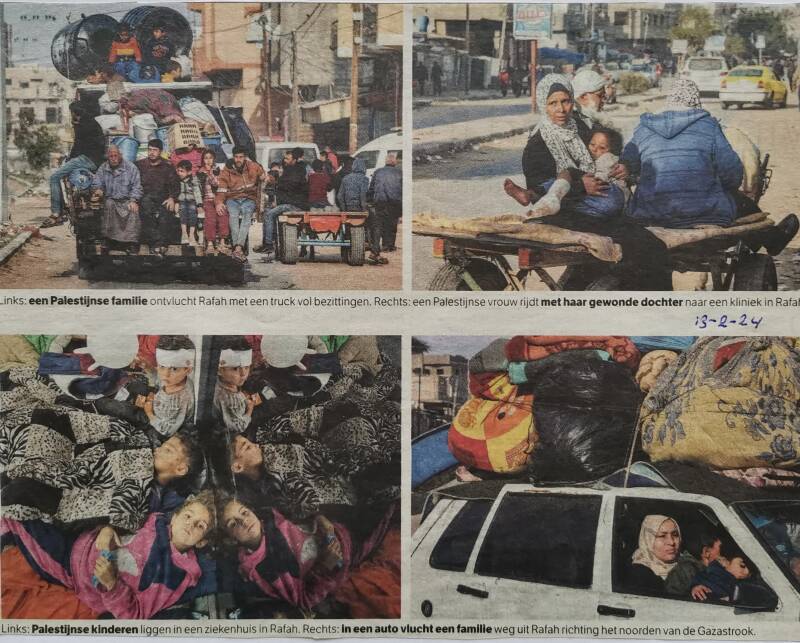
13 februari 2024


13 februari 2024
Today's headlines
U.S. Senate votes to send additional $14 billion to Israel as catastrophic ground invasion of Rafah appears imminent
As Palestinians prepare for a catastrophic ground invasion of Rafah, the U.S. Senate votes to send an additional $14 billion to Israel. Amnesty International warns Palestinians in southern Gaza are "facing the real and imminent risk of genocide."
The last American war
The U.S. supports Israel unconditionally because it sees the entire Western project in the Middle East at risk today in Gaza. While it may seem these our darkest days, it is also clear that the U.S. and Israel are bound to fail.
On Mourning
The very world perpetrating genocide asks Palestinians to prove that their children are indeed in pieces under the rubble, and not terrorists in a tunnel. Amid all the proving, there is no time to mourn.


13 februari 2024
The last 24 hours have been harrowing to witness.
Last night Israel launched an assault on the last “safe refuge” for Palestinians in Gaza.
Nearly 1.5 million Palestinian refugees are currently sheltering in Rafah - in tents, in make-shift shelters, in repurposed U.N. schools. Many of the Palestinians in Rafah now have been displaced multiple times since October 7th. One of the most terrifying parts of this latest round of attacks on Rafah is that there is nowhere left to go.
By planning the attacks the Israeli government admitted that public opinion in the U.S. is absolutely critical to their military strategy.
With the timing of these attacks, Israel revealed that it does not believe it can keep waging this horrific genocide and maintain its settler colonial project without the support of the U.S. And it can’t keep the military, financial, and diplomatic support of our leaders indefinitely if public opinion fully turns against them.
I know a lot of us feel helpless right now. Last night I felt helpless too.
But still there is so much we can do. So keep pushing your legislators. Keep organizing your own community.
Progress may look slow, but each action chips away at the structures that have been upholding Israeli apartheid for decades.
Together, we can make it.
Sandra Tamari
Executive Director
Adalah Justice Project
Our mailing address is:
Adalah Justice Project

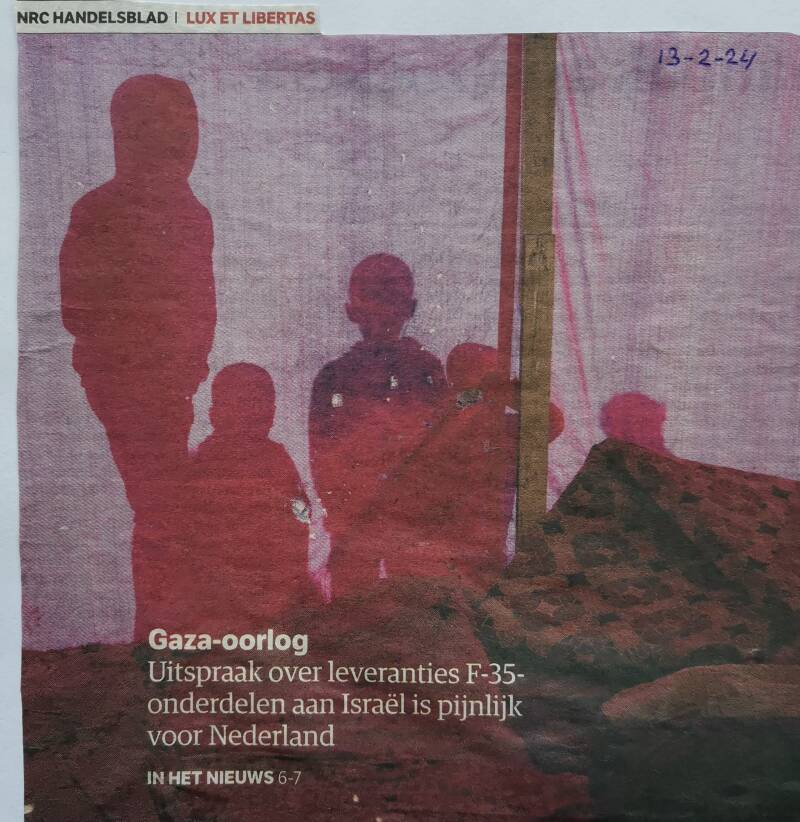
13 februari 2024


Hostilities in the Gaza Strip and Israel
Flash Update #117

A joint UN assessment of the destruction of a guesthouse that hosted a non-governmental organization in Khan Younis. The facilities of multiple humanitarian organizations have come under attack, although their locations are systematically communicated to the warring parties. Photo by Themba Linden/OCHA, 11 February 2024
13 februari 2024
Key points
- Intense Israeli bombardment from air, land and sea continues to be reported across much of the Gaza Strip, resulting in further civilian casualties, displacement, and destruction of civilian infrastructure. Ground operations and heavy fighting between Israeli forces and Palestinian armed groups also continue to be reported, particularly in Khan Younis and Rafah.
- Airstrikes on Rafah have heightened concerns of an escalation in the most southerly area of Gaza, which is already hosting over half of Gaza’s population. On 12 February, the UN High Commissioner for Human Rights, Volker Türk, warned that a “potential full-fledged military incursion into Rafah – where some 1.5 million Palestinians are packed against the Egyptian border with nowhere further to flee – is terrifying, given the prospect that an extremely high number of civilians, again mostly children and women, will likely be killed and injured. There must be an immediate ceasefire. All remaining hostages must be released. And there must be renewed collective resolve to reach a political solution.”
- Between the morning of 12 February and 10:30 on 13 February, according to the Ministry of Health (MoH) in Gaza, 133 Palestinians were killed, and 162 Palestinians were injured, mostly in Rafah and Khan Younis. Between 7 October 2023 and 10:30 on 13 February 2024, at least 28,473 Palestinians were killed in Gaza and 68,146 Palestinians were injured, according to MoH in Gaza.
- Between the afternoons of 12 and 13 February, three Israeli soldiers were reported killed in Gaza. As of 13 February, 230 soldiers have been killed and 1,346 soldiers injured in Gaza since the beginning of the ground operation, according to the Israeli military. In addition, over 1,200 Israelis and foreign nationals have been killed in Israel, including 36 children, according to the Israeli authorities, the vast majority on 7 October and in the immediate aftermath. As of 13 February 2024, the Israeli authorities estimate that about 134 Israelis and foreign nationals remain captive in Gaza, these reportedly include fatalities whose bodies are being withheld.
- On 10 February, the Education Cluster published a Satellite-derived Damage Assessment of schools across the Gaza Strip to verify the extent of damage since 7 October 2023 and as of the end of January 2024. The assessment found that 162 school buildings have been directly hit, representing nearly 30 per cent of the total of 563 school buildings in Gaza. At least 26 of these buildings have been destroyed. Given that some 63 per cent of schools in Gaza operate a double shift system, with different sets of pupils attending in morning and afternoon sessions, these 162 physical school buildings accommodate a total of 235 distinct schools which, prior to 7 October, served some 1750,00 pupils and were staffed by more than 6,500 teachers. Another 151 schools have been confirmed as damaged, and 95 are likely damaged, and 41 possibly damaged. Some 25 per cent of the schools that were directly hit or damaged are operated by UNRWA, and 45 per cent of the schools in these categories have also served as shelters for IDPs. At least 55 per cent of schools in Gaza will either need full reconstruction or major rehabilitation. The satellite-derived images also provide evidence for the military use of schools.
- According to the Ministry of Education, as of 6 February, more than 4,850 students and 239 educational staff have been killed and more than 8,227 students and 836 teachers have been injured in the Gaza Strip since 7 October. On 11 February, two Palestinian boys, including a 12-year-old, were reportedly killed when the Al Amal Boys School in western Khan Younis, which was being used as a shelter for IDPs, was reportedly fired upon.
- On 12 February, Médecins du Monde (MdM) condemned the destruction of its offices in Gaza city a few days previously, which they describe as deliberate. No staff was inside when the building was demolished. MdM did not receive any warning about the attack, even though its offices were clearly identified as those of a humanitarian agency, and the address of the building had been shared with the Israeli authorities, their statement says. "We are once again outraged by what appears to be a flagrant violation of international humanitarian law. The destruction of our offices is further proof that absolutely no place is safe in Gaza. NGO buildings are being demolished, while humanitarian aid is being demolished.”
- Intense fighting in Khan Younis, particularly near Nasser and Al Amal hospitals, continues to jeopardize the safety of medical staff, the wounded and the sick as well as internally displaced persons (IDPs). On 12 February, MoH in Gaza reported that seven Palestinians have been killed and 14 injured by sniper fire in the courtyard of Nasser hospital. The hospital’s suspended ceilings also sustained damage due to nearby explosions; sewage has leaked into the emergency department, according to MoH in Gaza. Al Amal Hospital continues to contend with acute shortages of fuel and medical supplies and currently has only one functional operating room.
- IDPs across Gaza continue to face deteriorating humanitarian conditions amid acute shortages of safe areas, shelters, clean water, food and medicine. As of 5 February, UNRWA estimates that some 75 per cent of Gaza’s population (1.7 million out of 2.3 million people) are displaced, the majority situated in Rafah governorate. On 10 February, the Israeli military reportedly fired on a school sheltering IDPs in Khan Younis, killing one Palestinian, according to UNRWA. The Agency estimates that at least 396 IDPs sheltering in its shelters have been killed and at least a further 1,379 injured since 7 October. On 12 February, the Al Huda Mosque in Rafah, which was sheltering IDPs, was reportedly destroyed by the Israeli Air Force, reportedly killing five Palestinians and injuring several others.
- Between 1 January and 12 February, humanitarian partners planned 77 missions to deliver aid and undertake assessments to areas to the north of Wadi Gaza. Of these, 12 were facilitated by the Israeli authorities, three were partially facilitated, 14 were impeded, 39 were denied access, and nine were postponed by the requesting agencies. Facilitated missions primarily involved food distribution, while the access of missions to support critical hospitals and facilities providing water, hygiene and sanitation (WASH) services remained among those overwhelmingly denied. During the same period, there were 189 planned missions to areas assessed as necessitating coordination to the south of Wadi Gaza. Of these, 107 were facilitated, two were partially facilitated, 19 were initially facilitated but then impeded, 48 were denied access, and 13 were postponed internally. Missions to areas not requiring coordination south of Wadi Gaza are not included in these statistics.
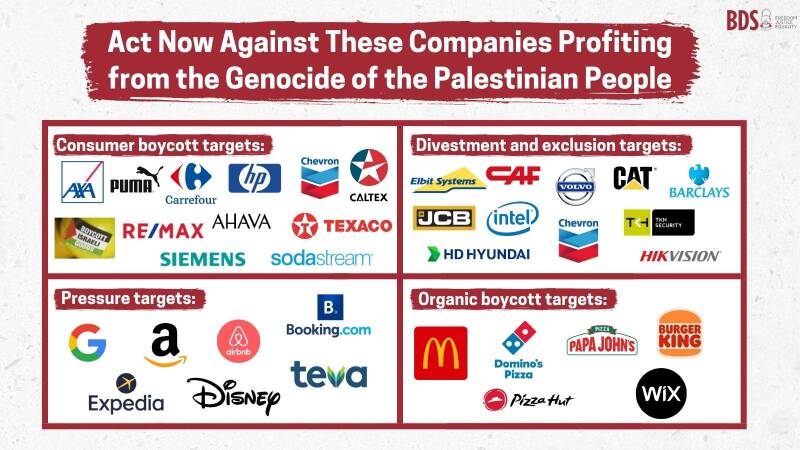
Hostilities and casualties (Gaza Strip)
- The following are among the deadliest incidents reported on 12 February:
- At about 6:00, 15 Palestinians, including children, were reportedly killed, and several others injured, when a residential building in southern Deir al Balah was struck.
- At about 1:50, 11 Palestinians were reportedly killed, and tens of others injured, when a residential building in the Yibna area of southern Rafah, was struck.
- At about 1:55, five Palestinians were reportedly killed, and tens other injured, when a residential building in Tal Asl Sultan area, in western Rafah, was struck.
- At about 2:00, seven Palestinians were reportedly killed, and tens of others injured, when a residential building near Al Falah Mosque, in northern Rafah, was struck.
- At about 2:00, five Palestinians were reportedly killed, and tens of others were injured, when a residential building in Al Adis area, in northeastern Rafah, was struck.
- At about 2:00, five Palestinians were reportedly killed, and tens of others injured, when a residential building in Ash Shouka area, in southern Rafah, was struck.
- At about 2:10, seven Palestinians were reportedly killed, and tens of others injured, when a residential building in An Nasser area, in southern Rafah, was struck.
- At about 2:40, five Palestinians were reportedly killed, and tens of others injured, when a residential building in Al Junina area, in southern Rafah, was struck.
- Aat about 2:45, ten Palestinians were reportedly killed, and tens of others injured, when a residential building in Bader area, in southern Rafah, was struck.
West Bank Updates
- On 11 February, Israeli forces shot and killed a Palestinian man at the entrance of Battir village in Bethlehem. The Israeli military reported that the man attempted to perpetrate a stabbing attack against soldiers, while local accounts indicated that he was shot after he had been stopped by Israeli forces. According to Palestinian medical sources, the man was shot more than 20 times, and an ambulance was prevented from reaching him; after a few hours his body was then handed over.
- On 13 February, according to initial information, Israeli forces shot and killed a Palestinian man during a search-and-arrest operation in Qalqiliya city. Reports indicate that an exchange of fire was taking place between Palestinians and Israeli forces about half an hour before the man was shot while driving home.
- Since 7 October 2023, 388 Palestinians have been killed, including 99 children, and 4,475 Palestinians, including 686 children, injured in conflict-related incidents across the West Bank, including East Jerusalem, and Israel. During the same period, 10 Israelis, including four members of security forces, were killed and 73 injured in conflict-related incidents in the West Bank, including East Jerusalem, and Israel.
- Since 7 October 2023, OCHA has recorded 527 Israeli settler attacks against Palestinians, resulting in Palestinian casualties (50 incidents), damage to Palestinian-owned property (418 incidents), or both casualties and damage to property (59 incidents). According to initial information, on 12 February, Israeli settlers raided Huwwara and Asira al Qibliya, both in Nablus governorate, and threw incendiary materials at Palestinian residences and parked vehicles. Clashes between Palestinians and settlers, who were accompanied by Israeli forces, were reported. Two Palestinians sustained live ammunition injuries, and residential houses and vehicles sustained moderate to severe damage.
- On 10 February, a Palestinian family was forced to demolish their house in the At Tur neighbourhood of East Jerusalem due to the lack of Israeli-issued building permit. Consequently, five people, including three children, were displaced. Since 7 October 2023, 513 people, including 251 children, have been displaced in Area C and East Jerusalem after their homes were demolished due to the lack of Israeli-issued building permits, which are almost impossible to obtain.
Funding
- The Flash Appeal for the occupied Palestinian territory (oPt) was extended through the end of March 2024 due to continuing impediments to an effective and appropriately scaled-up humanitarian response. The Flash Appeal, which was launched in October 2023 and updated in November 2023, requests US$1.229 billion to meet critical needs of 2.7 million people across the oPt (2.2 million in the Gaza Strip and 500,000 in the West Bank, including East Jerusalem). The appeal outlined a set of enabling operational conditions which did not materialize that were required for humanitarian actors to implement the planned activities. As a result, the appeal was extended on a ‘no cost’ basis and requirements split between the last quarter of 2023 and the first quarter of 2024. As of 13 February, member states disbursed a total of $887.1 million against the updated Flash Appeal (72.2 per cent); this includes $608.7 million out of $629.1 million (96.8 per cent) requested for October-December 2023 and $278.4 million out of $600 million (46.4 per cent) requested for January-March 2024.
- The occupied Palestinian territory Humanitarian Fund (oPt HF) and the CERF are currently funding more than 94 ongoing projects in the Gaza Strip to address urgent humanitarian needs. These interventions, totalling approximately $77 million, cover needs in the areas of food security, shelter, water, sanitation and hygiene (WASH), health and protection. Since October 7, the oPt the HF has received a total of $86 million in contributions from member states and private donors. Private donations are collected directly through the Humanitarian Fund. Recently approved projects include $3.5 million for the Emergency Fleet Augmentation project that aims to enhance aid delivery to Gaza under the oPt HF, and $700,000 for “Strengthening Collective Gender Responsive and Inclusive Accountability to Affected People in OPT” under the CERF.
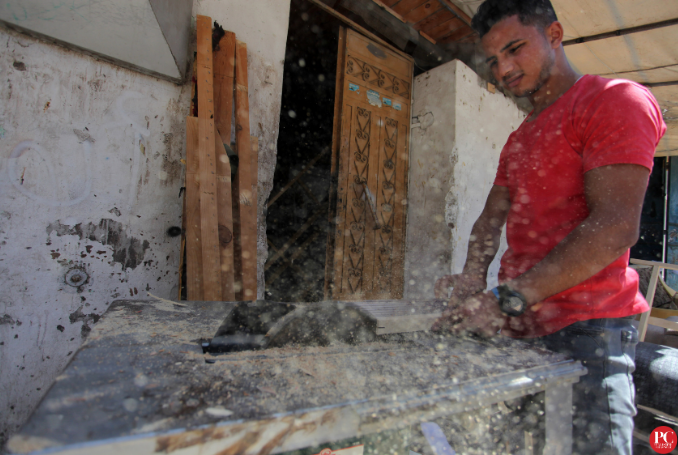
HUMANITARIAN NEEDS AND RESPONSE UPDATES | 5–12 February
Health
Needs
- High need for primary health services in informal shelters hosting IDPs.
- The high number of surgeries and procedures has led to increased demand for anaesthetic and analgesic medications which are in short supply.
- There is a need to increase routine immunization coverage and conduct a catch-up campaign.
- Provision of medication for non-communicable diseases and psychotropics is needed.
- There is a need to reduce overcrowding in maternity hospitals.
- The continued siege around some hospitals is significantly affecting their case management capacity.
- Laboratory equipment and reagents are needed to support diagnostics.
- Blood and blood products in hospitals are needed for emergencies and medical procedures to ensure that patients receive timely transfusions.
Response
- Cluster partners are reaching a weekly average of about 450,000 people in need of various health services and supplies.
- Ongoing disease surveillance at all health facilities is underway to ensure early diagnosis and treatment of cases as well as early detection of potential outbreaks.
- Planning to open stabilization centres for acute malnutrition cases with medical complications. One will be at Tal as Sultan and another in one of the field hospitals.
- 12 Emergency Medical Teams (EMTs) were deployed, assisting more than 16,000 patients.
- A weekly average of nearly 300,000 primary health care consultations was reported by partners.
Challenges and Gaps
- There is a need to strengthen referral mechanisms between hospitals.
- The influx of IDPs migrating to Rafah has overwhelmed the available bed availability in hospitals, leading to insufficient capacity to meet the healthcare needs of the population. Heigtened insecurity in Rafah is also greatly affecting response activities.
- Heightened insecurity and limited access to health facilities in the northern and middle governorates continue to present major challenges for partners to respond.
- Persisting siege of hospitals remains a major challenge.
- Referring patients outside of Gaza remains a challenge, as the waiting list continues to grow.
- Partner operations continue to be negatively affected by the displacement of staff, social stresses and telecommunication challenges.
- Limited access to proper WASH facilities is hindering prevention of diseases.
Shelter and Non-Food Items (NFI)
Needs
- Some 1.7 million people are need of shelter and NFI assistance, including 900,000 people reached with partial shelter and NFI assistance. Partial assistance means that although a household has received some shelter and NFI items, not all their needs have been met.
- Urgent needs are tents, sealing-off kits (SOKs) and NFIs, including bedding, kitchen sets, and winter clothing. SOKs can be used to consolidate makeshift shelters or to protect damaged housing to facilitate return where possible.
- Technical assistance is required to improve self-built shelters and spontaneous/informal sites. Also see Shelter Cluster snapshot, as of 7 February.
Response
- A total of 26 partners are providing assistance. Some 28,000 tents, 7,600 SOKs, and 35,000 NFI kits are currently in the pipeline.
- The vast majority of assistance is currently provided in-kind; cash will be pursued further when market conditions allow.
- Further details in the Cluster response strategy and website dashboard.
Challenges and Gaps
- Slow entry of items into Gaza due to limited aid trucks and bureaucratic processes are complicating procurement.
- Rising prices of shelter materials in neighbouring markets, including high freight rates and shipping costs.
- Need to restore commercial imports and re-establish local markets to relieve pressure on in-kind provision.
- Restrictions/denial of key shelter items including timber, hand tools, and cooking stoves.
- Lack of security and access to IDP locations, including logistical challenges such as lack of fuel and rising social tensions because of the limited quantity of aid available in comparison to outstanding needs.
- Unplanned sites and lack of adequate tools is leading to water damage to makeshift shelters and tents, and recurrent displacement resulting in loss and need for re-distribution of assistance.
Education
Needs:
- More than 625,000 students and nearly 23,000 teachers in the Gaza Strip have been affected by school closures and attacks on education, leaving them with no access to education or a safe place.
- According to the Ministry of Education, as of 6 February, more than 4,851 students and 239 educational staff have been killed and more than 8,227 students and 836 teachers have been injured in the Gaza Strip since 7 October.
- Some 92 per cent of all school buildings in Gaza are being used as shelters for IDPs and/or have sustained varying levels of damage. Some 392 schools (79 per cent of the total school buildings in Gaza) have sustained damage, including 141 schools that sustained major damage or were destroyed. Combined, these schools previously served some 457,019 children and more than 17,043 teachers. The North, Gaza, and Khan Younis governorates have been especially impacted, accounting for 76 per cent of all damaged schools (source: Education Cluster Damaged School Dashboard.)
- The Education Cluster conducted a Satellite-derived Damage Assessment of all Gaza schools to verify damage to schools based on proximity to damaged sites. Key findings include:
- Satellite-derived Damage verification exercise confirmed the large level of damage to schools previously reported by the cluster in Gaza.
- Actual damages to school infrastructure might be 15 to 20 per cent higher than what has been previously reported by the Education Cluster.
- At least 55 per cent of schools in Gaza will either need full reconstruction or major rehabilitation work to be functional again.
- One quarter of directly hit and damaged schools are UNRWA-run schools
- Forty-five per cent of school buildings that have been used by IDPs as shelters, have been either directly hit or damaged.
- The satellite-derived images provide evidence for military use of schools.
- Education partners are concerned about reports, videos and pictures depicting schools being used for military operations by Israeli forces, including their use as detention and interrogation centres, or as military bases.
- Key priorities include the provision of Education in Emergencies (EiE) recreational activities and psychological support, including Social Emotional Learning (SEL) activities to children in shelters and designated emergency shelters (DESs); establishing Temporary Learning Spaces (TLS) in shelters/DESs to start non-formal learning for children; and provision of emergency supplies and learning kits. In addition, a key need is to identify and support of children with disabilities and other needs, with assistive devices for learning.
Response
- Since October 2023, eleven partners have reached more than 135,126 students and teachers with psychosocial support, emergency learning, recreational supplies and activities, and awareness sessions in the Deir al Balah, Khan Younis, and Rafah governorates. Most of the cluster responses are delivered by local partners (source: Education Cluster 5W dashboard).
- UNICEF, with three of its partners and Teacher Creativity Centre, is working on establishing TLS to start non-formal education activities with displaced children in shelters/DESs.
- The Education and the Shelter Clusters are jointly carrying out advocacy activities to highlight the devastating impacts of the current situation in Gaza on children and the inextricable links between shelter and schooling.
Challenges and Gaps
- No activities have been undertaken in the North Gaza and Gaza governorates due to ongoing hostilities and access challenges.
- As of 11 February, the education response remains significantly underfunded, receiving less than 10 per cent of its requirements. Urgent funding is required to meet immediate response requirements.
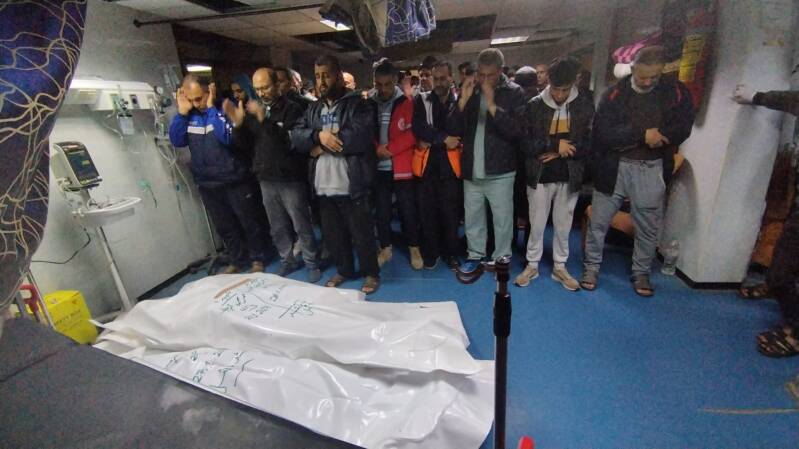
Logistics
Response
- The Logistics Cluster has conducted the Gaps and Needs Analysis Survey to identify needs and gaps, and to adapt the Cluster`s strategy and services accordingly. Findings will be made available by mid-February.
- The Logistics Cluster has made available to partners an additional common warehouse in the North Camp of Rafah, bringing up the total storage capacity to 2,470 m2. The Logistics Cluster has secured storage space at the WFP warehouse in Amman with a capacity of 1,300 m2 for consolidation and pre-positioning of cargo.
- As of 11 February, the Logistics Cluster in Rafah has stored 6,696 cubic metres of cargo for of 16 organisations and supported 21 organizations with cargo notification service.
- On 6 February, the Logistics Cluster facilitated access for an inter-agency convoy (five partners), which transported a total of 335 metric tons of relief items on 24 WFP trucks from Jordan to Gaza, via the King Hussein Bridge.
Challenges and Gaps
- The storage and transport capacity inside Gaza remains limited. The Logistics Cluster continues to facilitate access to temporary storage, transport from handover points to common warehouses, and cargo notification trans-shipment services.
- The Logistics Cluster is coordinating the pipeline for incoming cargo through the Egyptian and Jordanian corridors for the coming three months. This is a vital exercise for operational planning, in terms of understanding the resources available and making allocations based on the prioritization list. Partners have received a dedicated form and are requested to update it weekly. Partners who have not received the form can reach out to palestine.logcluster@wfp.org.

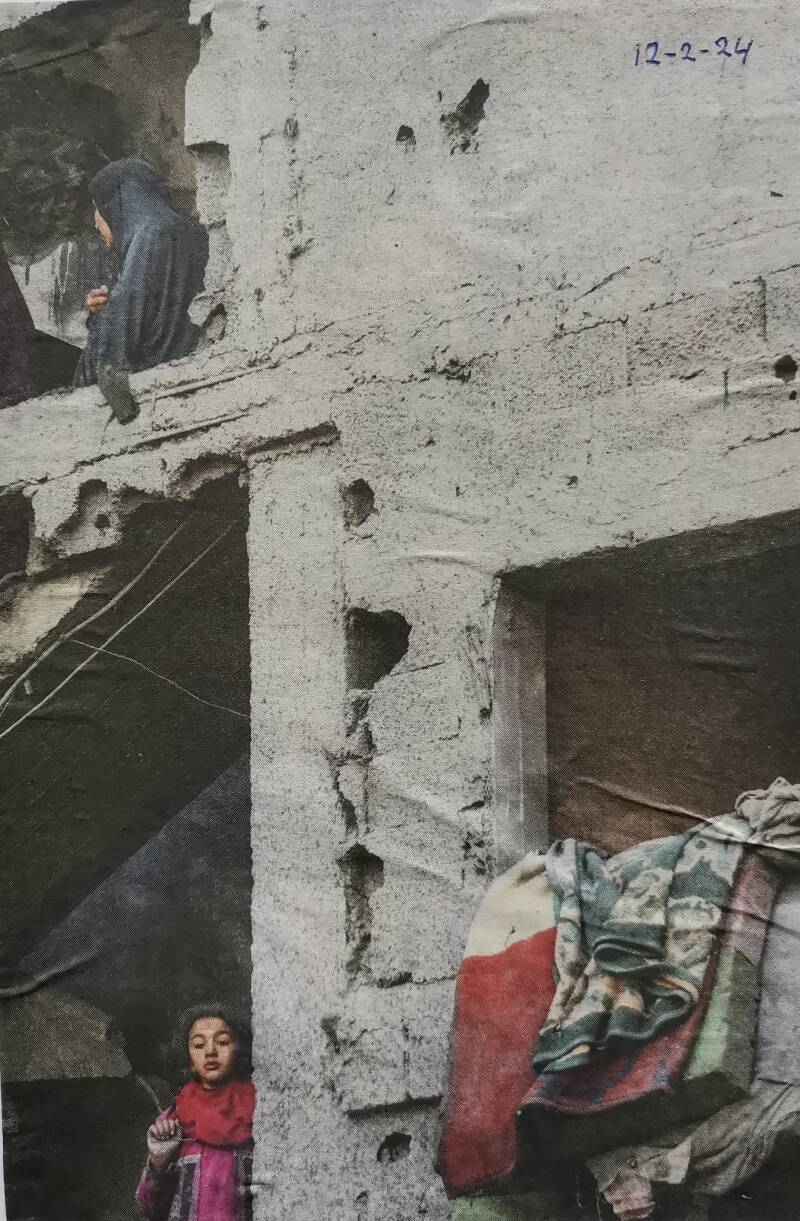
12 februari 2024


12 februari 2024
Last night, Israel massacred over 100 Palestinians in Rafah, Tell the President and members of Congress to act now
Israeli airstrikes mercilessly targeted the already beleaguered southern city of Rafah, resulting in the tragic loss of over a hundred Palestinian lives.
The scenes from Rafah are a stark reminder of the ongoing humanitarian catastrophe unfolding in Gaza. For months, Israel's relentless aggression has systematically herded Palestinians into Rafah, transforming it into the most densely populated area on Earth. With each bombardment, the already dire situation plunges further into the depths of despair.
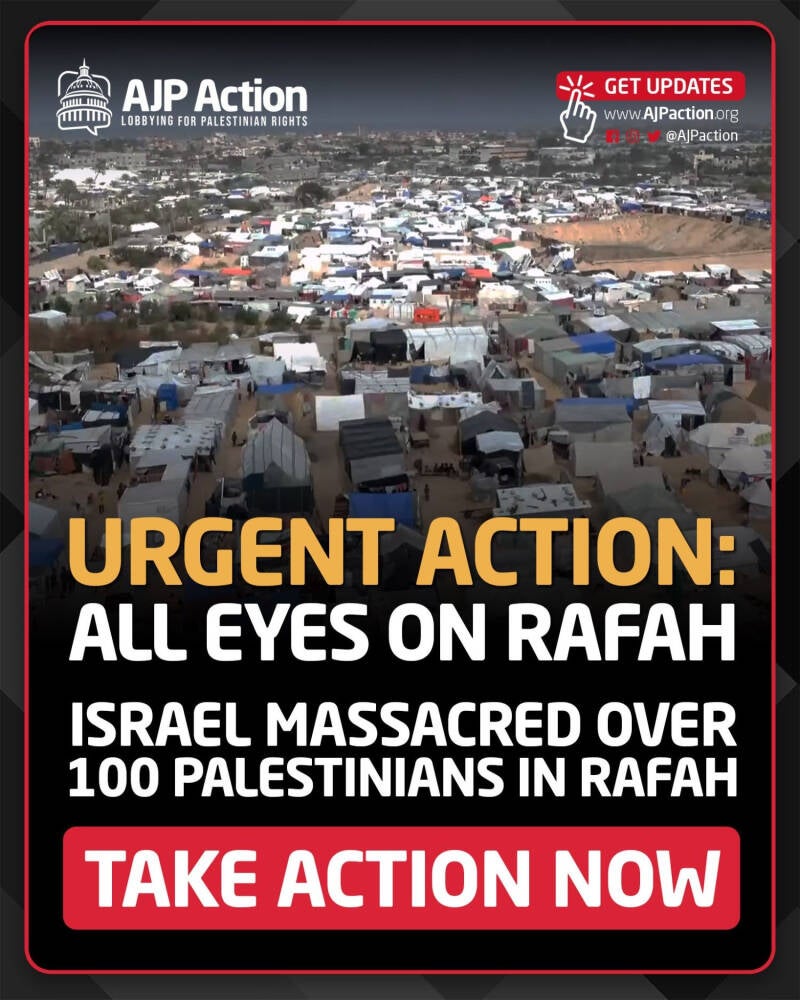
The recent escalation of violence has exacted a heavy toll on Gaza's people, with over 27,000 lives taken and a staggering 1.9 million displaced, seeking refuge wherever they can find it amidst the rubble of their shattered homes. Half a million individuals teeter on the brink of starvation and disease, their plight exacerbated by the relentless onslaught.
In the face of such unyielding suffering, we must not allow ourselves to become desensitized. We must raise our voices in unwavering solidarity with the people of Gaza, demanding accountability from the Israeli government and justice for the victims of this senseless violence.
Let us persist!


12 februari 2024
Today as 1.4 million Palestinian refugees sheltering in Rafah await the full scale invasion that Israel is currently threatening,
If you tune in tonight, you’ll see a $7 million ad purchased by New England Patriots owner, Bob Kraft, a long-time apologist for Israel’s war crimes. Under Kraft's guidance, the advertisement is a propaganda effort to neutralize the narratives and visuals emerging from Gaza that young people are posting on social media.
We know from teasers that the ad features Clarence B. Jones, the 93-year old speechwriter for Rev. Dr. Martin Luther King, Jr. and will encourage the public to post a blue square on social media. Not only is Israel losing the support of young people, but polls show that Black Americans are turning towards Palestinians to offer solidarity as fellow colonized people. This ad is a gross perversion of racial justice.
Kraft’s Foundation to Combat Anti-Semitism relies on Anti-Defamation League (ADL) statistics to show a rise of anti-semitism in the U.S. No surprise, the evidence presented by the ADL to support the idea that anti-semitism is rising is based on growing criticism of Israel as it commits genocide against the Palestinians of Gaza. By conflating critiques of Israel with antisemitism, the ADL aims to stifle debate and discourage scrutiny of Israeli actions.
This well-funded campaign to undermine support for Palestinian freedom is failing. A full 50% of Biden 2020 voters say Israel is committing a genocide in Gaza and 80% of Democratic voters support a ceasefire. Support for Israel’s war crimes is even shrinking among older voters.
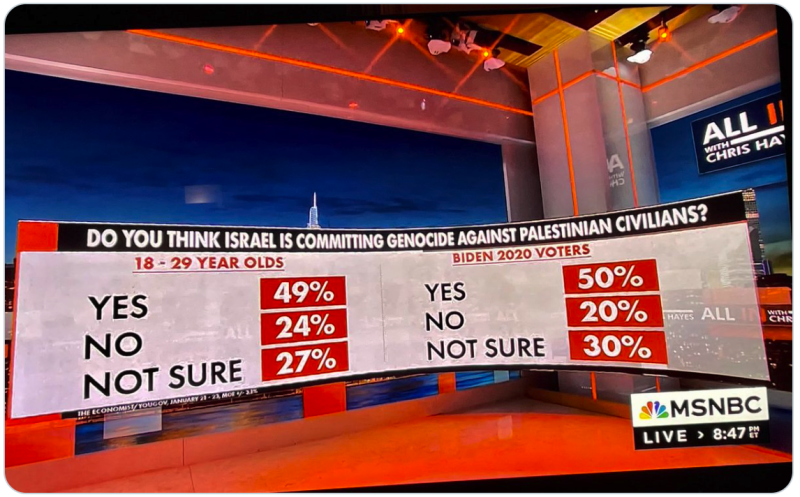
This week, we will be amping up pressure on the Biden Administration and Congress to call for ceasefire, end the genocide in Gaza, and stop funding Israel.
On Thursday, we will join United We Dream in DC to demand that Congress stop using asylum and the border as bargaining chips for more war.
We will continue to increase pressure on senior Biden staffers to resign and end their complicity with genocide. Over the last week, AJP supporters like you, have sent 1.5 million emails to Biden staffers asking for their resignation (thank you!).
From a leaked audio recording of a meeting of Dearborn Arabs with Jon Finer, Deputy Director of the National Security Council and statements from Biden himself, we know the administration is backpedaling on support for Israel to save themselves in the election.
Their words are empty without real action to stop the diplomatic and financial support that the U.S. provides. We must continue to be loud, determined, and undeterred.
We won’t stop until full liberation,
Sandra Tamari
Executive Director
Adalah Justice Project


12 februari 2024
Here’s the latest...

Gaza’s destruction was a political act. Jacobin spoke to Palestinian refugees about the Gaza they remember and how Israel brought their homeland to ruin.


12 februari 2024
Today's headlines
Israel bombards Rafah, killing more than 60 in a night

67 Palestinians, including babies and children, were killed Sunday night as Israel intensified bombing in Rafah, where over 1 million Palestinians are sheltering, in preparation for a ground invasion that experts warn would amount to genocide.
Read more
My (Jewish) People

no longer wandering in the wilderness we have become the pharaoh
U.S. mainstream media ignores ‘Guardian’ exposé on CNN’s pro-Israel bias

Why won’t the U.S mainstream media follow up the ‘Guardian’ report on pro-Israel bias at CNN?


12 februari 2024
Vanochtend was de uitspraak in het hoger beroep in onze zaak tegen de Staat. We hebben gewonnen!
Nederland moet de levering van onderdelen van F-35-gevechtsvliegtuigen naar Israël stoppen.
De rechter maakte gehakt van de argumenten van de Staat. We werden op alle punten in het gelijk gesteld. Het recht zegeviert!

Ik draag de uitspraak op aan onze oprichter en inspirator Dries van Agt.
Afgelopen november eisten we samen met Oxfam Novib en PAX dat de uitvoer van de wapenonderdelen naar Israël zou worden gestaakt. Op 15 december wees de rechter onze eis af. We gingen in beroep. Met nu deze overwinning als resultaat.Het hof stelt vast:
- Het staat vast dat Israël bij de aanvallen in de Gazastrook onvoldoende rekening houdt met de gevolgen voor de burgerbevolking.
- Bij de aanvallen zijn disproportioneel veel burgerslachtoffers gevallen, waaronder duizenden kinderen.
- Er is een duidelijk risico dat met de F-35-gevechtsvliegtuigen van Israël ernstige schendingen van het humanitaire oorlogsrecht worden gepleegd in de Gazastrook.
- Als er zo'n risico bestaat moet Nederland op grond van internationale verdragen de uitvoer van militaire goederen verbieden.
Betekenis van de uitspraak
De betekenis van de uitspraak is groot: mensenrechten en de internationale rechtsorde mogen niet ondergeschikt worden gemaakt aan de relatie met Israël en de VS en aan economische belangen.
Ik draag de uitspraak op aan de 2,3 miljoen inwoners van de Gazastrook.
Gerard Jonkman
Directeur The Rights Forum
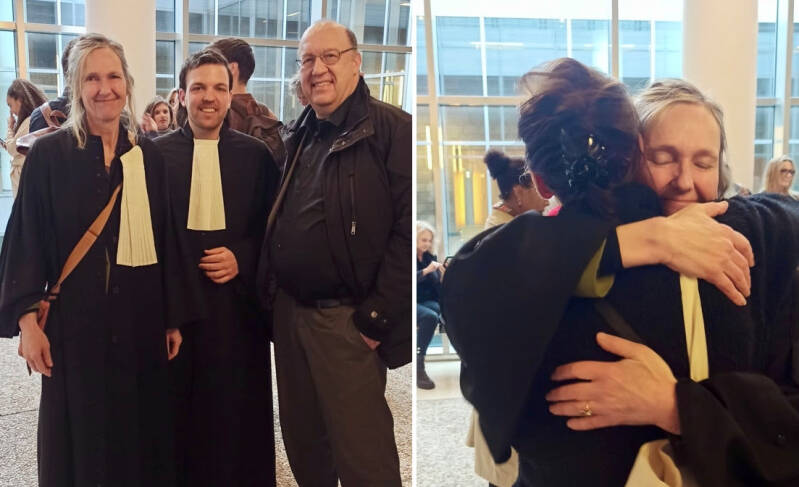
Wij strijden tegen oorlogsmisdaden, annexatie, bezetting en onderdrukking. Helpt u mee?


Hostilities in the Gaza Strip and Israel
Flash Update #116
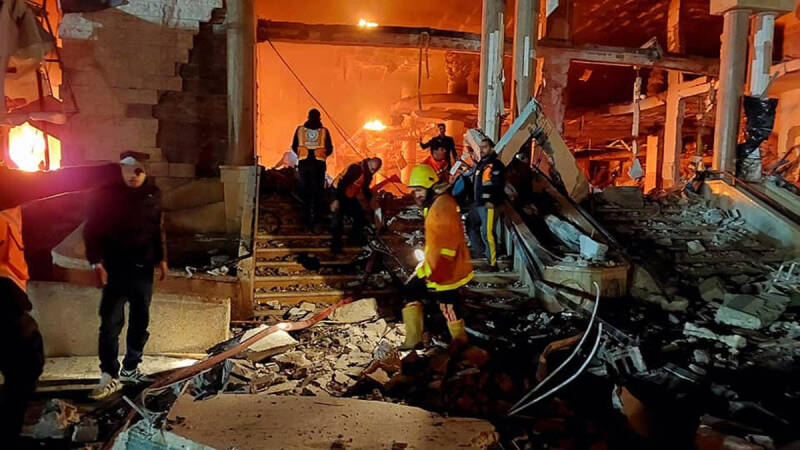
ncreased airstrikes in Rafah have heightened concerns of an escalation in the most southerly city in Gaza, where hundreds of thousands of Palestinians have sought refuge. Buildings on fire in Rafah following an overnight attack. Photo by the Civil Defence, 12 February 2024.
12 februari 2024
Key points
- Intense Israeli bombardment from air, land and sea continues to be reported across much of the Gaza Strip, resulting in further civilian casualties, displacement, and destruction of civilian infrastructure. Ground operations and heavy fighting between Israeli forces and Palestinian armed groups also continue to be reported, particularly in Khan Younis and Rafah, with reports of Israeli military withdrawal from Gaza city. Increased airstrikes in Rafah have heightened concerns of an escalation in the most southerly city in Gaza, where hundreds of thousands of Palestinians have sought refuge. On 12 February, Médecins Sans Frontières warned that “Israel’s declared ground offensive on Rafah would be catastrophic and must not proceed.”
- Between the afternoon of 9 January and 11:00 on 12 February, according to the Ministry of Health (MoH) in Gaza, 393 Palestinians were killed and 525 Palestinians were injured, including 164 killed and 200 injured in the last 24 hours. Between 7 October 2023 and 11:00 on 12 February 2024, at least 28,340 Palestinians were killed in Gaza and 67,984 Palestinians were injured, including at least 12,300 children, according to MoH in Gaza.
- Between the afternoons of 9 and 12 February, two Israeli soldiers were reported killed in Gaza, both on 11 February. As of 12 February, 227 soldiers were killed and 1,326 soldiers were injured in Gaza since the beginning of the ground operation, according to the Israeli military. In addition, over 1,200 Israelis and foreign nationals have been killed in Israel, including 36 children, according to the Israeli authorities, the vast majority on 7 October and in the immediate aftermath.
- On 12 February, two Israeli hostages, aged 60 and 70, were rescued from a building in Rafah in a predawn Israeli forces operation and evacuated to a hospital in Israel, according to the Israeli military. As of 12 February 2024, the Israeli authorities estimate that about 134 Israelis and foreign nationals remain captive in Gaza; these reportedly include fatalities whose bodies are being withheld. During the humanitarian pause (24-30 November), 86 Israeli and 24 foreign national hostages were released.
- On 10 February, the Palestine Red Crescent Society (PRCS) announced that the bodies of two members of an ambulance crew had been discovered in their destroyed vehicle, which they attributed to Israeli shelling. According to PRCS, 14 PRCS crew members have been killed since the start of the hostilities in the Gaza Strip. The crew had been dispatched on 29 January to rescue a six-year-old girl in Gaza city, the survivor of a strike on her vehicle which killed her five family members. The vehicle with the bodies of the family, including the child, was discovered following the withdrawal of Israeli forces from the area.
- Intense fighting in Khan Younis, particularly near Nasser and Al Amal hospitals, continues to jeopardize the safety of medical staff, the wounded and the sick as well as internally displaced persons (IDPs). On 11 February, PRCS reported that Israeli forces had raided Al Amal Hospital, detained 18 people, including nine medical and volunteer staff, four wounded persons and five companions, and caused significant damage to medical and logistical equipment. PRCS further alleges that money was taken from the hospital safe as well as from patients and IDPs, and that the operation entailed physical abuse and denial of access to sanitation facilities. Al Amal Hospital continues to contend with acute shortages of fuel and medical supplies and currently has only one operating room functional. Separately on 11 February, PRCS reported that structural damage had been caused to the main gate of the hospital due to Israeli strikes and that the hospital’s remaining vehicle had been rendered out of service. On 12 February, PRCS released video footage reportedly showing damage inflicted on its ambulance fleet due to Israeli fire.
- IDPs across Gaza continue to face deteriorating humanitarian conditions amid acute shortages of shelter, clean water, food and medicine. As of 5 February, UNRWA estimates that some 75 per cent of Gaza’s population (1.7 million out of 2.3 million people) are displaced, the majority situated in Rafah governorate where humanitarian operations are now based. On 10 February, the Israeli military reportedly destroyed the western perimeter wall of a school in Khan Younis hosting some 700 IDPs and forced them to evacuate, according to UNRWA. On 10 February, four displaced people in Nasser Hospital were allegedly shot and killed in the hospital’s courtyard. On 11 February, two Palestinians were reportedly shot and killed in front of the gate of Nasser Hospital. Meanwhile, reports indicate that several fatalities have been lying on the ground around the hospital, for several days, and have been unreachable due to continued attacks in the hospital’s vicinity.
- Between 1 January and 12 February, humanitarian partners planned 77 missions to deliver aid and undertake assessments to areas to the north of Wadi Gaza. Of these, 12 were facilitated by the Israeli authorities, three were partially facilitated, 14 were impeded, 39 were denied access, and nine were postponed by the agencies themselves. Facilitated missions primarily involved food distribution, while the access of missions to support critical hospitals and facilities providing water, hygiene and sanitation (WASH) services remained among those overwhelmingly denied. During the same period, there were 189 planned missions to areas assessed as necessitating coordination to the south of Wadi Gaza. Of these, 107 were facilitated, two were partially facilitated, 18 were initially facilitated but then impeded, 48 were denied access, and 14 were postponed internally. Missions to areas not requiring coordination south of Wadi Gaza are not included in these statistics.

Hostilities and casualties (Gaza Strip)
- On 10 February, at about 8:00, one Palestinian fisherman was reportedly killed off the coast of Deir al Balah. This reportedly marks at least the third incident of fishers being shot in Gaza over the past week, and the first reported such incident in Deir al Balah.
- The following are among the deadliest incidents reported between 8 and 11 February:
- On 8 February, at about midnight, five Palestinians, including two women, two children and one man, were reportedly killed, when a nursery was hit in a strike on a residential square in Deir al Balah governorate.
- On 9 February, at about 23:00, six Palestinians, including two women and three children, were reportedly killed, when a residential building near the Awad towers in eastern Rafah, was struck.
- On 10 February, at about midnight, at least 11 Palestinians were reportedly killed, when a residential building in An Naser neighbourhood in northern Rafah, was struck.
- On 10 February, at about 2:00, four Palestinians, including a university professor, her husband and their two children, were reportedly killed, when a residential building in northern Rafah, was struck.
- On 10 February, at about 5:00, seven Palestinians were reportedly killed, and others were injured, when a residential building in An Naser neighbourhood, in northern Rafah, was struck.
- On 10 February, at about 15:00, 12 Palestinians, including children, were reportedly killed, and tens of others injured, when a residential building in Ash Shoka Town in eastern Rafah, was struck.
- On 10 February, at about 16:00, at least four Palestinians were reportedly killed, and several others injured, when a residential building in Deir al Balah was struck.
- On 10 February, at about 15:30, three police officers were reportedly killed, and several others injured, when a police vehicle in the Brazilian neighbourhood of Rafah was struck.
West Bank Updates
- On 10 February 2024, a 17-year-old Palestinian child was shot and killed by Israeli soldiers while driving between Qattana and Biddu villages northwest of Jerusalem. According to local sources and eyewitnesses, the incident occurred as two Palestinians from Biddu village were on their way back from a picnic when an Israeli military jeep, stationed at the security road adjacent to the Barrier, reportedly opened fire on the moving car. The second passenger sustained injuries.
- On 11 February 2024, a 16-year-old Palestinian child was shot and injured by Israeli forces after allegedly attempting to stab an Israeli Border Police officer in Al Wad Street in the Old City of Jerusalem. The Israeli forces subsequently deployed heavy forces and reportedly blocked entrances to the Old City of Jerusalem. According to the lawyer of the injured child’s family, the child was arrested and transferred to an Israeli hospital.
- On 7 February, during an Israeli military operation in Nur Shams refugee camp, two residential buildings sustained severe damage and were rendered uninhabitable, resulting in the displacement of five families comprising 30 people, including eight children. Initial field information indicates that about 30 additional houses sustained minor to moderate damage during the operation.
Funding
- As of 12 February, Member States have disbursed $886.8 million against the updated Flash Appeal launched by the UN and its partners to implement its response plan in support of 2.2 million people in the Gaza Strip and 500,000 people in the West Bank. This constitutes 72 per cent of the $1.2 billion requested to cover humanitarian needs through the end of March 2023.
- Private donations are collected through the Humanitarian Fund. A private foundation in Australia has donated $2.2 million. Since 7 October, the Humanitarian Fund has disbursed about $55 million.
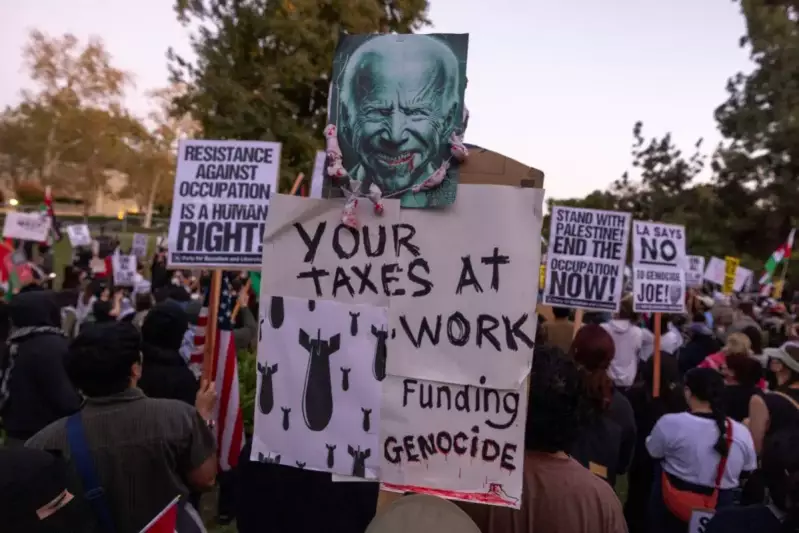
HUMANITARIAN NEEDS AND RESPONSES: 5 - 12 February
Health
Needs:
- High need for primary health services in informal shelters hosting IDPs.
- The high number of surgeries and procedures has led to increased demand for anaesthetic and analgesic medications which are in short supply.
- There is a need to increase routine immunization coverage and conduct catch-up campaign.
- Provision of medication for non-communicable diseases and psychotropics is needed.
- There is a need to reduce overcrowding in maternity hospitals.
- The continued siege around some hospitals is greatly affecting their case management capacity.
- Laboratory equipment and reagents are needed to support diagnostics.
- Blood and blood products in hospitals are needed for emergencies and medical procedures to ensure that patients receive timely and necessary transfusions.
Response:
- On average, partners are reaching about 450,000 people in need of various health services.
- Ongoing disease surveillance at all health facilities to ensure early diagnosis and treatment of cases as well as early detection of any potential outbreak.
- Planning to open stabilization centres for acute malnutrition cases with medical complications. One will be at Tal as Sultan and another likely in one of the field hospitals.
- 12 Emergency Medical Teams (EMTs) were deployed, assisting more than 16,000 patients.
- A weekly average of nearly 300,000 primary health care consultations was reported by partners.
Challenges and Gaps:
- Increased insecurity in Rafah is greatly affecting response activities.
- There is a need to strengthen referral mechanisms between hospitals.
- The influx of IDPs migrating to Rafah has overwhelmed the available bed capacities in hospitals, leading to insufficient capacity to meet the healthcare needs of the population.
- The high insecurity and limited access to health facilities in the northern and middle governorates continue to present major challenges to partners’ response activities.
- Persisting siege of hospitals remains a major challenge.
- Referring patients outside of Gaza remains a challenge, as the waiting list continues to grow.
- Partner operations continue to be negatively affected by the displacement of staff, social stresses and telecommunication challenges.
- Limited access to proper WASH facilities is hindering prevention.
Shelter and Non-Food Items (NFI)
Needs:
- Some 1.7 million people are need of shelter and NFI assistance, including 900,000 people reached with partial shelter and NFI assistance.
- Urgent needs are tents, sealing-off kits (SOKs) and NFIs, including bedding, kitchen sets, and winter clothing.
- Technical assistance is required to improve self-built shelters and spontaneous/informal sites. Also see Shelter Cluster snapshot, as of 7 February.
Response:
- A total of 26 partners are actively providing assistance. Partial assistance means that although a household has received some shelter and NFI items, not all their needs have been met. SOKs can be used to consolidate makeshift shelters or to protect damaged housing to facilitate return where possible.
- Some 28,000 tents, 7,600 SOKs, and 35,000 NFI kits are currently in the pipeline.
- The vast majority of assistance is currently provided in-kind; cash will be pursued further when market conditions allow.
- Further details in the Cluster response strategy and website dashboard.
Challenges and Gaps:
- Slow entry of items into Gaza due to limited aid trucks and bureaucratic processes complicating procurement.
- Rising prices of shelter materials in surrounding markets, including high freight rates and shipping costs.
- Need to restore commercial imports and re-establish local markets to relieve pressure on in-kind provision.
- Restrictions/denial of key shelter items including timber, hand tools, and cooking stoves.
- Lack of security and access to IDP locations, including logistical challenges such as lack of fuel and rising social tensions because of the limited quantity of aid available in comparison to the huge outstanding needs.
- Unplanned sites and lack of adequate tools leading to water damage to makeshift shelters and tents, and recurrent displacement resulting in loss and need for re-distribution of assistance.
Protection against sexual abuse and exploitation (PSEA) remains a cross-cutting priority for all clusters. The SAWA helpline, reachable at 121 and through WhatsApp at +972 59-4040121 (East Jerusalem at 1-800-500-121), operates 24/7. This toll-free number is widely disseminated across all areas of intervention to report cases of SEA and to facilitate emergency counselling and referrals for affected communities to access life-saving services. The PSEA Network monitors calls daily and will increase the number of counsellors if necessary.


11 februari 2024
Protestactie: De Strijkkwartet Biënnale Amsterdam promoot genocide!

Op 29 januari trad het Jerusalem Quartet op in het muziekgebouw aan 't IJ in Amsterdam. De mooie klanken van hun muziek konden niet verhullen dat zij onderdeel zijn van de Brand Israël Campagne, in het leven geroepen door het Israëlische ministerie van Buitenlandse Zaken om het imago van Israël op te poetsen en zijn oorlogsmisdaden wit te wassen.
Bezorgde muziekliefhebbers verstoorden het concert om het publiek hierover te informeren en op te roepen de zaal te verlaten.
Buiten demonstreerde een groep activisten en deelde flyers uit aan het publiek over de Brand Israël Campagne en de rol van het Jerusalem Quartet daarin.

Muziek en kunst dienen bruggen te bouwen. Maar voor Israël is kunst en cultuur propaganda. Israël financiert, promoot en stuurt artiesten en kunstenaars naar het buitenland zodat u Israël associeert met muziek en kunst in plaats van met oorlogsmisdaden, militaire bezetting, apartheid, onderdrukking, kolonisatie en nu zelfs genocide.
Het Jeruzalem Kwartet is trots op het label culturele ambassadeur van de staat en laat zijn muziek graag gebruiken voor de Brand Israël Campagne. Met de status van "distinguished IDF musicians" hebben zij ook altijd een nauwe band met het leger behouden.
Door een podium te geven aan deze propaganda, normaliseert de Strijkkwartet Biënnale het gewelddadige rechtsextremistische Israëlische regime en legitimeert zij de genocide op 2,3 miljoen Palestijnen in bezet en geblokkeerd Gaza.
Muzikanten, kunstenaars en artiesten in Gaza worden gedood door Israëlische bommen en lijden honger door de sadistische blokkade. Israël heeft bijna alle muziekscholen, theaters en culturele centra in Gaza vernietigd en meer dan 100 historische plekken opzettelijk verwoest. Palestijnse artiesten kunnen niet vrij reizen om hun eeuwenoude verfijnde cultuur in het buitenland te promoten.
De Strijkkwartet Biënnale Amsterdam onderschrijft de Governance Code Cultuur, de Code Culturele Diversiteit en de Fair Practice Code maar is een onveilige plek voor Palestijnse muzikanten en muziekliefhebbers.
Wij roepen de organisatie dan ook op hier lering uit te trekken en in de toekomst geen ambassadeurs van onderdrukkende apartheid regimes uit te nodigen op het podium.
Het Jerusalem Quartet speelt op 27 februari weer in Den Haag in Diligentia en op 18 mei in Amsterdam in het Concertgebouw. Roep deze podia op zich niet voor het karretje van Brand Israel te laten spannen en deze optredens te annuleren:
Schrijf een bericht aan Diligentia.
Schrijf een bericht aan het Concertgebouw.
Email onze minister van Buitenlandse Zaken en VN-ambassadeurs: Steun de zaak van Zuid-Afrika bij het ICJ!
Op vrijdag 26 januari 2024 heeft het Internationaal Gerechtshof (ICJ) bevestigd dat Israël betrokken is bij op zijn minst een aannemelijk geval van genocide tegen 2,3 miljoen Palestijnen in de bezette en belegerde Gazastrook. Het Internationaal gerechtshof erkent het bestaan van een ernstig risico op genocide in de belegerde Gazastrook en roept op tot voorlopige maatregelen, allereerst dat Israël een einde maakt aan alle genocidale daden. De maatregelen roepen ook op tot de onmiddellijke openstelling van Gaza voor humanitaire hulp, en tot het voorkomen en bestraffen van het aanzetten tot genocide door Israëlische functionarissen.
De uitspraak van het ICJ heeft bredere implicaties voor alle staten – aangezien ze allemaal verplicht zijn om zich te onthouden van het plegen van genocide, en om dat te voorkomen en te bestraffen waar het ook plaatsvindt. Alle staten die partij zijn bij het Verdrag hebben wettelijke verplichtingen om de implementatie van de ‘voorlopige maatregelen’ te garanderen, genocide te voorkomen en ervoor te zorgen dat zij niet medeplichtig zijn aan genocide.
Daarom roept de ECCP alle Europese landen op om Israël te dwingen de uitspraak van het ICJ na te leven, om de implementatie van voorlopige maatregelen te garanderen en om de procedure van het Internationaal Gerechtshof die door Zuid-Afrika is geïnitieerd om de vernietiging en genocide van Israël in Gaza te stoppen, volledig te steunen.
We moeten NU HANDELEN en druk uitoefenen op onze regeringen om Israël te dwingen de uitspraak van het Internationaal Gerechtshof na te leven!
Stuur hieronder een bericht naar ons Ministerie van Buitenlandse Zaken en VN-ambassadeurs!
Dringend: STOP ISRAËLS BLOEDBAD IN RAFAH NU!
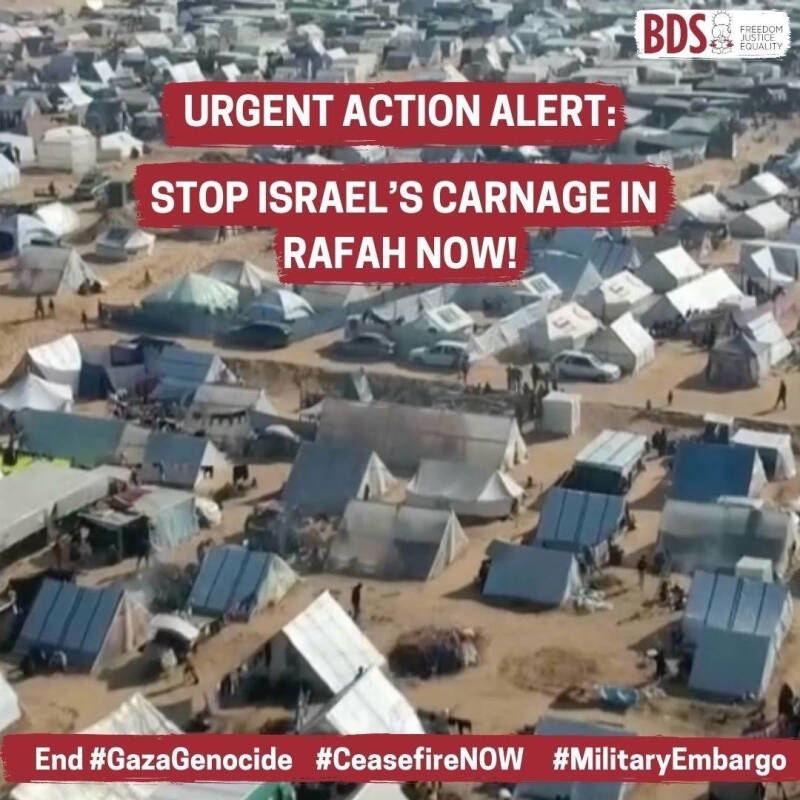
- De Israëlische premier Netanyahu, die zijn 4 maanden lang gelive-streamde intensiveert, heeft zijn leger opdracht gegeven om plannen te maken voor etnische zuivering van meer dan 1,2 miljoen Palestijnen uit het extreem drukke Rafah in de bezette Gazastrook.
Honderdduizenden Palestijnen ontsnapten vanuit andere delen van Gaza naar Rafah aan Israëls meedogenloze bombardementen en belegering, terwijl honger en mogelijk hongersnood de hele bevolking van 2,3 miljoen mensen bedreigen, volgens VN-organisaties.
Netanyahu's bevel, dat volledig in strijd is met de bevelen van het Internationaal Gerechtshof om alle genocidale daden te stoppen, volgt op een ontmoeting van Antony Blinken met de Israëlische - en Egyptische - regeringen, wat duidt op groen licht van de VS.
Als dit etnische zuiveringsplan mag worden uitgevoerd, zal het leiden tot een nieuwe golf van massamoorden op Palestijnen, bovenop de tienduizenden die al zijn afgeslacht door Israëlische troepen.
Palestijnen roepen op tot dringende wereldwijde mobilisatie om het etnische zuiveringsplan en de Amerikaans-Israëlische genocide te stoppen! #CeasefireNow! Wij roepen op tot:
- Straatprotesten en vreedzame verstoringen van medeplichtige regeringen, bedrijven & instellingen.
- Druk op regeringen om onmiddellijk unilaterale & multilaterale wettelijke sancties tegen Israël op te leggen, te beginnen met een militair embargo.
- Verbanning van Israël uit de Algemene Vergadering van deVN & andere internationale fora, zoals het Internationale Olympisch Comité, FIFA, Eurovisie etc.
Elke dag van onschendbaarheid en straffeloosheid voor apartheid Israël heeft verwoestende gevolgen voor de inheemse Palestijnen en voor wat er nog over is van de geloofwaardigheid van het internationaal recht.
Beëindig #GazaGenocide
#CeaseFireNOW
#MilitaireEmbargo
Israëlische Apartheidsweek 2024
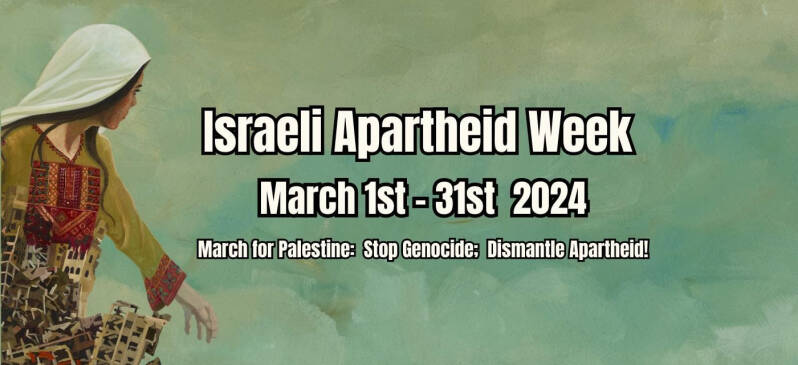
Dit jaar markeert een cruciale mijlpaal voor de Israëlische Apartheidsweek (IAW), we herdenken haar 20-jarig bestaan. IAW 2024 volgt op een historische uitspraak van het Internationaal Gerechtshof (ICJ), dat het aannemelijk acht dat apartheid-Israël genocide pleegt op de 2,3 miljoen Palestijnen in Gaza. Ondanks de bevelen van het ICJ om alle genocidale daden te staken, trotseert Israël openlijk het hof en zet zijn wreedheden voort.
Tegelijkertijd verergeren de bondgenoten van Israël in het Westen het lijden door de financiering voor UNRWA stop te zetten, wat de hele Palestijnse vluchtelingengemeenschap treft. Dit ontzegt Gaza levensreddende hulp en vormt een van de vele vormen van westerse medeplichtigheid aan de voortdurende genocide door Israël.
Deze IAW roepen wij u, uw organisaties en uw netwerken op om de boycot- en desinvesteringscampagnes op te voeren om pnze overheden, bedrijven en instellingen ter verantwoording te roepen en een einde te maken aan de betrokkenheid bij het systeem van onderdrukking en genocide van Israël, in overeenstemming met het internationaal recht.
Doe met ons mee met het bereiken van onze campagnedoelen of het mobiliseren voor nieuwe campagnes! Laten we er samen voor zorgen dat we deze maand niet alleen informeren over Israëlische apartheid, maar ook betekenisvolle stappen zetten naar het beëindigen van apartheid en het ondersteunen van de voortdurende Palestijnse strijd voor de ontmanteling ervan. Loop met ons mee in maart voor vrijheid, rechtvaardigheid, gelijkheid en een einde aan genocide en apartheid.
Japans Bedrijf Verbreekt de Banden met Elbit Systems
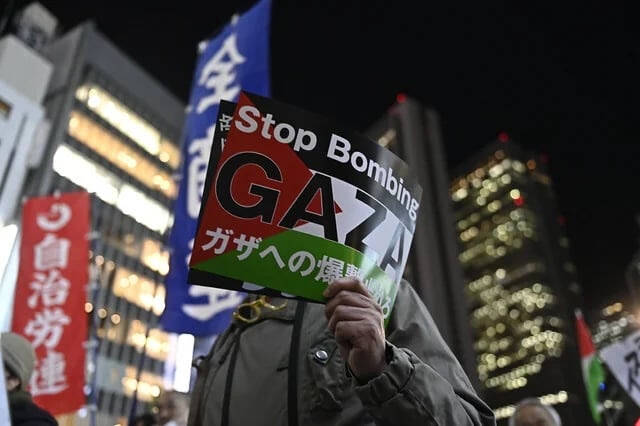
[David Mareuil/Andalou via Getty Images]
De luchtvaartafdeling van Itochu Corp zal tegen het einde van februari de strategische samenwerking met Elbit Systems Ltd beëindigen naar aanleiding van het conflict in Gaza. Deze beslissing volgt op het bevel van het ICJ aan Israël om genocide tegen Palestijnen te voorkomen.
Itochu benadrukt dat de samenwerking gericht is op de veiligheid van Japan en niet direct verband houdt met het Israëlisch-Palestijnse conflict. Het Memorandum of Understanding (MoU), dat in maart 2023 werd ondertekend door Itochu Aviation, Elbit Systems en Nippon Aircraft Supply (NAS), vormde een strategische overeenkomst. In reactie op het ICJ-bevel, dat Israël opdroeg om genocidale daden tegen Palestijnen te voorkomen, heeft Itochu de activiteiten met betrekking tot het MoU al opgeschort en is van plan het MoU tegen het einde van februari te beëindigen.
Deze significante ontwikkeling heeft gevolgen voor Elbit Systems, de grootste wapenfabrikant van Israël die profiteert van de genocide van Palestijnen. Elbit's wapens, geadverteerd als "gevechtsgetest", worden getest op burgers in Gaza voor de massaproductie. Elbit Systems levert tot 85% van de drones en uitrusting voor grondoperaties van het Israëlische leger.
BDS Nederland
Teleportboulevard 130
1043 EJ Amsterdam
Netherlands


Today's headlines
The Biden administration has helped kill 85 members of my family. Of course I refused to meet with Antony Blinken.
Tariq Haddad
11 februari 2024

I refused to provide a photo opportunity to the Biden administration because it has aided and abetted the killing of 85 members of my family. I hope they take the time to read about the nightmare all Palestinians in Gaza are living through.
The Gaza genocide is just an instrument in Israel’s larger colonial project
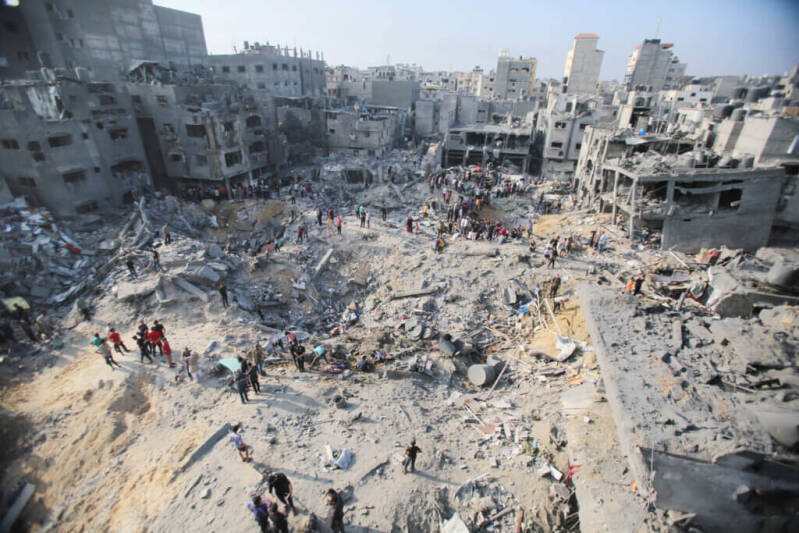
Genocide is Israel's latest policy, alongside ethnic cleansing and apartheid, in its settler colonial project of eliminating the Palestinians.
‘Operation Al-Aqsa Flood’ Day 127: Growing international alarm over Israeli plans to invade Rafah
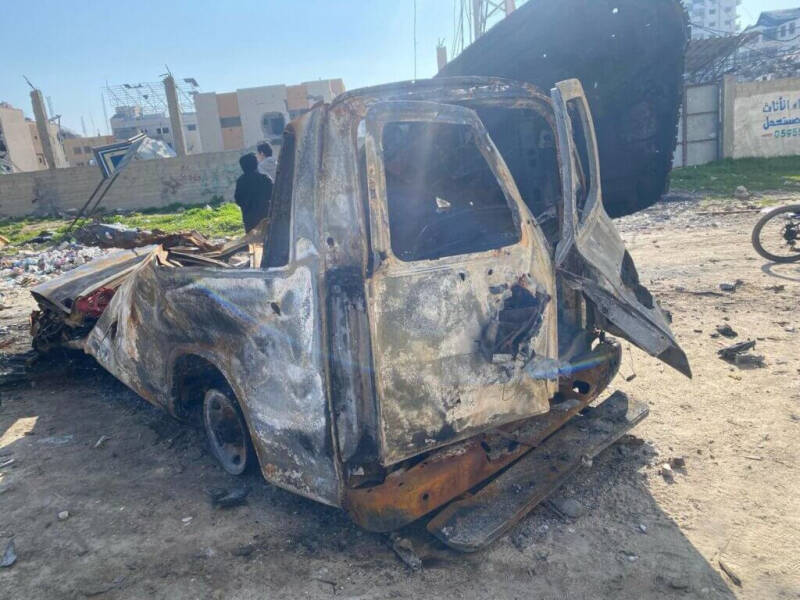
Israel has announced its intention to push ahead with its plans to invade Rafah in the southernmost Gaza Strip, where 1.3 million Palestinians are sheltering. Rafah's mayor, Ahmed al-Sufi, warns any military action there would result in a “massacre”.
Dehumanization and misinformation in service of genocide

The dehumanization of Muslims and Arabs combined with outright misinformation about October 7 is the engine powering the genocide in Gaza.
CNN’s bias toward Israel starts at the top

A recent Guardian article documenting CNN's bias toward Israel was impressive but lacked one crucial detail: Why CNN has such bias. You don't have to look farther than CEO David Zaslav to understand the answer is Zionism.


11 februari 2024
A group of artists, including Ben Affleck, Jennifer Lopez, Bella Hadid, Sandra Oh and another 140+ artists, signed a petition with Artists 4 Ceasefire in solidarity with Palestinians, demanding a ceasefire and an end to the war on Gaza. Israeli war resisters want to thank them.
THANK YOU, ARTISTS 4 CEASEFIRE!
As Israelis calling for ceasefire and a just peace, we thank you for refusing to be silent.
Thank you for sharing our deep desire to stop more bloodshed. Thank you for using your cultural power to demand that your leaders stop enabling Israel's brutal bombardment of Gaza. Thank you for standing for freedom, justice, dignity and peace for all people.
Despite our grief, we – like you – are motivated by an unbending will to stand for our common humanity. The killing of Palestinian civilians will not bring back Israelis who lost their lives, nor return hostages to their families. Indiscriminate destruction and a siege harming innocents will not bring healing, justice, or security.
Thank you for refusing to silently bear witness to Israel’s war on an entrapped population of refugees now multiply displaced in their own homeland with nowhere safe to turn – battling famine, freezing, and disease, and facing the threat of further displacement if they survive.
WE AGREE WITH YOU THAT SAVING LIVES IS A MORAL IMPERATIVE – THAT COMPASSION, AND INTERNATIONAL LAW, MUST PREVAIL.
We are just some of the many people in Israel-Palestine who are resisting the status quo by struggling for a just peace. We are under attack by our own society for speaking out against the war and expressing empathy for Palestinian suffering – but we refuse to give up our moral, humane position. We refuse to give in to despair or the urge for vengeance. Keeping our faith in the human spirit’s inherent goodness is more vital than ever.
Together with our Palestinian friends and neighbors, and with allies like you around the world –
WE DEMAND AN END TO THE BOMBARDMENT OF GAZA, THE ENTRY OF AID, AND RESTORATION OF VITAL RESOURCES LIKE WATER AND ELECTRICITY. WE DEMAND AN END TO THE ISRAELI OCCUPATION AND EQUAL RIGHTS FOR ALL PEOPLE WHO LIVE HERE.Together we can turn the tide of this horrific current reality for which no military solution exists. The only path to peace is for us to create a society with equality and dignity for every person.
We are inspired by Palestinians’ sumud صمود – steadfastness – despite decades of injustice. We must remain resolute, too, in our collective commitment to fight for what’s right, rooted in the truth that Palestinian liberation is deeply intertwined with our own.
As Israelis working to end Israeli occupation and war, your solidarity lets us know that we are not alone.
PLEASE KEEP RAISING YOUR STRONG VOICES TO DEMAND A JUST AND LASTING PEACE.
We need you – and we are with you.In gratitude, grief, solidarity, and hope
Together we can build a global movement of resistance against this war and pressure international leaders to demand a ceasefire.
In solidarity
Atalya
Refuser Solidarity Network
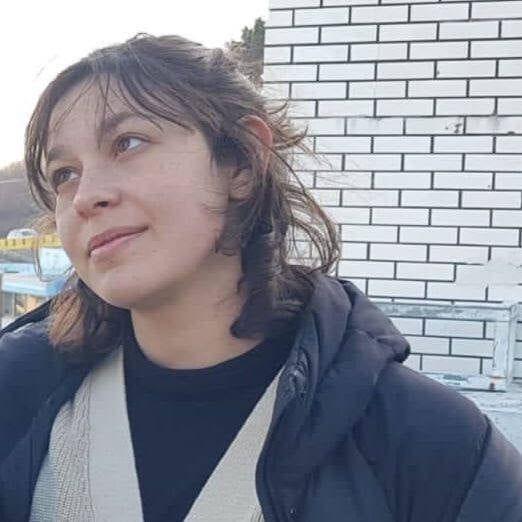


10 februari 2024
Komende maandag, 12 februari om 10 uur, doet het Haags Gerechtshof uitspraak in de zaak die Oxfam Novib, PAX en The Rights Forum hebben aangespannen tegen de Nederlandse Staat wegens de levering van onderdelen voor F35-gevechtsvliegtuigen. Deze vliegtuigen worden door Israël gebruikt bij het bombarderen van Gaza.

Maatregelen tegen genocide
De uitspraak komt twee weken na de conclusie van het Internationaal Gerechtshof (IGH) dat het ‘aannemelijk’ is dat Israël genocide pleegt in Gaza. Ook legde het IGH bindende maatregelen op, die Nederland zegt te onderschrijven. De regionale regering van Wallonië en de regering van Spanje kondigden deze week aan te zijn gestopt met de wapenexport naar Israël vanwege het risico bij te dragen aan ernstige schendingen van het humanitair oorlogsrecht.
Netanyahu wil 'totale overwinning'
Wij zien de uitspraak van aanstaande maandag met vertrouwen tegemoet, al betreuren we dat de gang naar de rechter nodig was. De humanitaire situatie in Gaza blijft verslechteren. De bevolking kampt met ziektes en acute hongersnood terwijl de bombardementen en gevechten onverminderd doorgaan. Premier Netanyahu kondigde deze week aan door te zullen vechten tot de ‘totale overwinning’. Nederland kan en mag hier niet aan bijdragen!
Air droppings én onderdelen voor gevechtsvliegtuigen
Van de door het Internationaal Gerechtshof opgelegde maatregelen om het geweld tegen Palestijnse burgers te stoppen en de verlening van humanitaire hulp te waarborgen, komt ondertussen weinig terecht. Dat Nederland deze week samen met Jordanië overging tot enkele air droppings toont vooral aan dat er over land nog absoluut geen sprake is van toereikende toegang voor hulp.
Michiel Servaes, directeur van Oxfam Novib, zegt daarover: ‘Hoe cynisch is het dat Nederland van de ene kant met een C130-transportvliegtuig medische hulpgoederen naar Gaza brengt, terwijl van de andere kant F35-gevechtsvliegtuigen – met onderdelen uit Nederland – arriveren om nóg meer huizen en families plat te gooien? Dat verhaal kun je aan niemand verkopen.’
Wij strijden tegen oorlogsmisdaden, annexatie, bezetting en onderdrukking. Helpt u mee?
Keizer zonder kleren Overheid liet foute investeringen van pensioenfondsen bewust ongemoeid
Nog steeds investeren pensioenfondsen ongehinderd in bedrijven die actief zijn in de illegale Israëlische nederzettingen in bezet Palestijns gebied. Terecht worden met name ABP en PFZW daar hard op aangesproken. Maar ook de overheid heeft schuld aan het voortbestaan van de investeringen. In deel zes van onze onderzoeksserie Keizer zonder kleren lichten wij uitgebreid toe hoe wij tot die conclusie komen.

'Indirecte' investeringen
Centraal in deze kwestie staat het door de overheid gemaakt verschil tussen 'directe' en 'indirecte' investeringen in de nederzettingen. Eerder beschreven we hoe indirecte investeringen uit het ontmoedigingsbeleid werden geschrapt. Alleen directe investeringen komen nog in aanmerking voor ontmoediging. Er bestaat voor de overheid dus een belang om investeringen te definiëren als ‘indirect’.
Opgerekt
De praktijk wijst uit hoe ‘indirect’ door de overheid is opgerekt tot allesomvattend begrip. Zo investeerden pensioenfondsen bijvoorbeeld in Israëlische banken. Die vormen als financier een cruciale schakel in het Israëlische koloniseringsproject. Een directere betrokkenheid bij de nederzettingen bestaat niet. Maar op het ministerie kregen de investeringen in de Israëlische banken het stempel ‘indirect’, waarna ze ongemoeid werden gelaten.
Onder meer om deze reden weigerde het ministerie van Buitenlandse Zaken om een door de Tweede Kamer aangenomen motie uit te voeren. In deze motie werd de minister gevraagd de pensioenfondsen op te roepen te stoppen met investeringen die actief zijn in illegale nederzettingen. Maar volgens het ministerie was deze motie in strijd met het eigen beleid.
Op deze manier is de pensioenfondsen door de overheid geen strobreed in de weg gelegd. Sterker, ze ontvingen in feite een bewijs van goed gedrag.

Israël verwijt VN gebrek aan aandacht voor beweerdelijk seksueel geweld Hamas, maar werkt VN-onderzoek juist tegen
Heeft de VN te weinig oog voor beweerdelijk seksueel geweld van Hamas-strijders tijdens hun uiterst gewelddadige inval in Zuid-Israël op 7 oktober vorig jaar? Nou en of, beweren Israëlische politici, diplomaten, organisaties en media in koor. Zij beschuldigen de VN ervan het geweld te negeren in plaats van te veroordelen. Vooral VN-vrouwenorganisaties krijgen ervan langs.

De media bieden volop een podium aan de klagers, maar laten na te melden dat de beschuldigingen kant noch wal raken. Zowel binnen als buiten de VN is het geweld van Hamas namelijk vanaf het eerste moment scherp veroordeeld en wordt er wel degelijk onderzoek naar gedaan.
Wat tegelijkertijd onvermeld blijft in de media is dat het juist Israël is dat het VN-onderzoek dwarsboomt.
Lees de uitgebreide analyse die wij schreven op onze site over het VN-onderzoek, Israëls obstructie en de manier waarop de kwestie in de media wordt uitgemeten.
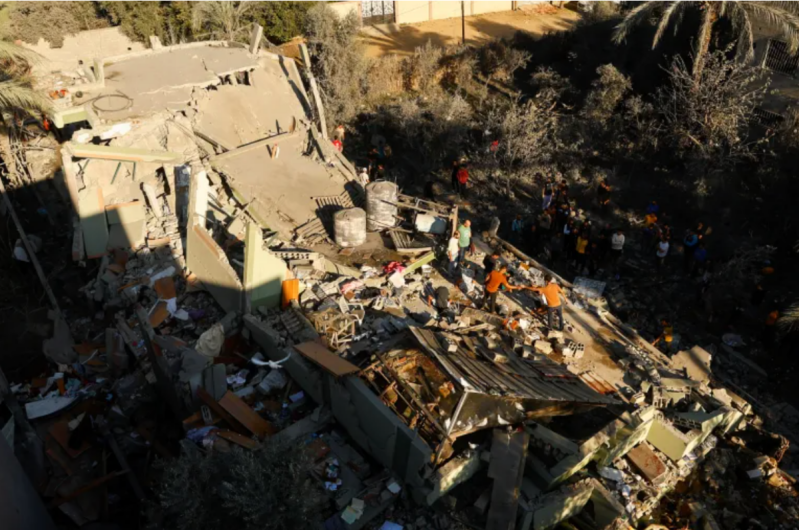


Hostilities in the Gaza Strip and Israel
Flash Update #115
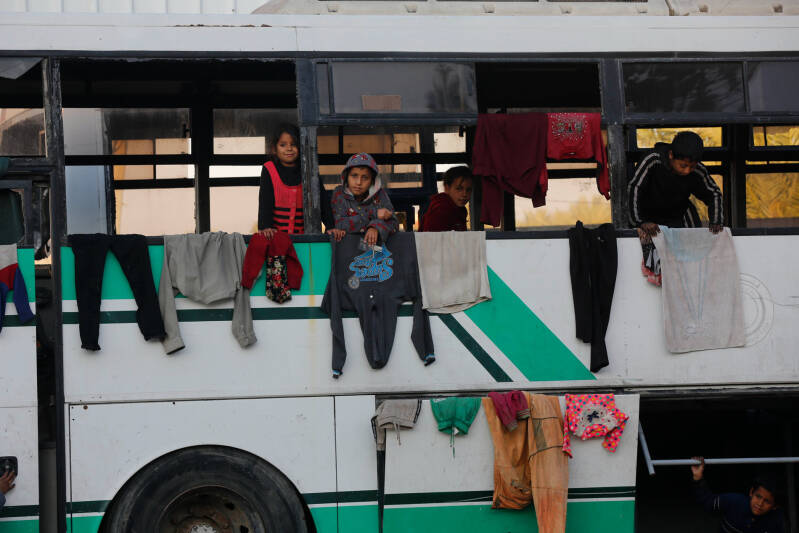
Most people in Gaza are displaced, facing deteriorating humanitarian conditions amid acute shortages of shelter, clean water, food and medicine. Photo by UNRWA
9 februari 2024
Key points
- Intense Israeli bombardment and fighting between Israeli forces and Palestinian armed groups continue to be reported across much of the Gaza Strip, resulting in further civilian casualties, displacement, and destruction of civilian infrastructure. Increased airstrikes in Rafah have heightened concerns of an escalation in the most southerly city in Gaza, where hundreds of thousands of Palestinians have sought refuge. On 9 February, UNICEF Executive Director, Catherine Russell, called on “the parties to refrain from military escalation in Rafah Governorate in Gaza where over 600,000 children and their families have been displaced – many of them more than once. Thousands more could die in the violence or by lack of essential services, and further disruption of humanitarian assistance. We need Gaza’s last remaining hospitals, shelters, markets and water systems to stay functional. Without them, hunger and disease will skyrocket, taking more child lives.”
- Between the afternoons of 8 and 9 February, according to the Ministry of Health (MoH) in Gaza, 107 Palestinians were killed, and 142 Palestinians were injured. Between 7 October 2023 and 11:00 on 9 February 2024, at least 27,947 Palestinians were killed in Gaza and 67,459 Palestinians were injured, according to the MoH.
- Between the evenings of 8 and 9 February, no Israeli soldiers were reported killed in Gaza. As of 9 February, 225 soldiers were killed and 1,312 soldiers were injured in Gaza since the beginning of the ground operation, according to the Israeli military.
- Internally displaced persons (IDPs) across Gaza continue to face deteriorating humanitarian conditions amid acute shortages of shelter, clean water, food and medicine. As of 5 February, UNRWA estimates that some 75 per cent of Gaza’s population (1.7 million out of 2.3 million people) are displaced, the majority situated in Rafah governorate where humanitarian operations are based. The Director of UNRWA Affairs in Gaza expressed concern at the prospect of an Israel military offensive in Rafah which could result in hundreds of thousands of people fleeing the fighting and warned that the Agency “will not be able to effectively or safely run operations from a city under assault from the Israeli army."
- Health care in Gaza remains extremely precarious amid continued bombardment and hostilities, a lack of supplies and medical personnel, access restrictions, and fast deteriorating health conditions. According to UNRWA, only four out of 22 UNRWA health facilities are operational due to continued bombardment and access restrictions. As of 7 February, there are no fully functional hospitals in Gaza, with 13 of the 36 hospitals only partially functional, according to the World Health Organization (WHO). On 8 January, WHO reported that Shifa Hospital in Gaza city, which had recently resumed some services with the support of WHO and other health partners, had again reverted to only minimal functionality, following days of intense hostilities in its vicinity. “We cannot let the cornerstone of Gaza’s health system collapse again,” WHO stated. “Health care must be actively protected. Hospitals must be urgently resupplied.”
- Intense fighting in Khan Younis, particularly near Nasser and Al Amal hospitals, continues to jeopardize the safety of medical staff, the wounded and the sick as well as internally displaced persons (IDPs), driving thousands of people into Rafah. On 9 February, PRCS reported continued attacks near Al Amal Hospital, which has reportedly been under siege for 19 days, and stated that due to hostilities, they had lost contact with the teams operating inside the hospital. Also on 9 February, allegations of sniper shooting near Nasser Hospital continued with two Palestinians reportedly killed near the facility. In two incidents on 8 February, Israeli forces reportedly fired at a group of people at the entrance of the hospital and another group in its vicinity, killing four and three Palestinians respectively.
- On 8 February, the UN High Commissioner for Human Rights, Volker Türk, stated that the “Israeli Defence Forces (IDF) are reportedly destroying all buildings within the Gaza Strip that are within a kilometre of the Israel-Gaza fence, clearing the area with the objective of creating a ‘buffer zone.’ Destructions carried out to create a ‘buffer zone’ for general security purposes do not appear consistent with the narrow ‘military operations’ exception set out in international humanitarian law. Since late October 2023, my Office has recorded widespread destruction and demolition by the IDF of civilian and other infrastructure, including residential buildings, schools and universities in areas in which fighting is not or no longer taking place. Israel has not provided cogent reasons for such extensive destruction of civilian infrastructure. Such destruction of homes and other essential civilian infrastructure also entrenches the displacement of communities that were living in these areas prior to the escalation in hostilities, and appears to be aimed at or has the effect of rendering the return of civilians to these areas impossible. I remind the authorities that forcible transfer of civilians may constitute a war crime.”
- In December 2023, the UN Food and Agriculture Organization (FAO) conducted a geospatial assessment, using satellite imagery, to analyze damage to the agricultural sector across the Gaza Strip. Major damage was recorded to 27.5 per cent of all crop land in Gaza and to 20.5 per cent of greenhouses. Some 488 agricultural wells also sustained damage. Another geospatial assessment, conducted by the UN Satellite Centre (UNOSAT), on 30 January 2024, showed damage to 34 per cent of arable land. Most of the infrastructure of the agrifood sector was damaged, ranging from commercial facilities (livestock farms, stores for products and inputs, etc.) to household facilities, such as home barns and animal shelters. The port of Gaza has been severely damaged, and most of the fishing boats have been destroyed. On 8 February, the bodies of the two fishermen were recovered after their boat was reportedly struck by Israeli forces in western Rafah on 7 February.
- Since the start of January, humanitarian partners planned 76 missions to deliver aid and undertake assessments to areas to the north of Wadi Gaza. Of these, 12 were fully facilitated by the Israeli authorities, two were partially facilitated, 16 were impeded, 39 were denied, and nine were postponed by the agencies themselves. During the same period, there were 172 planned missions to areas assessed as necessitating coordination to the south of Wadi Gaza. Of these, 99 were fully facilitated, one was partially facilitated, 18 were initially facilitated but then impeded, 41 were denied access, and 13 were postponed internally. Areas not requiring coordination are excluded from these statistics. After seven consecutive daily planned missions to deliver fuel to Nasser Hospital in February, the mission was facilitated on the eighth attempt, on 9 February.
Hostilities and casualties (Gaza Strip)
- The following are among the deadliest incidents reported on 9 February:
- At about 1:00, eight Palestinians, including three children and one woman, were reportedly killed, and 18 others injured, when a residential building in the area of Al Kuwaiti Hospital, central Rafah, was struck.
- At least 15 Palestinians were reportedly killed, when residential buildings in Deir al Balah and Az Zawayda were struck. Seven of the casualties were reportedly IDPs, who had been forced to evacuate from two schools in Khan Younis Camp.
- In separate incidents, seven Palestinian IDPs were allegedly shot and killed by snipers, as they were trying to cross the road from Qandila School towards other areas in western Khan Younis.

Hostilities and casualties (Israel)
- Over 1,200 Israelis and foreign nationals have been killed in Israel, including 36 children, according to the Israeli authorities, the vast majority on 7 October and in the immediate aftermath.
- As of 7 February 2024, the Israeli authorities estimate that about 136 Israelis and foreign nationals remained captive in Gaza; these reportedly include fatalities whose bodies are being withheld. During the humanitarian pause (24-30 November), 86 Israeli and 24 foreign national hostages were released.
West Bank Updates
- On 9 February, Israeli forces shot and killed a 17-year-old Palestinian boy in a raid in Beita village in Nablus, where confrontations took place between them and Palestinians. Four more Palestinians were injured. Since 1 January 2024 and as of 9 February 2024, 71 Palestinians have been killed across the West Bank, including 16 children, the majority by Israeli forces.
- Since 7 October 2023 and as of 9 February 2024, 384 Palestinians have been killed, including 97 children, and 4,443 Palestinians, including 672 children, injured in conflict-related incidents across the West Bank, including East Jerusalem, and Israel. During the same period, ten Israelis, including four members of security forces, were killed, and 73 injured, in conflict-related incidents in the West Bank, including East Jerusalem, or in Israel.
- Since 7 October 2023 and as of 9 February 2024, OCHA has recorded 516 Israeli settler attacks against Palestinians, resulting in Palestinian casualties (49 incidents), damage to Palestinian-owned property (409 incidents), or both casualties and damage to property (58 incidents). October, followed by November, represented the peak of such incidents, after which the frequency of settler violence incidents returned to their pre-October levels. Overall, in 2023, OCHA documented 1,264 settler attacks against Palestinians in the West Bank, including East Jerusalem, more than in any given year since it started recording incidents involving settlers in 2006.
- Since 7 October 2023 and as of 9 February 2024, 508 Palestinians, including 248 children, have been displaced following the demolition of their homes in Area C and East Jerusalem, due to lack of Israeli-issued building permits, which are almost impossible to obtain.
- Since 7 October 2023 and as of 9 February 2024, Israeli forces have punitively demolished 23 Palestinian-owned homes, displacing 112 Palestinians, including 47 children.
- Since 7 October 2023 and as of 9 February 2024, 775 Palestinians, including 322 children, have been displaced, following the destruction of 123 homes during operations carried out by Israeli forces across the West Bank. About 95 per cent of the displacement was reported in the refugee camps of Jenin, Nur Shams and Tulkarm.
Funding
- As of 9 February, Member States have disbursed $886.7 million against the updated Flash Appeal launched by the UN and its partners to implement its response plan in support of 2.2 million people in the Gaza Strip and 500,000 people in the West Bank. This constitutes 72 per cent of the $1.2 billion requested.
- Private donations are collected through the Humanitarian Fund. A private foundation in Australia has donated $2.2 million. Since 7 October, the Humanitarian Fund has disbursed about $55 million.

HUMANITARIAN NEEDS AND RESPONSES: 29 January – 5 February
Health
Needs:
- Primary health services are critically needed in informal shelters across the Gaza Strip.
- There is a need to increase routine immunization coverage as well as the provision of medication for non-communicable diseases, psychotropics, and anaesthesia to address the health needs of the population and prevent the spread of infectious disease.
- Expanding sexual and reproductive health services at the community level is necessary to alleviate overcrowding in maternity hospitals and ensure that women have access to the care they need.
- The establishment of field hospitals in additional areas of the Gaza Strip is crucial to accommodate the medical needs of the local population.
- People are unable to effectively access healthcare due to the lack of laboratory equipment and reagents needed for accurate diagnosis and testing.
- Patients in need of timely and necessary transfusions, cannot receive them due to the unavailability of blood products in hospitals.
Response:
- Since the onset of hostilities, 45 partners have provided health services to an estimated 1 million people in need. There have also been more than 240,000 primary healthcare consultations.
- The Al-Emirati Maternity Hospital in Rafah received 900 ampoules of oxytocin, five Inter-Agency Emergency Reproductive Health (IARH) kits, and 500 Maternal and Neonatal Health (MNH) kits from UNFPA. This donation will enhance the hospital's capacity, which currently conducts about 250 deliveries a day, of which 15 per cent are caesarean sections.
- Some 12 Emergency Medical Teams (EMTs) are currently operational. Between 29 January and 5 February, EMTs have treated some 12,000 patients requiring emergency surgeries and treatment for non-communicable diseases and severe acute malnutrition.
Challenges and Gaps:
- The influx of IDPs to Rafah has overwhelmed the available bed capacities in hospitals, leading to insufficient capacity to meet the healthcare needs of the population.
- Response operations by health partners are negatively affected by the displacement of the medical staff, social stresses and telecommunication challenges.
- The high insecurity and limited access to health facilities in the northern and middle governorates continues to present major challenges to partners’ response activities. Furthermore, ongoing fighting and persistent siege of hospitals have severely affected their functionality and accessibility.
- Limited and proper access to WASH facilities is hindering disease prevention services.
Nutrition
Needs:
- Provision of nutrition interventions, including lifesaving supplies in Gaza, is critically needed across the Strip.
- Malnutrition among children, particularly children under-five, and pregnant and breastfeeding women (PBW) remains a significant concern, amid lack of functioning health and WASH systems and deterioration of the food security situation.
Response:
- The nutrition sub-cluster carried out a training on Global mid-upper arm circumference (MUAC) screening for detecting acute malnutrition in children aged 6-59 months. The training covers data management, identification of malnutrition, simplified management of severe and moderate malnutrition, and reporting.
- The preliminary findings from screenings for malnutrition using MUAC carried out by the implementing partners of the Nutrition Cluster indicate concerning rates of acute malnutrition. About 3,500 children aged 6 to 59 months, were screened at three IDP sites and three health facilities; global acute malnutrition (GAM) was found at a rate of 9.6 per cent. Furthermore, data from northern Gaza indicate a 16.2 percent GAM rate. These are the first ever MUAC data collected by partners since the start of the conflict. Nutrition cluster partners will continue to collect more data. The data at present suggests the need for the cluster partners to expand the reach of preventive and curative services to all children in need.
- In the reporting period, nutrition partners distributed Medium Quantity Lipid Based Supplement (LNS-MQ) to 3,965 pregnant and lactating women (PLWs) and 41,914 children aged 6 to 59 months. However, partners indicate that due to communication challenges in Gaza, some distribution data is yet to be reported.
Challenges and Gaps:
- Ongoing hostilities in Gaza have led to severe food shortages, inadequate WASH facilities, and a breakdown in health services, placing children under-five and PLW at an increasing risk of malnutrition.
- The nutrition cluster is only 25 per cent funded. Without immediate funding and an expanded response, children under five years will be at risk of malnutrition. Urgent action is crucial to prevent this life-threatening situation.
Food Security
Needs:
- The food security situation in the Middle Area and southern governorate presents an exceptionally challenging scenario. In Khan Younis, most of the population are grappling with extreme hunger.
- The influx of IDPs into Rafah governorate has placed considerable strain on available resources. Providing adequate food assistance to the population challenging, given overcrowding
- Vulnerable segments of the population, including children, the elderly, and individuals with underlying health conditions, are particularly susceptible to the risk of malnutrition.
- There is an immediate need to establish uninterrupted and secure humanitarian corridors that facilitate the delivery of essential aid throughout Gaza, including through the private sector.
Response:
- Between 29 January and 4 February, 20 partners provided food assistance within the Gaza Strip reaching some 1.88 million people. The geographic breakdown is as follows:
- Rafah Governorate received approximately 33 per cent of the total food assistance. FSS partners reached 1,122,960 IDPs with hot meals, 77,115 IDPs with food parcels, 64,794 IDPs with Ready-To-Eat (RTE) food, including in public shelters, UNRWA shelters, host families and makeshift camps. Bread was distributed to 178,590 IDPs in makeshift camps. Some 1,200 people in host families in the Rafah North area were provided with voucher/cash-based transfers.
- Deir al Balah received approximately 27 per cent of the total food assistance. This includes a total of 42,633 food parcels distributed to people sheltering with host families as well as in public shelters, makeshift camps and UNRWA shelters. Ready-To-Eat (RTE) food was provided to 22,029 people and hot meals were also distributed to 42,000 displaced people. Vouchers/cash-based transfers were received by 1,845 people displaced.
- Khan Younis received around 17 per cent of the food assistance. Food parcels were distributed to 20,550 people in public shelters, makeshift camps and UNRWA shelters. Some 51,550 people received RTE food in public shelters and makeshift camps. Some 1,845 people sheltering in host families and in public shelters received voucher/cash-based transfer assistance.
- Northern Gaza and Gaza governorates received some 13 and 10 per cent reached Northern Gaza and Gaza governorates. This includes 6,150 food parcels distributed in host families, while 243,796 people displaced received hot meals, including in public shelters, in makeshift camps and in UNRWA shelters.
Challenges and Gaps:
- In the northern Gaza and Gaza governorates, the humanitarian situation has reached a critical state, including due to restrictions that impede the delivery of essential aid. These restrictions have paralysed efforts to address the significant and growing needs of the population. Improved access and support are urgently needed.
- Frequent border closures, imposed restrictions, and security concerns prevent humanitarian partners from establishing a secure and efficient operation.
- The deteriorating situation and escalation of hostilities have caused significant damage to critical infrastructure, including roads, electricity, and water supply systems, impeding the distribution of food aid.
- The lack of fuel and cooking gas poses significant challenges to sustaining humanitarian efforts, including to through ensuring the operating of essential services such as mills and bakeries and for people to prepare the limited food available to them.

Shelter and Non-Food Items (NFI)
Needs:
- Over 650,000 people are estimated to have no home to return to. Many more will be unable to return home due to infrastructure damage, and risks posed by explosive remnants of war.
- There is a significant shortage of all essential non-food items (NFIs) for IDPs inside and outside shelters. The Cluster estimates that about 100,000 families need shelter support, including winterized tents or sealing off kits. Just under 1 million people are estimated to need NFIs.
- Partners estimate that the amount of debris from the destruction of residential housing units will exceed 12,000,000 metric tons and will take over four years to remove, given Gaza's current capabilities.
- Displaced people residing in both formal and informal emergency shelters lack basic NFIs. An estimated hundreds of thousands of people lack adequate shelter.
- Tents, timber sections, and tarpaulin sheets are needed so displaced people have protection from harsh weather conditions and to ease overcrowded and unhygienic conditions.
- The lack of proper informal settlement planning has led to the creation of makeshift shelters and tents flooding on rainy days, further exacerbating the suffering of displaced people.
Response:
- During the reporting period, cluster partners distributed around 3,000 bedding items and 5,000 dignity kits in Khan Younis and the Middle Area. They also distributed 1,500 bedding items in the North, to people who are not residing in UNRWA shelters or with host families. Since 7 October, Shelter Cluster partners have distributed about 40,000 tents, primarily in the areas of Rafah, Khan Younis and the Middle area. Cluster partners report an additional 28,000 tents, 7,600 sealing-off kits and 35,000 NFI kits are in the pipeline.
- Asof 7 February, the Shelter Cluster has reached 0.9 million people with partial shelter and NFI (SNFI) assistance, meaning that although a household has received some SNFI items, not all their needs have been met.
Challenges and Gaps:
- Since many IDPs have been displaced more than once, they are unable to carry their belongings, including NFIs and other shelter materials. Assistance often needs to be distributed repeatedly to the same families. Displaced people also lack tools to set up their tents and protection from rain and floods (hand tools are currently not permitted to enter Gaza).Due to security concerns and limited access, partners restricted the delivery of the assistance mainly to Rafah, Khan Younis and the Middle areas.
- Cluster partners indicate that pricing for shelter items has risen in regional markets, including high freight rates and shipping costs. Partners face persistent challenges in maintaining a consistent supply chain
- Urgent funding is needed to address the key gaps in the supply of shelter and NFIs. As of 2 February, only 26 per cent of the Shelter Cluster funding requirement (209.2M) has been funded.
WASH
Needs:
- Access to safe drinking water for the entire population of Gaza is needed, especially among the displaced population and the northern areas of Gaza.
- The accumulation of solid waste on the streets, around hospitals, IDP shelters, and various sites remains a priority concern. Tens of thousands of tons of uncollected public waste are intensifying public health risks. The Municipality of Gaza city estimates that approximately 50,000 tons of solid waste remain unmanaged, exacerbating environmental and health concerns.
- Power supply (fuel) to water and wastewater facilities, primarily decentralized systems (e.g., generators and other electro-mechanical items) is critical.
- Some 2.25 million people need WASH Assistance. Two-thirds of IDPs are concentrated in Rafah area and urgently need WASH support.
Response:
- Mekorot Connection: Bani Saeed water supply is currently producing 6,000 cubic metres per day (250 cubic metres per hour capacity) which is 42 per cent of its full capacity. Plans are in place for repairing the pipeline. The key challenges to repairs include their safe access, communication, and coordination.
- Two out of out of three desalination plans are partially operating: the Middle Area plant produces an average of 1,500 cubic metres per day (distributed via water trucking) and the South Gaza desalination plant produces 1,700 cubic metres per day (around 600 m3 are distributed via water trucking and 1,100 via the water network).
- The UAE's small desalination plant located in Egyptian Rafah, operates at full capacity, providing 2,400 cubic metres per day. This has been achieved following the construction of a 3-kilometre transmission line extending the intake point to the Saudi Water reservoir and other filling points for tankers and tap-stands.
Challenges and Gaps:
- Flooding has been a significant issue; the area around Pumping Station 7B is flooded posing a potential crisis with overflow of sewage in the vicinity of the station. This is further compounded by fuel shortage, which impedes the operation of sewage stations. Reports of people coming into direct contact with sewage-contaminated floodwaters in the streets are deeply troubling. Technical assessments are needed to estimate damage and potential impacts.
- The public health risk is further intensified due to an acute scarcity of hygiene materials and adequate sanitation infrastructure. Persistent anecdotal reports of Hepatitis A cases in Gaza, as recorded by UNRWA and the Health Cluster, highlight ongoing concerns.
- The absence of testing laboratories in Gaza for specimen analysis is challenging. Exploring the possibility of referring samples to Egypt is under consideration
- The constraints of the clearance and transport of the dual-use items into Gaza remain a limiting factor of the overall WASH response.
Education
Needs:
-
More than 625,000 students and nearly 23,000 teachers in the Gaza Strip have been affected by school closures and attacks on education, with no access to education or a safe place.
According to the Ministry of Education, as of 30 January, more than 4,660 students and 239 educational staff have been killed and more than 8,109 students and 756 teachers have been injured in the Gaza Strip since 7 October.
Some 92 per cent of all school buildings in Gaza are being used as shelters for IDPs and/or have sustained varying levels of damage. Some 390 schools (78.8 per cent of the total school buildings in Gaza) sustained damage, including 140 schools that sustained major damage or were fully destroyed. Combined, these schools previously served some 433,000 children and more than 16,200 teachers. The North, Gaza, and Khan Younis governorates have been especially impacted, accounting for 76 per cent of all damaged schools (source:Education Cluster Damaged School Dashboard.)
- Education partners are concerned about reports, videos and pictures depicting showing that schools are being used for military operations by Israeli forces, including their use as detention and interrogation centres, or as military bases.
- Key priorities include the provision of Education in Emergencies (EiE) recreational activities and psychological support, including Social Emotional Learning (SEL) activities to children in shelters and designated emergency shelters (DESs); establishing Temporary Learning Spaces (TLS) in shelters/DESs to start non-formal learning for children; provision of emergency supplies and learning kits. In addition, a key need is the identification and support of children with disabilities and other needs, with assistive devices for continuity of learning.
Response:
- Since October 2023, eleven partners have reached more than 131,000 students and teachers (source: Education Cluster 5W dashboard) with psychosocial support, emergency learning, recreational supplies and activities, and awareness sessions in the Deir al Balah, Khan Younis, and Rafah governorates. Most of the cluster responses are delivered by local partners.
- UNICEF with three of its partners and Teacher Creativity Centre are working on establishing TLS to start non-formal education activities with displaced children in shelters/DESs.
- The Education and the Shelter clusters are jointly carrying out advocacy activities to highlight the devastating impacts of the current situation in Gaza on children and the inextricable links between shelter and schooling.
Challenges and Gaps:
- No activities have been undertaken in the North Gaza and Gaza governorates due to ongoing hostilities and access challenges.
- As of 28 January, the education response remains significantly underfunded, receiving less than 10 per cent of its requirements. Urgent funding is required to meet immediate response requirements.
Emergency Telecommunications
Needs:
- Recurrent telecommunications shutdown in the Gaza Strip restricts people from accessing life-saving information and impedes other forms of humanitarian response. Since 11 October 2023, the Gaza Strip has been under an electricity blackout, after the Israeli authorities cut off the electricity supply, and fuel reserves for Gaza’s sole power plant were depleted. For more information on electricity supply to the Gaza Strip, please see this dashboard.
Response:
- The Emergency Telecommunications Cluster (ETC) continues its presence in Gaza since 09 January supporting humanitarian responders with ICT assessments, technical advice and information, repairs, and guidance on the use of ICT equipment.
- Since 3 November, the ETC continues to engage with the Israeli Coordinator of Government Activities in the Territories (COGAT) for authorization to import all essential telecommunications equipment into Gaza and provide independent access to communications for humanitarian responders.
- On 30 January, the ETC assessed the network signal coverage of the Very High Frequency (VHF) digital radio security communications system (SCS) which operates using the VHF Rafah repeater installed at Al Shaboura Clinic. Although the signal coverage is good in Rafah city, the SCS remains non-operational due to the incompatibility between the VHF/HF handheld radio antennae and the digital repeater system. The ETC is collaborating with UNDSS to procure compatible radio antennae and a solar power solution for the SCS.
Challenges and Gaps:
- Limited access to electricity, fuel, and telecommunications services continues to hamper the humanitarian response in Gaza.
- Importation of telecommunications equipment into Gaza is lengthy and extremely challenging.
Logistics
Response:
- The Logistics Cluster has launched common transport services for the route: Amman to Rafah via King Hussein Bridge and convoy coordination services for the route Amman to Rafah via Aqaba-Nuweiba. Details on the support and services provided by the Logistics Cluster are available in the Standard Operating Procedures.
- A consolidation warehouse in Amman is now operational for the pre-positioning of cargo. The facility is bonded and temperature-controlled with 1,300 pallet positions, and a capacity to further increase the storage space.
- The Logistics Cluster held a warehouse management training for humanitarian organisations` personnel on the ground in Gaza, including UN agencies and international NGOs.
- Partners continue facilitating access to temporary storage, transport, and cargo notification transshipment services. As of 4 February 2024, the Cluster has stored 5,142 metre cubic of cargo on behalf of 16 organizations in Gaza. In Gaza, 1,470 square metres of temporary storage is available in Rafah, and 800 pallet positions in a non-bombed warehouse in Port Said, Egypt.
- In the Gaza Strip, the Logistics Cluster has installed and handed over 18 Mobile Storage Units (MSUs), of which 12 are operational (3,840 metre square). In Al Arish, Egypt, so far, the Logistics Cell augmented the ERC storage capacity by 3,840 square metres with the installation of 12 MSUs.
Challenges and Gaps:
- Persisting challenges include storage and transportation across the Gaza Strip, including temperature-controlled storage. The Logistics Cluster is procuring additional Mobile Storage Units (MSUs), which will be available to humanitarian partners to augment their storage capacities and in the event of a scaled-up assistance.
- Partners are collecting the pipeline for incoming cargo through the Egypt and Jordan corridors for the coming three months; this is a key exercise for operational planning, to understand available resources, and allocate them based on prioritization.
Multi-Purpose Cash Assistance (MPCA)
Response:
- Some 121,000 households are estimated to have received one round of emergency MPCA since the start of the hostilities, while another 35,000 people (including people with disabilities and nursing mothers) have received a top-up and close to 1,800 households have received a second round.
- Around 85,000 households have cashed out their assistance since 7 October. Even under a normal year where people are expected to have alternative income sources, this package lasts a household for only up to one month. This also does not consider market collapse and price volatility under the current in-extremis circumstances. This assistance being provided falls well short of needs.
- From the last round of post-distribution monitoring data collected between the third week of December and mid-January, food remains the most purchased item with humanitarian cash (98 per cent), followed by medicines (31 per cent), debts repayment (21 per cent), water, hygiene products, and transportation. Some 70 percent of respondents reported that the assistance helped them access needed basic goods and services.
Challenges:
- Challenges of electricity and connectivity is affecting the ability of financial service providers to make cash accessible, compromising the retrieval of round of MPCA package received remains compromised. Nearly 2,600 families have never been able to retrieve the assistance.
- Since late December, commercial trucks have sporadically entered Gaza, with 607 trucks recorded until 19 January. Truck vendors sell goods on the streets and in informal markets, complicating efforts to track distributions and gather market data. Informal markets are the primary source of accessible goods. Truck entries have reportedly ceased since 19 January. Currently, there is limited market data available on informal markets/street vendors due to challenges with collecting data about informal market transactions.


Inside Gaza: From Paradise to Rubble
9 februari 2024
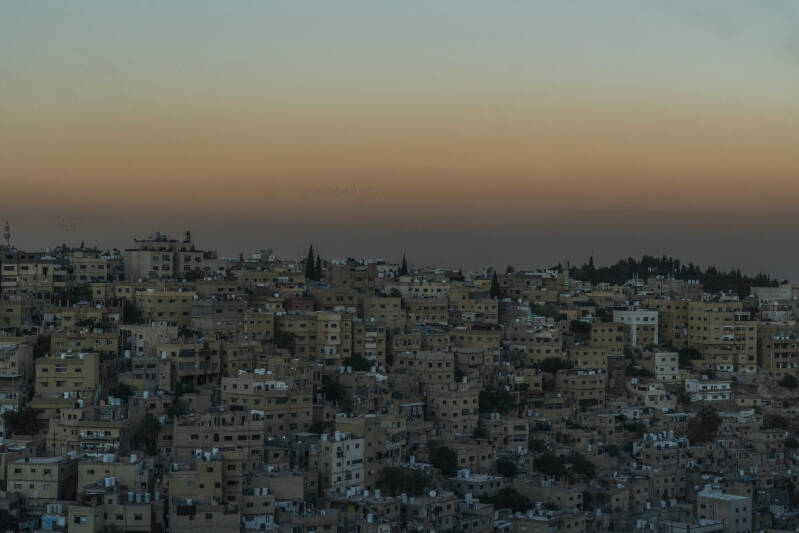
Gaza’s destruction was a political act. Jacobin spoke to Palestinian refugees about a vibrant, beautiful Gaza they remember and how Israel brought their homeland to ruin.
Today in Jacobin we published an important story by journalist Jaclynn Ashly based on recent interviews with Palestinian refugees in Jordan. For these Palestinians, Gaza’s vibrancy and ancient heritage have been obliterated by decades of violence and oppression.
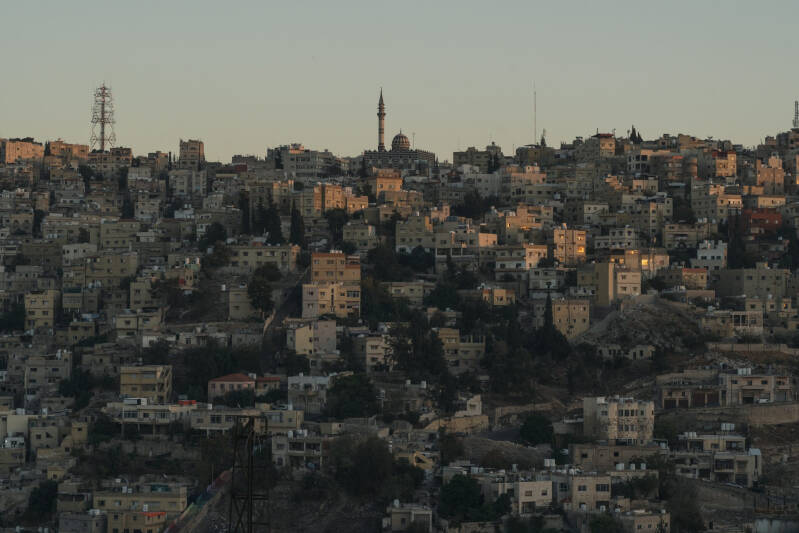
Others spoke to Ashly about the significant heritage of Gaza’s more distant past.
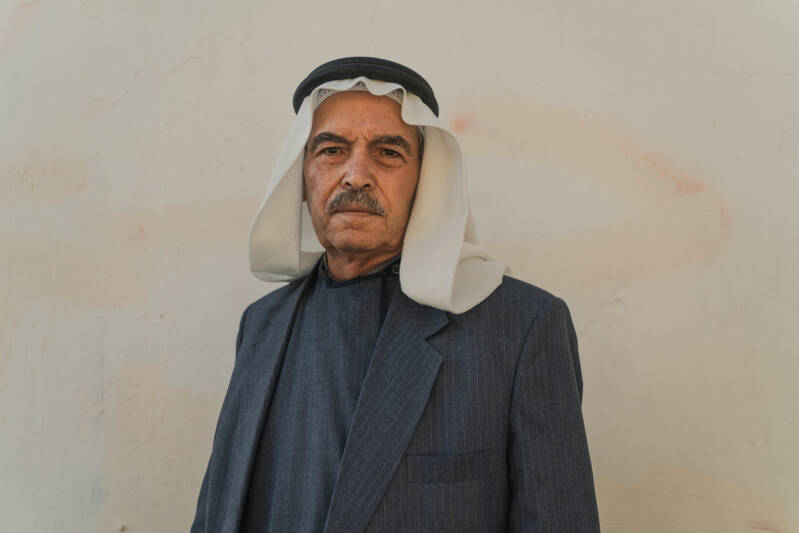
Situated as the gate between the Levant and Africa, Gaza was a regional hub of trade for centuries. “From a social and cultural perspective, Gaza was a center that attracted people all the way from Arabia to exchange and do trading with the world,” says Bseiso, who himself is from Gaza.
Over the last three months, Israel has destroyed and damaged nearly two hundred historical and cultural sites in Gaza, including the Anthedon, the first seaport in Gaza and one of the oldest ports in the Mediterranean; the Church of Saint Porphyrius, a Greek Orthodox church in Gaza’s Old City said to be the third-oldest church in the world; and the Sayed al-Hashim Mosque, built in the twelfth century.


9 februari 2024
A new generation of athletes is speaking truth to power, in the tradition of people like Muhammad Ali and Billie Jean King. Right now, athletes are raising their voices to call for a ceasefire in Israel’s relentless war on the people of Gaza. We interview and amplify these athletes when the mainstream media pretends they do not exist.
Sincerely,
Dave Zirin
Host, Edge of Sports TV
The Real News Network


Three Palestinian Americans have been Kidnapped by the IOF; tell President Biden and Congress to ensure their immediate release and protection
9 februari 2024
Three Palestinian-American citizens, Samaher Esmail (46), Borak Alagha (18), and Hashem Alagha (20), have been kidnapped by the Israeli Occupation Forces (IOF) in the West Bank and Gaza this week. Their families are gravely concerned about their safety and well-being, and troubling details surrounding their arrests have emerged

Last week, President Biden stated, “If you harm an American, we will respond.” Now is the time to hold him accountable to that promise. Insist that President Biden take immediate action by:
- Demanding that Israel release the three American citizens to their families immediately.
- Facilitating the immediate reunion of these individuals with their families.


9 februari 2024
Today's headlines
U.S. claims it won’t support ‘unplanned’ ground operation in Rafah, Israel escalates attacks anyway

Even Joe Biden admits that Israel's conduct in Gaza is "over the top," while the Israeli army has continued to intensify its attacks following Netanyahu's rejection of Hamas's most recent ceasefire proposal.
Michigan Muslims and Arabs are over Biden

A delegation of Biden officials are visiting Muslim and Arab leaders in Michigan today to try to reverse plummeting support for the president over Gaza, but no number of hastily arranged meetings can repair this rift.
The unthinkability of slave revolt
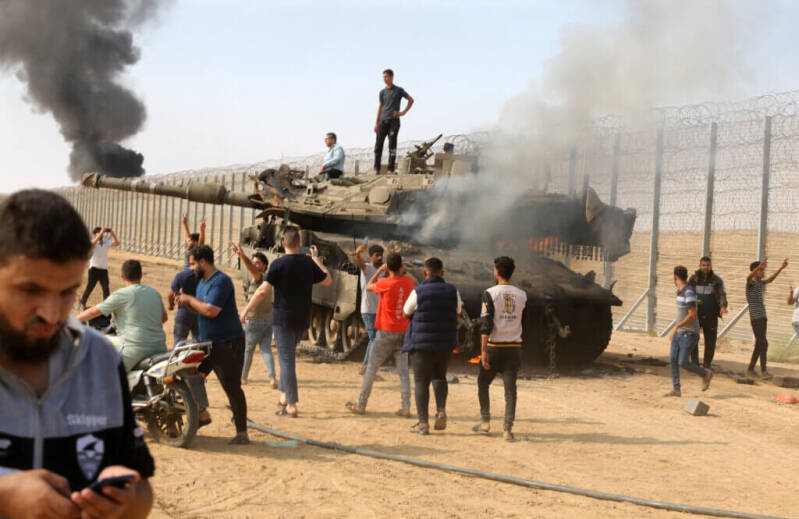
Those who say that Israel knew about the plans for October 7 all along are repackaging an old colonial trope which believes that the natives are too docile, too submissive, too cowardly, and too inferior to revolt against their oppressors.
Chicago area activists shut down weapons manufacturer implicated in Gaza genocide
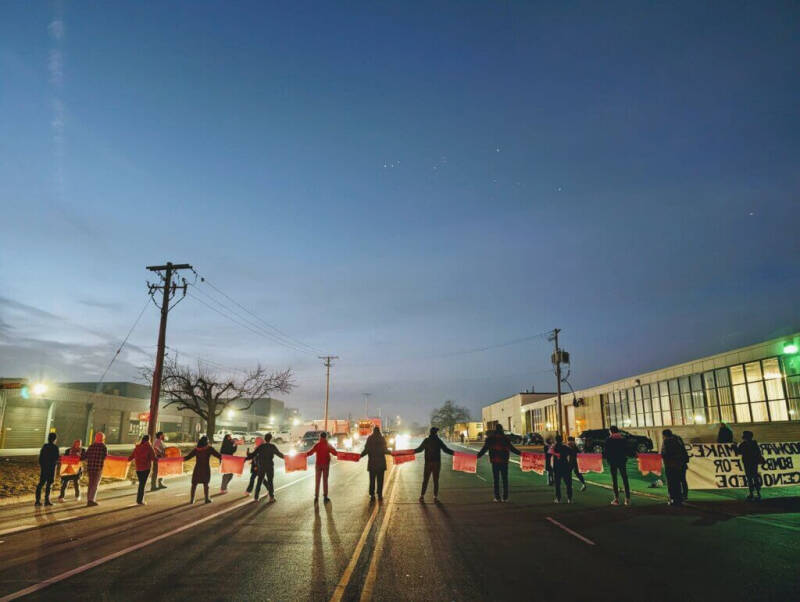
Activists shut down Woodward MPC manufacturing facility in Niles, Illinois, on Wednesday, February 7, to protest the company’s role in the ongoing genocide in Gaza.


Hostilities in the Gaza Strip and Israel
Flash Update #113

Hundreds of thousands of people remain in the area to the north of Wadi Gaza, which is largely cut off from humanitarian assistance and where food security assessments show the greatest needs. Rescue team recovering bodies in northern Gaza during a preliminary assessment led by the United Nations. Photo by OCHA
8 februari 2024
Key points
- Intense Israeli bombardment from air, land, and sea continues to be reported across much of the Gaza Strip, particularly in and around Khan Younis, resulting in further civilian casualties, displacement, and destruction of civilian infrastructure. Ground operations and fighting between Israeli forces and Palestinian armed groups also continue to be reported across much of Gaza. On 7 February, the Israeli military announced a temporary and tactical suspension of military activities in the western neighbourhood of Rafah between 10:00 and 14:00 for humanitarian purposes.
- Between the afternoons of 6 and 7 February, according to the Ministry of Health (MoH) in Gaza, 123 Palestinians were killed, and 169 Palestinians were injured. Between 7 October 2023 and 13:30 on 7 February 2024, at least 27,708 Palestinians were killed in Gaza and 67,147 Palestinians were injured, according to the MoH.
- Between the evenings of 6 and 7 February, the Israeli military reported that one Israeli soldier died from a health complication after being injured in Gaza. As of 7 February, 225 soldiers were killed and 1,304 soldiers were injured in Gaza since the beginning of the ground operation, according to the Israeli military.
- The risk of famine in Gaza is increasing by the day, particularly for an estimated 300,000 people in northern Gaza who have been predominantly cut off from assistance and where food security assessments show the greatest needs, according to WFP. WFP warns that humanitarian aid reaching Gaza city is “not enough to prevent a famine.” WFP stressed that “faster and sustained access” is urgently needed. The last time UNRWA was able to carry out a food distribution in the north of Wadi Gaza was 23 January. On 4 February, the World Central Kitchen, with the support of the Royal Jordanian Air Force and the Dutch Air Force, carried out airdrops using GPS-guided parachutes to deliver humanitarian aid for the Jordanian field hospital in northern Gaza. The Integrated Food Security Phase Classification (IPC) global partnership had projected that the entire population of the Gaza Strip would face crisis or worse levels of hunger for the period between 8 December and 7 February, including one in four households facing catastrophic hunger conditions.
- Health care in Gaza remains extremely precarious amid continued bombardment and hostilities, a lack of supplies and medical personnel, access restrictions, and fast deteriorating health conditions. On 7 February, UNRWA reported an “alarming spread of disease due to lack of sanitation and clean water.” Moreover, recent findings from malnutrition screenings carried out by partners of the Nutrition Cluster indicate a sharp increase in the global acute malnutrition (GAM) rate among children aged 6 to 59 months, with the GAM rate for northern Gaza (16.2 per cent) being above the World Health Organization (WHO) critical threshold of 15 per cent. Yet, in January, the access of missions to support critical hospitals and facilities providing water, hygiene and sanitation (WASH) services to areas north of Wadi Gaza were among those overwhelmingly denied by the Israeli authorities. As of 7 February, there are no fully functional hospitals in Gaza while 36 per cent of hospitals and 17 per cent of primary health care centres are only partially functional, according to the World Health Organization (WHO).
- Heavy fighting near Nasser and Al Amal hospitals in Khan Younis continues to jeopardize the safety of medical staff, the wounded and the sick as well as internally displaced persons (IDPs) who have sought refuge at these hospitals. On 7 February, the Palestine Red Crescent Society (PRCS) reported that Israeli military vehicles positioned in front of Al Amal Hospital were firing directly at the building, resulting in two injuries. On the same day, PRCS also reported that a 77-year-old patient died due to the oxygen shortage at Al Amal hospital. Two days earlier, some 8,000 patients and IDPs had reportedly evacuated this hospital and PRCS headquarters, after the Israeli military guaranteed safe passage to Al Mawasi area in Khan Younis. However, some 100 medical staff and volunteers as well as elderly patients and people with disabilities, who could not be moved, remained at the hospital.
- Intense fighting around Khan Younis continues to drive thousands of people into the southern town of Rafah, which is already hosting over half of Gaza’s population. On 7 February, Under-Secretary-General for Humanitarian Affairs and Emergency Relief Coordinator Martin Griffiths expressed extreme concern about the safety and well-being of families who “have endured the unthinkable” in search of safety and now find themselves facing the prospect that intensified hostilities will expand to Rafah. He warned: “Further fighting in Rafah risks claiming the lives of even more people. It also risks further hampering a humanitarian operation already limited by insecurity, damaged infrastructure and access restrictions.”
- Attacks on schools hosting IDPs continue to be reported. On 5 February, nine IDPs were reported shot and killed at schools in Khan Younis in three separate incidents, according to UNRWA. Highlighting the gendered impact of the crisis in Gaza, UN Women emphasized that nearly one million women and girls displaced in Gaza are often disproportionately affected by food insecurity, daily bombardment, overcrowded shelters and inadequate WASH facilities. Between 7 October and 31 January, more than 375 IDPs and humanitarian staff were killed and 1,350 injured in over 290 incidents that directly or collaterally impacted humanitarian compounds, the coordinates of which had been notified to parties to the conflict. In addition to endangering civilian lives, such incidents have compromised the safety of humanitarian operations.
- Incidents affecting aid trucks and ambulance teams continue to be reported. On 7 February, a PRCS paramedic was killed, and others were injured, when an ambulance team, deployed from southern Gaza to evacuate injured Palestinians from Gaza city, was hit between Al Ahli Baptist Hospital and Shifa Hospital, according to PRCS. On 6 February, at about 16:20, six Palestinian police officers were reportedly killed when a police vehicle that was purportedly guarding an aid truck in Khirbet Al Adas area in eastern Rafah was hit. On 5 February, an UNRWA-led convoy carrying food aid to northern Gaza was hit in Deir Al Balah, despite prior notification to, and coordination with, parties to the conflict, the third such incident according to UNRWA.
Hostilities and casualties (Gaza Strip)
- The following are among the deadliest incidents reported between the afternoons of 6 and 7 February:
- On 6 February, at about 17:00, ten Palestinians were reportedly killed, and ten others were injured, when a residential building in eastern Jabalya Camp in North Gaza was hit.
- On 6 February, three Palestinians, including a journalist, his mother and sister, were reportedly killed, and several others were injured, in a strike on a house in western Rafah.
- On 7 February, at about 9:30, four bodies were reportedly recovered in Jourat Al Lot in Khan Younis and were transferred to the European Gaza Hospital, also in Khan Younis.
- On 7 February, at about 5:40, two Palestinians (mother and daughter) were reportedly killed, when a residential building in Az Zuhur neighbourhood in northern Rafah was hit.
Displacement (Gaza Strip)
- As of 5 February, UNRWA estimates that some 75 per cent of Gaza’s population (1.7 million out of 2.3 million people) are displaced, more than half of whom are children. IDPs are sheltering at UNRWA and public shelters, informal sites, in close vicinity to UNRWA shelters and distribution sites, or within host communities, according to UNRWA. They face acute shortages of food, water, shelter and medicine.
Electricity
- Since 11 October 2023, the Gaza Strip has been under an electricity blackout, after the Israeli authorities cut off the electricity supply, and fuel reserves for Gaza’s sole power plant were depleted. The communications and industrial fuel shutdown continue to significantly hinder people from seeking lifesaving services, as well as the aid community’s efforts to assess and to adequately respond to the deepening humanitarian crisis. For more information on electricity supply to the Gaza Strip, please see this dashboard.
Hostilities and casualties (Israel)
- Over 1,200 Israelis and foreign nationals have been killed in Israel, including 36 children, according to the Israeli authorities, the vast majority on 7 October and in the immediate aftermath.
- As of 7 February 2024, the Israeli authorities estimate that about 136 Israelis and foreign nationals remained captive in Gaza; these reportedly include fatalities whose bodies are being withheld. During the humanitarian pause (24-30 November), 86 Israeli and 24 foreign national hostages were released.
Violence and casualties (West Bank)
- According to initial reports, on 7 February, three Palestinians were killed following an exchange of fire during an Israeli military operation in Nur Shams refugee camp in Tulkarm. The body of one fatality was reportedly withheld by Israeli forces. During the operation, civilian access into and out of the camp was blocked and a house where the three killed Palestinians were present sustained severe damage. According to UNRWA, 15 staff members were trapped inside the Agency’s health clinic in the camp during the operation.
- Since 7 October 2023 and as of 7 February 2024, 377 Palestinians have been killed, including 96 children, in conflict-related incidents across the West Bank, including East Jerusalem, the majority (365) by Israeli forces. Additionally, two Palestinians from the West Bank were killed while carrying out an attack in Israel on 30 November. Between 1 January and 7 February 2024, 68 Palestinians, including 15 children, were killed, the majority by Israeli forces.
- Since 7 October 2023 and as of 7 February 2024, ten Israelis have been killed in conflict-related incidents in the West Bank, including East Jerusalem, and in Israel. These include five Israelis, including four members of Israeli forces, killed in the West Bank, including East Jerusalem; four Israelis killed by Palestinians from the West Bank in Israel, and one Israeli killed by Israeli forces who misidentified him during a Palestinian-perpetrated attack in West Jerusalem.
- Since 7 October 2023 and as of 7 February 2024, 4,426 Palestinians, including 67 children, have been injured in the West Bank, including East Jerusalem. Of these, 4,288 have been injured by Israeli forces, 117 people by settlers and 21 people by either Israeli forces or settlers. Of the total injuries, 55 per cent were reported in the context of search-and-arrest and other operations, 34 per cent in demonstrations and 8 per cent during attacks perpetrated by settlers against Palestinians.
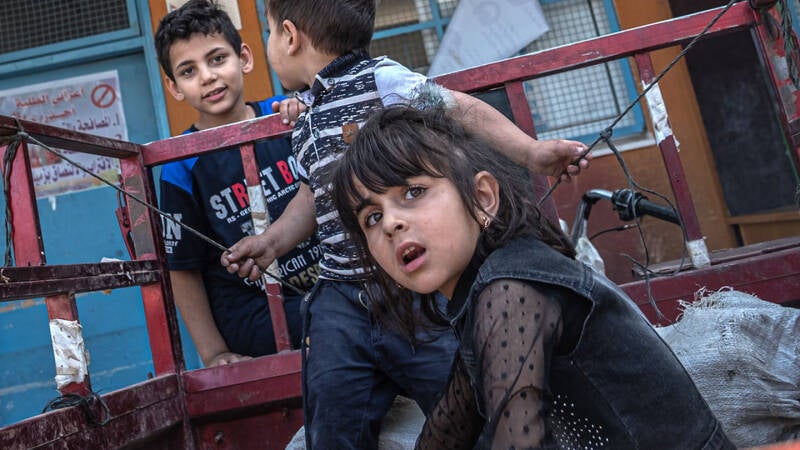
Settler Violence
- Since 7 October 2023 and as of 7 February 2024, OCHA has recorded 512 Israeli settler attacks against Palestinians, resulting in Palestinian casualties (49 incidents), damage to Palestinian-owned property (405 incidents), or both casualties and damage to property (58 incidents). October, followed by November, represented the peak of such incidents, after which the frequency of settler violence incidents returned to their pre-October levels. Overall, in 2023, OCHA documented 1,264 settler attacks against Palestinians in the West Bank, including East Jerusalem, the highest such number in any given year since OCHA started recording incidents involving settlers in 2006.
Displacement (West Bank)
- Since 7 October 2023 and as of 7 February 2024, 508 Palestinians, including 248 children, have been displaced following the demolition of their homes in Area C and East Jerusalem, due to lack of Israeli-issued building permits, which are almost impossible to obtain. Overall, in 2023, 892 structures were demolished, sealed off and/or confiscated, due to the lack of Israeli-issued building permits in Area C and East Jerusalem, resulting in the displacement of 1,152 Palestinians, including 575 children. One-fourth of the demolished structures in 2023, and over 50 per cent of the people displaced, were in East Jerusalem.
- Since 7 October 2023 and as of 7 February 2024, Israeli forces have punitively demolished 22 Palestinian-owned homes, displacing 105 Palestinians, including 45 children. The numbers exceed those reported in the first nine months of 2023, during which 16 homes were punitively demolished and 78 people displaced in that context.
- Since 7 October 2023 and as of 7 February 2024, 775 Palestinians, including 322 children, have been displaced, following the destruction of 123 homes during operations carried out by Israeli forces across the West Bank. About 95 per cent of the displacement was reported in the refugee camps of Jenin, Nur Shams and Tulkarm. This represents 85 per cent of all displacement reported due to the destruction of homes during Israeli military operations since January 2023 (908 people).
Funding
- As of 7 February, Member States have disbursed $796.3 million against the updated Flash Appeal launched by the UN and its partners to implement its response plan in support of 2.2 million people in the Gaza Strip and 500,000 people in the West Bank. This constitutes 65 per cent of the $1.2 billion requested.
- Private donations are collected through the Humanitarian Fund.A private foundation in Australia has donated $2.2 million. Since 7 October, the Humanitarian Fund has disbursed about $55 million.
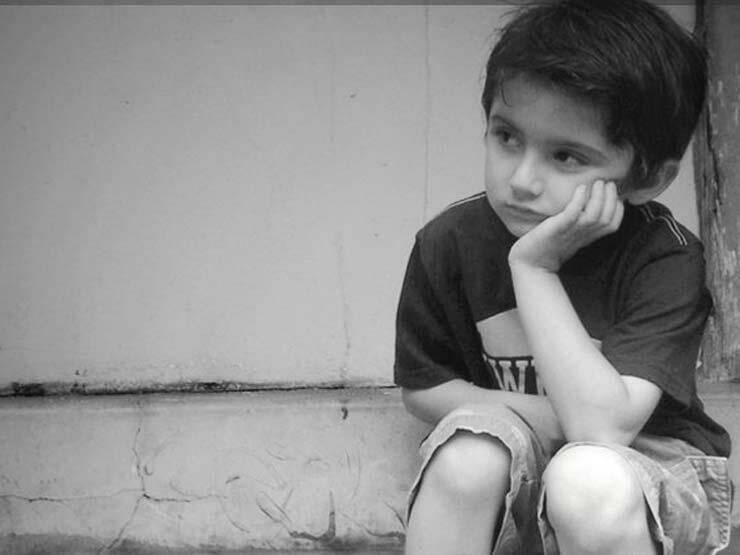
HUMANITARIAN NEEDS AND RESPONSES: 29 January – 5 February
Health
Needs:
- Primary health services are critically needed in informal shelters across the Gaza Strip.
- There is a need to increase routine immunization coverage as well as the provision of medication for non-communicable diseases, psychotropics, and anaesthesia to address the health needs of the population and prevent the spread of infectious disease.
- Expanding sexual and reproductive health services at the community level is necessary to alleviate overcrowding in maternity hospitals and ensure that women have access to the care they need.
- The establishment of field hospitals in additional areas of the Gaza Strip is crucial to accommodate the medical needs of the local population.
- People are unable to effectively access healthcare due to the lack of laboratory equipment and reagents needed for accurate diagnosis and testing.
- Patients in need of timely and necessary transfusions, cannot receive them due to the unavailability of blood products in hospitals.
Response:
- Since the onset of hostilities, 45 partners have provided health services to an estimated 1 million people in need. There have also been more than 240,000 primary healthcare consultations.
- The Al-Emirati Maternity Hospital in Rafah received 900 ampoules of oxytocin, five Inter-Agency Emergency Reproductive Health (IARH) kits, and 500 Maternal and Neonatal Health (MNH) kits from UNFPA. This donation will enhance the hospital's capacity, which currently conducts about 250 deliveries a day, of which 15 per cent are caesarean sections.
- Some 12 Emergency Medical Teams (EMTs) are currently operational. Between 29 January and 5 February, EMTs have treated some 12,000 patients requiring emergency surgeries and treatment for non-communicable diseases and severe acute malnutrition.
Challenges and Gaps:
- The influx of IDPs to Rafah has overwhelmed the available bed capacities in hospitals, leading to insufficient capacity to meet the healthcare needs of the population.
- Response operations by health partners are negatively affected by the displacement of the medical staff, social stresses and telecommunication challenges.
- The high insecurity and limited access to health facilities in the northern and middle governorates continues to present major challenges to partners’ response activities. Furthermore, ongoing fighting and persistent siege of hospitals have severely affected their functionality and accessibility.
- Limited and proper access to WASH facilities is hindering disease prevention services.
Nutrition
Needs:
- Provision of nutrition interventions, including lifesaving supplies in Gaza, is critically needed across the Strip.
- Malnutrition among children, particularly children under-five, and pregnant and breastfeeding women (PBW) remains a significant concern, amid lack of functioning health and WASH systems and deterioration of the food security situation.
Response:
- The nutrition sub-cluster carried out a training on Global mid-upper arm circumference (MUAC) screening for detecting acute malnutrition in children aged 6-59 months. The training covers data management, identification of malnutrition, simplified management of severe and moderate malnutrition, and reporting.
- The initial findings from screenings for malnutrition carried out by five implementing partners of the Nutrition Cluster indicate a sharp increase in acute malnutrition. About 3,500 children aged 6 to 59 months, were screened at three IDP sites and three health facilities; global acute malnutrition (GAM) was found at a rate of 9.6 per cent, representing a twelve-fold increase compared to the GAM rate of 0.8 per cent recorded before the beginning of hostilities. Furthermore, data from northern Gaza indicate a 16.2 per cent GAM rate, which is above the World Health Organization (WHO) critical threshold of 15 per cent. This sharp rise in acute malnutrition suggests that, without adequate preventive and curative services, the situation will worsen.
- In the reporting period, nutrition partners distributed Medium Quantity Lipid Based Supplement (LNS-MQ) to 3,965 pregnant and lactating women (PLWs) and 41,914 children aged 6 to 59 months. However, partners indicate that due to communication challenges in Gaza, some distribution data is yet to be reported.
Challenges and Gaps:
- Ongoing hostilities in Gaza have led to severe food shortages, inadequate WASH facilities, and a breakdown in health services, placing children under-five and PBW at an increasing risk of malnutrition.
- The nutrition cluster is only 25 per cent funded. Without immediate funding and an expanded response, children under five years will be at risk of malnutrition. Urgent action is crucial to prevent this life-threatening situation.
Food Security
Needs:
- The food security situation in the Middle Area and southern governorate presents an exceptionally challenging scenario. In Khan Younis, most of the population are grappling with extreme hunger.
- The influx of IDPs into Rafah governorate has placed considerable strain on available resources. Providing adequate food assistance to the population challenging, given overcrowding
- Vulnerable segments of the population, including children, the elderly, and individuals with underlying health conditions, are particularly susceptible to the risk of malnutrition.
- There is an immediate need to establish uninterrupted and secure humanitarian corridors that facilitate the delivery of essential aid throughout Gaza, including through the private sector.
Response:
- Between 29 January and 4 February, 20 partners provided food assistance within the Gaza Strip reaching some 1.88 million people. The geographic breakdown is as follows:
- Rafah Governorate received approximately 33 per cent of the total food assistance. FSS partners reached 1,122,960 IDPs with hot meals, 77,115 IDPs with food parcels, 64,794 IDPs with Ready-To-Eat (RTE) food, including in public shelters, UNRWA shelters, host families and makeshift camps. Bread was distributed to 178,590 IDPs in makeshift camps. Some 1,200 people in host families in the Rafah North area were provided with voucher/cash-based transfers.
- Deir al Balah received approximately 27 per cent of the total food assistance. This includes a total of 42,633 food parcels distributed to people sheltering in host families, in public shelters, makeshift camps and in UNRWA shelters. Ready-To-Eat (RTE) food was provided to 22,029 people and hot meals were also distributed to 42,000 people displaced. Vouchers/cash-based transfers were received by 1,845 people displaced.
- Khan Younis received around 17 per cent of the food assistance. Food parcels were distributed to 20,550 people in public shelters, makeshift camps and UNRWA shelters. Some 51,550 people received RTE food in public shelters and makeshift camps. Some 1,845 people sheltering in host families and in public shelters received voucher/cash-based transfer assistance.
- Northern Gaza and Gaza governorates received some 13 and 10 per cent reached Northern Gaza and Gaza governorates. This includes 6,150 food parcels distributed in host families, while 243,796 people displaced received hot meals, including in public shelters, in makeshift camps and in UNRWA shelters.
Challenges and Gaps:
- In the northern Gaza and Gaza governorates, the humanitarian situation has reached a critical state, including due to restrictions that impede the delivery of essential aid. These restrictions have paralysed efforts to address the significant and growing needs of the population. Improved access and support are urgently needed.
- Frequent border closures, imposed restrictions, and security concerns, prevent humanitarian partners from establishing a secure and efficient operation to ensure the consistent of food
- The deterioration of the situation and escalation of hostilities have caused significant damage to critical infrastructure, including roads, electricity, and water supply systems, impeding the efficient distribution of food aid.
- The lack of fuel and cooking gas poses significant challenges. or sustaining humanitarian efforts including through ensuring the operation of essential services such as mills and bakeries and for people to prepare the limited food available to them.

Shelter and Non-Food Items (NFI)
Needs:
- Over 650,000 people are estimated to have no home to return to. Many more will be unable to return home due to infrastructure damage, and risks posed by explosive remnants of war.
- There is a significant shortage of all essential non-food items (NFIs) for IDPs inside and outside shelters. The Cluster estimates that about 100,000 families need shelter support, including winterized tents or sealing off kits. Just under 1 million people are estimated to need NFIs.
- Partners estimate that the amount of debris from the destruction of residential housing units will exceed 12,000,000 metric tons and will take over four years to remove, given Gaza's current capabilities.
- Displaced people residing in both formal and informal emergency shelters lack basic NFIs. An estimated hundreds of thousands of people lack adequate shelter.
- Tents, timber sections, and tarpaulin sheets are needed so displaced people have protection from harsh weather conditions and to ease overcrowded and unhygienic conditions.
- The lack of proper informal settlement planning has led to the creation of makeshift shelters and tents flooding on rainy days, further exacerbating the suffering of displaced people.
Response:
- During the reporting period, cluster partners distributed around 3,000 bedding items and 5,000 dignity kits in Khan Younis and the Middle Area. They also distributed 1,500 bedding items in the North, to people who are not residing in UNRWA shelters or with host families. Since 7 October, Shelter Cluster partners have distributed about 40,000 tents, primarily in the areas of Rafah, Khan Younis and the Middle area. Cluster partners report an additional 28,000 tents are in the pipeline.
Challenges and Gaps:
- Since many IDPs have been displaced more than once, they are unable to carry their belongings, including NFIs and other shelter materials. Assistance often needs to be distributed repeatedly to the same families. Displaced people also lack tools to set up their tents and protection from rain and floods (hand tools are currently not permitted to enter Gaza).
- Due to security concerns and limited access, partners restricted the delivery of the assistance mainly to Rafah, Khan Younis and the Middle areas.
- Cluster partners indicate that pricing for shelter items has risen in regional markets, including high freight rates and shipping costs. Partners face persistent challenges in maintaining a consistent supply chain.
- Urgent funding is needed to address the key gaps in the supply of shelter and NFIs. As of 2 February, only 26 per cent of the Shelter Cluster funding requirement (209.2M) has been funded.
WASH
Needs:
- Access to safe drinking water for the entire population of Gaza is needed, especially among the displaced population and the northern areas of Gaza.
- The accumulation of solid waste on the streets, around hospitals, IDP shelters, and various sites remains a priority concern. Tens of thousands of tons of uncollected public waste are intensifying public health risks. The Municipality of Gaza city estimates that approximately 50,000 tons of solid waste remain unmanaged, exacerbating environmental and health concerns.
- Power supply (fuel) to water and wastewater facilities, primarily decentralized systems (e.g., generators and other electro-mechanical items) is critical.
- Some 2.25 million people need WASH Assistance. Two-thirds of IDPs are concentrated in Rafah area and urgently need WASH support.
Response:
- Over 2 million people have been reached through WASH assistance.
- Mekorot Connection: Bani Saeed water supply is currently producing 6,000 cubic metres per day (250 cubic metres per hour capacity) which is 42 per cent of its full capacity. Plans are in place for repairing the pipeline. The key challenges to repairs include their safe access, communication, and coordination.
- Two out of out of three desalination plans are partially operating: the Middle Area plant produces an average of 1,500 cubic metres per day (distributed via water trucking) and the South Gaza desalination plant produces 1,700 cubic metres per day (around 600 m3 are distributed via water trucking and 1,100 via the water network).
- The UAE's small desalination plant located in Egyptian Rafah, operates at full capacity, providing 2,400 cubic metres per day. This has been achieved following the construction of a 3-kilometre transmission line extending the intake point to the Saudi Water reservoir and other filling points for tankers and tap-stands.
Challenges and Gaps:
- Flooding has been a significant issue; the area around Pumping Station 7B is flooded posing a potential crisis with overflow of sewage in the vicinity of the station. This is further compounded by fuel shortage, which impedes the operation of sewage stations. Reports of people coming into direct contact with sewage-contaminated floodwaters in the streets are deeply troubling. Technical assessments are needed to estimate damage and potential impacts.
- The public health risk is further intensified due to an acute scarcity of hygiene materials and adequate sanitation infrastructure. Persistent anecdotal reports of Hepatitis A cases in Gaza, as recorded by UNRWA and the Health Cluster, highlight ongoing concerns.
- The absence of testing laboratories in Gaza for specimen analysis is challenging. Exploring the possibility of referring samples to Egypt is under consideration
- The constraints of the clearance and transport of the dual-use items into Gaza remain a limiting factor of the overall WASH response.
Education
Needs:
- More than 625,000 students and nearly 23,000 teachers in the Gaza Strip have been affected by school closures and attacks on education, with no access to education or a safe place.
- According to the Ministry of Education, as of 30 January, more than 4,660 students and 239 educational staff have been killed and more than 8,109 students and 756 teachers have been injured in the Gaza Strip since 7 October.
- Some 92 per cent of all school buildings in Gaza are being used as shelters for IDPs and/or have sustained varying levels of damage. Some 390 schools (78.8 per cent of the total school buildings in Gaza) sustained damage, including 140 schools that sustained major damage or were fully destroyed. Combined, these schools previously served some 433,000 children and more than 16,200 teachers. The North, Gaza, and Khan Younis governorates have been especially impacted, accounting for 76 per cent of all damaged schools (source: Education Cluster Damaged School Dashboard.)
- Education partners are concerned about reports, videos and pictures showing that schools are being used for military operations by Israeli forces, including their use as detention and interrogation centres, or as military bases.
- Key priorities include the provision of Education in Emergencies (EiE) recreational activities and psychological support, including Social Emotional Learning (SEL) activities to children in shelters and designated emergency shelters (DESs); establishing Temporary Learning Spaces (TLS) in shelters/DESs to start non-formal learning for children; provision of emergency supplies and learning kits. In addition, a key need is the identification and support of children with disabilities and other needs, with assistive devices for continuity of learning.
Response:
- Since October 2023, eleven partners have reached more than 131,000 students and teachers (source: Education Cluster 5W dashboard) with psychosocial support, emergency learning, recreational supplies and activities, and awareness sessions in the Deir al Balah, Khan Younis, and Rafah governorates. Most of the cluster responses are delivered by local partners.
- UNICEF with three of its partners and Teacher Creativity Centre are working on establishing TLS to start non-formal education activities with displaced children in shelters/DESs.
- The Education and the Shelter clusters are jointly carrying out advocacy activities to highlight the devastating impacts of the current situation in Gaza on children and the inextricable links between shelter and schooling.
Challenges and Gaps:
- No activities have been undertaken in the North Gaza and Gaza governorates due to ongoing hostilities and access challenges.
- As of 28 January, the education response remains significantly underfunded, receiving less than 10 per cent of its requirements. Urgent funding is required to meet immediate response requirements.
Emergency Telecommunications
Needs:
- Recurrent telecommunications shutdown in the Gaza Strip restricts people from accessing life-saving information and impedes other forms of humanitarian response.
Response:
- The Emergency Telecommunications Cluster (ETC) continues its presence in Gaza since 09 January supporting humanitarian responders with ICT assessments, technical advice and information, repairs, and guidance on the use of ICT equipment.
- Since 3 November, the ETC continues to engage with the Israeli Coordinator of Government Activities in the Territories (COGAT) for authorization to import all essential telecommunications equipment into Gaza and provide independent access to communications for humanitarian responders.
- On 30 January, the ETC assessed the network signal coverage of the Very High Frequency (VHF) digital radio security communications system (SCS) which operates using the VHF Rafah repeater installed at Al Shaboura Clinic. Although the signal coverage is good in Rafah city, the SCS remains non-operational due to the incompatibility between the VHF/HF handheld radio antennae and the digital repeater system. The ETC is collaborating with UNDSS to procure compatible radio antennae and a solar power solution for the SCS.
Challenges and Gaps:
- Limited access to electricity, fuel, and telecommunications services continues to hamper the humanitarian response in Gaza.
- Importation of telecommunications equipment into Gaza is lengthy and extremely challenging.
Logistics
Response:
- The Logistics Cluster has launched common transport services for the route: Amman to Rafah via King Hussein Bridge and convoy coordination services for the route Amman to Rafah via Aqaba-Nuweiba. Details on the support and services provided by the Logistics Cluster are available in the Standard Operating Procedures.
- A consolidation warehouse in Amman is now operational for the pre-positioning of cargo. The facility is bonded and temperature-controlled with 1,300 pallet positions, and a capacity to further increase the storage space.
- The Logistics Cluster held a warehouse management training for humanitarian organisations` personnel on the ground in Gaza, including UN agencies and international NGOs.
- Partners continue facilitating access to temporary storage, transport, and cargo notification transshipment services. As of 4 February 2024, the Cluster has stored 5,142 metre cubic of cargo on behalf of 16 organizations in Gaza. In Gaza, 1,470 square metres of temporary storage is available in Rafah, and 800 pallet positions in a non-bombed warehouse in Port Said, Egypt.
- In the Gaza Strip, the Logistics Cluster has installed and handed over 18 Mobile Storage Units (MSUs), of which 12 are operational (3,840 metre square). In Al Arish, Egypt, so far, the Logistics Cell augmented the ERC storage capacity by 3,840 square metres with the installation of 12 MSUs.
Challenges and Gaps:
- Persisting challenges include storage and transportation across the Gaza Strip, including temperature-controlled storage. The Logistics Cluster is procuring additional Mobile Storage Units (MSUs), which will be available to humanitarian partners to augment their storage capacities and in the event of a scaled-up assistance.
- Partners are collecting the pipeline for incoming cargo through the Egypt and Jordan corridors for the coming three months; this is a key exercise for operational planning, to understand available resources, and allocate them based on prioritization.
Multi-Purpose Cash Assistance (MPCA)
Response:
- Some 121,000 households are estimated to have received one round of emergency MPCA since the start of the hostilities, while another 35,000 people (including people with disabilities and nursing mothers) have received a top-up and close to 1,800 households have received a second round.
- Around 85,000 households have cashed out their assistance since 7 October. Even under a normal year where people are expected to have alternative income sources, this package only lasts for a household for up to one month. This also does not consider market collapse and price volatility experienced under the current in-extremis circumstances. Therefore, this assistance falls far below the needs on the ground.
- From the last round of post-distribution monitoring data conducted between the third week of December and mid-January, food remains the most purchased item with humanitarian cash (98 per cent), followed by medicines (31 per cent), debts repayment (21 per cent), water, hygiene products, and transportation. The percentage of respondents reporting that the assistance helped them accessing needed basic goods and services at that specific time is about 70 per cent.


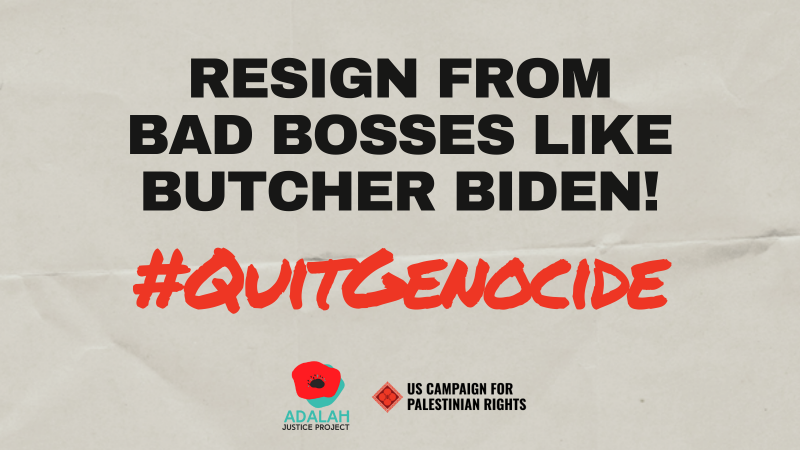
8 februari 2024
It has been 125 days of U.S.-funded genocide in Gaza, rubber-stamped by President Joe “Butcher Biden” every step of the way.
If we are to finally bring Israel’s massive violence to an end, we must dismantle the genocide machine behind it: every U.S. dollar that buys the bombs and every staffer turning the gears inside the White House.
Throw sand in the gears of the genocide machine now! Email 200+ Biden administration senior government officials and tell them to quit.
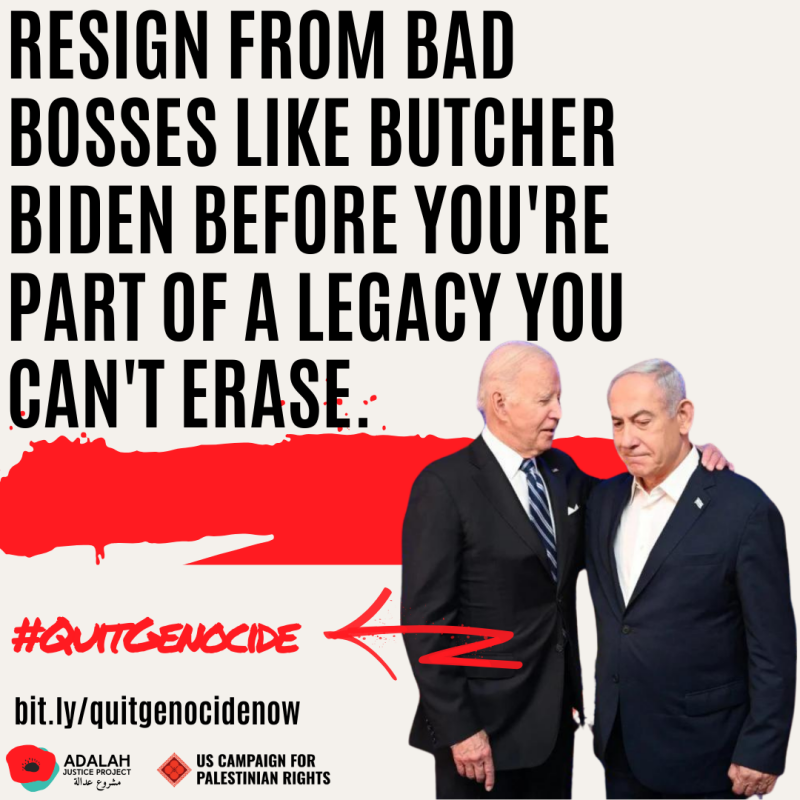
TELL BUTCHER BIDEN STAFFERS TO QUIT NOW
This Quit Genocide campaign, cosponsored by USCPR and Adalah Justice Project, has issued a public call asking all Butcher Biden employees to resign in protest immediately. Senior government officials Josh Paul and Tariq Habash have already paved the way by going public with their principled resignations.
Our joint email action tool has the individual email addresses for 200 senior government officials, so you can email them directly to level up the pressure. Each of these officials have been deeply complicit, working for the White House or other key policy office in the Biden administration.
Most importantly, make sure to customize your email subject line to evade any email filters that staffers may try to set up. Get creative!
Disrupt in the belly of the beast, and flood the email inboxes of all 200+ senior government officials now.
TELL BUTCHER BIDEN STAFFERS TO QUIT NOW
As Palestinian people in Gaza are enduring heavy bombings and forced starvation, not knowing if they and their beloved ones will live to see another day, we cannot allow the U.S. government officials responsible to have a moment of peace.
Thank you for taking action. While you’re at it, spread the word and forward this email to three of your friends.
Onward to liberation,


8 februari 2024
Today's headlines
Israel rejects ceasefire proposal, plans to expand ground invasion into Rafah

Love, but not for the colonized: responding to repression of Palestine solidarity at CUNY
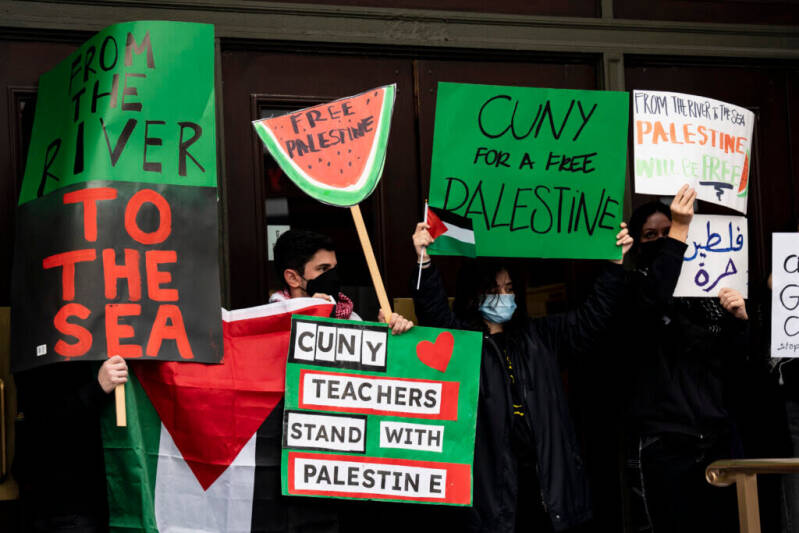
Our panel for a conference on equity and antiracism at CUNY's Lehman College was canceled because it included the word "intifada" in the title. Instead of promoting antiracism, CUNY participates in the demonization of Palestinian resistance
SOAS alumni speak out against the suppression of Palestine solidarity

We call on students and alumni to reject SOAS's neoliberal and genocidal agendas and stand up to the administration's suppression of Palestine solidarity.


7 februari 2024
Both the World Court and a U.S. federal court have now found that Israel’s attacks on Gaza plausibly amount to genocide. However, despite the mounting evidence, the Biden administration is still fueling Israel’s actions by offering it unconditional political cover and billions in military funding.
Public resignations of senior Biden officials like Josh Paul and Tariq Habash have already made waves in Washington. More resignations would make a powerful statement against the administration’s complicity in these atrocities and constitute an important step toward holding the administration accountable for its action.
While we have seen mounting dissent within the Biden administration, most of that dissent has been expressed through anonymous letters and masked demonstrations. These anonymous efforts have inspired many of us, but they have not yet resulted in meaningful policy change from the Biden administration as it continues to support Israel’s genocide.
The time has come to go public.
Let us encourage other officials to increase pressure on the administration and hold Biden accountable by resigning now.
Each of the 200+ staff members on our list works in the White House/Executive Office of
Together, we can send a clear message that genocide should never be a part of any government's agenda.
Thank you for your action.
Adalah Justice Project


Is a ceasefire imminent? What you need to know.

7 februari 2024
This week, Democrats and Republicans each unveiled proposals that would provide billions in additional funding for Israel’s genocidal military, revealing just how out of touch they are with the majority of their constituents.
Neither bill requires that the billions in U.S. military funding to Israel be subjected to any kind of oversight or conditions, even after the International Court of Justice found that Israel could “plausibly” be committing genocide against the Palestinians in Gaza...
A ceasefire could be coming soon.
Hamas has responded to a U.S.-backed ceasefire proposal with a counteroffer: a 135-day truce, which would end with the withdrawal of all Israeli troops — a definitive end to the genocide.
In exchange for the safe return of the over 100 Israeli hostages still in Gaza, Hamas is also asking that the Israeli government free Palestinian political prisoners languishing in Israeli jails. Over the last four months alone, Israeli forces have arrested over 3,000 Palestinians in the Occupied West Bank.
The proposal would also allow more aid to enter Gaza and ensure the reconstruction of vital infrastructure begins sooner rather than later...
We aren't going anywhere.
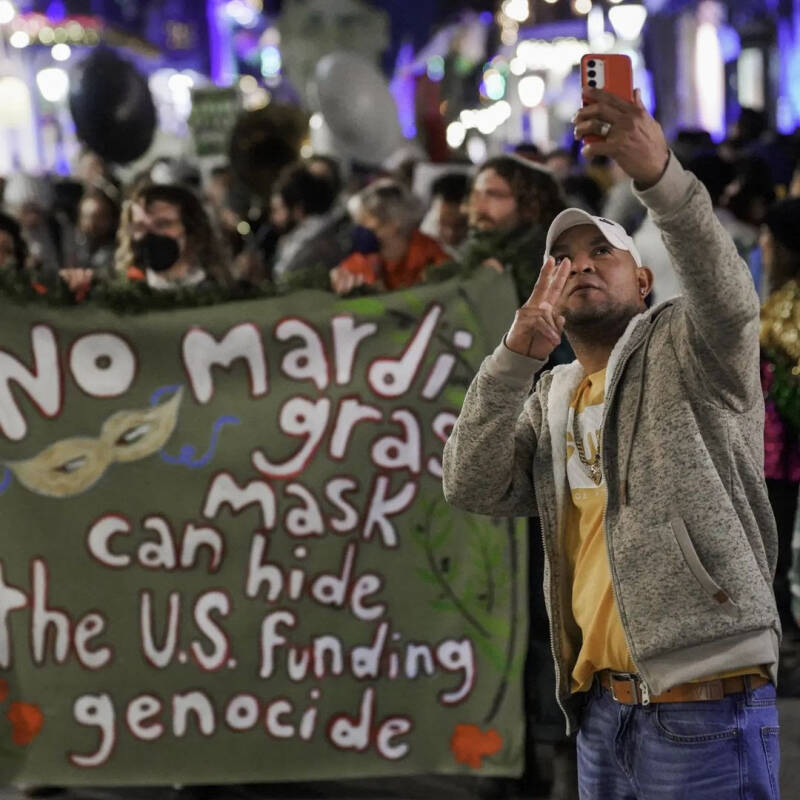


Humanitarian Access Snapshot - Gaza Strip
End-January 2024
Covering 1-31 January 2024
7 februari 2024
Overview
In January, amid ongoing intense hostilities, the ability of humanitarian missions to support people in need wherever they are across Gaza deteriorated compared with October-December 2023. Departing from the southern-most governorate of Rafah, aid missions increasingly had their access denied to areas north of Wadi Gaza (hereafter “the north”); as well as to areas south of Wadi Gaza, which are increasingly requiring coordination with Israeli Defense Forces (IDF) due to geographical shifts in conflict activity. Additionally, such missions were increasingly interfered with programmatically or delayed by Israeli forces. Amidst the above, threats to the safety of humanitarian personnel and sites continue to reduce the ability of humanitarian staff to operate.
Aid to North of Wadi Gaza: 16% of planned aid missions were facilitated. Of 61 planned missions to the north, ten (16%) were facilitated by the Israeli authorities, two (3%) were partially facilitated, 34 (56%) were denied access, and six (10%) were postponed by aid organizations due to internal operational constraints. In an emerging pattern, the access of an additional nine missions (15%) was initially facilitated, but subsequently impeded as routes designated by the Israeli military proved to be unpassable, or due to the imposition of excessive delays prior to the departure of the missions or at checkpoints en route. Facilitated missions primarily involved food distribution, while the access of missions to support critical hospitals and facilities providing water, hygiene and sanitation (WASH) services remained amongst those overwhelmingly denied.
Aid to South of Wadi Gaza: 57% of planned aid missions were facilitated. Of 114 planned missions to areas assessed as necessitating coordination to the south of Wadi Gaza, 65 (57%) were facilitated, one was partially facilitated, eight (7%) were initially facilitated but then impeded, 28 (25%) were denied access, and 12 (11%) were postponed internally. The 25% denial rate represents an increase compared with December 2023, where two (12%) of 16 missions were denied access. The 12 postponed missions, all destined for or returning from hospitals and humanitarian sites, were an emerging trend related to the geographical spread of military activities. The denials Included critical resupply missions to hospitals and to address unexploded ordnance (UXOs). Areas not requiring coordination are excluded from these statistics.
0 of 22 requests for military checkpoints to open early materialized. To facilitate aid and mitigate security risks in a congested environment, where people desperate for support gather around UN warehouses or trucks, multiple main supply routes must remain accessible, particularly by dawn, when operational conditions are optimal. It is thus critical that Israeli checkpoints open at 6:00. While a formal mechanism to facilitate early openings has been established, it has not materialized even once. Checkpoints at Wadi Gaza were typically scheduled to open at 9:00 or later, but opened consistently after the announced hour (only one checkpoint at a time). In a single case, an early opening was coordinated in advance, but it too did not operationalize, resulting in a convoy waiting for over an hour at the closed checkpoint, ultimately having to turn back as people gathered around it. Overall, on eight occasions, the UN was unable to facilitate missions due to extensive delays at checkpoints.
Fuel to North Wadi Gaza: 2 (10%) of 21 planned missions were facilitated. Unimpeded access would allow for the delivery of at least 386,400 litres, based on allocations for the planned missions, whereas in reality only 38,400 litres could be delivered. Both deliveries were facilitated to a single hospital, leaving other hospitals and WASH facilities unfueled. Among the planned convoys that were not facilitated, there were 13 consecutive access denials for missions destined to water and wastewater pumping stations. Fuel numbers should be considered indicative only, as some missions were denied multiple times.
Fuel to South Wadi Gaza: 15 (71%) of 21 planned missions to areas requiring coordination were facilitated. A total of 300,600 litres were delivered. However, convoys to Nasser hospital were denied access five times in a row. Fuel shortages in hospitals force them to cease most operations and could lead to preventable deaths. Not fueling or repairing water and sewage pumps would likely result in immediate and long-term health and environmental hazards spreading in Gaza and across borders.
Rising programmatic interference. Aid is delivered on the basis of independent assessments of humanitarian needs and prioritization. In some cases, Israeli forces interfered with mission programmes, often forcing their cancellation. At times, the Israeli military required the provision of justifications for fuel quantities for health facilities. In other cases, it facilitated access under the condition that no delivery is made to hospitals. In some instances, it imposed reductions on the volume of assistance, such as the quantity of food. Finally, it repeatedly denied access to Nasser hospital for the delivery of fuel, even as other aid missions to the same location were facilitated. The coordination mechanism, which was developed to improve security to aid missions, is undermined when used to restrict their operations. Should agencies move away from coordinating with parties to the conflict, it would expose them further; whereas agencies are already vulnerable due to Israeli restrictions on the import of critical equipment, including those related to communications.
Incidents impacting humanitarian compounds. Since 7 October, over 375 internally displaced persons and humanitarian staff have been killed and 1,350 injured in over 290 incidents that directly or collaterally impacted humanitarian compounds which had been notified to parties to the conflict. These include impacts by munitions as well as the use of such facilities by conflict actors. Such incidents undermine the efficacy and credibility of the notification system by compromising the safety of humanitarian operations.
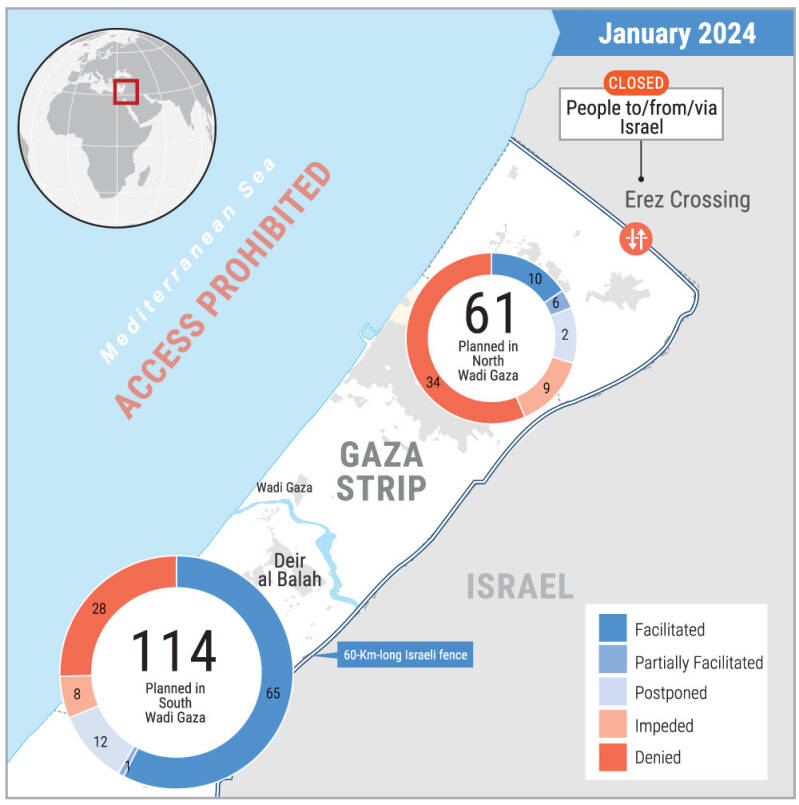
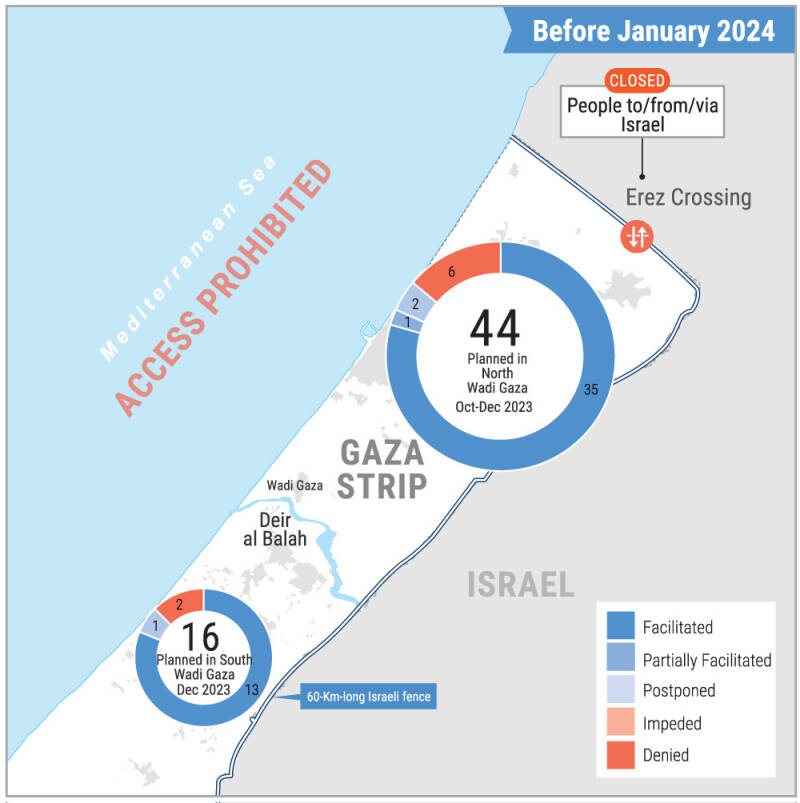
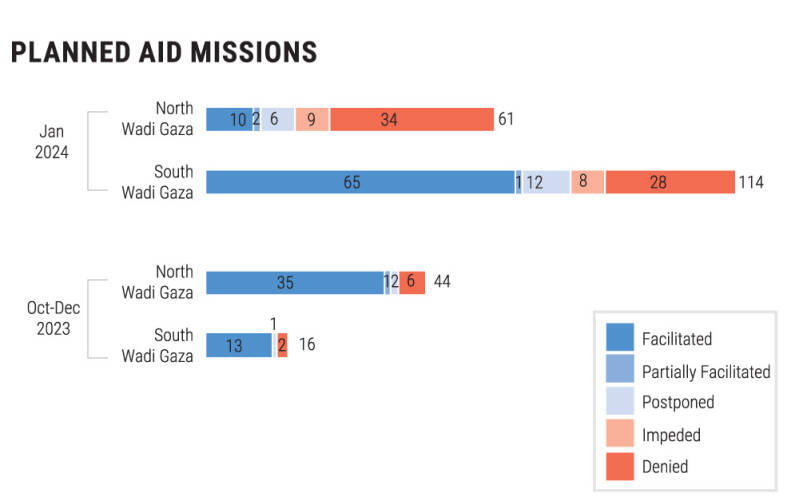


7 februari 2024
This could be a disaster for Palestinians in Gaza — unless we stop it now. Congress is voting this week on proposals to send billions of dollars in new military funding to Israel.
And one of the biggest votes — to decide if Israel will get $14 billion in new military funding to power the ongoing massacre in Gaza — could happen in just a few hours in the Senate.
With more than 30,000 Palestinians killed by Israel in genocidal attacks on Gaza — two-thirds of whom are women and children —we can’t wait to see what happens with this vote.
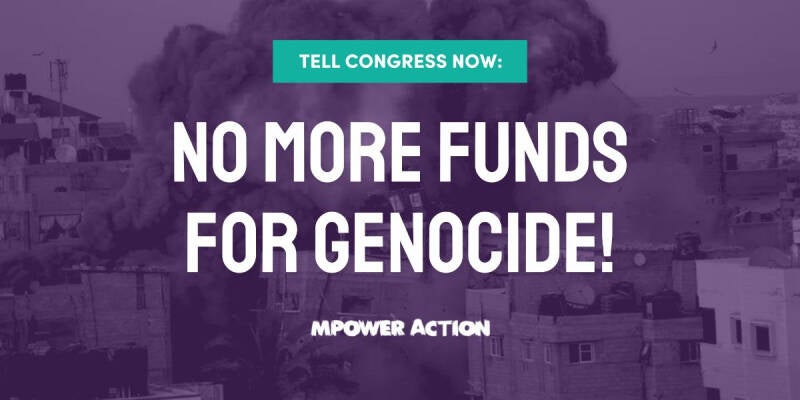
Right now, in Gaza, over two million people are under near-constant attack from above, within a tiny strip of land, much of it 5 or fewer miles across. They are trapped.
At the same time the U.S. makes calls for Israel to ‘limit civilian casualties’ in Gaza, our government sends 2,000-pound "bunker buster" bombs and other heavy artillery that kills Palestinians trapped in Gaza.2
And as this happens, the U.S. is looking to send even more arms to Israel.
Case in point: Biden is urging Congress to approve more than $14 billion in additional military assistance to support Israel’s continued massacres and ethnic cleansing in Gaza.
A key procedural vote in that process is expected to happen in the Senate as soon as today.
Sources:
- “Tweet from Euro-Med Human Rights Monitor,” Feb. 3, 2024.
- “U.S. Sends Israel 2,000-Pound Bunker Buster Bombs for Gaza War,” The Wall Street Journal, Dec. 1, 2023.

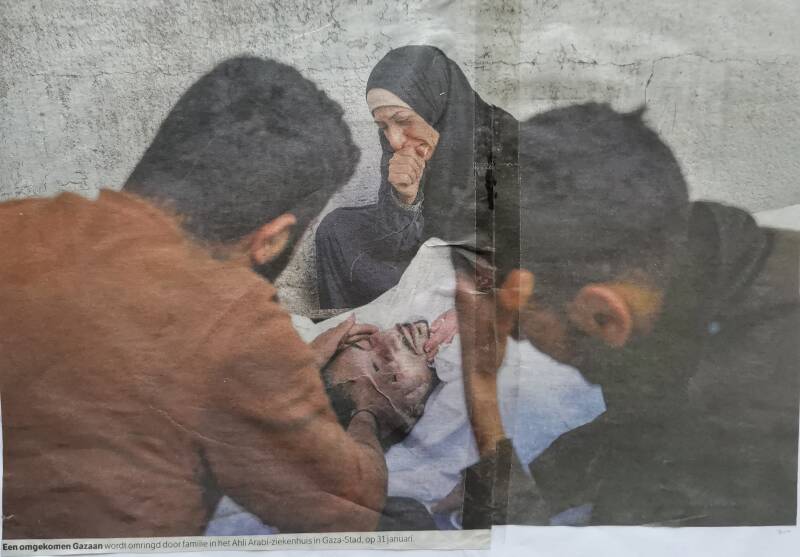
7 februari 2024



7 februari 2024
Scholar and activist Angela Davis joined Frank Barat on Witnessing Palestine to discuss the importance of solidarity with Palestinians as they face genocide in Gaza by Israel
-->Watch on YouTube
Today's headlines
Hamas propose 135-day truce to exchange captives and end war
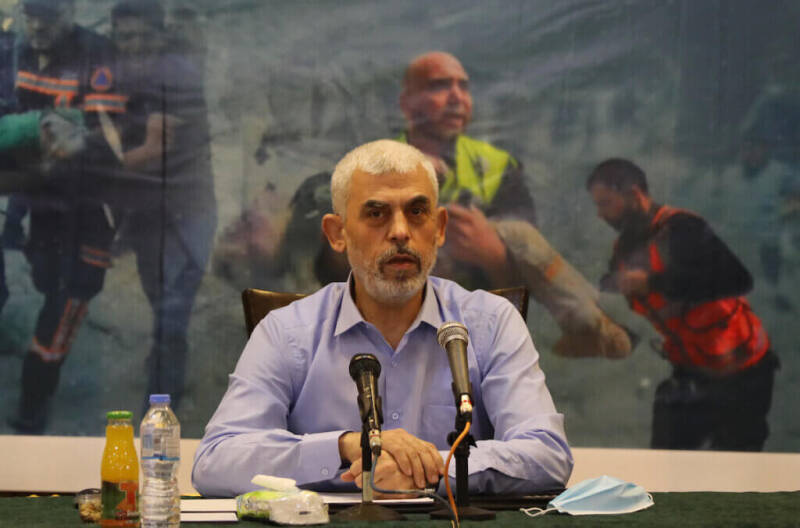
Potential ceasefire deal still at discussion stage, as U.S. President Joe Biden calls Hamas counter-proposal “a little over the top.” Israel continues to bomb Rafah and Khan Younis in Gaza, as Israeli forces raid the West Bank, killing one teenager.
Police violence will not deter our stand for Palestine
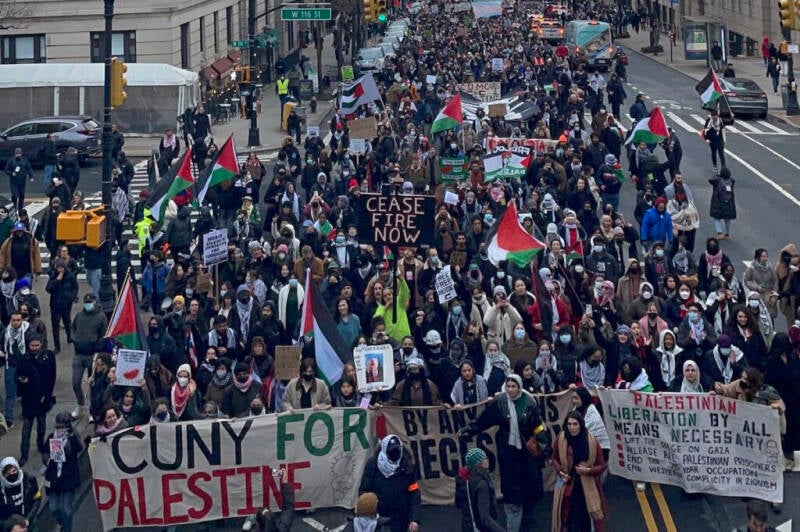
Neither police violence nor university repression will prevent us from resisting Columbia’s complicity in the ongoing occupation of Palestine.
New Senate funding bill would send $14 billion to Israel and cut all funding to UNRWA

A new Senate spending bill supported by the Biden administration would rush $14 billion in military aid to Israel while blocking funding to UNRWA, the United Nations agency for Palestinian refugees.


Hostilities in the Gaza Strip and Israel
Flash Update #111
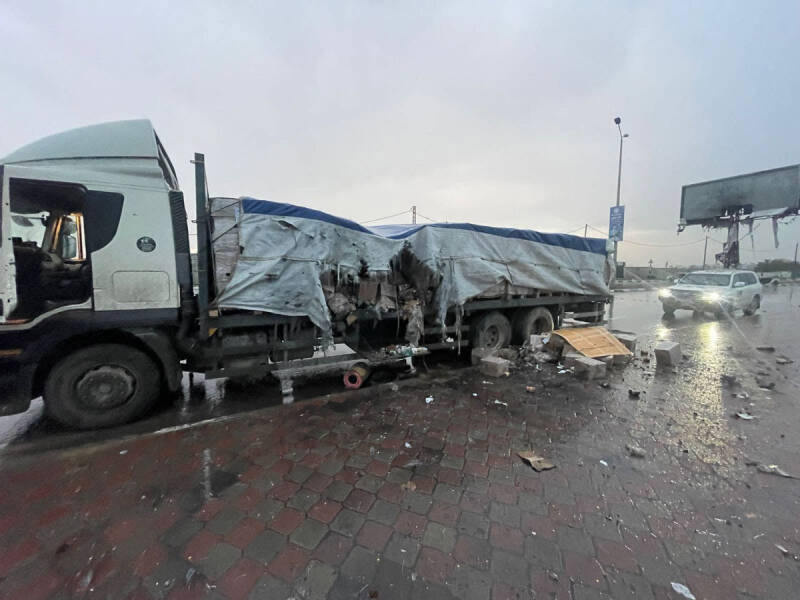
On 5 February, an aid convoy waiting to move to northern Gaza was hit by gunfire, thankfully resulting in no casualties, the Deputy Humanitarian Coordinator reported. Photo by UNRWA
6 februari 2024
Key points
- Intense Israeli bombardment from air, land, and sea continues to be reported across much of the Gaza Strip, resulting in further civilian casualties, displacement, and destruction of civilian infrastructure. Ground operations and fighting between Israeli forces and Palestinian armed groups also continue to be reported across much of Gaza.
- Between the afternoons of 4 and 5 February, according to the Ministry of Health (MoH) in Gaza, 113 Palestinians were killed, and 205 Palestinians were injured. Between 7 October 2023 and 16:00 on 5 February 2024, at least 27,478 Palestinians were killed in Gaza and 66,835 Palestinians were injured, according to the MoH.
- On 4 and 5 February, there were no Israeli soldiers reported killed in Gaza. As of 5 February, 223 soldiers were killed and 1,300 soldiers were injured in Gaza since the beginning of the ground operation, according to the Israeli military.
- As of 5 February, the influx of thousands of internally displaced persons (IDPs) into Rafah continues to be reported, including due to intense fighting in Khan Younis, combined with reports of an increase in strikes in Rafah on 4 and 5 February. In addition to insecurity, IDPs face acute shortages of food, water, shelter and medicine. Describing the dramatic conditions facing IDPs, UNICEF reported on 5 February that most of the newly displaced have 1.5-2 litres of water per day to drink, cook and wash, and highlighted a significant increase in cases of chronic diarrhoea among children. It is estimated that Rafah is already hosting over half of Gaza’s population and five times its population prior to 7 October.
- On 5 February, the Israeli military re-announced evacuation orders that were first issued on 23 and 29 January for residents of specific areas in Khan Younis and Gaza governorates, respectively. Since 7 October 2023, 246 square kilometres, which amount to 67 per cent of the Gaza Strip, have been placed under evacuation orders. This area was home to 1.78 million Palestinians before 7 October and, as of late December 2023, it contained 210 shelters hosting over 770,000 IDPs. It includes all areas north of Wadi Gaza, whose residents were ordered to evacuate in late October, as well as specific areas south of Wadi Gaza slated for evacuation by the Israeli military since 1 December. Overlapping orders are accounted for.
- On 5 February, a convoy waiting to move to northern Gaza was hit by gunfire but there were no casualties, the Deputy Humanitarian Coordinator reported. On 4 February, a group of people waiting for humanitarian aid trucks near Al Kuwaiti roundabout in southern Gaza city were reportedly fired at. This marks the fifth time that shooting allegations on people gathering to obtain humanitarian aid supplies have been reported. In January, 56 per cent of humanitarian aid missions planned for northern Gaza (34 out of 61) and 25 per cent of missions planned for the middle area (28 out of 114) were denied access by the Israeli authorities.
- Health care in Gaza remains extremely precarious, according to the World Health Organization (WHO). For the past two weeks, heavy fighting continues to be reported near Nasser and Al Amal hospitals in Khan Younis, jeopardizing the safety of medical staff, the wounded and the sick, as well as thousands of IDPs seeking refuge at the hospitals. On 5 February, PRCS reported that ICRC had informed them of the approval by the Israeli authorities of a safe passage to enable IDPs who had sought refuge at Al Amal hospital and the PRCS headquarters in Khan Younis to reach Al Mawasi area, also in Khan Younis. On the same day, PRCS reported that hundreds of displaced families began departing “amid an atmosphere of terror and panic due to the ongoing panic and gunfire.” PRCS also reported that the Israeli military summoned three PRCS senior staff including Al Amal Hospital’s Director for interrogation. As of 5 February, the fate of two PRCS staff members and the six-year-old girl they had been dispatched to rescue a week ago remained unknown, PRCS also reported.
- Attacks on schools hosting IDPs continue to be reported. On 5 February, several IDPs taking refuge at a school in Khan Younis were reportedly injured by gunfire. Moreover, in two separate incidents between 1 and 3 February, UNRWA reported that two IDPs sheltering in a school in Khan Younis were killed and many others sustained injuries as a result of shooting and shelling. Overall, as of 3 February, UNRWA reported that at least 282 incidents have impacted its facilities sheltering displaced families. As a result, at least 377 IDPs taking refuge in UNRWA shelters (including schools) have been killed and 1,365 injured since 7 October, the Agency reports. Education Cluster partners are also concerned about reports, videos and pictures showing that schools are being used for military operations, including their use as detention and interrogation centres or as military bases.

Hostilities and casualties (Gaza Strip)
- Among the deadliest incidents reported between the afternoons of 4 and 5 February took place in Deir Al Balah:
- On 5 February, at about 11:30, 7 Palestinians were reportedly killed, and several others injured, when a house in Az Zawayda area of Deir Al Balah was struck.
- On 4 February, at about 13:45, 14 Palestinians were reportedly killed, and 70 others were injured, including children, when two residential buildings in Deir al Balah were struck.
- On 4 February, at about 19:30, 14 Palestinians were reportedly killed, and several others injured, when a residential building in Deir al Balah was struck.
Displacement (Gaza Strip)
- As of 3 February, UNRWA estimates that some 75 per cent of Gaza’s population of 2.3 million people, more than half of whom are children, are displaced. They face acute shortages of food, water, shelter and medicine. Intense fighting around Khan Younis continues to drive thousands of people into the southern town of Rafah. Most are living in makeshift structures, tents, or out in the open, according to UNRWA.
Electricity
- Since 11 October 2023, the Gaza Strip has been under an electricity blackout, after the Israeli authorities cut off the electricity supply, and fuel reserves for Gaza’s sole power plant were depleted. The communications and industrial fuel shutdown continue to significantly hinder people from seeking lifesaving services, as well as the aid community’s efforts to assess and to adequately respond to the deepening humanitarian crisis. For more information on electricity supply to the Gaza Strip, please see this dashboard.
Hostilities and casualties (Israel)
- Over 1,200 Israelis and foreign nationals have been killed in Israel, including 36 children, according to the Israeli authorities, the vast majority on 7 October and in the immediate aftermath.
- As of 5 February 2024, the Israeli authorities estimate that about 136 Israelis and foreign nationals remained captive in Gaza; these reportedly include fatalities whose bodies are being withheld. During the humanitarian pause (24-30 November), 86 Israeli and 24 foreign national hostages were released.
Violence and casualties (West Bank)
- On 5 February, Israeli forces shot and killed a 14-year-old Palestinian boy at the entrance to Al ‘Eizariya town (Jerusalem). Video footage shows that the boy pulled out a knife to stab a Border Police officer who had stopped him before he was shot.
- Since 7 October 2023 and as of 5 February 2024, 373 Palestinians have been killed, including 95 children, in conflict-related incidents across the West Bank, including East Jerusalem, the majority (361) by Israeli forces. Additionally, two Palestinians from the West Bank were killed while carrying out an attack in Israel on 30 November. Between 1 January and 5 February 2024, 64 Palestinians, including at least 14 children, have been killed, the majority by Israeli forces.
- Since 7 October 2023 and as of 5 February 2024, ten Israelis have been killed in conflict-related incidents in the West Bank, including East Jerusalem, and in Israel. These include five Israelis, including four members of Israeli forces, killed in the West Bank, including East Jerusalem; four Israelis killed by Palestinians from the West Bank in Israel, and one Israeli killed by Israeli forces who misidentified him during a Palestinian-perpetrated attack in West Jerusalem.
- Since 7 October 2023 and as of 5 February 2024, 4,415 Palestinians, including 670 children, have been injured in the West Bank, including East Jerusalem. Of them, 4,277 have been injured by Israeli forces, 117 people by settlers and 21 people by either Israeli forces or settlers. Of the total injuries, 54 per cent were reported in the context of search-and-arrest and other operations, 34 per cent in demonstrations and 8 per cent during attacks perpetrated by settlers against Palestinians.
Settler Violence
- Since 7 October 2023 and as of 5 February 2024, OCHA has recorded 506 Israeli settler attacks against Palestinians, resulting in Palestinian casualties (49 incidents), damage to Palestinian-owned property (399 incidents), or both casualties and damage to property (58 incidents).
Displacement (West Bank)
- Since 7 October 2023 and as of 5 February 2024, 503 Palestinians, including 248 children, have been displaced following the demolition of their homes in Area C and East Jerusalem, due to lack of Israeli-issued building permits, which are almost impossible to obtain. Overall in 2023, 892 structures were demolished, sealed off and/or confiscated, due to the lack of Israeli-issued building permits in Area C and East Jerusalem, resulting in the displacement of 1,152 Palestinians, including 575 children. One-fourth of the demolished structures and 52 per cent of the people displaced were in East Jerusalem.
- Since 7 October 2023 and as of 5 February 2024, Israeli forces punitively demolished 22 Palestinian-owned homes, displacing 105 Palestinians, including 45 children. The numbers exceed those reported in the first nine months of 2023, during which 16 homes were punitively demolished and 78 people displaced in that context.
- Since 7 October 2023 and as of 5 February 2024, 780 Palestinians, including 325 children, have been displaced, following the destruction of 123 homes during operations carried out by Israeli forces across the West Bank. About 95 per cent of the displacement was reported in the refugee camps of Jenin, Nur Shams and Tulkarm. This represents 86 per cent of all displacement reported due to the destruction of homes during Israeli military operations since January 2023 (908 people).
Funding
- As of 2 February, Member States have disbursed $700.4 million against the updated Flash Appeal launched by the UN and its partners to implement its response plan in support of 2.2 million people in the Gaza Strip and 500,000 people in the West Bank. This constitutes 57 per cent of the $1.2 billion requested.
- Private donations are collected through the Humanitarian Fund. A private foundation in Australia has donated $2.2 million. Since 7 October, the Humanitarian Fund has disbursed about $55 million.

HUMANITARIAN NEEDS AND RESPONSES: 29 January – 5 February
Health
Needs:
- Primary health services are critically needed in informal shelters across the Gaza Strip.
- There is a need to increase routine immunization coverage as well as the provision of medication for non-communicable diseases, psychotropics, and anaesthesia to address the health needs of the population and prevent the spread of infectious disease.
- Expanding sexual and reproductive health services at the community level is necessary to alleviate overcrowding in maternity hospitals and ensure that women have access to the care they need.
- The establishment of additional field hospitals in different areas of the Gaza Strip is crucial to accommodate the medical needs of the local population.
- People are unable to effectively access healthcare due to the unavailability of laboratory equipment and reagents needed for accurate diagnosis and testing.
- Patients are in need of timely and necessary transfusions, which are hindered due to the unavailability of blood products in hospitals.
Response:
- Since the onset of hostilities, 45 partners have carried out various types of health interventions across Gaza, reaching an estimated 1 million people. There have also been +240,000 primary healthcare consultations.
- The Al-Emirati Maternity Hospital in Rafah received from UNFPA 900 ampoules of oxytocin, five Inter-Agency Emergency Reproductive Health (IARH) kits, and 500 Maternal and Neonatal Health (MNH) kits. This significant donation will greatly enhance the hospital's capacity to provide quality maternal care and support to expectant and new mothers.
- Some 12 Emergency Medical Teams (EMTs) are currently operational. Between 29 January and 5 February, EMTs have treated some 12,000 patients requiring emergency surgeries and treatment for non-communicable diseases and severe acute malnutrition.
Challenges and Gaps:
- The influx of IDPs to Rafah has overwhelmed the available bed capacities in hospitals, leading to insufficient capacity to meet the healthcare needs of the population.
- Response operations by health partners are negatively affected by the displacement of the medical staff, social stresses and telecommunication challenges.
- The high insecurity and limited access to health facilities in the northern and middle governorates continues to present major challenges to partners’ response activities. Furthermore, ongoing fighting and persistent siege of hospitals have severely affected their functionality and accessibility.
- Limited and proper access to WASH facilities is hindering disease prevention services.
Nutrition
Needs:
- Provision of nutrition interventions, including lifesaving supplies in Gaza, is critically needed across the Strip.
- Malnutrition among children, particularly children under-five, and pregnant and breastfeeding women (PBW) remains a significant concern, amid lack of functioning health and WASH systems and deterioration of the food security situation.
Response:
- The nutrition sub-cluster carried out a training on Global mid-upper arm circumference (MUAC) screening for acute malnutrition in children aged 6-59 months. The training covers data management, identification of malnutrition, simplified management of severe and moderate malnutrition, and reporting. Initial findings from MUAC screenings carried out by five partners indicate a sharp increase in acute malnutrition; among 3,604 children screened at three IDP sites and three health facilities, 58 children were diagnosed with severe acute malnutrition (SAM) and 297 with moderate acute malnutrition (MAM).
Challenges and Gaps:
- Ongoing hostilities in Gaza have led to severe food shortages, inadequate WASH facilities, and a breakdown in health services, placing children under-five and PBW at an increasing risk of malnutrition.
- Given available stock and funding, nutrition partners can meet only 25 per cent of the nutritional needs of malnourished children and vulnerable mothers in the next two months. Without immediate funding and an expanded response, 375,000 individuals are at risk of severe undernourishment. Urgent action is crucial to prevent this life-threatening situation.
Food Security
Needs:
- The food security situation in the Middle Area and southern governorate presents an exceptionally challenging scenario. In Khan Younis, most of the population are grappling with extreme hunger.
- The influx of IDPs into Rafah governorate has placed an immense strain on available resources. The overcrowded circumstances have rendered the provision of adequate food assistance to the population particularly challenging, mirroring the exceptionally high population density in the area.
- Vulnerable segments of the population, including children, the elderly, and individuals with underlying health conditions, are particularly susceptible to the risk of malnutrition.
- There is an immediate need to establish uninterrupted and secure humanitarian corridors that facilitate the delivery of essential aid throughout Gaza, potentially involving the engagement of more private-sector trucks.
Response:
- Between 29 January and 4 February, a total of 20 partners engaged in providing food assistance within the Gaza Strip. Around 1.8M people were reached. The geographic breakdown is as follows:
- Rafah Governorate received approximately 33 per cent of the total food assistance.
- Deir al Balah received approximately 27 per cent of the total food assistance.
- Khan Younis received around 17 per cent of the food assistance.
- 13 and 10 per cent reached Northern Gaza and Gaza governorates, respectively.
Challenges and Gaps:
- In the northern Gaza and Gaza governorates, the humanitarian situation has reached an exceedingly critical state, exacerbated by existing restrictions that impede the delivery of essential aid. These constraints have effectively paralysed efforts to address the substantial needs of the population, underscoring the urgent necessity for improved access and support.
- Frequent border closures, imposed restrictions, and security concerns pose obstacles to ensuring a consistent and dependable food supply as well as a safe and efficient operation.
- The deterioration of the situation and escalation of hostilities have substantially damaged critical infrastructure, including roads, electricity, and water supply systems, impeding the efficient distribution of food aid.
- The lack of fuel and cooking gas poses a significant challenge. These resources are indispensable for sustaining humanitarian efforts and ensuring the operation of essential services such as mills and bakeries. Moreover, they provide individuals with the means to prepare the limited food available to them.
Shelter and Non-Food Items (NFI)
Needs:
- It is estimated that over 650,000 people will have no home to return to, and that many more will be unable to return immediately, due to the level of damage to surrounding infrastructure, as well as the risk posed by explosive remnants of war.
- There is a high shortage of all essential NFIs for IDPs inside and outside shelters. The Cluster estimates that about 100,000 families need shelter support, including winterized tents or sealing off kits. Just under 1 million people are estimated to need NFIs.
- Partners estimate that the amount of debris generated by the destruction of residential housing units will exceed 12,000,000 metric tons and will take over four years to remove, given Gaza's current capabilities.
- Displaced people residing in both formal and informal emergency shelters still lack basic NFIs, and hundreds of thousands lack proper and adequate shelter.
- Tents, timber sections, and tarpaulin sheets are highly needed to allow the displaced communities to protect themselves and their children from harsh weather conditions and to minimize overcrowded and unhygienic conditions in the current makeshift shelters.
- The lack of proper informal settlement planning has led to makeshift shelters and tents flooding on rainy days, further exacerbating the suffering of displaced people.
Response:
- During the reporting period, cluster partners distributed about 3,000 bedding items and 5,000 dignity kits in Khan Younis and the Middle Area, as well as 1,500 bedding items in the North, to people who are neither living in UNRWA shelters nor with host families. Since 7 October, Shelter Cluster partners have distributed about 40,000 tents, primarily in Rafah, Khan Younis and the Middle area. An additional 28,000 tents are in the pipeline of cluster partners.
Challenges and Gaps:
- Since many IDPs have been displaced more than once, they are unable to carry their belongings, including NFIs and other shelter materials each time. Therefore, assistance often needs to be redistributed to the same families. Another challenge facing displaced people is the lack of tools to set up their tents and protect them from rain and floods (hand tools are currently not permitted to enter Gaza).
- Due to security concerns and limited access, partners had to restrict the delivery of the assistance mainly to Rafah, Khan Younis and the Middle areas.
- Cluster partners indicate that pricing for SNFIs has risen in regional markets, including high freight rates and shipping costs. Furthermore, partners face persistent challenges in the supply chain, including keeping up with regulations and registration in regional countries.
- Urgent funding is needed to address the key gaps in the supply of shelter and NFIs. As of 2 February, only 26 per cent of the Shelter Cluster funding requirement (209.2M) has been funded.

WASH
Needs:
- Access to safe drinking water for all people, especially among the displaced population and the northern areas of Gaza.
- The accumulation of solid waste on the streets, around hospitals, IDP shelters, and various sites remains a priority concern, as tens of thousands of tons of uncollected public waste are intensifying public health risks. The Municipality of Gaza city estimates that approximately 50,000 tons of solid waste remain unmanaged, exacerbating environmental and health concerns.
- Power supply (fuel) to water and wastewater facilities, primarily decentralized systems (e.g., generators and other electro-mechanical items) is critical.
- Some 2.25 million people need WASH Assistance. Two-thirds of the IDPs are now concentrated in Rafah area and are in need of urgent WASH response.
Response:
- Over 2 million people have been reached through partial WASH assistance.
- Mekorot Connection: Bani-Saeed water supply is currently producing 6,000 m3 per day (250 m3 per hour capacity) which is 42 per cent of its full capacity. Assessments and plans are in place for repairing the Bani Suhaila pipeline, with the main challenges being safe access, communication, and coordination of the repair activities.
- Two out of out of three desalination plans are partially operating: the Middle Area plant produces an average of 1,500 cubic meters per day (distributed via water trucking) and the South Gaza desalination plant produces 1,700 cubic meters per day (around 600 m3 are distributed via water trucking and 1,100 via the water network).
- The UAE's small desalination plant that is located in Egyptian Rafah, currently operates at full capacity, providing 2,400 cubic meters per day. This has been achieved after constructing a 3-kilometer transmission line extending the intake point to the Saudi Water reservoir and other filling points for tankers and tap-stands.
Challenges and Gaps:
- Flooding has been a significant issue; for example, the area around Pumping Station 7B is currently inundated, posing a potential hygienic crisis in the vicinity of the station. This is further compounded by fuel shortage, which impedes the operation of sewage stations, raising environmental and public health alarms, where there is restricted access to essential sanitation supplies and services. Reports of the local population coming into direct contact with sewage-contaminated floodwaters in the streets are deeply troubling. This also requires technical assessments to estimate damage and the size of the affected population.
- The heightened public health risk is further intensified due to an acute scarcity of vital hygiene materials and substandard sanitation infrastructure. While there has been no surge in numbers, persistent reports of Hepatitis A cases in Gaza, as recorded by UNRWA and the Health Cluster, highlight the ongoing health predicaments amid water shortages and worsening sanitation.
- The absence of testing laboratories in Gaza for specimen analysis is challenging. Exploring the possibility of referring samples to Egypt is under consideration to gain a more precise insight into the epidemiological conditions in Gaza.
- The constraints of the clearance and transport of the dual-use items into Gaza remain a limiting factor of the overall WASH response.
Education
Needs:
- More than 625,000 students and nearly 23,000 teachers in the Gaza Strip have been affected by school closures and attacks on education, with no access to education or a safe place.
- According to the Ministry of Education, as of 30 January, more than 4,660 students and 239 educational staff have been killed and more than 8,109 students and 756 teachers have been injured in the Gaza Strip since 7 October.
- Some 92 per cent of all school buildings in Gaza are being used as shelters for IDPs and/or have sustained varying levels of damage. Some 390 schools (78.8 per cent of the total school buildings in Gaza) sustained damage, including 140 schools that sustained major damage or were fully destroyed. Combined, these schools previously served some 433,000 children and more than 16,200 teachers. The North, Gaza, and Khan Younis governorates have been especially impacted, accounting for 76 per cent of all damaged schools (source: Education Cluster Damaged School Dashboard.)
- Education partners are concerned about reports, videos and pictures showing that schools are being used for military operations, including their use as detention and interrogation centres, or as military bases.
- Key priorities include the provision of Education in Emergencies (EiE) recreational activities and psychological support, including Social Emotional Learning (SEL) activities to children in shelters and designated emergency shelters (DESs); establishing Temporary Learning Spaces (TLS) in shelters/DESs to start non-formal learning for children; provision of emergency supplies and learning kits. In addition, a key need is the identification and support of children with disabilities and other needs, with assistive devices for continuity of learning.
Response:
- Since October 2023, eleven partners have reached more than 131,000 students and teachers (source: Education Cluster 5W dashboard) with psychosocial support, emergency learning, recreational supplies and activities, and awareness sessions in the Deir al Balah, Khan Younis, and Rafah governorates. Most of the cluster responses are delivered by local partners.
- UNICEF with three of its partners and Teacher Creativity Centre are working on establishing TLS to start non-formal education activities with displaced children in shelters/DESs.
- The Education and the Shelter clusters are jointly carrying out advocacy activities to highlight the devastating impacts of the current situation in Gaza on children and the inextricable links between shelter and schooling.
Challenges and Gaps:
- No activities have been undertaken in the North Gaza and Gaza governorates due to ongoing hostilities and access challenges.
- As of 28 January, the education response remains significantly underfunded, receiving less than 10 per cent of its requirements. Urgent funding is required to meet immediate response requirements.
Emergency Telecommunications
Needs:
- Recurrent telecommunications shutdown in the Gaza Strip restricts people from accessing life-saving information and impedes other forms of humanitarian response.
Response:
- The Emergency Telecommunications Cluster (ETC) continues its presence in Gaza since 09 January supporting humanitarian responders with ICT assessments, technical advice and information, repairs, and guidance on the use of ICT equipment.
- Since 3 November, the ETC continues to engage with the Israeli Coordinator of Government Activities in the Territories (COGAT) for authorization to import all essential telecommunications equipment into Gaza and provide independent access to communications for humanitarian responders.
- On 30 January, the ETC assessed the network signal coverage of the Very High Frequency (VHF) digital radio security communications system (SCS) which operates using the VHF Rafah repeater installed at Al Shaboura Clinic. Although the signal coverage is good in Rafah city, the SCS remains non-operational due to the incompatibility between the VHF/HF handheld radio antennae and the digital repeater system. The ETC is collaborating with UNDSS to procure compatible radio antennae and a solar power solution for the SCS.
Challenges and Gaps:
- Limited access to electricity, fuel, and telecommunications services continues to hamper the humanitarian response in Gaza.
- Importation of telecommunications equipment into Gaza is lengthy and extremely challenging.
Logistics
Response:
- The Logistics Cluster has launched common transport services for the route: Amman to Rafah via King Hussein Bridge and convoy coordination services for the route Amman to Rafah via Aqaba-Nuweiba. Details on the support and services provided by the Logistics Cluster are available in the Standard Operating Procedures.
- A consolidation warehouse in Amman is now operational for the pre-positioning of cargo. The facility is bonded and temperature-controlled with 1,300 pallet positions, and a capacity to further increase the storage space.
- The Logistics Cluster held a warehouse management training for humanitarian organisations` personnel on the ground in Gaza, including UN agencies and international NGOs.
- Partners continue facilitating access to temporary storage, transport, and cargo notification transshipment services. As of 4 February 2024, the Cluster has stored 5,142 metre cubic of cargo on behalf of 16 organizations in Gaza. In Gaza, 1,470 square metres of temporary storage is available in Rafah, and 800 pallet positions in a non-bombed warehouse in Port Said, Egypt.
- In the Gaza Strip, the Logistics Cluster has installed and handed over 18 Mobile Storage Units (MSUs), of which 12 are operational (3,840 metre square). In Al Arish, Egypt, so far, the Logistics Cell augmented the ERC storage capacity by 3,840 square metres with the installation of 12 MSUs.
Challenges and Gaps:
- Persisting challenges include storage and transportation across the Gaza Strip, including temperature-controlled storage. The Logistics Cluster is procuring additional Mobile Storage Units (MSUs), which will be available to humanitarian partners to augment their storage capacities and in the event of a scaled-up assistance.
- Partners are collecting the pipeline for incoming cargo through the Egypt and Jordan corridors for the coming three months; this is a key exercise for operational planning, to understand available resources, and allocate them based on prioritization.
Multi-Purpose Cash Assistance (MPCA)
Response:
- Some 121,000 households are estimated to have received one round of emergency MPCA since the start of the hostilities, while another 35,000 people (including people with disabilities and nursing mothers) have received a top-up and close to 1,800 households have received a second round.
- Around 85,000 households have cashed out their assistance since 7 October. Even under a normal year where people are expected to have alternative income sources, this package only lasts for a household for up to one month. This also does not consider market collapse and price volatility experienced under the current in-extremis circumstances. Therefore, this assistance falls far below the needs on the ground.
- From the last round of post-distribution monitoring data conducted between the third week of December and mid-January, food remains the most purchased item with humanitarian cash (98 per cent), followed by medicines (31 per cent), debts repayment (21 per cent), water, hygiene products, and transportation. The percentage of respondents reporting that the assistance helped them accessing needed basic goods and services at that specific time is about 70 per cent.
Challenges:
- Challenges of electricity and connectivity is affecting the Financial Service Providers to make cash accessible. People’s ability to retrieve even that one round of MPCA package received remains largely compromised, with nearly 2,600 families having never been able to retrieve the assistance.
- While informal markets are the only source of accessible goods, the scant number of trucks that were sporadically reported to have been entering the city (607 trucks until 19 January 2024) have now stopped, exacerbating the complexity of obtaining essential goods.


Isra and Mi’raj & the Fight for Al-Aqsa
6 februari 2024
This year the anniversary of Isra and Mi'raj comes as the Gaza Strip is facing a genocide, and brutal Israeli attacks are escalating in the West Bank. As many commemorate this miraculous night journey from Mecca to Al-Aqsa and mi’raj directly to the heavens, we are reminded why Palestine is sacred to Muslims and why the fight for Palestine implicates all Muslim people through our holiest sites and the anti-Muslim racism inherent to the Israeli regime’s violence.
The event holds great weight in Islam and among Muslims. On that night, leadership of all the prophets was conferred upon the Prophet Muhammad (peace be upon him) when he led in prayer all the messengers and prophets before him in Al-Aqsa Mosque – inheriting a message of justice and truth which all of them upheld (Al-Ḣadīd : 25). Muslim scholars view this event as a realization of previous covenant prophets made with God (Āli ‘Imran : 81).
Today, not only are the people of that blessed land of the prophets suffering a brutal genocide, but Al-Aqsa Mosque is also subjected to repeated attacks and attempts to Judaize it and the surrounding neighborhoods – and compromise its Islamic sanctity. Since October, more than 27,000 thousand Palestinians have been killed by the Israeli regime, more than 70% of them women and children; more than 65,000 Palestinians have been injured; and more than 1.9 million are displaced in the Gaza Strip–unfortunately, with the support and complicity of the U.S. government.
We call on imams and religious leaders to devote this Friday’s sermon to talk about the meanings of the Isra and Mi'raj; to link it to the genocide Israel is waging against the Palestinian people in the West Bank and Gaza Strip; and to remind our community of the dangers that threaten Al-Aqsa Mosque, the first qibla of Muslims, the second mosque in terms of establishment, and the third of the three holy sanctuaries in Islam.
We also call on them to devote this Thursday evening to commemorating the Isra and Mi'raj and to make Dua El Qunoot [دعاء القنوت] for the Palestinian people who are subjected to the most horrific crimes of genocide in the modern era.


Today's headlines
New testimonies emerge of Israel torturing detained Palestinians in Gaza

6 februari 2024
Euro-Med publishes new testimonies of Palestinian detainees subjected to dog attacks, forced nudity, and sexual harassment in Israeli jails, as Israeli soldiers continue posting images and videos of themselves committing atrocities in Gaza.
Activists establish protest camp outside Antony Blinken’s home as demonstrations escalate against the Biden administration

Activists are camped outside Antony Blinken's home to bring the call for a Gaza ceasefire directly to the Secretary of State's doorstep. The protest is part of an escalating wave of protest directed squarely at the Biden administration.
Biden Executive Order on West Bank violence more likely to be used against Palestinians than Israeli settlers
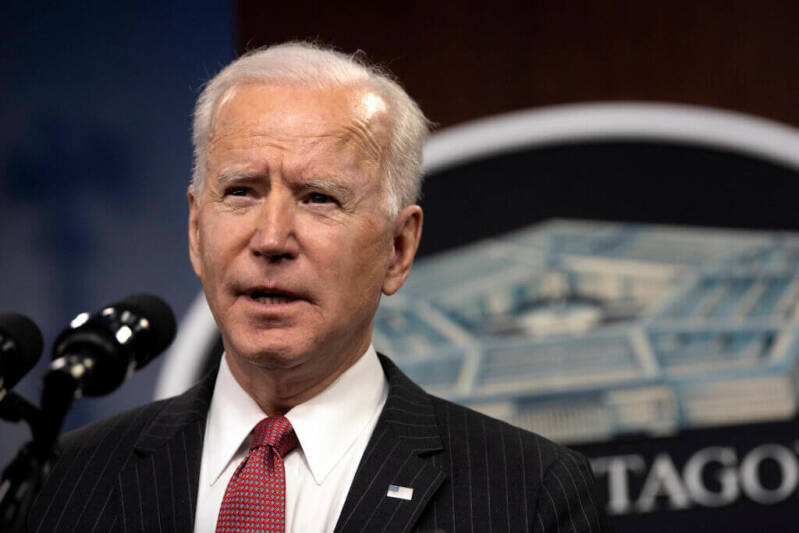
Joe Biden’s Executive Order targeting those “undermining peace, security, and stability in the West Bank” is too narrow to address Israeli settler violence, yet so broadly written it will likely be used disproportionately against Palestinians.


Today's headlines
Endless killings and despair in Gaza
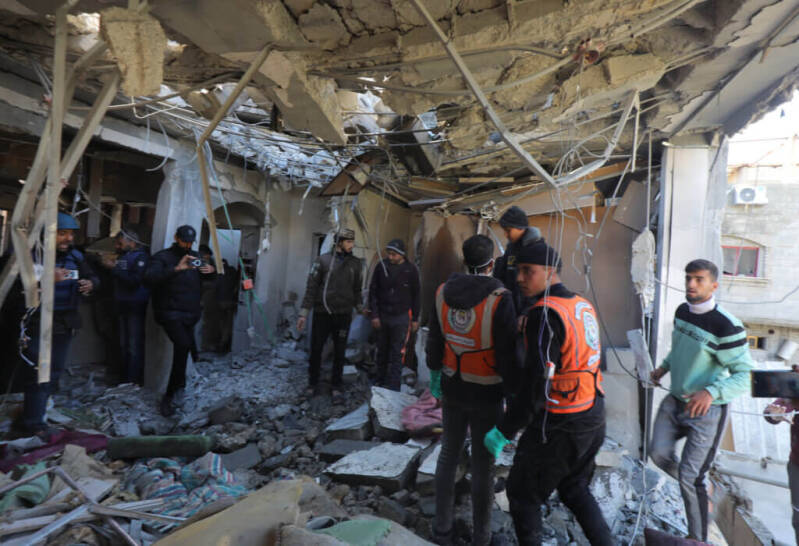
5 februari 2024
Biden urges Congress to "swiftly pass" a $118bn bipartisan deal that includes $14.1bn in military aid to Israel after the ICJ ordered Israel to halt its ongoing attacks on civilians in Gaza.
Honor the Palestinian trade union picket line by rescinding UAW’s undemocratic endorsement of Genocide Joe Biden
UAW Labor for Palestine
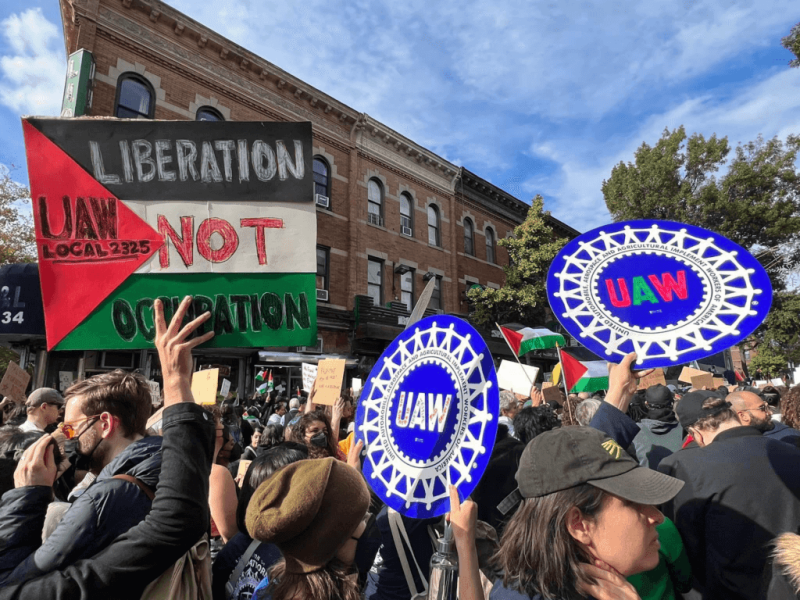
Endorsing Joe Biden's re-election is in direct violation of the UAW’s December 1 call for ceasefire in Gaza and UAW President Shawn Fain’s claims to uphold justice in and beyond the workplace.
The ‘Guardian’ exposes how CNN slants the Gaza news
James North

The Guardian reveals CNN’s pro-Israel bias is no accident, but a conscious and complex effort directed from the very top of the network.
Following months of citywide protests, Chicago becomes largest U.S. city to call for Gaza ceasefire
Khadija Quadri Al Jilani
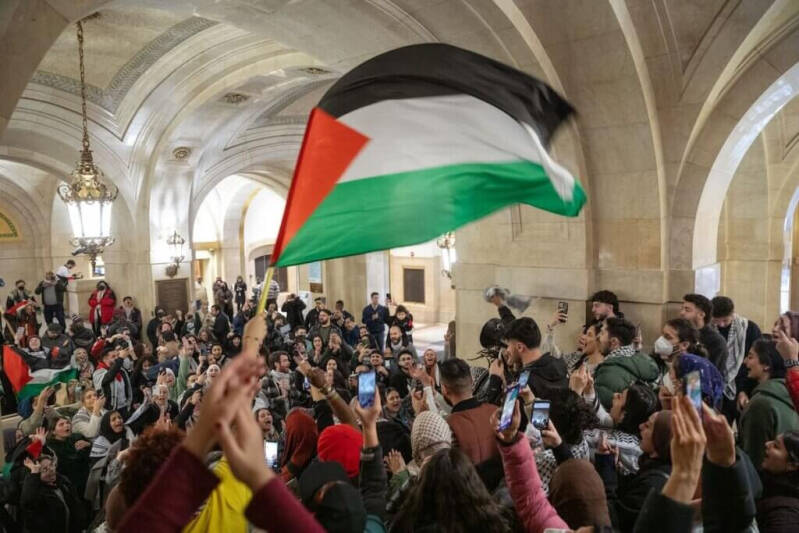
Following months of large-scale protests, extensive outreach to alders, and organized efforts by Pro-Palestinian advocates, on January 31, Chicago became the largest U.S. City to pass a resolution calling for a ceasefire in Gaza.
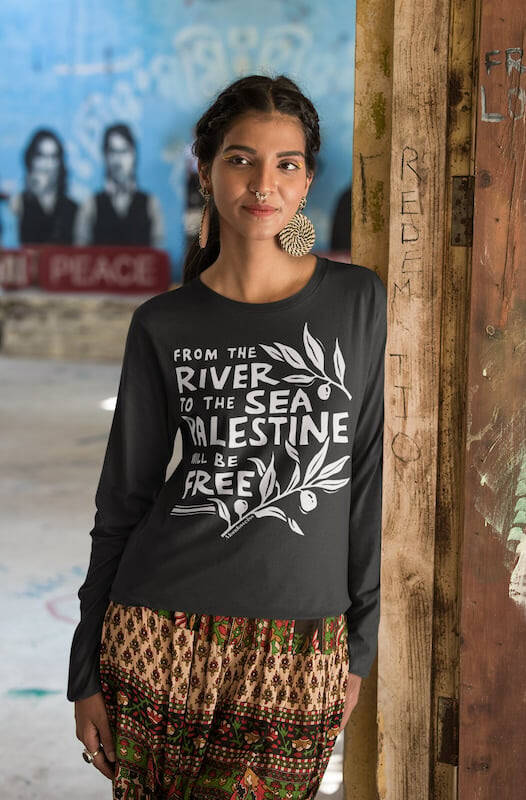


Hostilities in the Gaza Strip and Israel
Flash Update #110
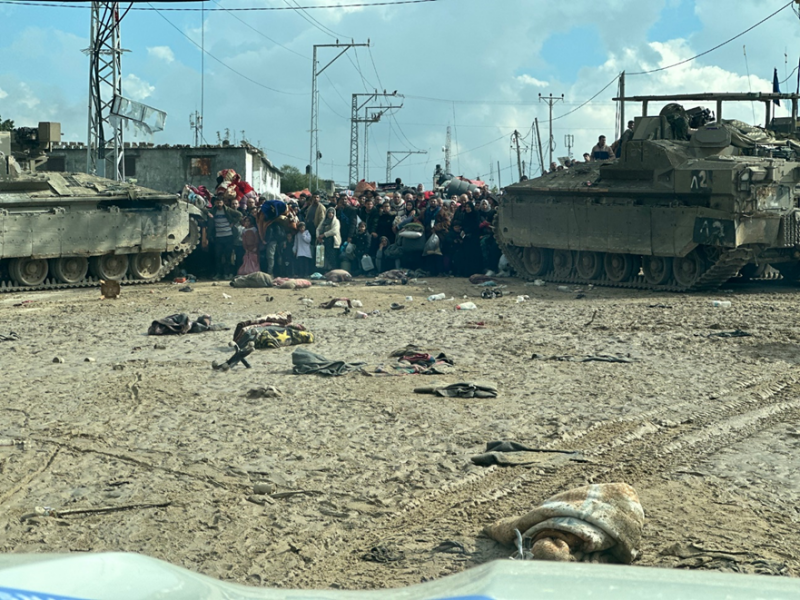
Displaced Palestinians squeezed between two tanks. They are waiting their turn to cross an Israeli checkpoint leading to Rafah governorate, southern Gaza, as hostilities continue in Khan Younis and following evacuation orders. Photo by OCHA/Olga Cherevko
5 februari 2024
Key points
- Intense Israeli bombardment from air, land, and sea continue to be reported across much of the Gaza Strip between 3 and 4 February, resulting in further civilian casualties, displacement, and destruction of civilian infrastructure. Ground operations and fighting between Israeli forces and Palestinian armed groups also continue to be reported across much of Gaza.
- Between the afternoons of 2 and 4 February, according to the Ministry of Health (MoH) in Gaza, 234 Palestinians were killed (107 people on 3 February, and 127 people on 4 February), and 343 Palestinians were injured (165 people on 3 February, and 178 people on 4 February). Between 7 October 2023 and 13:30 on 4 February 2024, at least 27,365 Palestinians were killed in Gaza and 66,630 Palestinians were injured, according to the MoH.
- Between 2 and 4 February, one Israeli soldier was reportedly killed in Gaza. As of 4 February, 223 soldiers were killed and 1,296 soldiers were injured in Gaza since the beginning of the ground operation, according to the Israeli military.
- As of 31 January, according to UNRWA, there are an estimated 1.7 million internally displaced persons (IDPs) in the Gaza Strip; UNICEF estimates that these include some 17,000 children who are unaccompanied or separated, “each one, a heartbreaking story of loss and grief.” According to UNICEF, almost all of Gaza’s 1.2 million children are in need of mental health and psychosocial support (MHPSS), twice as many children as compared with pre-war estimates. UNICEF states that the only way to deliver MHPS “at scale is with a ceasefire. Before this war, in 2022, the child protection cluster led by UNICEF provided this support to nearly 100,000 children. It is possible to scale up now. We have done it before. But it is not possible under the current security and humanitarian conditions.”
- Health care in Gaza remains extremely precarious, according to the World Health Organization (WHO). As of 30 January, only 13 out of 36 hospitals (36 per cent) in Gaza are functional, but only partially; seven in the north and six in the south. Heavy fighting continues to be reported near Nasser and Al Amal hospitals in Khan Younis, jeopardizing the safety of medical staff, the wounded and the sick, as well as thousands of IDPs seeking refuge at the hospitals. On 3 February, at about 21:40, hostilities were reported in the vicinity of the Gaza European Hospital, east of Khan Younis, where one Palestinian was reportedly killed, six were injured and damage caused to the hospital.
- On 2 February, the International Federation of Red Cross and Red Crescent Societies (IFRC) expressed their shock at the recent killing of three members of the Palestine Red Crescent Society (PRCS) in Gaza. One staff member and one volunteer were killed near the gate of the Al Amal Hospital on 31 January and another staff member was killed on 2 February at the PRCS headquarters, in the same compound as the Al-Amal hospital. The deaths followed several days of shelling and fighting around the hospital, which hindered access to the facility and created panic and distress among patients and thousands of displaced people. According to PRCS, three IDPs were also killed in the compound due to hostilities on 2 February. The IFRC reiterated that “under International Humanitarian Law, hospitals, ambulances, healthcare workers, and their patients must be respected and protected in every situation.” Since 7 October, the IFRC network has had a total of 14 of its members killed, comprising eleven PRCS staff and volunteers, killed in Gaza, and three from Israel’s Magen David Adom, killed in Israel.
- On 3 February, the PRCS reported that the fate of two staff members in the ambulance team that had been dispatched on 29 January to rescue a six-year-old girl in Gaza city remained unknown as does the whereabouts of the child the PRCS workers were dispatched to rescue after the vehicle she was in was struck, killing her family members.
- On 2 February, the organization Humanity and Inclusion (HI) reported that its office located in Gaza city, has been destroyed in a bomb strike on 31 January 2024. No alert or warning was given to HI and no staff were present at the time. The coordinates of the building had been communicated to the notification system put in place by the UN and Israeli forces to avoid the inadvertent targeting of humanitarian premises. The HI Regional Director in Middle East expressed his deep concern, “about the pattern of the past months of destroying civilian buildings where NGOs have their offices, schools or civilian’s houses. It’s again the demonstration that nowhere in Gaza is safe. This must stop, and an immediate, long-lasting ceasefire is the only solution."
- There are reports of significant destruction to residential blocks across Gaza, particularly in Khan Younis, by Israeli forces. On 2 February, the destruction of residential blocks were reported in Al Sabra neighbourhood, Gaza city, and also two blocks in southern and eastern Khan Younis. On 3 February, a residential block was reportedly destroyed in central Khan Younis. No casualties were reported in the incidents.
Hostilities and casualties (Gaza Strip)
- The following are among the deadliest incidents reported between 2 and 4 February:
- On 2 February, at about 14:00, eight Palestinians were reportedly killed, after residential buildings in western Khan Younis were fired upon.
- On 2 February, at about 14:20, four Palestinians were reportedly killed in An Nemsawi, southern Khan Younis, after tank shells were reportedly fired towards a group of people.
- On 3 February, at about 00:10, at least 11 Palestinians were reportedly killed, and 27 other injured, including women, children and elderly, after a residential building near An Najjar hospital, in eastern Rafah, was struck.
- On 3 February, at about 1:15, four Palestinians were reportedly killed, after a residential building in eastern Rafah was struck.
- On 3 February, at about 16:20, a residential building in Bani Suheila, east of Khan Younis was struck. Over 20 Palestinians reportedly remain under the rubble as ambulances and civil defence crews are unable to reach them due to ongoing fighting.
- On 3 February, at about 16:45, five Palestinians, including one child, were reportedly killed, and 13 others were injured, after a residential building in east of Rafah city was struck.
Displacement (Gaza Strip)
- Some 75 per cent of Gaza’s population of 2.3 million people, more than half of whom are children, are displaced according to UNRWA’s estimates. They face acute shortages of food, water, shelter and medicine. Intense fighting around Khan Younis continues to drive thousands of people into the southern town of Rafah, which is already hosting over half of Gaza’s population. Most are living in makeshift structures, tents, or out in the open, according to UNRWA.

Humanitarian Access (Gaza Strip)
- In January, ten of the 61 humanitarian aid missions planned for the north of Wadi Gaza (16 per cent) were facilitated by the Israeli authorities, two (3 per cent) were partially facilitated, 34 missions (56 per cent) were denied access, and six (10 per cent) were postponed by aid organizations due to internal operational constraints. In an emerging pattern, the access of an additional nine missions (15 per cent) was initially facilitated, but subsequently impeded as routes designated by the Israeli military proved to be unpassable, or due to the imposition of excessive delays prior to the departure of the missions or at checkpoints en route. Facilitated missions primarily involved food distribution, while the access of missions to support critical hospitals and facilities providing water, sanitation and hygiene (WASH) services remained largely denied.
- According to WHO, 1,243 medical cases including wounded people and those suffering from pre-existing medical conditions, along with 1,025 companions, have been evacuated from Gaza via Rafah as of 30 January; these include people who are receiving treatment in Egypt and other countries.
Electricity
- Since 11 October 2023, the Gaza Strip has been under an electricity blackout, after the Israeli authorities cut off the electricity supply, and fuel reserves for Gaza’s sole power plant were depleted. The communications and industrial fuel shutdown continue to significantly hinder people from seeking lifesaving services, as well as the aid community’s efforts to assess and to adequately respond to the deepening humanitarian crisis. For more information on electricity supply to the Gaza Strip, please see this dashboard.
Hostilities and casualties (Israel)
- Over 1,200 Israelis and foreign nationals have been killed in Israel, including 36 children, according to the Israeli authorities, the vast majority on 7 October and in the immediate aftermath.
- As of 2 February 2024, the Israeli authorities estimate that about 136 Israelis and foreign nationals remained captive in Gaza; these reportedly include fatalities whose bodies are being withheld. During the humanitarian pause (24-30 November), 86 Israeli and 24 foreign national hostages were released.
Violence and casualties (West Bank)
- Since 7 October 2023 and as of 4 February 2024, 372 Palestinians have been killed, including 94 children, in conflict-related incidents across the West Bank, including East Jerusalem. Additionally, two Palestinians from the West Bank were killed while carrying out an attack in Israel on 30 November. Of these 372 fatalities, 360 were killed by Israeli forces, eight by Israeli settlers and two by either Israeli forces or settlers. The other two Palestinians, including a woman holding Israeli citizenship, were killed in an attack by Palestinians on 7 January 2024, reportedly because they had been mistaken for Israeli settlers. So far as of 4 February 2024, 63 Palestinians, including at least 13 children, have been killed, the majority by Israeli forces.
- Since 7 October 2023 and as of 4 February 2024, ten Israelis have been killed in conflict-related incidents in the West Bank, including East Jerusalem, and in Israel. These include five Israelis, including four members of Israeli forces, killed in the West Bank, including East Jerusalem; four Israelis killed by Palestinians from the West Bank in Israel, and one Israeli killed by Israeli forces who misidentified him during a Palestinian-perpetrated attack in West Jerusalem.
- Since 7 October 2023 and as of 4 February 2024, 4,408 Palestinians, including 669 children, have been injured in the West Bank, including East Jerusalem. Of them, 4,270 have been injured by Israeli forces, 117 people by settlers and 21 people by either Israeli forces or settlers. Of the total injuries, 54 per cent were reported in the context of search-and-arrest and other operations, 34 per cent in demonstrations and 8 per cent during attacks perpetrated by settlers against Palestinians. Some 33 per cent of those injuries have been caused by live ammunition, compared with 9 per cent in the first nine months of 2023.
Settler Violence
- Since 7 October 2023 and as of 4 February 2024, OCHA has recorded 498 Israeli settler attacks against Palestinians, resulting in Palestinian casualties (49 incidents), damage to Palestinian-owned property (391 incidents), or both casualties and damage to property (58 incidents). In 2023, 1,264 attacks carried out by Israeli settlers in the West Bank, including East Jerusalem (with or without Israeli forces), resulted in Palestinian casualties, Palestinian-owned property damage or both. Some 945 incidents resulted in material damage, 165 incidents resulted in casualties and 154 resulted in both material damage and casualties. This is the highest number of settler attacks against Palestinians in any given year since OCHA started recording incidents involving settlers in 2006.
- On 3 February, Israeli settlers, accompanied by Israeli forces, raided the ‘Ein al ‘Auja community in Jericho, shot live ammunition, and attacked residents with bats and stones, injuring a man in the head with a stone. The settlers also stole a Palestinian-owned sheep and vandalized at least six Palestinian-owned vehicles. Israeli forces also detained and physically assaulted two Palestinians.
Displacement (West Bank)
- Since 7 October 2023 and as of 4 February 2024, at least 198 Palestinian households comprising 1,208 people, including 586 children, have been displaced amid settler violence and access restrictions. The displaced households are from at least 15 herding/Bedouin communities. More than half of the displacement occurred on 12, 15, and 28 October, affecting seven communities. The displacement toll since 7 October 2023, represents 78 per cent of all displacement reported due to settler violence and access restrictions since 1 January 2023 (1,539 people, including 756 children).
- Since 7 October 2023 and as of 4 February 2024, 503 Palestinians, including 248 children, have been displaced following the demolition of their homes in Area C and East Jerusalem, due to lack of Israeli-issued building permits, which are almost impossible to obtain. Overall, in 2023, 892 structures were demolished, sealed off and/or confiscated, due to the lack of Israeli-issued building permits in Area C and East Jerusalem, resulting in the displacement of 1,148 Palestinians, including 575 children. Some 39 per cent of people displaced occurred between October and December 2023.
- Since 7 October 2023 and as of 4 February 2024, Israeli forces punitively demolished 22 Palestinian-owned homes, displacing 105 Palestinians, including 45 children. The numbers exceed those reported in the first nine months of 2023, during which 16 homes were punitively demolished and 78 people displaced in that context.
- Since 7 October 2023 and as of 4 February 2024, 779 Palestinians, including 324 children, have been displaced, following the destruction of 123 homes during operations carried out by Israeli forces across the West Bank. About 95 per cent of the displacement was reported in the refugee camps of Jenin, Nur Shams and Tulkarm. This represents 86 per cent of all displacement reported due to the destruction of homes during Israeli military operations since January 2023 (908 people).
Funding
- As of 2 February, Member States have disbursed $700.4 million against the updated Flash Appeal launched by the UN and its partners to implement its response plan in support of 2.2 million people in the Gaza Strip and 500,000 people in the West Bank. This constitutes 57 per cent of the $1.2 billion requested.
- Private donations are collected through the Humanitarian Fund. A private foundation in Australia has donated $2.2 million. Since 7 October, the Humanitarian Fund has disbursed about $55 million.
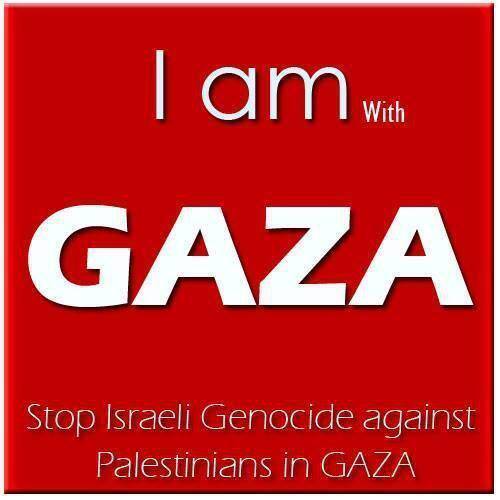
HUMANITARIAN NEEDS AND RESPONSES: 21-28 January
Health
Needs:
- Primary health services are critically needed in informal shelters across the Gaza Strip. In addition, routine immunization, sexual and reproductive care, and medication for non-communicable diseases and psychotropics are essential to address the population's medical needs. Establishing field hospitals in different areas of the Gaza Strip will be a crucial enabler to accommodate the local population's medical needs.
- Some 6,000 patients are still on the waiting list to be evacuated outside of Gaza for tertiary medical care.
- There is an urgent need for laboratory equipment and reagents to enable accurate diagnosis and testing; blood products to support medical procedures and surgeries; and a humanitarian corridor for referral of critical patients from Nasser Hospital to the Jordanian field hospital in Khan Younis.
- Health facilities, including hospitals, urgently need fuel, medical supplies, and food to continue to provide medical services across the Gaza Strip.
Response
- Since the start of hostilities, in Gaza, 25 partners have established presence and have provided health services to over 500,000 people.
- Some 12 Emergency Medical Teams (EMTs) are currently operational, with two additional teams scheduled to arrive next week. As of end of January 2024, these EMTs have treated some 12,410 patients requiring emergency surgeries and treatment for non-communicable diseases and severe acute malnutrition.
- During the reporting period, 53 patients, including 15 critical cases, were successfully evacuated from UNRWA’s Khan Younis Training Centre.
- The International Medical Corps (IMC) Field Hospital has now expanded its health services to include a maternity ward and pediatrics unit.
- In the West Bank, mobile clinics have provided healthcare services to about 83,000 Palestinians in 86 communities. Health partners are planning to provide primary healthcare via mobile clinics to more than 25,000 Palestinians across 36 communities in early February.
Challenges and Gaps:
- In Gaza, the escalation of hostilities in Khan Younis has resulted in a significant increase in attacks against the few remaining partially and minimally functional health facilities and an increase in the number of IDPs seeking refuge in Rafah.
- Ongoing fighting in the vicinity of Al Amal and Al Kheir hospitals have severely affected their functionality and accessibility. Al-Kheir hospital, a critical facility for maternal and newborn care, is currently non-operational due to extensive damage.
WASH
Needs
- People in Gaza do not have access to adequate quantity and quality of water hygiene materials, which has consequences on their wellbeing, including physical health and wellbeing.
- The accumulation of solid waste on the streets, around hospitals, IDP shelters, and various sites remains a priority concern, as tens of thousands of tons of uncollected public waste are intensifying public health risks. The Municipality of Gaza city estimates that approximately 50,000 tons of solid waste remain unmanaged, exacerbating environmental and health concerns.
Response
- About 23,000 cubic metres of water per day were accessible through water lines, municipal wells, as well as trucking and bottled water (estimated 10,000 cubic metres) between 22 and 28 January
- Some 6,000 cubic metres of water per day were accessible through the only functional Israeli water pipeline, in contrast to close to 53,000 cubic metres that used to be available through all pipelines prior to the current hostilities.
- Some 3,200 cubic metres were accessible through the short-term desalination plants each day, in contrast to the pre-hostilities period when 22,000 cubic metres were available daily.
- Some 2,500 cubic metres of water is accessible through the municipal wells daily, while the production capacity was up to 255,000 cubic metres each day.
- The UAE's small desalination plant located on the Egyptian side of Rafah continues to operate below capacity, providing 1,140 cubic metres per day out of a possible 2,400 cubic metres. All desalinated water from this plant is distributed via tankers.
- The construction of a 3-kilometre transmission line extending to the Saudi Water Reservoir within the Philadelphia corridor is underway and expected to be completed in early February.
Challenges and Gaps
- In Gaza, due to access restrictions, humanitarian partners have been unable to assess or resupply fuel to the Jabalya area, where sewage flooding was reported in the refugee camp on 5 January. At least 100,000 IDPs are estimated to reside in the UN and public shelters in this area.
- Markets are not functioning and construction materials for latrines, desludging services and other essential supplies for sanitation are not available for purchase.
- Import restrictions, as well as complex and unpredictable clearance procedures for critical items considered by Israel as dual use, such as generators, pumps, and pipes are preventing a scale up of the WASH response.
- Most partners face resource shortfalls, with no commitment to new funding, particularly in camps and other areas where many IDPs are settled. As of 29 January, only 27 per cent of WASH’s requirement ($148.6M) is funded, according to the FTS.
Protection
Needs
- Unaccompanied and separated children require urgent protection, including family tracing and provision of shelter, winter clothing, blankets, water, and food.
- Protection partners report having observed increased risk-taking behaviour during a food distribution in Gaza city, with displaced people hasting towards aid trucks, amid attacks.
- Released detainees urgently need winter clothes and shoes, and tents, in addition to cash assistance. Released detainees asked for assistance in retrieving their personal belongings, that were confiscated while detained by the Israeli military.
- Reports indicated that pregnant women have been unable to reach health facilities or call ambulances to be transferred to health facilities, and thus have been forced to give birth in UNRWA shelters, which are not equipped with the necessary medical and sanitation facilities to ensure safe births. Protection focal points have provided hygiene and dignity kits, amid scarcity of kits; however, women’s specific needs after childbirth remain unmet.
- UNRWA reports increased levels of domestic violence, against women, in instances where they were unable to obtain food and NFIs from partners.
- Due to constant hostilities, the scale of explosive contamination will require, at a minimum:
- Explosive Ordnance Disposal.
- Explosive Ordnance Risk Education (EORE) and Conflict Preparedness and Protection (CPP) messages among the population affected by shelling and/or explosive contamination, including IDPs, in the event they will return to potentially contaminated areas, after the hostilities.
- EORE and CPP training for humanitarian actors.
- Victim Assistance services for survivors of shelling and explosive ordnance related accidents.
Response
- During the reporting period, UNRWA documented the release of 60 detainees (all males) from Gaza at Kerem Shalom, including an unaccompanied minor and one injured person; the Agency provided non-food items and coordinated with the International Committee of the Red Cross (ICRC) to support the released detainees with cash assistance and clothing. Some 28 released detainees were released in two UNRWA schools in Rafah and were assisted with medical care and psychological first aid. Six were transferred to a health facility, while the remaining 27 were reconnected with their families.
- The UN Mine Action Service (UNMAS) continued providing explosive ordnance disposal (EOD) support to ensure the safe passage of convoys; in particular, UNMAS EOD Operators supported three convoys to the north, including two food convoys and one fuel delivery to Shifa Hospital. Two explosive threat assessments were conducted in Khan Younis, including one at the Khan Younis Training Centre.
- Humanity and Inclusion (HI) coordinated and prepared to mobilize staff for future EORE/CPP sessions – some sessions were already held in Rafah and Dir Elbalah. HI is also working on a mass media EORE/CPP campaign.
Challenges and Gaps
- The communications blackout and the continued restrictions on access and safe movement directly affected the delivery of planned child protection interventions, and the reporting of ongoing interventions.
- Mine Action partners report challenges in obtaining authorization to deploy personnel, especially EOD specialists, to carry out contamination assessments; further challenges include access restrictions on equipment, movement concerns due to insecurity and communications challenged.

Shelter and Non-Food Items (NFI)
Needs
- It is estimated that over 650,000 people will have no home to return to, and that many more will be unable to return immediately, due to the level of damage to surrounding infrastructure, as well as the risk posed by explosive remnants of war.
- Partners estimate that the amount of debris generated by the destruction of residential housing units will exceed 8,000,000 metric tons and will take over three years to remove it, given Gaza's current capabilities.
- Displaced people residing in both formal and informal emergency shelters still lack basic NFIs, and hundreds of thousands lack proper and adequate shelter.
- Tents, timber sections, and tarpaulin sheets are highly needed to allow the displaced communities to protect themselves and their children from harsh weather conditions and to minimize overcrowded and unhygienic conditions in the current makeshift shelters.
- The lack of proper informal settlement planning has led to makeshift shelters and tents flooding on rainy days, further exacerbating the suffering of the people displaced.
- Urgent funding is needed to address the key gaps in the supply of shelter and NFIs. As of 29 January, only 24 per cent of the Shelter Cluster funding requirement (209.2M) has been funded.
Response
- During the reporting period, cluster partners distributed about 1,040 family tents in Mawasi (Khan Younis) and Mawasi (Rafah) for unsheltered IDPs. Some 1,450 bedding items, including blankets, mattresses, and mats, and 1,100 clothing kits were distributed to IDPs in Rafah.
- Shelter partners indicate that the Egyptian Red Crescent (ERC) and the Palestine Red Crescent Society (PRCS) have established tented camps near Khan Younis, with 600 tents. They intend to increase the size of the camp to some 1,000 tents to accommodate about 5,000 people displaced.
Challenges and Gaps
- There is a high shortage of all essential NFIs for IDPs inside and outside shelters. This includes 50,000 family winterized tents, 200,000 bedding sets (1,200,000 mattresses and blankets), 200,000 sealing-off kits, 200,000 winter clothes kits, and wooden timber to support IDPs in establishing self-built shelters.
- One of the challenges that displaced people face is the lack of hand tools to prepare the location of their tents and to protect them from rain and floods – as hand tools are currently not permitted to enter Gaza.
- Due to security concerns and limited access, partners had to restrict the delivery of the assistance to Rafah and Khan Younis.
- Cluster partners indicate that pricing for SNFIs has risen in regional markets, including high freight rates and shipping costs. Further, partners face persistent challenges in the supply chain, keeping up with regulations and registration in regional countries.
Food security
Needs
- Uninterrupted and secure humanitarian corridors for delivering critical aid across Gaza is critically needed to allow more trucks from the private sector to enter Gaza. Access to the north is imperative to address the catastrophic food insecurity conditions of the population there.
- Immediate provision of fuel and cooking gas is critical to sustain humanitarian efforts and maintaining the operation of essential services, such as mills and bakeries. Without them, communities will be unable to prepare the limited food available to them.
- According to the Integrated Food Security Phase Classification (IPC):
- 2.2 million people are at imminent risk of famine.
- Some 378,000 people are at Phase 5 (catastrophic levels). Phase 5 refers to extreme lack of food, starvation, and exhaustion of coping capacities.
- Some 939,000 people at Phase 4 (emergency levels).
Response
- Between 22 and 28 January, 12 Food Security Sector (FSS) partners provided food assistance across the Gaza Strip and reached about 1.7 million people with at least one type of food assistance. Rafah Governorate received about 50 per cent of the total food assistance; Deir al Balah received about 25 per cent; Khan Younis about 15 per cent; 10 per cent of the food assistance reached the northern governorates. In particular:
- In north Gaza, 11,832 people sheltering in host families received food parcels. Hot meals were provided to 36,000 people, sheltering in makeshift camps.
- In Deir al Balah, food parcels were distributed to a total of 24,000 people, including 2,000 people non-displaced and 22,000 staying with host families. Ready-To-Eat (RTE) food was provided to 14,272 people, including 563 in host families and 13,709 people sheltering in makeshift camps. Hot meals were also distributed to 78,600 people sheltering in host families. A total of 305,000 people in host families were reached with bread distribution.
- In the south, FSS partners reached 916,576 IDPs, including in public shelters, host families and makeshift camps in Rafah, Khan Younis, and Deir al Balah governorates through food parcels, ready-to-eat (RTE) packages and hot meals.
- Some 362,465 people in host families in Al Bayuk, Al Jneineh and As Salam (Rafah) were reached with bread distribution, between 22 and 28 January.
Challenges and gaps
- FSS partners’ operational space and delivery access are greatly hindered across the Gaza Strip.
- Continued hostilities, disruptions in healthcare services, lack of access to nutritious food, lack of access to clean water and poor sanitation conditions remain major challenges and contribute to the risk of famine in Gaza.
- Despite partners' efforts, food distribution in northern Gaza falls far below needs. The challenges faced in Gaza underscore the importance of continued coordination and support to address the pressing food security needs of the affected people.
Nutrition
Needs:
- Provision of nutrition interventions, including lifesaving supplies in Gaza, is critically needed across the Strip.
- Malnutrition among children and pregnant and breastfeeding women (PBW) remains a significant concern, amid lack of functioning health and WASH systems and deterioration of the food security situation.
Response:
- In response to exceptional circumstances in Gaza, a specific protocol has been developed for the use of Ready to Use Therapeutic Food (RUTF). Due to the vulnerability of young children (especially those aged 6-23 months) during crises, the protocol allows for blanket distribution of RUTF beyond its primary intended purpose. Children aged 24 to 59 months will receive high-energy biscuits/LNS-MQ as part of the blanket distribution plan. This expanded use aims to provide both preventive and curative care for acute malnutrition and wasting in this age group.
- On 27 January, UNICEF received 2000 cartons of ready-to-use therapeutic food supplies which will support 10,000 children for 1 month.
- The nutrition sub-cluster in Gaza will prioritize conducting -upper arm circumference (MUAC) screenings for acute malnutrition in children and provide training to partners on this matter.
- The Nutrition Cluster is collaborating with partners to identify their training needs and enhance their capacity to effectively respond to nutrition activities.
Challenges and gaps:
- Ongoing hostilities in Gaza have led to severe food shortages, inadequate WASH facilities, and a breakdown in health services, placing children under-five and Pregnant and Breastfeeding Women (PBW) in a state of nutritional vulnerability. In the absence of proper anthropometric and mortality data to feed in the Integrated Food Security Phase Classification (IPC) analysis, an alternative approach is proposed to monitor the nutritional status of children under-five and PBW through an ongoing assessment of nutritional vulnerability. The ongoing analysis is conducted through a Global Nutrition Information in Emergencies Task Force that is co-chaired by UNICEF and WFP, and involves various partners such as Action Against Hunger, the Centres for Disease Control and Prevention, the Global Nutrition Cluster, the IPC, Save the Children and WHO.
- Given stock and funding, nutrition partners can meet only 25 per cent of the nutritional needs of malnourished children and vulnerable mothers in the next two months. Without immediate funding and an expanded response, 375,000 individuals are at risk of severe undernourishment. Urgent action is crucial to prevent this life-threatening situation.
Education
Need:
- More than 625,000 students and close to 23,000 teachers in the Gaza Strip have been affected by school closures and attacks on education since 7 October 2023. The students need to access education safely.
- Some 92 per cent of all school buildings in Gaza are being used as shelters for IDPs and/or have sustained varying levels of damage. 386 schools (78 per cent of the total school budlings in Gaza) sustained damage, including 138 schools that sustained major damage or were fully destroyed. Combined, these schools previously served some 433,000 children and more than 16,200 teachers. The Khan Younis, North and Gaza governorates have the highest proportion (three quarters) of all damaged schools. The schools will need not be rebuilt or repaired and the needs of IDPs met. For more information, visit the Education Cluster Damaged School Dashboard.
- Education partners highlight the need for the protection of schools and education facilities from attacks, and to scale up advocacy, as well as prioritizing education as an essential programme, for the protection and well-being of children.
- Key priorities include the provision of Education in Emergencies (EiE) recreational activities and psychological support, including Social Emotional Learning (SEL) activities to children in shelters and designated emergency shelters (DESs); establishing Temporary Learning Spaces (TLS) in shelters/DESs to start non-formal learning for children; provision of emergency supplies and learning kits. In addition, a key need is the identification and support of children with disabilities and other needs, with assistive devices for continuity of learning.
Response:
- UNICEF with three of its partners and Teacher Creativity Centre are working on establishing Temporary Learning Centres (TLS) to start non-formal education activities with displaced children in shelters/DESs. The Cluster’s response is guided by a three-phased response plan – supporting conflict-affected children, teachers, and caregivers in shelters and in host communities; preparing a safe learning environment and re-establishing a sense of normalcy as soon as hostilities stop; and preparing to restore the formal education system through the reconstruction of education infrastructure after a reduction in hostilities.
- Since October 2023, eleven partners have reached more than 125,556 students and teachers (more information in the Education Cluster 5W dashboard) with psychosocial support, emergency learning, recreational supplies and activities, and awareness sessions in the Deir Al Balah, Khan Younis, and Rafah governorates. Most of the cluster responses are delivered by local partners.
- The Education and the Shelter clusters are carrying out advocacy activities to highlight the devastating impacts of the current situation in Gaza on children and the inextricable links between shelter and schooling. On 24 January, on the occasion of World Education Day, the two clusters published a joint advocacy note and urged all actors to ensure that barriers to education are addressed, especially through the provision of adequate shelter that facilitates recovery and enables the right to learn.
Challenges and Gaps:
- No activities have been undertaken in Gaza City and North Gaza governorates due to ongoing hostilities and access challenges.
- As of 29 January, the education response remains significantly underfunded, receiving only 14 per cent of its requirements ($114.5M). Education actors and donors are urged to mobilize rapid resources to meet immediate response requirements, as well as supporting the long-run reconstruction of education facilities and structures, when hostilities subside.
Logistics
Response:
- The Logistics Cluster has launched convoy coordination services in Jordan for two routes: Amman to Rafah, via King Hussein Bridge, and Amman to Rafah via Aqaba-Nuweiba. Details on the support and services provided by the Logistics Cluster are available in the Standard Operating Procedures. The Logistics Cluster had been engaging with partners in Amman, Jordan regarding discussions on the Jordan Corridor, to further streamline the current processes for the Jordan Corridor, to allow a larger number of convoys per week.
- Partners continue facilitating access to temporary storage, transport, and cargo notification transshipment services. In Gaza, 1,470 metre square of temporary storage is available in Rafah with road transport services from Rafah to the Logistics Cluster warehouses. Additional warehouse capacity can be made available in Khan Yunis and Deir al Balah once access permits. In Egypt, common storage services are available to support partners with cargo consolidation in Port Said.
- On 10 January, Logistics Cluster and WFP conducted a logistics assessment of Al Arish seaport. The port had already received five vessels since the onset of the Gaza response, mostly for government-chartered vessels; the largest one to dock so far had a capacity of about 4,000 MT of space. More information on the assessment can be found here.
Challenges and gaps:
- Persisting challenges include storage and transportation across the Gaza Strip, including temperature-controlled storage. The Logistics Cluster is procuring additional Mobile Storage


JOIN AJP ACTION, CODEPINK, AND OTHERS IN A WEEK OF CONGRESSIONAL ADVOCACY FOR GAZA
5 februari 2024
A coalition of advocacy groups, including AJP Action, CODEPINK, CAIR, Veterans for Peace, Doctors Against Genocide, and Teachers Against Genocide, are uniting this week to demand a ceasefire in Gaza and oppose supplemental bills that carry funds to Israel.
Our groups will be converging on Capitol Hill from Monday to Friday, February 5-9. The advocates will be urging members of Congress to reject the proposed Congressional supplemental funding that would allocate tens of billions of dollars to Israel.
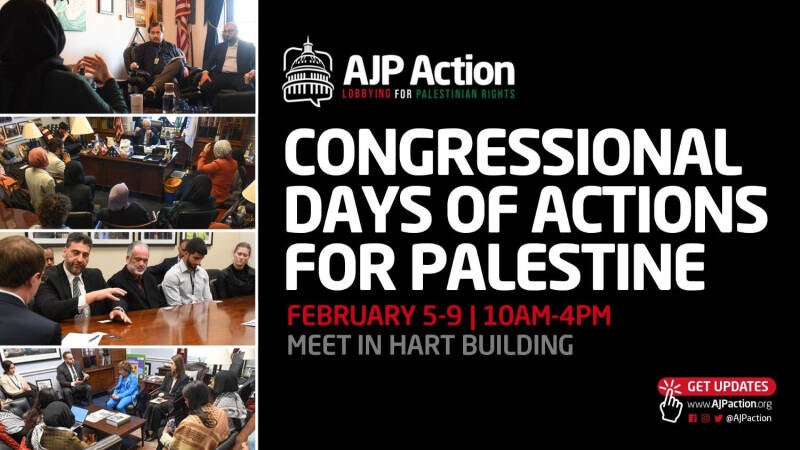
On the House side, Speaker Mike Johnson has declared that a stand-alone bill with a staggering $17.6 billion for Israel is set for a vote this week. Meanwhile, on the Senate side, Senator Schumer has announced that the Senate will finally vote on the long-awaited supplemental package of $105 billion, which provides funds for Ukraine, Israel, the Indo-Pacific, and the US-Mexico border.
Senator Bernie Sanders has put forth an amendment in the Senate bill to eliminate $10.1 billion earmarked for offensive weaponry to the Israeli government. Denouncing the death toll and suffering in Gaza as unacceptable, Sanders is calling for “zero funding for the continuation of Netanyahu’s illegal, immoral war against the Palestinian people.”
Advocates from the coalition will be urging Senators to support Sanders' amendment. On the House side, advocates will be calling on Representatives to vote “NO” on sending $17.6 billion to Israel.
Your participation in as many days as possible is crucial, and we urge you to spread the word among your loved ones. The fight for justice in Gaza is ongoing, and we won't rest until we achieve it. Let's make our voices heard on Capitol Hill for Gaza and show our elected officials that we will not back down.
In solidarity,
AJP Action

The House and Senate are considering two funding bills for Israel; tell them to vote NO
5 februari 2024
The Senate is currently preparing to vote on a bill that would allocate nearly $10.6 billion in military aid to Israel this week. A separate bill in the House, the Israel Security Supplemental Appropriations Act, proposes $ 17.6 billion in emergency aid to Israel to be voted on next week. In the face of the escalating humanitarian catastrophe in Gaza, we must come together to ensure that Congress does not support the ongoing genocide of the Palestinian people. TAKE ACTION NOW !
The situation in Gaza is dire, with over 27,000 lives taken, over 1.9 million displaced, and half a million people grappling with threats of disease and starvation. We must not allow our government to further exacerbate this crisis by providing billions of dollars in military aid to Israel. While Congress has been unable to garner support for serious anti-poverty legislation like the expanded Child Tax Credit to help struggling families in the US, packages like this send tens of billions more in funds for war. STOP IT!
Take Action Here
Sincerely,
Ayah ZiyadehAdvocacy Director AJP


4 februari 2024
My name is Maya Eshel, I just joined the Refuser Solidarity Network team as the international solidarity coordinator. I want to share a few words about myself and also tell you how you can amplify the voices of Israelis against the war on Gaza and call for a ceasefire.
I moved to Israel at the age of 16 and six months later I was already sent an initial draft order from the Israeli military. About two years later I was drafted into the Israeli military where I served in the West Bank for 9 months. During my time there I witnessed several detained Palestinians being brought to the detention center on my base. While waiting for the military doctor one day, a young Palestinian boy was escorted into the clinic. In the middle of winter he had just one long sleeve shirt on. He was blindfolded and handcuffed and could not have been over 11 years old. This very moment, sitting just centimeters away from a boy who could not see me, who was alone and was kidnapped from his community, stayed with me.
Over the years I would often think of this boy. I would think about the trauma he may have from those exact moments and my participation in such a brutal system. I looked deeper into myself, into my environment and at the violent occupation that we as a society here in Israel have normalized. After educating myself and learning about the supremacist policies Israel uses to uphold an oppressive military rule over millions of Palestinians, I decided to join the resistance movement against the occupation and apartheid. You can also support the resistance by following our instagram page, voicesagainstwar, and our other social media pages where we provide a platform to document and publish anti-war protests and individual testimonies of Israelis against this war.
My solidarity work led me to living in Palestinian villages in the Southern Hebron Hills, located in area C of the West Bank, documenting demolitions and settler and military violence against Palestinians. I witnessed settlers violently abuse and threaten Palestinians, uproot hundreds of olive trees, dance with guns on stolen Palestinian land while the military was standing by. I also witnessed soldiers tasked to demolish homes, abuse small farming communities, and arrest men in the middle of the night.
Since I started visiting the South Hebron Hills the situation has escalated tenfold. The horrors of October 7th have shaken the Israeli ethos to its core. And with no time to grieve, the Israeli government is weaponizing our pain, enacting a revenge war on Gazans, killing thousands of civilians and displacing over one million people.
Today, more than ever, we need to resist the war from the bottom up and we need to do this together. Please help us amplify Israeli voices who resist the government's violent manipulation of our pain. Please watch and help share our various social media pages, to spread the voices of Israelis protesting this war.
We will continue to update you about Israeli resistance efforts and about actions you can take to resist this war.

In solidarity,
Maya Eshel
International Solidarity Coordinator
Refuser Solidarity Network


Today's headlines
Israel kills more than 1,000 Palestinians since ICJ ruling; U.S. bombs Yemen
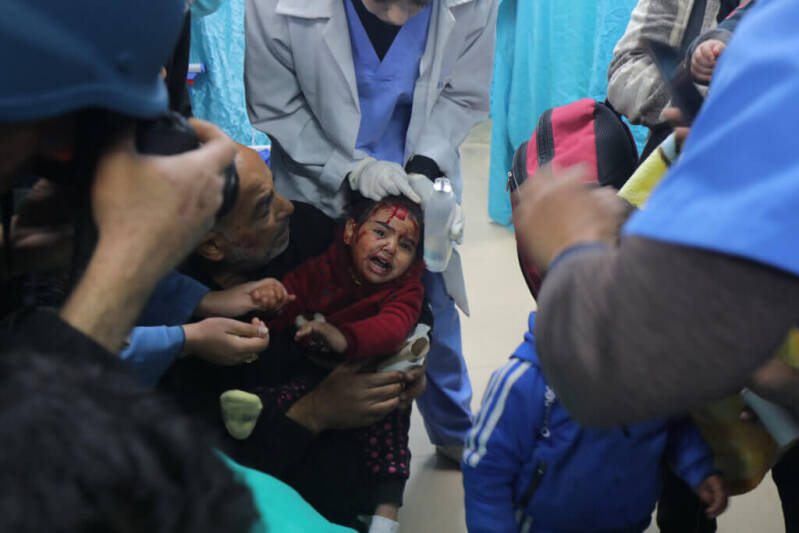
4 februari 2024
Israeli forces bomb Rafah, where thousands of Palestinians are displaced in shelters near the Egyptian border, as an Israeli minister wishes to “encourage voluntary emigration” from Gaza. In West Bank, settlers attack Palestinian villages.
Silwan faces escalating home demolitions in fight against messianic settlers

Home demolitions in East Jerusalem are rampant, but none more than in Silwan, where messianic settlers backed by the state are attempting to establish fanciful “archaeological” parks on top of Palestinian homes.
U.S. admits it hasn’t verified Israel’s UNRWA claims, media ignores it

Secretary Blinken admits that the U.S. has been unable to investigate the “evidence” presented by Israel claiming 13 of UNRWA’s 13,000 Gaza employees participated in October 7. Biden took Israel’s word for it anyway.


Today's headlines
Gaza’s economy in shambles amid fears of escalating regional tensions
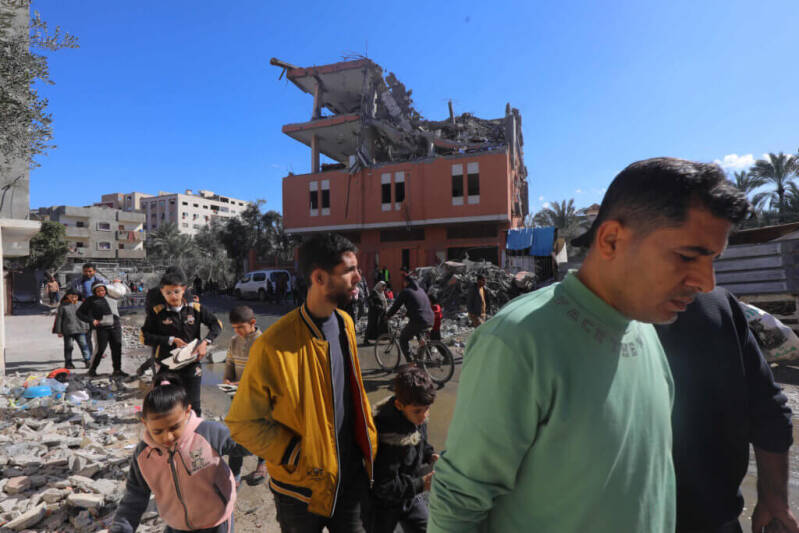
3 februari 2024
Hamas leaders continue to deliberate a ceasefire agreement as the U.S. intensifies strikes on Iran-affiliated targets in Iraq and Syria.
His mother was shot in front of him by an armed Israeli drone

Five-year-old Arkan Shaqqura was with his mother when she was shot by an armed Israeli quadcopter. The last thing she told her child as she lay bleeding was to run away and save himself. Her family now doesn’t know if she is dead or alive.
The case of Palestine’s longest-serving prisoner exposes Israel’s brutal abuse of Palestinian detainees
Zena al-Tahhan
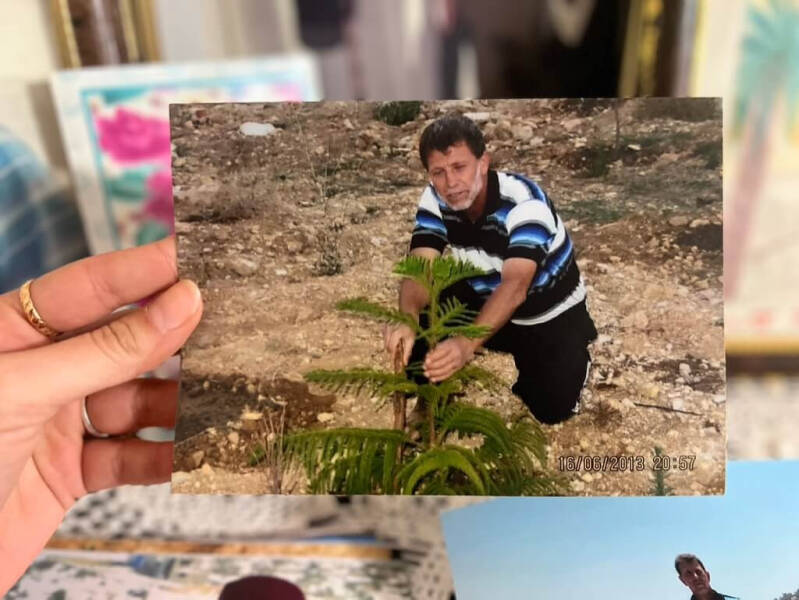
The brutal torture and abuse Nael Barghouti has faced since October 7 mirrors the situation of all Palestinian detainees, and his case shows that Israel will re-arrest Palestinians it releases in any potential prisoner swap, without charge or trial.
Angela Davis: South Africa standing up for Palestine has created new hope in the world


AMP Launches Site to Amplify Individual Boycott Efforts
2 februari 2024
We are excited to give you a first look at our new website, BoycottGuide.org, with ways to amplify and focus your boycott efforts! The site also introduces AMP’s flagship annual project - the National Date Boycott Campaign 2024 to avoid settlement produce brands.
We’ve reviewed many sources on official and popular targets for boycott, as well as companies that are particularly involved in the ongoing genocide. BoycottGuide.org provides a narrowed list of focuses for boycott efforts in the United States to amplify our collective efforts. While we encourage you to maximize your boycott efforts in the ways that you see fit, it’s important to recognize that some official BDS targets have a greater presence in the US while others have virtually none. Similarly, some boycott targets are backed by both more evidence and popular support–and should therefore be a place where we double down our efforts.




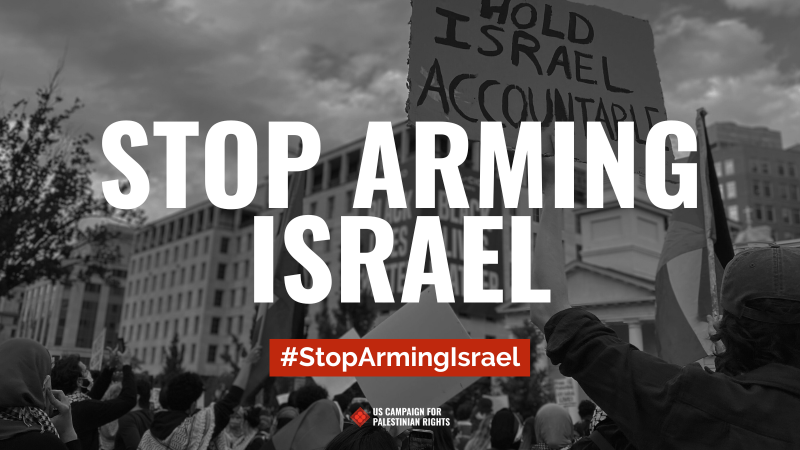
2 februari 2024
It has been nearly 120 days of genocide, and Palestinian people in Gaza who have survived these unimaginable horrors want to live. They are sleeping in tents in the rain and cold with no food or healthcare, fighting to make it through each hour as Israel bombs them.
Israel must end its brutal bombings and intentional starvation now. No matter what happens next in talks between Israel and Hamas, we must all keep pushing for a PERMANENT CEASEFIRE, an end to the siege on Gaza, and a free Palestine.
These past few months, U.S. politicians have seen what happens when we rise up together for Palestine, through massive disruptions and over 1 million calls and emails made to Congress through USCPR action tools alone. We’re just getting started. Keep fighting every step of the way until Palestine is free.
Read the latest updates below.
Your Activist Scoop
OUR GOVERNMENT'S GUILT
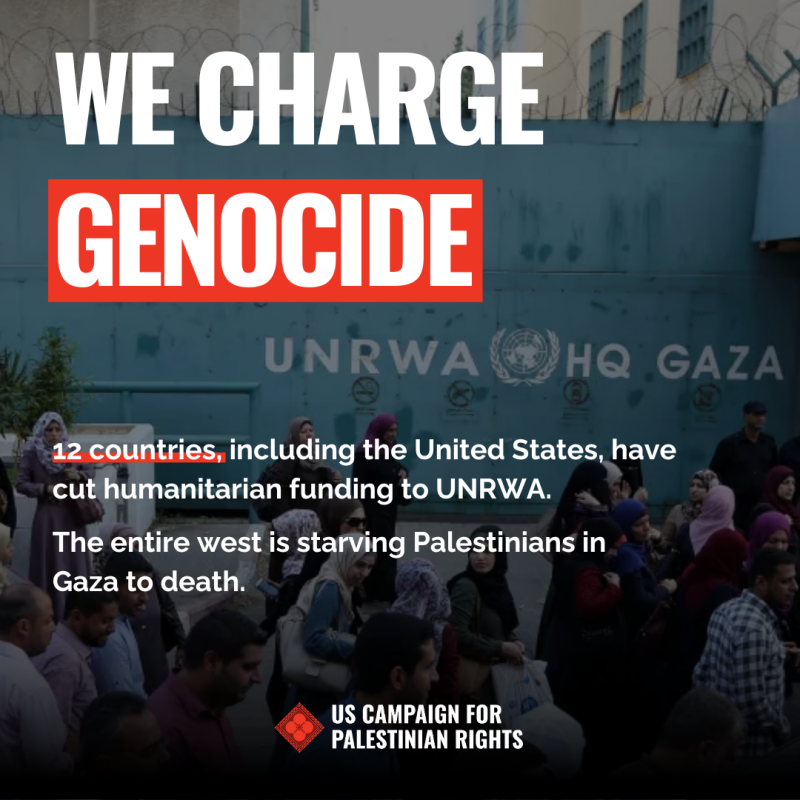
- A U.S. federal judge reaffirmed the ICJ’s ruling that Israel is plausibly committing genocide after Palestinians sued Biden. The court dismissed the case on jurisdictional grounds, but the vastly documented evidence of Biden’s genocide complicity cannot be denied. And now it’s on the record.
- Rep. Nancy Pelosi smeared pro-ceasefire protesters on national TV, making ridiculous claims about Russian funding and calling for an FBI investigation. This is another warning sign of state repression. Make sure to know your rights.
- Biden has issued an executive order to impose sanctions against Israeli settlers for attacking Palestinians, following settlers killing a Palestinian-American teenager and using Israel’s genocide in Gaza to forcibly displace and attack Palestinians in the West Bank. This is less than the bare minimum. The U.S. must stop arming Israel and hold the Israeli regime accountable, period.
LEARN ABOUT THE PALESTINE V. BIDEN LAWSUIT
YOUR IMPACT


- You’re part of a massive movement of disruptions to business as usual. Yesterday morning, Palestinian Youth Movement DC led hundreds of protesters to shut down DC traffic with five blockades and a massive rally, delaying the workday of Genocide Joe's employees.
- Chicago has become the largest city in the U.S. to call for a ceasefire. Over 50 cities have now passed a ceasefire resolution. With your support, USCPR has released a City Ceasefire Toolkit to support these efforts.
WATCH THE DC TRAFFIC SHUTDOWN VIDEO
WHAT TO DO NEXT
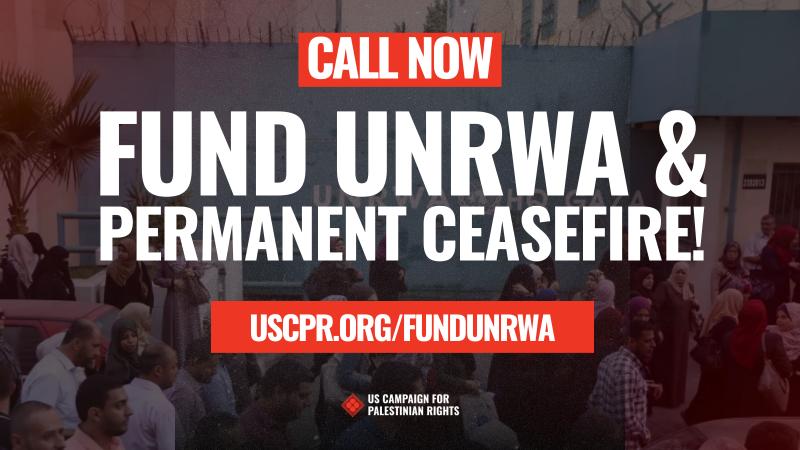
- If you haven’t yet today, call your elected officials now and then tweet at the State Department to demand they reinstate humanitarian funding to the UNRWA aid agency immediately. Starving a besieged population is an act of genocide.
- Sign up for the next Phone Zap on Wednesday, Feb. 7 at 2 PM ET. Together we’ll flood the phone lines for Palestine!
- KEEP PROTESTING!
Find a protest near you
TELL CONGRESS TO FUND UNRWA NOW
Thank you for taking action with me.
Onward to liberation,
AHMAD ABUZNAID
Executive Director


Today's headlines
Israel vows to push forward into Rafah, leaving Palestinians with nowhere left to flee

2 februari 2024
Defense Minister Yoav Gallant declares the Israeli ground invasion will continue into Rafah, where 1.9 million civilians are currently sheltering. One Palestinian tells Reuters, “If the tanks storm in, it will be a massacre like never before.”
Read more
We deserve the truth about what happened on October 7
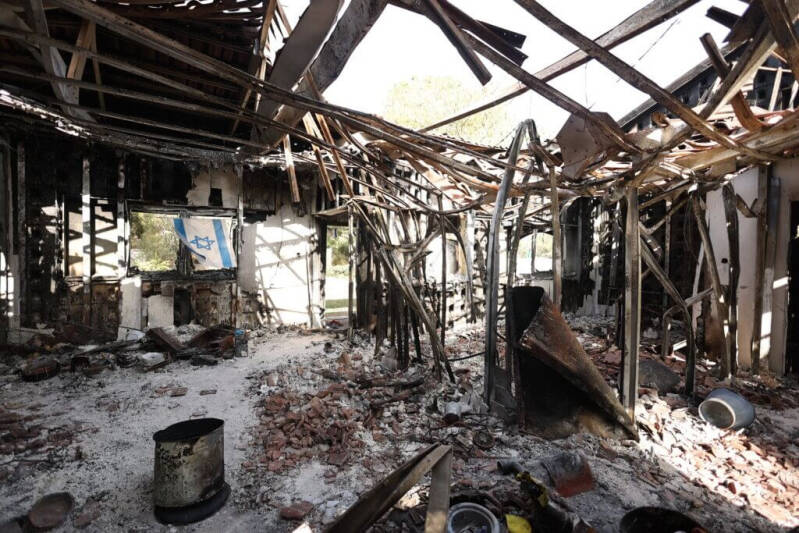
Stories of atrocity on October 7 have been used to justify the ongoing assault on Gaza. But several of these high-profile claims have been found to be based on unreliable witnesses or even fabricated entirely. We deserve to know the truth.
Why the U.S. must restore funding to UNRWA
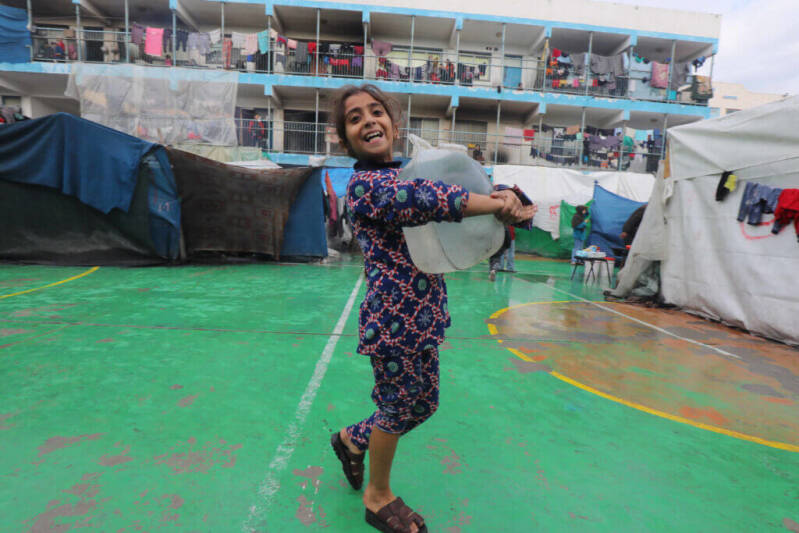
The attack on UNRWA by Israel and its Western allies is an assault on the credibility of international legal and humanitarian bodies. Cutting UNRWA's funding deepens the Biden administration's complicity in the Gaza genocide.
U.S. court: Biden administration should reflect on its ‘unflagging support’ for ‘plausible’ genocide in Gaza
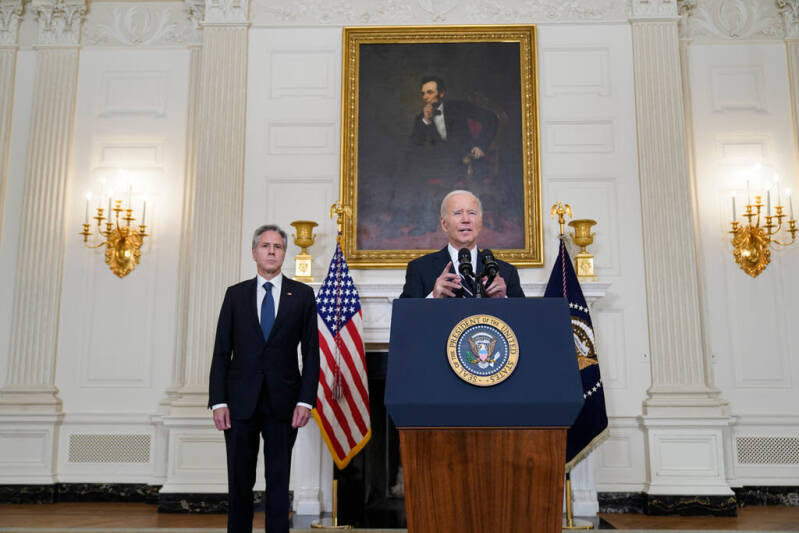
A U.S. court in Oakland said The White House should reflect on its “unflagging” support for a plausible genocide in Gaza.
Read more


Israël valt hulporganisatie UNRWA aan
2 februari 2024
De dag nadat het Internationaal Gerechtshof Israël beval dat er dringend humanitaire hulp in Gaza moet worden toegelaten, zette Nederland de steun aan hulporganisatie UNRWA stop. Dat is een ongekend onverantwoorde en destructieve stap.
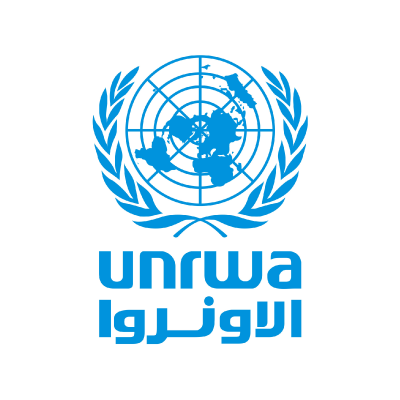
UNRWA onvervangbaar
UNRWA is de hulporganisatie waar momenteel vrijwel de gehele uitgeputte en uitgehongerde bevolking van Gaza van afhankelijk is. Op dit moment is er geen enkele andere vluchtelingenorganisatie die UNRWA kan vervangen. Dat benadrukte Sigrid Kaag, die sinds enkele weken de humanitaire hulp aan Gaza coördineert namens de Verenigde Naties.
Geen bewijs
Nederland heeft herhaaldelijk beweerd niet te kunnen beoordelen wat er zich precies in Gaza afspeelt. Nu blind afgaan op ongeverifieerde Israëlische beschuldigingen over twaalf (van de 13.000) UNRWA-medewerkers in Gaza getuigt van een onverantwoordelijke besluitvorming. Israël staat erom bekend hulporganisaties die zich inzetten voor de Palestijnen met valse beschuldigingen aan te vallen.
Geoffrey van Leeuwen, minister voor Buitenlandse Handel en Ontwikkelingssamenwerking, moest tijdens een debat afgelopen woensdag ook al toegeven dat er, in tegenstelling tot wat hij eerder beweerde, geen bewijs is dat Nederlands of VN-geld is gebruikt tijdens de aanval op 7 oktober.
Nederland, draai het besluit terug
De reguliere (en een extra) bijdrage aan UNRWA voor 2024 heeft Nederland kort geleden al overgemaakt, daar heeft het huidige besluit geen effect op. Feitelijk is het daarmee een politiek signaal, maar wat ons betreft een fout en gevaarlijk signaal. De onschuldige Gazaanse burgers hebben juist nu alle politieke, morele en fysieke steun nodig. The Rights Forum roept het kabinet daarom op om dit rampzalige besluit onmiddellijk terug te draaien.
Israël sloopt Nederlandse hulpprojecten op de Westoever
Israël zet niet alleen in op de vernietiging van UNRWA, maar sloopt ook op de bezette Westelijke Jordaanoever op grote schaal projecten die bedoeld zijn om de Palestijnse bevolking te helpen. Veel van deze projecten werden gefinancierd door Europese landen, waaronder Nederland.
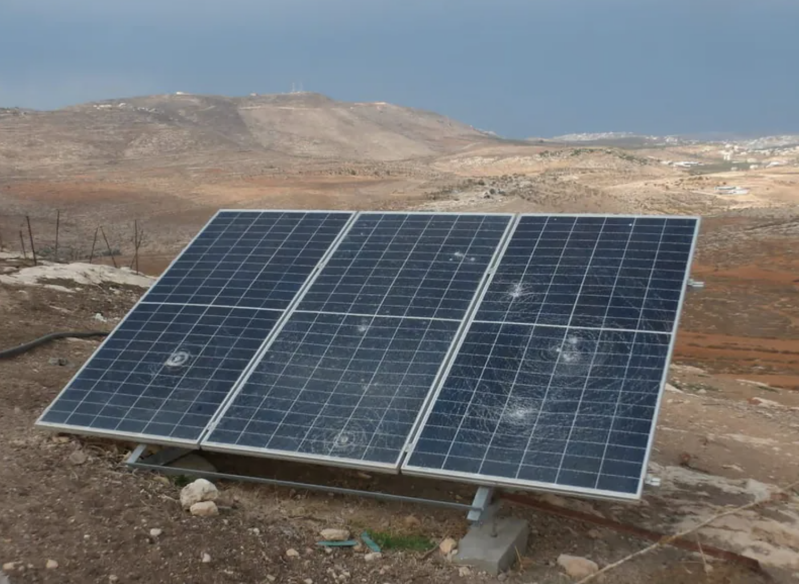
De schade aan Nederlandse projecten bedraagt sinds 7 oktober 2023 zeker 150 duizend euro. De werkelijke schade ligt vermoedelijk veel hoger. Dat blijkt uit onderzoek van online medium The Nation.
Pensioenfonds PFZW doet niets: hoe nu verder?
PFZW gaat niet in op de oproep om een einde te maken aan zijn investeringen in de Israëlische nederzettingen. Dat is de strekking van het antwoord van het pensioenfonds op de talloze e-mails en brieven die het ontving naar aanleiding van onze actie. Het fonds trekt zich dus opnieuw niets aan van de terechte, goed onderbouwde oproepen om zijn koers te wijzigen.

Verdere actie
Dat roept bij velen de vraag op: hoe nu verder? Ons antwoord is om door te gaan met het aanspreken van PFZW. Dat kan individueel, of georganiseerd binnen je instelling, bedrijf, beroepsgroep of met gelijkgestemden.
Daarnaast kan via de website Eerlijke Pensioenwijzer een klacht worden ingediend. De nieuwe website Stop Funding Genocide biedt de mogelijkheid om PFZW en andere financiële instellingen te mailen.
Andere belanghebbenden
Belangrijk is om nu ook andere belanghebbenden in te schakelen, zoals je werkgever, de Ondernemingsraad van je bedrijf of de vakbond. Want het gaat intussen om méér dan alleen de onacceptabele investeringen van PFZW. Van diverse kanten horen we dat PFZW-leden afscheid willen nemen van het pensioenfonds, maar dat dit door regelgeving niet mogelijk is.
Lees hier het hele artikel over het antwoord van PFZW en mogelijke verdere acties.
Opinie Afleren van zionisme
Op 29 januari sprak een panel van vijf antizionistische Joden in Pakhuis de Zwijger over het thema ‘Afleren van zionisme’. Jaap Hamburger, voorzitter van Een Ander Joods Geluid, hield er een toespraak, mede namens de overige panelleden Marka Valenta, Erella Grassiani, Joana Cavaco en Jelle Zijlstra.

De toespraak is in zijn geheel op deze site te lezen onder de hier genoemde datum van 29 januari 2024
(En op deze site op 31 januari 2024).
Tussenvonnis Internationaal Gerechtshof in genocidezaak is duidelijk signaal aan Israël
In onze nieuwsbrief van vorige week vrijdag stonden wij uitgebreid stil bij het tussenvonnis van het Internationaal Gerechtshof in de zaak die Zuid-Afrika tegen Israël aanspande wegens genocide in Gaza. Dat vonnis luidt dat Israël alles op alles moet zetten om genocide en oproepen tot genocide te voorkomen.
In een artikel op onze website vatten we de belangrijkste punten van het vonnis nog eens samen.
Verantwoordelijkheid andere landen
Er ligt een grote verantwoordelijkheid bij andere landen, zeker bij de ruim 150 landen die het Genocideverdrag hebben ondertekend, om Israël ertoe te bewegen de uitspraak van het hof na te leven. Sterker nog: zij zijn daartoe verplicht. Duidelijk is dat zij flinke druk op Israël zullen moeten uitoefenen.

Daarnaast schept de uitspraak de verplichting voor alle landen om de militaire acties van Israël niet te faciliteren. Doen zij dat wel, dan lopen zij het risico medeplichtig te worden aan genocide.
F-35
Dat heeft zeker voor Nederland directe consequenties, bijvoorbeeld wat betreft de levering van onderdelen van F-35-gevechtsvliegtuigen aan Israël. Op 12 februari a.s. doet het Gerechtshof Den Haag in hoger beroep uitspraak in de zaak die o.a. The Rights Forum samen met Oxfam Novib en Pax voor Vrede tegen de Nederlandse Staat heeft aangespannen. Na de ondubbelzinnige uitspraak van het Internationaal Gerechtshof lijkt het ondenkbaar dat Nederland de levering van de F-35-onderdelen kan voortzetten zonder het risico op medeplichtigheid aan genocide.
Agenda Vriendenmiddag Tent of Nations
Tent of Nations organiseert op zaterdagmiddag 10 februari in Driebergen zijn jaarlijkse Vriendenmiddag. Tent of Nations is een educatieve boerderij en het vredesproject van de Palestijns-christelijke familie Nassar in Bethlehem. Ondanks de moeilijke omstandigheden zet de familie Nassar zich op een geweldloze en creatieve manier in onder het motto “Wij weigeren vijanden te zijn”.

Iedereen die betrokken is bij Tent of Nations, of hier nieuwsgierig naar is, is van harte welkom bij deze inspirerende middag.
Bekijk de uitnodiging voor meer informatie en het hele programma van de middag.
Wanneer en waar?
Zaterdagmiddag 10 februari 2024, 13.30 - 17.15 uur, met aansluitend een borrel tot 18.30 uur. Grote Kerk, Hoofdstraat 115 (ingang: De Lei 86), 3971 KA Driebergen
Wat kost het?
€ 10 per persoon, te betalen bij aankomst (gratis toegang voor deelnemers tot en met 25 jaar)
Hoe meld ik me aan?
Je kunt je tot en met dinsdag 6 februari 2023 aanmelden via tentofnationsnl@gmail.com.


Hostilities in the Gaza Strip and Israel
Flash Update #108
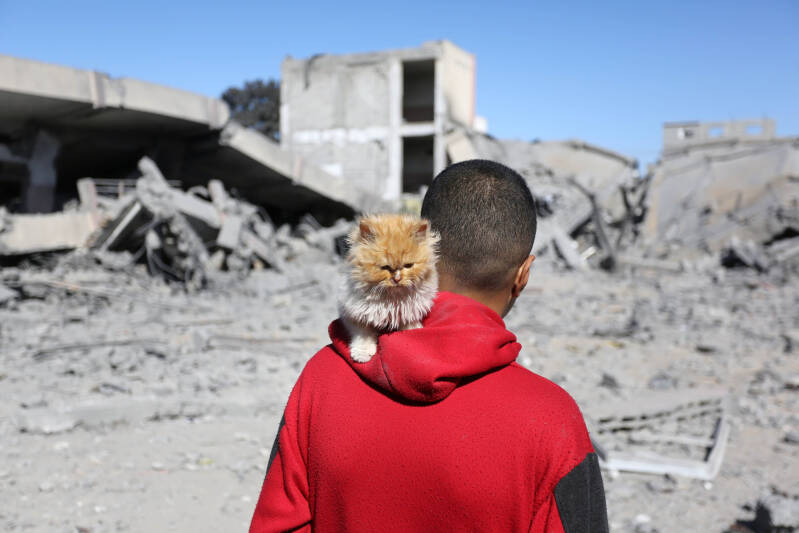
Intense hostilities continue in Gaza, resulting in casualties, displacement and devastation. Photo by UNRWA
2 februari 2024
Key points
- Intense Israeli bombardment from air, land, and sea continue to be reported across much of the Gaza Strip on 1 February, resulting in further civilian casualties, displacement, and destruction. Ground operations and fighting between Israeli forces and Palestinian armed groups also continue to be reported across much of Gaza.
- Between the afternoons of 31 January and 1 February, according to the Ministry of Health (MoH) in Gaza, 118 Palestinians were killed, and 190 Palestinians were injured. Between 7 October 2023 and 12:00 on 1 February 2024, at least 27, 019 Palestinians were killed in Gaza and 66,139 Palestinians were injured, according to the MoH.
- Between 31 January and 1 February, there were no Israeli soldiers reported killed in Gaza. As of 1 February, 222 soldiers were killed and 1,293 soldiers were injured in Gaza, according to the Israeli military.
- Thousands of Palestinians continue fleeing to the southern town of Rafah, which is already hosting over half of Gaza’s population of 2.3 million people. Most are living in makeshift structures, tents, or out in the open, according to UNRWA. On 31 January, UNRWA reported that some 184,000 people had registered for humanitarian assistance in the western outskirts of Khan Younis, after they were displaced from Khan Younis city in recent days amid evacuation orders and continued hostilities. As of 29 January, according to UNRWA, there are an estimated 1.7 million IDPs in the Gaza Strip.
- On 1 February, UNRWA stated that the “colossal humanitarian needs of over 2 million people in Gaza now face the risk of deepening following the decision of 16 donor countries to stop financial support to UNRWA.” The cuts in support are in response to allegations by the Israeli authorities that several UNRWA staff members participated in the attacks in southern Israel on 7 October 2023. UNRWA has terminated the contracts of nine of the accused and an investigation by the UN’s Office of Internal Oversight Services (OIOS) has been activated. The Commissioner-General, Philippe Lazzarini, reiterated “the call of the UN Secretary General Antonio Guterres to resume funding to UNRWA. If the funding remains suspended, we will most likely be forced to shut down our operations by end of February not only in Gaza but also across the region.” In a statement issued on 30 January, Principals of the Inter-Agency Standing Committee warned that cuts to UNRWA’s funding would have "catastrophic consequences for the people of Gaza," as "no other entity has the capacity to deliver the scale and breath of assistance that 2.2 million people in Gaza urgently need."
- Health care in Gaza remains extremely precarious, according to WHO. As of 25 January, only 14 of 36 hospitals in Gaza are partially functional; seven in the north and seven in the south. Heavy fighting in the vicinity of Nasser and the Al-Amal hospitals in Khan Younis has continued, jeopardizing the safety of medical staff, the wounded and the sick, as well as thousands of internally displaced persons (IDPs) seeking refuge at the hospitals. On 1 February, the Palestine Red Crescent Society (PRCS) reported that the Israeli military stormed the courtyards of the hospital for the third time and opened fire, hitting five vehicles, including three ambulances. On the same day, the PRCS reported that two staff members had been killed by Israeli gunfire near the gate of the hospital the day before and reiterated that the fate of the two staff members in the ambulance team which was dispatched to reach a young girl in Gaza city on 29 January remains unknown.
- Nasser and PRCS Al-Amal hospitals are reportedly suffering from a serious shortage of oxygen but are seeking to share supplies between them to save lives; on 31 January, PRCS reported that their teams managed to bring 25 oxygen cylinders from Nasser hospital in risky conditions to Al Amal hospital. On 30 January, the World Health Organization (WHO) Director-General, Dr. Tedros Ghebreyesus, stated: “Nasser Hospital is currently serving 400 patients. Once the most important referral hospital in southern Gaza, within a week Nasser has gone from partially to minimally functional, reflecting the unwarranted and ongoing dismantling of the health system.”
- On 30 January, the Israeli authorities returned the bodies of dozens of Palestinians killed in Gaza in recent weeks through Kerem Shalom crossing. According to statements by the Israeli authorities, bodies are taken for identification to ascertain if they had been hostages. According to the MoH in Gaza, between 80 to 100 bodies were received and most were unidentifiable due to decomposition and were consequently buried in a mass grave in Rafah. Also on 30 January, Palestinians reportedly discovered at least 30 corpses buried in black bags under the sand in an UNRWA school in Beit Lahiya, northern Gaza. On 7 December, the facility was reportedly besieged and an unknown number of casualties were reported. The school had not been accessed by residents since about 10 December, when a fire broke out, causing significant damage, and reportedly forcing displaced people who were sheltering in the location, to flee.
- On 30 January, the IRC and MAP issued a statement confirming further details on a near-fatal airstrike on the organizations’ deconflicted guesthouse in Al Mawasi on 18 January. According to the statement, an independent assessment by the UN has concluded that the damage was the result of an airstrike, most likely involving weaponry which is only accessible to the Israeli military. This incident caused injuries to several MAP medical and operational team members, significant damage to the building, and required the withdrawal of six international emergency medical team members from Gaza.
Displacement (Gaza Strip)
- As of 31 January, UNRWA reported that at least 270 attacks have impacted its facilities sheltering displaced families. As a result, at least 372 IDPs sheltering in UNRWA shelters have been killed and 1,335 injured since 7 October. Overall, between 150-155 UNRWA installations continue to shelter IDPs.
Electricity
- Since 11 October 2023, the Gaza Strip has been under an electricity blackout, after the Israeli authorities cut off the electricity supply, and fuel reserves for Gaza’s sole power plant were depleted. The communications and industrial fuel shutdown continue to significantly hinder the aid community’s efforts to assess and to adequately respond to the deepening humanitarian crisis. For more information on electricity supply to the Gaza Strip, please see this dashboard.
Hostilities and casualties (Israel)
- Over 1,200 Israelis and foreign nationals have been killed in Israel, including 36 children, according to the Israeli authorities, the vast majority on 7 October and the immediate aftermath.
- The Israeli authorities estimate that about 136 Israelis and foreign nationals remained captive in Gaza, these include those that are deceased, and their bodies were still being held. During the humanitarian pause (24-30 November), 86 Israeli and 24 foreign national hostages were released.
Violence and casualties (West Bank)
- Since 7 October 2023 and as of 1 February 2024, 372 Palestinians have been killed, including 94 children, in conflict-related incidents across the West Bank, including East Jerusalem. (Additionally, two Palestinians from the West Bank were killed while carrying out an attack in Israel on 30 November). Of these 372 fatalities, 360 were killed by Israeli forces, eight by Israeli settlers and two by either Israeli forces or settlers. The other two Palestinians, including a woman holding Israeli citizenship, were killed in an attack by Palestinians on 7 January 2024, reportedly in the belief they were settlers. So far as of 1 February 2024, 63 Palestinians, including at least 13 children, have been killed, the majority by Israeli forces. The number of Palestinians (507) killed in the West Bank, including East Jerusalem, in 2023 marks the highest number of Palestinians killed in the West Bank since OCHA started recording casualties in 2005.
- Since 7 October 2023 and as of 1 February 2024, ten Israelis have been killed in conflict-related incidents in the West Bank, including East Jerusalem, and in Israel. These include five Israelis, including four members of Israeli forces, killed in the West Bank, including East Jerusalem; four Israelis killed by Palestinians from the West Bank in Israel, and one Israeli killed by Israeli forces who misidentified him during a Palestinian-perpetrated attack in West Jerusalem. The number of Israelis killed in the West Bank and Israel in 2023 (36) in attacks perpetrated by Palestinians from the West Bank was the highest since OCHA started recording casualties in 2005.
- Since 7 October 2023 and as of 1 February 2024, 4,391 Palestinians, including 661 children, have been injured in the West Bank, including East Jerusalem. Of them, 4,254 have been injured by Israeli forces, 116 by settlers and 21 by either Israeli forces or settlers. Of the total injuries, 54 per cent were reported in the context of search-and-arrest and other operations, 34 per cent in demonstrations and 8 per cent during settler attacks against Palestinians. Some 33 per cent of those injuries have been caused by live ammunition, compared with 9 per cent in the first nine months of 2023.
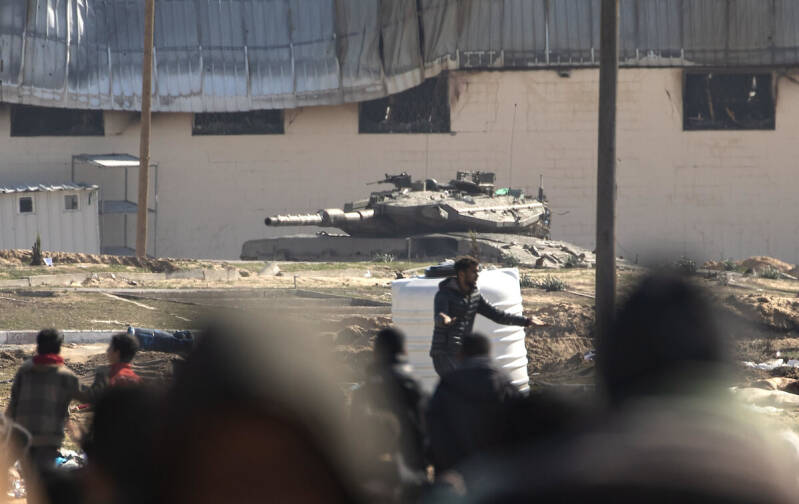
Settler Violence
- Since 7 October 2023 and as of 1 February 2024, OCHA has recorded 494 Israeli settler attacks against Palestinians, resulting in Palestinian casualties (49 incidents), damage to Palestinian-owned property (388 incidents), or both casualties and damage to property (57 incidents). In 2023, 1,264 incidents involving Israeli settlers in the West Bank, including East Jerusalem (with or without Israeli forces), resulted in Palestinian casualties, property damage or both. Some 945 of these incidents resulted in damage, 165 resulted in casualties and 154 resulted in both. This is the highest number of settler attacks against Palestinians in any given year since OCHA started recording incidents involving settlers in 2006.
Displacement (West Bank)
- Since 7 October 2023 and as of 31 January 2024, at least 198 Palestinian households comprising 1,208 people, including 586 children, have been displaced amid settler violence and access restrictions. The displaced households are from at least 15 herding/Bedouin communities. More than half of the displacement occurred on 12, 15, and 28 October, affecting seven communities. The displacement toll since 7 October 2023, represents 78 per cent of all displacement reported due to settler violence and access restrictions since 1 January 2023 (1,539 people, including 756 children).
- Since 7 October 2023 and as of 1 February 2024, 499 Palestinians, including 248 children, have been displaced following the demolition of their homes in Area C and East Jerusalem due to lack of Israeli-issued building permits, which are almost impossible to obtain. Overall, in 2023, 892 structures were demolished, sealed off and/or confiscated due to the lack of Israeli-issued building permits in Area C and East Jerusalem, resulting in the displacement of 1,148 Palestinians, including 575 children. Some 39 per cent of people displaced occurred between October and December 2023.
- Since 7 October 2023 and as of 1 February 2024, 22 Palestinian-owned homes have been punitively demolished, displacing 105 Palestinians, including 45 children. The numbers exceed those reported in the first nine months of 2023, during which 16 homes were punitively demolished and 78 people displaced in that context.
- On 30 January, two Palestinian-owned homes were severely damaged during an Israeli military operation in Tulkarm refugee camp in Tulkarm, which led to the displacement of 12 people, including two children. Since 7 October 2023 and as of 1 February 2024, 756 Palestinians, including 313 children, have been displaced, following the destruction of 119 homes during operations carried out by Israeli forces across the West Bank. About 95 per cent of the displacement was reported in the refugee camps of Jenin, Nur Shams and Tulkarm. This represents 83 per cent of all displacement reported due to the destruction of homes during Israeli military operations since January 2023 (908 people).
Funding
- As of 1 February, Member States have disbursed $700.4 million against the updated Flash Appeal launched by the UN and its partners to implement its response plan in support of 2.2 million people in the Gaza Strip and 500,000 people in the West Bank. This constitutes 57 per cent of the $1.2 billion requested.
- Private donations are collected through the Humanitarian Fund. A private foundation in Australia has donated $2.2 million. Since 7 October, the Humanitarian Fund has disbursed about $55 million.

HUMANITARIAN NEEDS AND RESPONSES: 21-28 January
Health
Needs
- Primary health services are critically needed in informal shelters across the Gaza Strip. In addition, routine immunization, sexual and reproductive care, and medication for non-communicable diseases and psychotropics are essential to address the population's medical needs. Establishing field hospitals in different areas of the Gaza Strip will be a crucial enabler to accommodate the local population's medical needs.
- Some 6,000 patients are still on the waiting list to be evacuated outside of Gaza for tertiary medical care.
- There is an urgent need for laboratory equipment and reagents to enable accurate diagnosis and testing; blood products to support medical procedures and surgeries; and a humanitarian corridor for referral of critical patients from Nasser Hospital to the Jordanian field hospital in Khan Younis.
- Health facilities, including hospitals, urgently need fuel, medical supplies, and food to continue to provide medical services across the Gaza Strip.
Response
- Since the start of hostilities, in Gaza, 25 partners have established presence and have provided health services to over 500,000 people.
- Some 12 Emergency Medical Teams (EMTs) are currently operational, with two additional teams scheduled to arrive next week. As of end of January 2024, these EMTs have treated some 12,410 patients requiring emergency surgeries and treatment for non-communicable diseases and severe acute malnutrition.
- During the reporting period, 53 patients, including 15 critical cases, were successfully evacuated from UNRWA’s Khan Younis Training Centre.
- The International Medical Corps (IMC) Field Hospital has now expanded its health services to include a maternity ward and pediatrics unit.
- In the West Bank, mobile clinics have provided healthcare services to about 83,000 Palestinians in 86 communities. Health partners are planning to provide primary healthcare via mobile clinics to more than 25,000 Palestinians across 36 communities in early February.
Challenges and Gaps
- In Gaza, the escalation of hostilities in Khan Younis has resulted in a significant increase in attacks against the few remaining partially and minimally functional health facilities and an increase in the number of IDPs seeking refuge in Rafah.
- Ongoing fighting in the vicinity of Al Amal and Al Kheir hospitals have severely affected their functionality and accessibility. Al-Kheir hospital, a critical facility for maternal and newborn care, is currently non-operational due to extensive damage.
WASH
Needs
- People in Gaza do not have access to adequate quantity and quality of water and lack hygiene materials, which has consequences on their wellbeing, including physical health.
- The accumulation of solid waste on the streets, around hospitals, IDP shelters, and various sites remains a priority concern, as tens of thousands of tons of uncollected public waste are intensifying public health risks. The Municipality of Gaza city estimates that approximately 50,000 tons of solid waste remain unmanaged, exacerbating environmental and health concerns.
Response
- About 23,000 cubic metres of water per day were accessible through water lines, municipal wells, as well as trucking and bottled water (estimated 10,000 cubic metres) between 22 and 28 January.
- Some 6,000 cubic metres of water per day were accessible through the only functional Israeli water pipeline, in contrast to close to 53,000 cubic metres that used to be available through all pipelines prior to the current hostilities.
- Some 3,200 cubic metres were accessible through the short-term desalination plants each day, in contrast to the pre-hostilities period when 22,000 cubic metres were available daily.
- Some 2,500 cubic metres of water is accessible through the municipal wells daily, while the production capacity was up to 255,000 cubic metres each day.
- The UAE's small desalination plant located on the Egyptian side of Rafah continues to operate below capacity, providing 1,140 cubic metres per day out of a possible 2,400. All desalinated water from this plant is distributed via tankers.
- The construction of a 3-kilometre transmission line extending to the Saudi Water Reservoir within the Philadelphia corridor is underway and expected to be completed in early February.
Challenges and Gaps
- In Gaza, due to access restrictions, humanitarian partners have been unable to assess or resupply fuel to the Jabalya area, where sewage flooding was reported in the refugee camp on 5 January. At least 100,000 IDPs are estimated to reside in the UN and public shelters in this area.
- Markets are not functioning and construction materials for latrines, desludging services and other essential supplies for sanitation are not available for purchase.
- Import restrictions, as well as complex and unpredictable clearance procedures for critical items considered by Israel as dual use, such as generators, pumps, and pipes are preventing a scale up of the WASH response.
- Most partners face resource shortfalls, with no commitment to new funding, particularly in camps and other areas where many IDPs are settled. As of 29 January, only 27 per cent of WASH’s requirement ($148.6M) is funded, according to the FTS.
Protection
Needs
- Unaccompanied and separated children require urgent protection, including family tracing and provision of shelter, winter clothing, blankets, water, and food.
- Protection partners report having observed increased risk-taking behaviour during a food distribution in Gaza city, with displaced people hasting towards aid trucks, amid attacks.
- Released detainees urgently need winter clothes and shoes, and tents, in addition to cash assistance. Released detainees asked for assistance in retrieving their personal belongings, that were confiscated while detained by the Israeli military.
- Reports indicated that pregnant women have been unable to reach health facilities or call ambulances to be transferred to health facilities, and thus have been forced to give birth in UNRWA shelters, which are not equipped with the necessary medical and sanitation facilities to ensure safe births. Protection focal points have provided hygiene and dignity kits, amid scarcity of kits; however, women’s specific needs after childbirth remain unmet.
- UNRWA reports increased levels of domestic violence, against women, in instances where they were unable to obtain food and NFIs from partners.
- Due to constant hostilities, the scale of explosive contamination will require, at a minimum:
- Explosive Ordnance Disposal.
- Explosive Ordnance Risk Education (EORE) and Conflict Preparedness and Protection (CPP) messages among the population affected by shelling and/or explosive contamination, including IDPs, in the event they will return to potentially contaminated areas, after the hostilities.
- EORE and CPP training for humanitarian actors.
- Victim Assistance services for survivors of shelling and explosive ordnance related accidents.
Response
- During the reporting period, UNRWA documented the release of 60 detainees (all males) from Gaza at Kerem Shalom, including an unaccompanied minor and one injured person; the Agency provided non-food items and coordinated with the International Committee of the Red Cross (ICRC) to support the released detainees with cash assistance and clothing. Some 28 released detainees were released in two UNRWA schools in Rafah and were assisted with medical care and psychological first aid. Six were transferred to a health facility, while the remaining 27 were reconnected with their families.
- The UN Mine Action Service (UNMAS) continued providing explosive ordnance disposal (EOD) support to ensure the safe passage of convoys; in particular, UNMAS EOD Operators supported three convoys to the north, including two food convoys and one fuel delivery to Shifa Hospital. Two explosive threat assessments were conducted in Khan Younis, including one at the Khan Younis Training Centre.
- Humanity and Inclusion (HI) coordinated and prepared to mobilize staff for future EORE/CPP sessions – some sessions were already held in Rafah and Dir Elbalah. HI is also working on a mass media EORE/CPP campaign.
Challenges and Gaps
- The communications blackout and the continued restrictions on access and safe movement directly affected the delivery of planned child protection interventions, and the reporting of ongoing interventions.
- Mine Action partners report challenges in obtaining authorization to deploy personnel, especially EOD specialists, to carry out contamination assessments; further challenges include access restrictions on equipment, movement concerns due to insecurity and communications challenged.
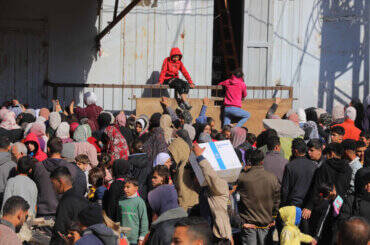
Shelter and Non-Food Items (NFI)
Needs
- It is estimated that over 650,000 people will have no home to return to, and that many more will be unable to return immediately, due to the level of damage to surrounding infrastructure, as well as the risk posed by explosive remnants of war.
- Partners estimate that the amount of debris generated by the destruction of residential housing units will exceed 8,000,000 metric tons and will take over three years to remove it, given Gaza's current capabilities.
- Displaced people residing in both formal and informal emergency shelters still lack basic NFIs, and hundreds of thousands lack proper and adequate shelter.
- Tents, timber sections, and tarpaulin sheets are highly needed to allow the displaced communities to protect themselves and their children from harsh weather conditions and to minimize overcrowded and unhygienic conditions in the current makeshift shelters.
- The lack of proper informal settlement planning has led to makeshift shelters and tents flooding on rainy days, further exacerbating the suffering of the people displaced.
- Urgent funding is needed to address the key gaps in the supply of shelter and NFIs. As of 29 January, only 24 per cent of the Shelter Cluster funding requirement (209.2M) has been funded.
Response
- During the reporting period, cluster partners distributed about 1,040 family tents in Mawasi (Khan Younis) and Mawasi (Rafah) for unsheltered IDPs. Some 1,450 bedding items, including blankets, mattresses, and mats, and 1,100 clothing kits were distributed to IDPs in Rafah.
- Shelter partners indicate that the Egyptian Red Crescent (ERC) and the Palestine Red Crescent Society (PRCS) have established tented camps near Khan Younis, with 600 tents. They intend to increase the size of the camp to some 1,000 tents to accommodate about 5,000 people displaced.
Challenges and Gaps
- There is a high shortage of all essential NFIs for IDPs inside and outside shelters. This includes 50,000 family winterized tents, 200,000 bedding sets (1,200,000 mattresses and blankets), 200,000 sealing-off kits, 200,000 winter clothes kits, and wooden timber to support IDPs in establishing self-built shelters.
- One of the challenges that displaced people face is the lack of hand tools to prepare the location of their tents and to protect them from rain and floods – as hand tools are currently not permitted to enter Gaza.
- Due to security concerns and limited access, partners had to restrict the delivery of the assistance to Rafah and Khan Younis.
- Cluster partners indicate that pricing for SNFIs has risen in regional markets, including high freight rates and shipping costs. Further, partners face persistent challenges in the supply chain, keeping up with regulations and registration in regional countries.
Food security
Needs
- Uninterrupted and secure humanitarian corridors for delivering critical aid across Gaza is critically needed to allow more trucks from the private sector to enter Gaza. Access to the north is imperative to address the catastrophic food insecurity conditions of the population there.
- Immediate provision of fuel and cooking gas is critical to sustain humanitarian efforts and maintaining the operation of essential services, such as mills and bakeries. Without them, communities will be unable to prepare the limited food available to them.
- According to the Integrated Food Security Phase Classification (IPC):
- 2.2 million people are at imminent risk of famine.
- Some 378,000 people are at Phase 5 (catastrophic levels). Phase 5 refers to extreme lack of food, starvation, and exhaustion of coping capacities.
- Some 939,000 people at Phase 4 (emergency levels).
Response
- Between 22 and 28 January, 12 Food Security Sector (FSS) partners provided food assistance across the Gaza Strip and reached about 1.7 million people with at least one type of food assistance. Rafah Governorate received about 50 per cent of the total food assistance; Deir al Balah received about 25 per cent; Khan Younis about 15 per cent; 10 per cent of the food assistance reached the northern governorates. In particular:
- In north Gaza, 11,832 people sheltering in host families received food parcels. Hot meals were provided to 36,000 people, sheltering in makeshift camps.
- In the Middle Area, food parcels were distributed to a total of 24,000 people, including 2,000 people non-displaced and 22,000 staying with host families. Ready-To-Eat (RTE) food was provided to 14,272 people, including 563 in host families and 13,709 people sheltering in makeshift camps. Hot meals were also distributed to 78,600 people sheltering in host families. A total of 305,000 people in host families were reached with bread distribution.
- In the south, FSS partners reached 916,576 IDPs, including in public shelters, host families and makeshift camps in Rafah, Khan Younis, and Deir al Balah governorates through food parcels, ready-to-eat (RTE) packages and hot meals.
- Some 362,465 people in host families in Al Bayuk, Al Jneineh and As Salam (Rafah) were reached with bread distribution, between 22 and 28 January.
Challenges and gaps
- FSS partners’ operational space and delivery access are greatly hindered across the Gaza Strip.
- Continued hostilities, disruptions in healthcare services, lack of access to nutritious food, lack of access to clean water and poor sanitation conditions remain major challenges and contribute to the risk of famine in Gaza.
- Despite partners' efforts, food distribution in northern Gaza falls far below needs. The challenges faced in Gaza underscore the importance of continued coordination and support to address the pressing food security needs of the affected people.
Nutrition
Needs
- Provision of nutrition interventions, including lifesaving supplies in Gaza, is critically needed across the Strip.
- Malnutrition among children and pregnant and breastfeeding women (PBW) remains a significant concern, amid lack of functioning health and WASH systems and deterioration of the food security situation.
Response
- In response to exceptional circumstances in Gaza, a specific protocol has been developed for the use of Ready to Use Therapeutic Food (RUTF). Due to the vulnerability of young children (especially those aged 6-23 months) during crises, the protocol allows for blanket distribution of RUTF beyond its primary intended purpose. Children aged 24 to 59 months will receive high-energy biscuits/LNS-MQ as part of the blanket distribution plan. This expanded use aims to provide both preventive and curative care for acute malnutrition and wasting in this age group.
- On 27 January, UNICEF received 2000 cartons of ready-to-use therapeutic food supplies which will support 10,000 children for 1 month.
- The nutrition sub-cluster in Gaza will prioritize conducting -upper arm circumference (MUAC) screenings for acute malnutrition in children and provide training to partners on this matter.
- The Nutrition Cluster is collaborating with partners to identify their training needs and enhance their capacity to effectively respond to nutrition activities.
Challenges and gaps
- Ongoing hostilities in Gaza have led to severe food shortages, inadequate WASH facilities, and a breakdown in health services, placing children under-five and Pregnant and Breastfeeding Women (PBW) in a state of nutritional vulnerability. In the absence of proper anthropometric and mortality data to feed in the Integrated Food Security Phase Classification (IPC) analysis, an alternative approach is proposed to monitor the nutritional status of children under-five and PBW through an ongoing assessment of nutritional vulnerability. The ongoing analysis is conducted through a Global Nutrition Information in Emergencies Task Force that is co-chaired by UNICEF and WFP, and involves various partners such as Action Against Hunger, the Centres for Disease Control and Prevention, the Global Nutrition Cluster, the IPC, Save the Children and WHO.
- Given stock and funding, nutrition partners can meet only 25 per cent of the nutritional needs of malnourished children and vulnerable mothers in the next two months. Without immediate funding and an expanded response, 375,000 individuals are at risk of severe undernourishment. Urgent action is crucial to prevent this life-threatening situation.
Education
Needs
- More than 625,000 students and close to 23,000 teachers in the Gaza Strip have been affected by school closures and attacks on education since 7 October 2023. The students need to access education safely.
- Some 92 per cent of all school buildings in Gaza are being used as shelters for IDPs and/or have sustained varying levels of damage. 386 schools (78 per cent of the total school budlings in Gaza) sustained damage, including 138 schools that sustained major damage or were fully destroyed. Combined, these schools previously served some 433,000 children and more than 16,200 teachers. The Khan Younis, North and Gaza governorates have the highest proportion (three quarters) of all damaged schools. The schools will need not be rebuilt or repaired and the needs of IDPs met. For more information, visit the Education Cluster Damaged School Dashboard.
- Education partners highlight the need for the protection of schools and education facilities from attacks, and to scale up advocacy, as well as prioritizing education as an essential programme, for the protection and well-being of children.
- Key priorities include the provision of Education in Emergencies (EiE) recreational activities and psychological support, including Social Emotional Learning (SEL) activities to children in shelters and designated emergency shelters (DESs); establishing Temporary Learning Spaces (TLS) in shelters/DESs to start non-formal learning for children; provision of emergency supplies and learning kits. In addition, a key need is the identification and support of children with disabilities and other needs, with assistive devices for continuity of learning.
Response
- UNICEF with three of its partners and Teacher Creativity Centre are working on establishing Temporary Learning Centres (TLS) to start non-formal education activities with displaced children in shelters/DESs. The Cluster’s response is guided by a three-phased response plan – supporting conflict-affected children, teachers, and caregivers in shelters and in host communities; preparing a safe learning environment and re-establishing a sense of normalcy as soon as hostilities stop; and preparing to restore the formal education system through the reconstruction of education infrastructure after a reduction in hostilities.
- Since October 2023, eleven partners have reached more than 125,556 students and teachers (more information in the Education Cluster 5W dashboard) with psychosocial support, emergency learning, recreational supplies and activities, and awareness sessions in the Deir Al Balah, Khan Younis, and Rafah governorates. Most of the cluster responses are delivered by local partners.
- The Education and the Shelter clusters are carrying out advocacy activities to highlight the devastating impacts of the current situation in Gaza on children and the inextricable links between shelter and schooling. On 24 January, on the occasion of World Education Day, the two clusters published a joint advocacy note and urged all actors to ensure that barriers to education are addressed, especially through the provision of adequate shelter that facilitates recovery and enables the right to learn.
Challenges and Gaps
- No activities have been undertaken in Gaza City and North Gaza governorates due to ongoing hostilities and access challenges.
- As of 29 January, the education response remains significantly underfunded, receiving only 14 per cent of its requirements ($114.5M). Education actors and donors are urged to mobilize rapid resources to meet immediate response requirements, as well as supporting the long-run reconstruction of education facilities and structures, when hostilities subside.
Logistics
Response
- The Logistics Cluster has launched convoy coordination services in Jordan for two routes: Amman to Rafah, via King Hussein Bridge, and Amman to Rafah via Aqaba-Nuweiba. Details on the support and services provided by the Logistics Cluster are available in the Standard Operating Procedures. The Logistics Cluster had been engaging with partners in Amman, Jordan regarding discussions on the Jordan Corridor, to further streamline the current processes for the Jordan Corridor, to allow a larger number of convoys per week.
- Partners continue facilitating access to temporary storage, transport, and cargo notification transshipment services. In Gaza, 1,470 metre square of temporary storage is available in Rafah with road transport services from Rafah to the Logistics Cluster warehouses. Additional warehouse capacity can be made available in Khan Yunis and Deir al Balah once access permits. In Egypt, common storage services are available to support partners with cargo consolidation in Port Said.
- On 10 January, Logistics Cluster and WFP conducted a logistics assessment of Al Arish seaport. The port had already received five vessels since the onset of the Gaza response, mostly for government-chartered vessels; the largest one to dock so far had a capacity of about 4,000 MT of space. More information on the assessment can be found here.
Challenges and gaps
- Persisting challenges include storage and transportation across the Gaza Strip, including temperature-controlled storage. The Logistics Cluster is procuring additional Mobile Storage Units (MSUs), which will be available to humanitarian partners to augment their storage capacities. Moreover, the Logistics Cluster plans to send two temperature-controlled units to Gaza to support with cold chain needs.
- Partners are collecting the pipeline for incoming cargo through the Egypt and Jordan corridors for the coming three months; this is a key exercise for operational planning, to understand available resources, and allocate them based on prioritization.
Emergency Telecommunications
Needs
- Recurrent telecommunications shutdown in the Gaza Strip continues to restrict people from accessing life-saving information and is impeding other forms of humanitarian response.
Response
- Since 9 January, the ETC has supported 10 humanitarian agencies with ICT assessments, technical advice and information, repairs, and guidance on the use of ICT equipment in Gaza.
- Since its establishment on 3 November 2023, the ETC continues to engage with Israeli authorities towards seeking necessary authorisations to import all essential telecommunications equipment into Gaza and provide independent access to communications for humanitarian responders.
Challenges and Gaps
- Limited access to electricity, fuel, and telecommunications services continues to hamper the humanitarian response in Gaza.
- Import challenges to telecommunications equipment into Gaza is fraught, lengthy, and extremely challenging.
Multi-Purpose Cash Assistance (MPCA)
Response
- Close to 120,000 households are estimated to have received one round of emergency MPCA since the start of the conflict, while another 35,000 people (including people with disabilities and nursing mothers) have received a top-up and close to 1,800 households have received a second round. Even under a normal year where people are expected to have alternative income sources, this package only lasts for a household for up to a month. This also does not consider market collapse and price volatility experienced under the current in-extremis circumstances. Therefore, this assistance falls far below the needs on the ground.
- From the last round of post distribution monitoring data conducted between the third week of December and mid-January), food remains the most purchased with humanitarian cash (98 per cent), followed by medicines (31 per cent), debts repayment (21 per cent), water, hygiene products, and transportation. The percentage of respondents reporting that the assistance helped them accessing needed basic goods and services at that specific time is about 70 per cent.


Only by ceasing all U.S. support to Israel can Biden restore some of his tainted legacy
1 februari 2024
President Biden just issued an Executive Order imposing sanctions on violent settlers in the West Bank.
This Executive Order, ostensibly targeting violent settlers in the West Bank who have been attacking Palestinians, must be viewed in the context of a broader inconsistency in the administration's approach. While the order sanctions specific settlers, the President's unwavering support for Israel, including bypassing Congress to provide additional military aid amidst Israel's ongoing genocide in Gaza, raises questions about the sincerity of these measures.
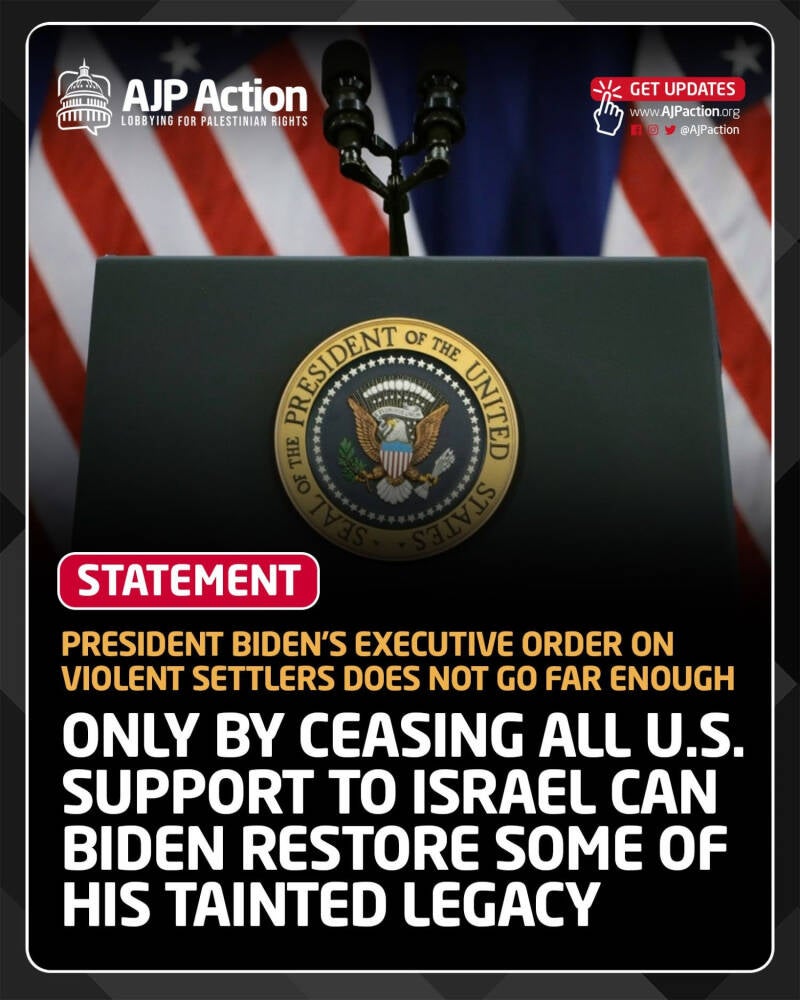
The inconsistency becomes glaring when considering the administration's role in enabling the four-month-long genocide in Gaza. The Executive Order, while a welcome and necessary step, is incongruent with the broader picture of unconditional support for Israel. There's very little Biden can do to redeem himself of the war crimes he continues to enable. The President needs to do more so this does not look like political expediency. This cosmetic action does not go far enough.
The root cause lies in the almost 76-year-long occupation of Palestinians, a historical injustice that demands consistent and principled actions. President Biden must demonstrate coherence in his policies by not only issuing sanctions but also ceasing unconditional support for Israel. The administration must take more substantive steps to redeem itself from the war crimes it has enabled and funded. At a minimum, President Biden must facilitate and enforce an immediate and complete ceasefire in Israel, publicly recognize and reaffirm Palestinian rights, an end to the Israeli occupation of Palestine, and the cessation of ALL military aid to Israel.
In solidarity,
Dr. Osama Abu IrshaidExecutive Director


1 februari 2024
The Israeli war machine works in tandem with a world-class propaganda machine that spreads disinformation with devastating consequences for Palestinians.
Israel’s latest victim is the United Nations Relief and Works Agency for Palestine Refugees in the Near East (UNRWA).
UNRWA provides critical humanitarian aid and services to millions of people, including medical care, food, shelter, and more. They are the single largest providers of aid to Palestinians in Gaza who are trying to survive genocide.
And President Biden just halted their funding.
Tell Congress: Stop defunding UNRWA NOW.
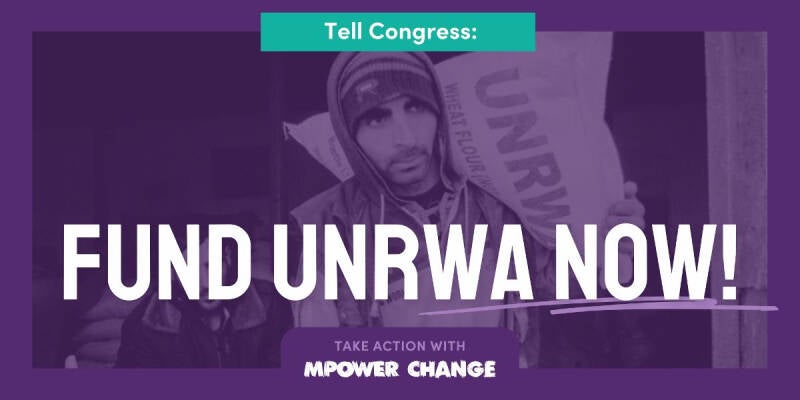
While Palestinians in Gaza face genocidal violence, the collapse of medical care, and the prospect of starvation, Biden just chose to stop funding the UN agency that serves them.
Mere hours after the International Court of Justice’s announcement that Israel is plausibly committing genocide, the Israeli propaganda machine hit back with a deflective and malicious attack of UNRWA.
In many cases, Palestinians living under occupation have long relied on UNRWA for basic services. UNRWA is responsible for nearly 150 health clinics, which serve more than 9 million patients every year.¹
Right now, UNRWA facilities are providing shelter for nearly a million people in Gaza² — just under half of the total Gaza population.³
And families in Gaza, who have lost so much of what they had, are now facing a greater risk of famine and starvation.⁴
UNRWA plays a crucial role in ensuring the distribution of the little aid that does arrive in southern Gaza. Just yesterday, the head of the World Health Organization (WHO) used the word “catastrophic” to describe the likely consequences of pausing UNRWA aid in this moment.⁵
We must act now. You don’t cut aid during a genocide or a famine.
Please join us in calling to stop this cruel punishment of Palestinians in Gaza — and all the Palestinian refugees that UNRWA serves.
In solidarity,
the team at MPower Change.
Sources:
- “It’s right to probe UNRWA’s problems – yet what would replace it? Its critics have no answer,” The Guardian, Jan. 31, 2024.
- “Details Emerge on U.N. Workers Accused of Aiding Hamas Raid,” NYT, Jan. 28, 2024.
- “What is UNRWA and why are some countries suspending its funding?,” Reuters, Jan. 30, 2024.
- “Gaza families struggle to fend off starvation as war rages on,” The Washington Post, Jan. 25. 2024.
- “WHO chief says defunding UNRWA will have 'catastrophic' consequences,” Reuters, Jan. 31, 2024.


Unprecedented: U.S. Judge Urges Biden Administration to Cease Unwavering Support for Israel’s Ongoing Siege of the Palestinian People in Gaza
1 februari 2024
On January 26, right after the International Court of Justice (ICJ) ruling, a federal court in Oakland, California, witnessed a pivotal moment as arguments were presented in the case Defense for Children International – Palestine (DCIP) v. Biden. In a groundbreaking move last night, thanks to the live testimonies from Palestinian plaintiffs and a genocide/Holocaust scholar, the U.S. federal judge acknowledged the plausibility of Israel's actions amounting to genocide in Gaza and called on the Biden Administration to reevaluate its unwavering support for Israel.
The court found it lacked the power to resolve the case because it implicated executive decision-making in foreign policy, leading to the case's dismissal. While the dismissal on jurisdictional grounds is disappointing, the court's historical rebuke is unprecedented and sends a clear message about the severity of Israel’s war crimes. The ICJ’s parallel ruling further underscores the urgent global attention and action needed. The U.S. Federal court's reliance on uncontroverted live testimonies and expert opinions from Palestinian witnesses, alongside the recognition of the United States' substantial role in the genocide, demands immediate attention. The plea to the Biden administration to reconsider its stance reaffirms the moral imperative for accountability in the ongoing humanitarian crises.

We congratulate the Center for Constitutional Rights (CCR) and Defense for Children International – Palestine (DCIP) for their relentless pursuit of justice. Their dedication to bringing forth the voices of Palestinians impacted is commendable, and we stand in solidarity with their ongoing efforts.
This underscores the importance of continued pressure on Congress and the Biden administration. As the court calls for a reevaluation of the unwavering support provided to Israel, it becomes imperative for citizens, activists, and organizations to intensify efforts to hold the government accountable for its actions.
The testimonies of the Palestinian plaintiffs, their families, and the expert opinions presented in court provide a compelling case for immediate action. AMP echoes the sentiments expressed by the court and urges the Biden administration to critically examine its policies and take concrete steps to address the serious allegations of complicity in the ongoing genocide in Gaza.
This is a critical juncture in the pursuit of justice and humanitarian values. We call on all allies to continue raising awareness, advocating for accountability, and pressuring authorities to address the urgent needs of the Palestinian people in Gaza.
In solidarity,
American Muslims for Palestine


Today's headlines
Testimonies describe forced displacement campaign in northern Gaza
1 februari 2024
Israel claims there is not a policy to forcibly expel Palestinians in Gaza, but direct testimonies from people arriving in Rafah reveal there is a ethnic cleansing campaign taking place around Gaza City.
Inside the campaign to undermine DEI and Palestine solidarity at the University of Minnesota: an interview with Dr. Sima Shakhsari
Dr. Sima Shakhsari was interviewing to become the Associate Dean of Diversity, Equity, and Inclusion at the University of Minnesota until comments on Gaza derailed their chances and ignited a pro-Israel hate campaign against them.
How the genocide in Gaza shattered my family
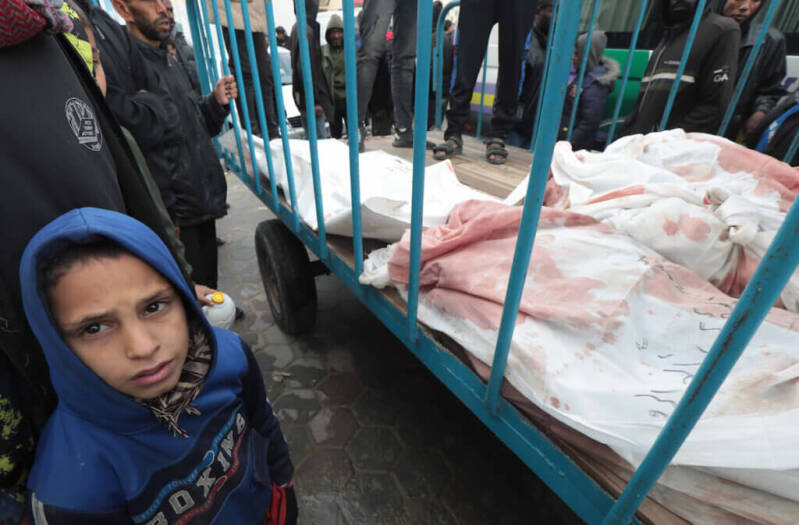
I have lost my father, my uncle’s entire family, and know many others who have been injured. I can barely imagine the grief I will feel when the attack ends and we’re able to grieve these losses, that is, if we’re lucky enough to survive ourselves.
